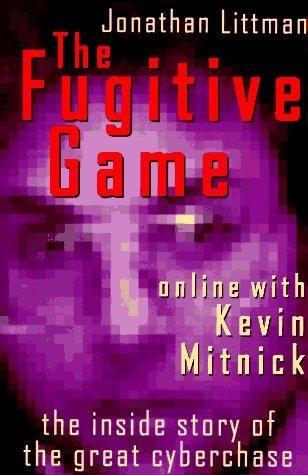
The Fugitive Game: Online With Kevin Mitnick
by
Jonathan Littman
Published 1 Jan 1996
"He did nothing imaginative," Shimomura snaps, clearly irritated at the question. "Nothing interesting, nothing new that I can see." Shimomura tosses out John Markoff's name while answering a question, and John Johnson, a reporter for the Los Angeles Times, quickly picks up on it. "What was John Markoff's role?" asks the reporter. "John wrote the book on Kevin," Shimomura informs the crowd of journalists and network TV scouts. "The third member of our team was John Markoff," volunteers Julia Menapace, the woman who accompanied Shimomura into the courtroom. She's casually dressed in jeans, taller than Shimomura, with long brown hair.
…
Kevin Poulsen, aka Dark Dante Henry Spiegel Ron Austin with his father Erica Videotape image of Justin Petersen, aka Eric Heinz or Agent Steal, working undercover for the FBI at a 1992 hacker conference. Shimomura in North Carolina Shimomura's equipment Shimomura in the Media Tsutomu Shimomura, John Markoff of the New York Times, former San Francisco Assistant U.S. Attorney Kent Walker, and Joe Orsak and Jim Murphy of Sprint Cellular. Kent Walker John Markoff Joe Orsak Jim Murphy Kevin Pazaski Todd Young Todd Young, a cellular fraud gumshoe, and Kevin Pazaski of CellularOne in Seattle, found Kevin Mitnick in a few hours and kept his basement apartment under surveillance for two weeks.
…
They're bringing up cellular involved in it. Who knows? "I know you can find out the inference here by calling your friend John Markoff because Markoff is friends with Shimomura. Why don't you just dial Markoff up and say, 'Hey, Markoff, what's the scoop?' " A couple of minutes later, as if on cue, my call waiting beeps again. "Could you hold on just one second? My beeper's going off again," I kid him. "Looks like they got half of the trace done," Mitnick jokes. It's John Markoff again. I apologize, and ask once again if I can call him back. He tells me not to worry about it, jokes we'll probably play telephone tag a couple more times, and asks me to call him back when I've got a chance.

Valley of Genius: The Uncensored History of Silicon Valley (As Told by the Hackers, Founders, and Freaks Who Made It Boom)
by
Adam Fisher
Published 9 Jul 2018
John Couch: There was this incredible, quiet respect and a sense of mortality for all of us. Mike Slade: So anyway, we get escorted into the church: five hundred, seven hundred people? John Markoff: They don’t fill Memorial Chapel completely. Jon Rubinstein: It was a beautiful service. Clearly it had been stage-managed by Steve from beyond the grave. John Markoff: Yo-Yo Ma played first and wonderfully. Andy Hertzfeld: It was really deep, just heartbreakingly beautiful, one of the most emotional pieces of music I’ve ever heard. John Markoff: Afterward he briefly introduced the event and told a short, funny story about how Steve had wanted him to play at his funeral and how he had asked Steve to speak at his.
…
Because the people who are crazy enough to think they can change the world, are the ones who do.” John Markoff: I cried. Wayne Goodrich: The wave of emotion in the church was such that it was a conscious effort to even keep my perception about me, instead of just breaking down in a pool of my own tears. John Markoff: Mona Simpson spoke and told of how she met her brother and about their relationship. It was much closer than I realized. She, too, talked about Steve’s search for beauty. Mona Simpson: I remember when he phoned the day he met Laurene: “There’s this beautiful woman and she’s really smart and she has this dog and I’m going to marry her.” John Markoff: Joan Baez stood, and her guitar was brought out and she sang “Swing Low, Sweet Chariot.”
…
John Markoff: Joan Baez stood, and her guitar was brought out and she sang “Swing Low, Sweet Chariot.” Mike Slade: She sat down with the guitar and played it. She hit the high note and my spine shivered. I was just blown away. John Markoff: Her voice is all still there. Mike Slade: She was seventy and it just blew everybody’s doors off. John Markoff: Bono and Slash sang. First Dylan’s “Every Grain of Sand” and then a U2 song, “One.” Mike Slade: Dylan was supposed to play the first song and he blew them off. They asked him to play and he said no. John Markoff: To sing Dylan, Bono placed an iPad on a music stand to remember the words with. Bono (singing Bob Dylan’s song): “I hear the ancient footsteps like the motion of the sea / Sometimes I turn, there’s someone there, other times it’s only me / I am hanging in the balance of the reality of man / Like every sparrow falling, like every grain of sand.”

Machines of Loving Grace: The Quest for Common Ground Between Humans and Robots
by
John Markoff
Published 24 Aug 2015
Hagerty, “A Roboticist’s Trip from Mines to the Moon,” Wall Street Journal, July 2, 2011, http://www.wsj.com/articles/SB10001424052702304569504576405671616928518. 4.John Markoff, “The Creature That Lives in Pittsburgh,” New York Times, April 21, 1991, http://www.nytimes.com/1991/04/21/business/the-creature-that-lives-in-pittsburgh.html. 5.John Markoff, “Google Cars Drive Themselves, in Traffic,” New York Times, October 9, 2010, http://www.nytimes.com/2010/10/10/science/10google.html?pagewanted=all. 6.“Electronic Stability Control Systems for Heavy Vehicles,” National Highway Traffic Safety Administration, 2012, http://www.nhtsa.gov/Laws+&+Regulations/Electronic+Stability+Control+(ESC). 7.John Markoff, “Police, Pedestrians and the Social Ballet of Merging: The Real Challenges for Self-Driving Cars,” New York Times, May 29, 2014, http://bits.blogs.nytimes.com/2014/05/29/police-bicyclists-and-pedestrians-the-real-challenges-for-self-driving-cars/?
…
Brock, “From Automation to Silicon Valley: The Automation Movement of the 1950s, Arnold Beckman, and William Shockley,” History and Technology 28, no. 4 (2012), http://www.tandfonline.com/doi/abs/10.1080/07341512.2012.756236#.VQTPKCbHi_A. 3.Ibid. 4.John Markoff, “Robotic Vehicles Race, but Innovation Wins,” New York Times, September 14, 2005. 5.John Markoff, What the Dormouse Said: How the Sixties Counterculture Shaped the Personal Computer Industry (New York: Viking, 2005). 6.Pamela McCorduck, Machines Who Think: A Personal Inquiry into the History and Prospects of Artificial Intelligence, 2nd ed.
…
, 259 Yale University, 180–181 Yaskawa (robot), 243 Zakos, John, 222, 223 Zuckerberg, Mark, 157 ABOUT THE AUTHOR JOHN MARKOFF has been a technology and science reporter at the New York Times since 1988. He was part of the team of Times reporters that won the 2013 Pulitzer Prize for Explanatory Reporting and is the author of What the Dormouse Said: How the Sixties Counterculture Shaped the Personal Computer Industry. He lives in San Francisco, California. Discover great authors, exclusive offers, and more at hc.com. ALSO BY JOHN MARKOFF What the Dormouse Said: How the Sixties Counterculture Shaped the Personal Computer Industry Takedown: The Pursuit and Capture of Kevin Mitnick, America’s Most Wanted Computer Outlaw—By the Man Who Did It (with Tsutomu Shimomura) Cyberpunk: Outlaws and Hackers on the Computer Frontier (with Katie Hafner) The High Cost of High Tech: The Dark Side of the Chip (with Lenny Siegel) CREDITS Cover design by Allison Saltzman COPYRIGHT Excerpt of “All Watched Over by Machines of Loving Grace” from All Watched Over by Machines of Loving Grace by Richard Brautigan.

The Code: Silicon Valley and the Remaking of America
by
Margaret O'Mara
Published 8 Jul 2019
Heilemann, “The Making of the President 2000.” CHAPTER 20: SUITS IN THE VALLEY 1. John Doerr, “The Coach,” interview by John Brockman, 1996, Edge.org, https://www.edge.org/digerati/doerr/, archived at https://perma.cc/9KWX-GLWK. 2. John Markoff, interview with Kara Swisher, Recode: Decode podcast, February 17, 2017, https://www.recode.net/2017/2/17/14652832/full-transcript-tech-reporter-john-markoff-silicon-valley-recode-decode-podcast, archived at https://perma.cc/XE3U-FCPC. 3. Michael Schrage, “Nation’s High-Tech Engine Fueled by Venture Capital,” The Washington Post, May 20, 1984, G1; Udayan Gupta, Done Deals: Venture Capitalists Tell Their Stories (Cambridge, Mass.: Harvard Business School Press, 2000), 374–5; Regis McKenna, interview with the author, May 31, 2016. 4.
…
The distinctive business culture of Valley companies, which had been slowly percolating into the public consciousness since the early days of the microchip, went from object of curiosity to a model to emulate. Business innovation meant taking the ties off, beefing up the software engineering staff, and building a volleyball court out back. And it all happened mind-blowingly fast. The New York Times’ technology reporter John Markoff filed his very first story about the World Wide Web in early December 1993. “In the next four years,” he remembered, “I was run over by a Mack truck.” The Internet became the story of the decade, the world-changer to close out the twentieth century and open the twenty-first. Scribes like Markoff—a Palo Alto native who had been living in and writing about the Valley since the Homebrew era—saw their bylines move from the back of the business section to the front pages as they tried to simultaneously explain the technological underpinnings of this brave new world and document its astounding ascent.
…
And I could not have asked for a better reader on the semiconductor industry and the Valley of the 1970s than Leslie, Silicon Valley historian and biographer par excellence. Thanks to Bill Carr, Ryan Calo, Trish Millines Dziko, Bruce Hevly, Dan’l Lewin, Gary Morgenthaler, and Lissa Morgenthaler-Jones for critical vetting of key passages. Several very busy people generously agreed to read in full: Tom Alberg, Phil Deutch, Marne Levine, John Markoff, Brad Smith, Mark Vadon, and Ed Zschau. Their seasoned perspectives made this book better, and any remaining errors of fact or interpretation are mine alone. Geri Thoma has been an unflagging advocate for this book and its author, going above and beyond the call of literary-agent duty as a trusted guide, sounding board, and friend.

Fancy Bear Goes Phishing: The Dark History of the Information Age, in Five Extraordinary Hacks
by
Scott J. Shapiro
disconnect the department computers: Krafft, Morris transcript, 134. Bell Labs: John Markoff, “How a Need for Challenge Seduced Computer Expert,” The New York Times, November 6, 1988. “under attack”: Email, The “Security Digest” Archives, https://web.archive.org/web/20041124203457/securitydigest.org/ tcp-ip/archive/1988/11. hostile foreign power: See, e.g., Testimony of Michael Muuss, Morris transcript, 873. “‘This is the catastrophe’”: Lawrence M. Fisher, “On the Front Lines in Battling Electronic Invader,” The New York Times, November 5, 1988. shy and awkward young man: See, e.g., John Markoff, “Author of Computer ‘Virus’ Is Son of N.S.A.
…
Douglas McIlroy, “A Research UNIX Reader: Annotated Excerpts from the Programmer’s Manual, 1971–1986,” https://www.cs.dartmouth.edu/~doug/reader.pdf. long, graying beard: John Markoff, “Robert Morris, Pioneer in Computer Security, Dies at 78,” The New York Times, June 29, 2011. “For a cryptographer”: Michael Wines, “A Youth’s Passion for Computers, Gone Sour,” The New York Times, November 11, 1988. “not a career plus”: Wines, “A Youth’s Passion for Computers, Gone Sour.” “The case, with all its bizarre twists”: John Markoff, “How a Need for Challenge Seduced Computer Expert,” The New York Times, November 6, 1988. Through Finger, a now-defunct: It was Cliff Stoll’s idea to run the Finger request.
…
On the proliferation of CERTs, see Laura DeNardis, The Global War for Internet Governance (Oxford: Oxford University Press, 2014), 90–92: “Although one of the original objectives of the first response team was to centrally coordinate responses to Internet-wide security breaches, what has materialized over time is a mosaic of hundreds of independently operating CERTs across the world,” 92. 2. How the Tortoise Hacked Achilles “That attitude is completely”: John Markoff, “Living with the Computer Whiz Kids,” The New York Times, November 8, 1988. See also “Hacker’s Fate Hangs in the Balance,” Syracuse Herald-Journal, February 1, 1989, A4. permitted to reapply: John Markoff, “Cornell Suspends Computer Student,” The New York Times, May 25, 1989. Some observed that Morris was using the very skills that made him attractive to Cornell in the first place. “We like to have a fairly well-rounded student body,” said Dexter Kozen, a Cornell computer-science professor.

Rise of the Robots: Technology and the Threat of a Jobless Future
by
Martin Ford
Published 4 May 2015
newsId=40920394–9e62–415d-b038–15fe2e72a677&pageTitle=Recent%20Headlines&crumbTitle=Man%20and%20%20machine:%20Better%20writers,%20better%20grades. 3. Ry Rivard, “Humans Fight over Robo-Readers,” Inside Higher Ed, March 15, 2013, http://www.insidehighered.com/news/2013/03/15/professors-odds-machine-graded-essays. 4. John Markoff, “Essay-Grading Software Offers Professors a Break,” New York Times, April 4, 2013, http://www.nytimes.com/2013/04/05/science/new-test-for-computers-grading-essays-at-college-level.html. 5. John Markoff, “Virtual and Artificial, but 58,000 Want Course,” New York Times, August 15, 2011, http://www.nytimes.com/2011/08/16/science/16stanford.html?_r=0. 6. The story of the Stanford AI course is drawn from Max Chafkin, “Udacity’s Sebastian Thrun, Godfather of Free Online Education, Changes Course,” Fast Company, December 2013/January 2014, http://www.fastcompany.com/3021473/udacity-sebastian-thrun-uphill-climb; Jeffrey J.
…
A true programmable computer, it was financed by the US Army and intended primarily for calculating firing tables used to aim artillery. ** Due to a miscommunication, Wiener’s article was never published in 1949. A draft copy was discovered by a researcher working with documents in the MIT library archives in 2012, and substantial excerpts were finally published in a May 2013 article by New York Times science reporter John Markoff. * Labor productivity measures the value of the output (either goods or services) produced by workers per hour. It is a critically important gauge of the general efficiency of an economy; to a significant extent it determines the wealth of a nation. Advanced, industrialized countries have high productivity because their workers have access to more and better technology, enjoy better nutrition as well as safer and more healthful environments, and are generally better educated and trained.
…
Both of the course’s instructors were celebrities in their field with strong ties to Google; Thrun had led the effort to develop the company’s self-driving cars, while Norvig was the director of research and co-author of the leading AI textbook. Within days of the announcement, more than 10,000 people had signed up. When John Markoff of the New York Times wrote a front-page article5 about the course that August, enrollment rocketed to more than 160,000 people from over 190 countries. The number of online students from Lithuania alone exceeded the entire undergraduate and graduate student enrollment at Stanford. Students as young as ten and as old as seventy signed up to learn the basics of AI directly from two of the field’s preeminent researchers—an extraordinary opportunity previously available only to about 200 Stanford students.6 The ten-week course was divided into short segments lasting just a few minutes and modeled roughly on the enormously successful videos for middle and high school students created by the Khan Academy.

Whole Earth: The Many Lives of Stewart Brand
by
John Markoff
Published 22 Mar 2022
ALSO BY JOHN MARKOFF Machines of Loving Grace What the Dormouse Said Takedown (with Tsutomu Shimomura) Cyberpunk (with Katie Hafner) The High Cost of High Tech (with Lenny Siegel) PENGUIN PRESS An imprint of Penguin Random House LLC penguinrandomhouse.com Copyright © 2022 by John Markoff Penguin supports copyright. Copyright fuels creativity, encourages diverse voices, promotes free speech, and creates a vibrant culture. Thank you for buying an authorized edition of this book and for complying with copyright laws by not reproducing, scanning, or distributing any part of it in any form without permission.
…
BACK TO NOTE REFERENCE 20 https://en.wikipedia.org/wiki/Usenet BACK TO NOTE REFERENCE 21 John Markoff, “Whole Earth State-of-the-Art Rapping,” New York Times, August 15, 1989, A14. BACK TO NOTE REFERENCE 22 Ken Kelley, “The Interview: Whole Earthling and Software Savant Stewart Brand,” SF Focus, February 1985, 76. BACK TO NOTE REFERENCE 23 Steven Levy, Hackers: Heroes of the Computer Revolution (New York: Anchor Press/Doubleday, 1984), 27–32. BACK TO NOTE REFERENCE 24 Fentress,“The Next to Last Book on Earth.” BACK TO NOTE REFERENCE 25 John Markoff, “Up to Date,” BYTE, March 1985, 355.
…
“Will, lost in a sea of trouble” republished with permission of University of Michigan Press, Poems from the Greek Anthology: Expanded Edition, translation and foreword by Kenneth Rexroth, introduction by David Mulroy (1962, 1999), permission conveyed through Copyright Clearance Center, Inc. Illustration credits appear on this page. LIBRARY OF CONGRESS CATALOGING-IN-PUBLICATION DATA Names: Markoff, John, author. Title: Whole Earth : the many lives of Stewart Brand / John Markoff. Description: New York : Penguin Press, [2022] | Includes bibliographical references and index. Identifiers: LCCN 2021039442 (print) | LCCN 2021039443 (ebook) | ISBN 9780735223943 (hardcover) | ISBN 9780735223950 (ebook) Subjects: LCSH: Brand, Stewart. | Technologists—United States—Biography. | Appropriate technology—United States—History. | Whole Earth catalog (Menlo Park, Calif.) | Counterculture—United States—History. | Technology—California, Northern—History. | Futurologists—United States—Biography. | Technological innovations—Social aspects—United States. | Journalism, Technical—United States—History. | California, Northern—Biography.

Dogfight: How Apple and Google Went to War and Started a Revolution
by
Fred Vogelstein
Published 12 Nov 2013
Gundotra’s 2007 start date: Brad Stone, “Larry Page’s Google 3.0,” Bloomberg Businessweek, 1/26/2011; and my own reporting. But Gundotra thrived: Levy, In the Plex, 219. For example, the trio: Ibid., 218. The secrecy, leaks, and backbiting: John Markoff, “I, Robot: The Man Behind the Google Phone,” New York Times, 11/4/2007. It wasn’t just dull: Ryan Block, “Live coverage of Google’s Android Gphone mobile OS announcement,” Engadget.com, 11/5/2007; Danny Sullivan, “Gphone? The Google Phone Timeline,” SearchEngineLand.com, 4/18/2007; Miguel Helft and John Markoff, “Google Enters the Wireless World,” New York Times, 11/5/2007. Google got more attention: See the first Android introduction and demo by Sergey Brin and Steve Horowitz at www.youtube.com/watch?
…
Like many electronics whizzes in Silicon Valley, he had Tony Stark’s respect for authority too. At Apple in the late 1980s he got in trouble for reprogramming the corporate phone system to make it seem as if CEO John Sculley were leaving his colleagues messages about stock grants, according to John Markoff’s 2007 profile in The New York Times. At General Magic, an Apple spin-off that wrote some of the first software for handheld computers, he and some colleagues built lofts above their cubicles so they could more efficiently work around the clock. After Microsoft bought his next employer, WebTV, in the mid-1990s, he outfitted a mobile robot with a web camera and microphone and sent it wandering around the company, without mentioning to anyone that it was connected to the Internet.
…
Computers are things that run software from developers all over the world—outside Apple. He didn’t want the iPhone to become that at all. After the unveiling, when software developers began clamoring for permission to make programs for the iPhone, Jobs said no publicly and emphatically. “You don’t want your phone to be like a PC,” he told John Markoff of The New York Times right after the announcement. “The last thing you want is to have loaded three apps on your phone and then you go to make a call and it doesn’t work anymore. These are more like iPods than they are like computers.” But the iPhone had so many other cool new features that consumers overlooked its flaws.
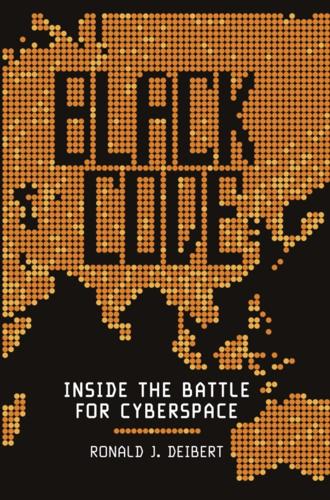
Black Code: Inside the Battle for Cyberspace
by
Ronald J. Deibert
Published 13 May 2013
The scope and importance of the victims, sophistication of the attack (given the negligible resources used to pull it off), detailed exposure of what was going on beneath the surface and, finally, the shock of such widespread infiltration made it so. We are used to our computers being windows onto the world. With GhostNet, we argued that “it is time to get used to them looking back at us.” • • • “It’ll be on the front page,” John Markoff of the New York Times told me hours before the GhostNet story appeared, and he was right. It was above the fold on Sunday, March 29, 2009, and soon thereafter became one of the top news stories in the world. The University of Toronto’s media relations office was overwhelmed. There were satellite trucks parked outside of the Munk School of Global Affairs, where we are based, cameras everywhere, and I experienced my first media scrum.
…
From that moment on, their chats were intercepted, as were those with whom they were communicating, and uploaded to a server in China, presumably to be shared with Chinese security services. The interception directly contravened Skype’s explicit terms of service, which promised state-of-the-art “end-to-end encryption,” allowing it to be widely promoted as a secure tool for dissidents and others at risk. The scandalous tale was covered by John Markoff in the New York Times, and Skype later apologized. A few years later, however, University of New Mexico researchers found the exact same content-filtering and interception system was still in place on TOM-Skype. Notably, Skype scores zero on the EFF scorecard, and its present owner, Microsoft, fares little better: neither tells users about data demands, is transparent about government requests, or fights for user privacy rights in court.
…
Nart Villeneuve was able (again) to get partial access to one of these stepping stones – an open file transfer protocol (FTP) used by the attackers on an improperly secured computer – and once he found this window into their subterranean lair, he engineered a script that automatically copied anything that passed through the FTP site. As I told John Markoff of the New York Times (which gave front-page coverage to Shadows in the Cloud), we were going “behind the backs of the attackers and picking their pockets.” As with the GhostNet investigation, we had privileged access to Tibetan computers, including those situated in the Office of His Holiness the Dalai Lama in India, which we had wiretapped with permission.
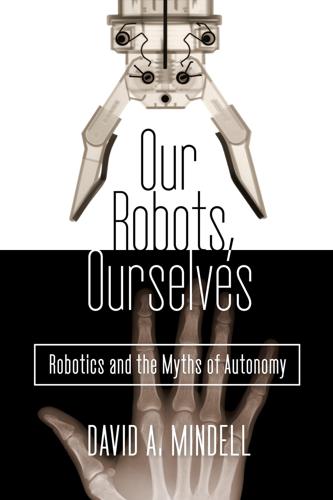
Our Robots, Ourselves: Robotics and the Myths of Autonomy
by
David A. Mindell
Published 12 Oct 2015
“without traffic accidents or congestion”: Sebastian Thrun, “Self-Driving Cars Can Save Lives, and Parking Spaces,” New York Times, December 5, 2011, http://www.nytimes.com/2011/12/06/science/sebastian-thrun-self-driving-cars-can-save-lives-and-parking-spaces.html. Sebastian Thrun, “What We’re Driving At,” Google official blog, http://googleblog.blogspot.com/2010/10/what-were-driving-at.html, accessed July 10, 2014. John Markoff, “A Trip in a Self-Driving Car Now Seems Routine,” Bits Blog, http://bits.blogs.nytimes.com/2014/05/13/a-trip-in-a-self-driving-car-now-seems-routine, accessed July 10, 2014. John Markoff, “Google Cars Drive Themselves, in Traffic,” New York Times, October 9, 2010, http://www.nytimes.com/2010/10/10/science/10google.html. The Google car’s successful driving tests: Mark Harris, “How Google’s Autonomous Car Passed the First U.S.
…
It Depends On Whom You Work For,” IEEE Spectrum Cars That Think, February 24, 2015, http://spectrum.ieee.org/cars-that-think/transportation/human-factors/how-much-training-do-you-need-to-be-a-robocar-test-driver-it-depends-on-whom-you-work-for. He put a video camera on the dashboard of his car: John Leonard, “Conversations on Autonomy,” presentation, MIT, March 13, 2014. John Markoff, “Police, Pedestrians and the Social Ballet of Merging: The Real Challenges for Self-Driving Cars,” Bits Blog, http://bits.blogs.nytimes.com/2014/05/29/police-bicyclists-and-pedestrians-the-real-challenges-for-self-driving-cars/, accessed July 10, 2014. We know that driverless cars will be susceptible: John Markoff, “Collision in the Making Between Self-Driving Cars and How the World Works,” New York Times, January 23, 2012, http://www.nytimes.com/2012/01/24/technology/googles-autonomous-vehicles-draw-skepticism-at-legal-symposium.html.
…
The drives have included human safety drivers and software experts who can turn the autonomy on and off. “The idea was that the human drives onto the freeway, engages the system, [and] it takes them on the bulk of the trip—the boring part—and then they reengage,” said Google engineer Nathaniel Fairfield. A ride in one of these vehicles led the New York Times’s John Markoff to conclude that “computerized systems that replace human drivers are now largely workable and could greatly limit human error,” potentially supporting Google’s goal of cutting the number of U.S. highway deaths in half. Google’s rhetoric around the project has the kind of Silicon Valley optimism that typically surrounds software systems.

The Innovators: How a Group of Inventors, Hackers, Geniuses and Geeks Created the Digital Revolution
by
Walter Isaacson
Published 6 Oct 2014
In The Myth of the Machine, the sociologist Lewis Mumford warned that the rise of computers could mean that “man will become a passive, purposeless, machine-conditioned animal.”7 At peace protests and hippie communes, from Sproul Plaza at Berkeley to Haight-Ashbury in San Francisco, the injunction printed on punch cards, “Do not fold, spindle or mutilate,” became an ironic catchphrase. But by the early 1970s, when the possibility of personal computers arose, attitudes began to change. “Computing went from being dismissed as a tool of bureaucratic control to being embraced as a symbol of individual expression and liberation,” John Markoff wrote in his history of the period, What the Dormouse Said.8 In The Greening of America, which served as a manifesto for the new era, a Yale professor, Charles Reich, denounced the old corporate and social hierarchies and called for new structures that encouraged collaboration and personal empowerment.
…
The crowd gave him a standing ovation. Some even rushed up to the stage as if he were a rock star, which in some ways he was.41 Down the hall from Engelbart, a competing session was being presented by Les Earnest, who had cofounded, with the MIT refugee John McCarthy, the Stanford Artificial Intelligence Lab. As reported by John Markoff in What the Dormouse Said, their session featured a film about a robot that acted as if it could hear and see things. The two demos presented a clear contrast between the goal of artificial intelligence and that of augmented intelligence. The latter mission had seemed rather quirky when Engelbart began working on it, but when he showed off all of its elements in his December 1968 demo—a personal computer that humans could easily interact with in real time, a network that allowed collaborative creativity—it overshadowed the robot.
…
Led by the growth of blogs and wikis, both of which emerged in the mid-1990s, a revitalized Web 2.0 arose that allowed users to collaborate, interact, form communities, and generate their own content. JUSTIN HALL AND HOW WEB LOGS BECAME BLOGS As a freshman at Swarthmore College in December 1993, Justin Hall picked up a stray copy of the New York Times in the student lounge and read a story by John Markoff about the Mosaic browser. “Think of it as a map to the buried treasures of the Information Age,” it began. “A new software program available free to companies and individuals is helping even novice computer users find their way around the global Internet, the network of networks that is rich in information but can be baffling to navigate.”54 A willowy computer geek with an impish smile and blond hair flowing over his shoulders, Hall seemed to be a cross between Huck Finn and a Tolkien elf.
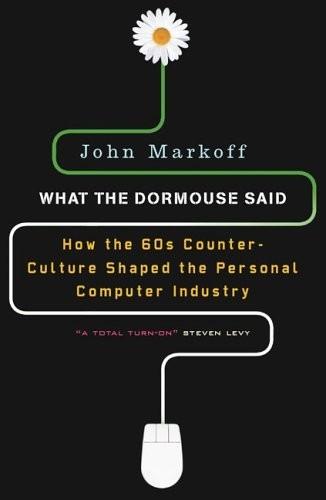
What the Dormouse Said: How the Sixties Counterculture Shaped the Personal Computer Industry
by
John Markoff
Published 1 Jan 2005
Full of interesting details about weird but not arbitrary connections, John Markoff’s book tells one of the oddest—because truest—of California tales and thereby helps illuminate the still unsettled legacy of the Sixties.” —Todd Gitlin, author of Media Unlimited and The Sixties: Years of Hope, Days of Rage “It is easy to see how the personal computer has shaped contemporary culture. But how did contemporary culture shape the emergence of the personal computer? In this innovative, lively narrative, veteran technology reporter and cultural critic John Markoff demonstrates how the values and obsessions of the 1960s, especially as centered in the San Francisco Bay Area, created the environment for the emergence of the personal computer as social tool and cultural catalyst.”
…
Penguin Books Ltd, 80 Strand, London WC2R 0RL, England Penguin Ireland, 25 St Stephen’s Green, Dublin 2, Ireland (a division of Penguin Books Ltd) Penguin Group (Australia), 250 Camberwell Road, Camberwell, Victoria 3124, Australia (a division of Pearson Australia Group Pty Ltd) Penguin Books India Pvt Ltd, 11 Community Centre, Panchsheel Park, New Delhi–110 017, India Penguin Group (NZ), cnr Airborne and Rosedale Roads, Albany, Auckland 1310, New Zealand (a division of Pearson New Zealand Ltd) Penguin Books (South Africa) (Pty) Ltd, 24 Sturdee Avenue, Rosebank, Johannesburg 2196, South Africa Penguin Books Ltd, Registered Offices: 80 Strand, London WC2R 0RL, England Copyright © John Markoff, 2005 All rights reserved Grateful acknowledgment is made for permission to reprint an excerpt from “White Rabbit” by Grace Slick. © 1966, 1994 Irving Music, Inc./BMI. Used by permission. International copyright secured. All rights reserved. THE LIBRARY OF CONGRESS HAS CATALOGED THE HARDCOVER EDITION AS FOLLOWS: Markoff, John. What the dormouse said—: how the sixties counterculture shaped the personal computer industry / John Markoff. p. cm. Includes bibliographical references and index. ISBN: 978-1-1012-0108-4 1.
…
PENGUIN BOOKS WHAT THE DORMOUSE SAID John Markoff is a senior writer for The New York Times who has coauthored Cyberpunk: Outlaws and Hackers on the Computer Frontier and the bestselling Takedown: The Pursuit and Capture of Kevin Mitnick, America’s Most Wanted Computer Outlaw. He lives in San Francisco, California. Praise for What the Dormouse Said “At the core of Dormouse lies a valid and original historical point.” —The New York Times “A convincing case…. This makes entertaining reading.” —The New York Times “Evocative” —Newsweek “Fascinating” —Computerworld “Fascinating…Markoff is a wonderful writer and storyteller, and he effortlessly weaves together the stories of the main cast of characters.

From Counterculture to Cyberculture: Stewart Brand, the Whole Earth Network, and the Rise of Digital Utopianism
by
Fred Turner
Published 31 Aug 2006
For all of their help, I’d like to thank Bob Albrecht, Dennis Allison, John Perry Barlow, Reva Basch, Keith Britton, Lois Britton, John Brockman, Michael Callahan, John Coate, Doug Engelbart, Bill English, Lee Felsenstein, Cliff Figallo, David Frohman, Asha Greer (formerly Barbara Durkee), Katie Hafner, Paul Hawken, Alan Kay, Kevin Kelly, Art Kleiner, Butler Lampson, Liza Loop, John Markoff, Jane Metcalfe, David Millen, Nancy Murphy, Richard Raymond, Danica Remy, Howard Rheingold, Louis Rossetto, Peter Schwartz, Mark Stahlman, Gerd Stern, Shirley Streshinsky, Larry Tesler, Paul Tough, Jim Warren, and Gail Williams. Most of all, I thank Stewart Brand, whose openness to this project has been a lesson in itself.
…
Members of this group, they point out, built the Homebrew Computer Club and ultimately not only Apple Computer, but a number of other important personal computer companies as well.6 A close look at the computing world of the Bay area in the late 1960s and early 1970s reveals that both of these accounts are true but that neither is complete. As journalist John Markoff has shown, industry engineers and hobbyists lived and worked side-by-side in this period, and both were surrounded by countercultural activities and institutions.7 Two of the most influential of these groups in the region maintained offices within a few square blocks of each other and of the offices of the Whole Earth Catalog in Menlo Park.
…
In the Hackers’ Conference, Brand and company provided computer workers with a venue in which to develop and live a group identity around the idea of hacking and to make sense of emerging economic forms in terms of that identity. This work had the effect of rehabilitating hackers in the public eye, but it also explicitly and securely linked Whole Earth people and the Whole Earth ethos to the world of computing. Virtually all of the journalistic reports that came from the Conference echoed John Markoff ’s comments in Byte magazine: “Anyone attending would instantly have realized that the stereotype of computer hackers as isolated individuals is nowhere near accurate.”67 Some of [ 138 ] Chapter 4 those same reports picked up on another theme as well, however. Several either quoted or paraphrased Ted Nelson’s exclamation “This is the Woodstock of the computer elite!”
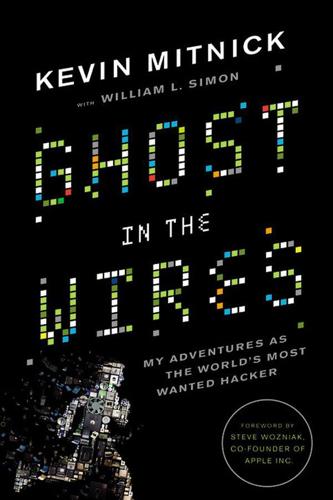
Ghost in the Wires: My Adventures as the World's Most Wanted Hacker
by
Kevin Mitnick
Published 14 Aug 2011
(Actually, that was just what he originally told me; somewhere along the line, he cadged a contract to do an entire book on my story, without mentioning it to me. I hadn’t had any problem about talking to him for an article in Playboy. But Littman didn’t disclose to me that he was writing a book about my life until after I was arrested in Raleigh. Earlier I had turned down John Markoff and his wife, Katie Hafner, about cooperating on a book, and I would have never agreed to speak to Littman if he had told me he was writing a book about my life.) I really loved Denver. My new permanent identity as Brian Merrill was ready to be rolled out, and for a time I toyed with the idea of lining up a new everything—job, apartment, furniture rental place, rental car, and the rest—and putting down roots as a Denverite.
…
When I finally see the paper, I’m stunned. The headline jumps off the page at me: Cyberspace’s Most Wanted: Hacker Eludes F.B.I. Pursuit I start reading the article and can’t believe my eyes. Only the first phrase of the story is pleasing to me, crediting me with “technical wizardry.” From there, John Markoff, the Times reporter who has written the article, goes on to say that “law-enforcement officials cannot seem to catch up with him,” which is sure to burn Agent Ken McGuire and company and embarrass the hell out of them with their superiors—and make them all the more focused on finding me. This false and defamatory article then claims that I wiretapped the FBI—I didn’t.
…
I couldn’t help recalling that five years earlier I had refused to participate in a book Markoff and his-then wife, Katie Hafner, wanted to write about me and some other hackers, because they wanted to make money from my story while I myself would make no money from it. It also brought back memories of John Markoff telling me in a phone call that if I didn’t agree to an interview, anything anyone else said about me would be considered truthful since I wasn’t there to dispute it. It was scary as hell to discover I had become such an important target for the Feds. At least the photograph was a gift. The Times had used a copy of my mug shot from 1988, the one taken after I had been held in Terminal Island Federal Prison for three days without a shower, a shave, or a change of clothes—my hair a mess, me looking grubby and unkempt and like some homeless street person.

This Is How They Tell Me the World Ends: The Cyberweapons Arms Race
by
Nicole Perlroth
Published 9 Feb 2021
Suspects Russia in Hack of Pentagon Computer Network,” Washington Post, August 6, 2015, and Choe Sang-Hun and John Markoff, “Cyberattacks Jam Government and Commercial Web Sites in U.S. and South Korea,” New York Times, July 8, 2009. The text of Obama’s remarks on cybersecurity and the attacks on his 2008 campaign is available at “Text: Obama’s Remarks on Cyber-Security,” New York Times, May 29, 2009, www.nytimes.com/2009/05/29/us/politics/29obama.text.html. I also relied on the contemporary accounts of Stuxnet written by my Times colleagues, including that of John Markoff, my predecessor at the Times: “A Silent Attack, but Not a Subtle One,” September 27, 2010, as well as Broad, Markoff, and Sanger’s 2011 account, “Israeli Test on Worm Called Crucial in Iran Nuclear Delay,” January 16, 2011.
…
The reporting, which was based in part by research from Mandiant, the security firm, later led to the indictment of several PLA hackers, who have yet to be extradited. Previously my colleagues and I had reported on the students at Chinese universities that were digitally linked to China’s hacks on foreign targets: John Markoff and David Barboza, “2 China Schools Said To Be Tied To Online Attacks,” New York Times, February 18, 2010; Barboza, “Inquiry Puts China’s Elite In New Light,” New York Times, February 22, 2010; James Glanz and John Markoff, “State’s Secrets: Day 7; Vast Hacking by a China Fearful of the Web,” New York Times, December 5, 2010; and Perlroth, “Case Based in China Puts a Face on Persistent Hacking,” New York Times, March 29, 2012.
…
—Nina Jankowicz, author of How to Lose the Information War “From one of the literati, a compelling tale of the digerati: Nicole Perlroth puts arresting faces on the clandestine government-sponsored elites using 1s and 0s to protect us or menace us—and profit.” —Glenn Kramon, former New York Times senior editor “Reads like a thriller. A masterful inside look at a highly profitable industry that was supposed to make us safer but has ended up bringing us to the brink of the next world war.” —John Markoff, former New York Times cybersecurity reporter “A whirlwind global tour that introduces us to the crazy characters and bizarre stories behind the struggle to control the internet. It would be unbelievable if it wasn’t all so very true.” —Alex Stamos, director, Stanford Internet Observatory and former head of security for Facebook and Yahoo “Lays bare the stark realities of disinformation, hacking, and software vulnerability that are the Achilles’ heel of modern democracy.
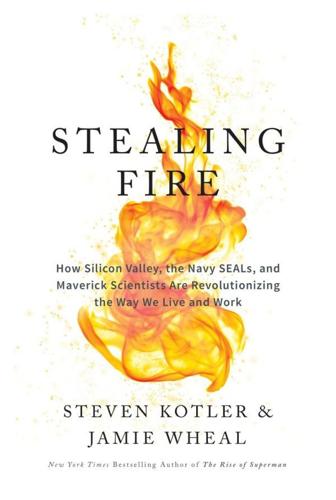
Stealing Fire: How Silicon Valley, the Navy SEALs, and Maverick Scientists Are Revolutionizing the Way We Live and Work
by
Steven Kotler
and
Jamie Wheal
Published 21 Feb 2017
“Larry and I [had] managed”: Gregory Fernstein, “How CEOs Do Burning Man,” Fast Company, August 27, 2013. 13. . . . New York Times’ John Markoff’s assessment”: John Markoff, “In Searching the Web, Google Finds Riches,” New York Times, April 13, 2003. 14. The company that set the bar: For a complete breakdown of Google’s involvement at Burning Man, see Fred Turner, “Burning Man at Google,” New Media & Society 11 (2009): 73–94. 15. Eric was the only one: Gregory Ferenstein, “How CEOs Do Burning Man,” Fast Company, August 27, 2013; John Markoff, “In Searching the Web, Google Finds Riches,” New York Times, April 13, 2003; and the original citation, Doc Searls, Harvard Berkman fellow, 2002, http://doc.weblogs.com/2002/12/10. 16.
…
The technical part was more or less a given—there were plenty of sharp guys in the Valley who could run a stable of code monkeys. But, in a town full of outsize personalities, they had to find someone who could set ego aside and get what Google was trying to do. Someone who could, in the New York Times’ John Markoff’s assessment,13 “discipline Google’s flamboyant, self-indulgent culture, without wringing out the genius.” Get it right, and they’d own the search engine space for a decade or more. Screw it up, and they could lose control of their company. Game over. Back to grad school. So, in a stroke of desperate inspiration, Page and Brin found themselves turning to an unusual selection process, a brutal filtration system both strikingly similar to BUD/S and as wildly different as it could get.
…
“Volunteer Kesey gave himself over to science”: Tom Wolfe, The Electric Kool-Aid Acid Test (New York: Farrar, Straus & Giroux, 1968), p. 45. 22. Half the time”: Ibid., p. 46; Richard Strozzi-Heckler, In Search of the Warrior Spirit: Teaching Awareness Disciplines to the Green Berets (Berkeley: Blue Snake Books, 2007), p. 17. 23. Armed with speakers mounted in the redwoods: John Markoff, What the Doormouse Said (New York: Viking, 2005), p. 122. 24. A round of post-Vietnam soul-searching”: FrankRose, “A New Age for Business?,” Fortune, October 8, 1990. 25. “I just made it my weekend duty”: Jim Channon, interview, Goats Declassified: The Real Men of the First Earth Battalion (Anchor Bay Entertainment, 2009). 26.

Genius Makers: The Mavericks Who Brought A. I. To Google, Facebook, and the World
by
Cade Metz
Published 15 Mar 2021
a team at Stanford University: Rajat Raina, Anand Madhavan, and Andrew Y. Ng, “Large-Scale Deep Unsupervised Learning Using Graphics Processors,” Computer Science Department, Stanford University, 2009, http://robotics.stanford.edu/~ang/papers/icml09-LargeScaleUnsupervisedDeepLearningGPU.pdf. CHAPTER 5: TESTAMENT the Google self-driving car: John Markoff, “Google Cars Drive Themselves, in Traffic,” New York Times, October 9, 2010, https://www.nytimes.com/2010/10/10/science/10google.html. He soon married another roboticist: Evan Ackerman and Erico Guizz, “Robots Bring Couple Together, Engagement Ensues,” IEEE Spectrum, March 31, 2014, https://spectrum.ieee.org/automaton/robotics/humanoids/engaging-with-robots.
…
Jeff Dean walked into the same microkitchen: Gideon Lewis-Kraus, “The Great AI Awakening,” New York Times Magazine, December 14, 2006, https://www.nytimes.com/2016/12/14/magazine/the-great-ai-awakening.html. he built a software tool: Ibid. he was among the top DEC researchers: Cade Metz, “If Xerox PARC Invented the PC, Google Invented the Internet,” Wired, August 8, 2012, https://www.wired.com/2012/08/google-as-xerox-parc/. They built a system: John Markoff, “How Many Computers to Identify a Cat? 16,000,” New York Times, June 25, 2012, https://www.nytimes.com/2012/06/26/technology/in-a-big-network-of-computers-evidence-of-machine-learning.html. Drawing on the power: Ibid. Ng, Dean, and Corrado published: Quoc V. Le, Marc’Aurelio Ranzato, Rajat Monga et al., “Building High-level Features Using Large Scale Unsupervised Learning,” 2012, https://arxiv.org/abs/1112.6209.
…
Alfred Wegener first proposed: Richard Conniff, “When Continental Drift Was Considered Pseudoscience,” Smithsonian, June 2012, https://www.smithsonianmag.com/science-nature/when-continental-drift-was-considered-pseudoscience-90353214/. he developed a degenerative brain condition: Benedict Carey, “David Rumelhart Dies at 68; Created Computer Simulations of Perception,” New York Times, March 11, 2011. CHAPTER 6: AMBITION He would soon set a world record: John Markoff, “Parachutist’s Record Fall: Over 25 Miles in 15 Minutes,” New York Times, October 24, 2014. Two of them, Demis Hassabis and David Silver: Cade Metz, “What the AI Behind AlphaGo Can Teach Us About Being Human,” Wired, May 19, 2016, https://www.wired.com/2016/05/google-alpha-go-ai/. “Despite its rarefied image”: Archived “Diaries” from Elixir, https://archive.kontek.net/republic.strategyplanet.gamespy.com/d1.shtml.

Troublemakers: Silicon Valley's Coming of Age
by
Leslie Berlin
Published 7 Nov 2017
For more on Berkeley Computer Company, see “Preliminary Proposal for a Systems Group within the Xerox Palo Alto Research Center,” RWT. 22. Taylor, interview by author, April 22, 2013. 23. Taylor, interviews by author, March 18 and April 24, 2013. John Markoff cited several sources who said that Engelbart could not “let go of his creation so the world could use it.” An effort to license Engelbart’s system to PARC was “stillborn,” according to Markoff. John Markoff, What the Dormouse Said: How the Sixties Counterculture Shaped the Personal Computer Industry (New York: Penguin Books, 2005): 204. 24. Doug Engelbart, Smithsonian oral history, at http://americanhistory.si.edu/comphist/englebar.htm. 25.
…
A deep bow to these people who shared their expertise and assistance: the Center for Advanced Study in the Behavioral Sciences 2012–2013 fellows, Janet Abbate, Bob Andreatta, David Brock, Carolyn Caddes, Martin Campbell-Kelly, Catherine de Cuir, Beth Ebben, Benj Edwards, Bret Field, Terry Floyd, Daniel Hartwig, the HP Alumni Association, Paula Jabloner, Kathy Jarvis, Laurene Powell Jobs, Kris Kasianovitz, Mike Keller, Chigusa Kita, Greg Kovacs, Steven Levy, Sara Lott, Anna Mancini, Natalie-Jean Marine Street, John Markoff, Pam Moreland, Mary Munill, Tim Noakes, Bill O’Hanlan, Margaret O’Mara, Sue Pelosi, Nadine Pinell, Sarah Reis, Paul Reist, Nora Richardson, James Sabry, Larry Scott, Lenny Siegel, Lisa Slater, Kurt Taylor, Bill Terry, and Fred Turner. Two men who have no idea I exist have been an important part of writing this book.
…
Robert Taylor, “Plans for an Experimental, Interactive Computer Network,” paper to be presented at the 2nd Workshop on National Systems of the Task Group on National Systems for Scientific and Technical Information, Front Royal, VA, n.d., but probably 1968. 20. Banks and airline reservation systems also used a different type of remote computing. 21. Taylor, interview by John Markoff, Dec. 9, 2008, at https://www.youtube.com/watch?v=vqsTpNtziE8&list=PL653B57BD7DA5B890&index=1&feature=plpp_video. 22. Taylor, interview by author, April 22, 2013. Whether Licklider envisioned the Intergalactic Network as a centralized system (imagine a giant time-sharing system, with a single machine at the core and nodes taking the place of individual users) or a decentralized one (which is how the Arpanet worked and the Internet does now) is the subject of some debate.

Dawn of the Code War: America's Battle Against Russia, China, and the Rising Global Cyber Threat
by
John P. Carlin
and
Garrett M. Graff
Published 15 Oct 2018
Officials Say,” Washington Post, May 20, 2013, www.washington post.com/world/national-security/chinese-hackers-who-breached-google-gained-access-to-sensitive-data-us-officials-say/2013/05/20/51330428-be34-11e2-89c9-3be8095fe767_story.html. 18. John Markoff and David Barboza, “2 China Schools Said to Be Tied to Online Attacks,” New York Times, February 18, 2010, www.nytimes.com/2010/02/19/tech nology/19china.html. 19. James Glanz and John Markoff, “Vast Hacking by a China Fearful of Web,” New York Times, December 4, 2010, www.nytimes.com/2010/12/05/world/asia/05wikileaks-china.html?_r=1. 20. Andrew Jacobs and Miguel Helft, “Google, Citing Attack, Threatens to Exit China,” New York Times, January 12, 2010, www.nytimes.com/2010/01/13/world/asia/13beijing.html?
…
snl=1. 8. John Perry Barlow, “A Declaration of the Independence of Cyberspace,” Electronic Frontier Foundation, n.d., www.eff.org/cyberspace-independence. 9. Steven Levy, Hackers: Heroes of the Computer Revolution (O’Reilly Media, 2010), ix. 10. Ibid., 27. 11. Ibid., 91–92. 12. Ibid., 134. 13. John Markoff, “The Odyssey of a Hacker: From Outlaw to Consultant,” New York Times, January 29, 2001, www.nytimes.com/2001/01/29/business/the-odyssey-of-a-hacker-from-outlaw-to-consultant.html. 14. Ron Rosenbaum, “Secrets of the Little Blue Box,” Esquire, October 2017, 119–226, www.historyofphonephreaking.org/docs/rosenbaum1971.pdf. 15.
…
Craig Timberg, “Net of Insecurity: A Flaw in the Design,” Washington Post, May 30, 2015, www.washingtonpost.com/sf/business/2015/05/30/net-of-insecurity-part-1//?utm_term=.0126c73b6f8. 16. Katie Hafner and Matthew Lyon, Where Wizards Stay Up Late: The Origins of the Internet (Simon & Schuster, 1998), 143. 17. Ibid., 182. 18. Ibid., 153. 19. Katie Hafner and John Markoff, CYBERPUNK: Outlaws and Hackers on the Computer Frontier, Revised (Simon & Schuster, 1995), 279. 20. Timberg, “Net of Insecurity: A Flaw in the Design.” 21. Bob Metcalfe, “The Stockings Were Hung by the Chimney with Care,” IETF Tools, tools.ietf.org/html/rfc602. 22. Hafner and Lyon, Where Wizards Stay Up Late: The Origins of the Internet, 190. 23.
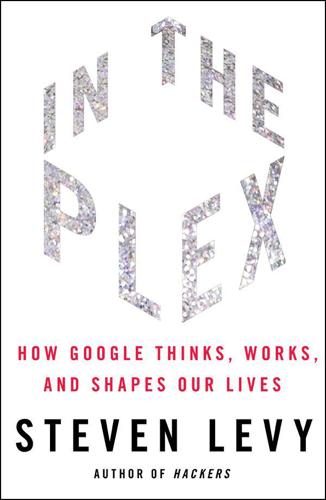
In the Plex: How Google Thinks, Works, and Shapes Our Lives
by
Steven Levy
Published 12 Apr 2011
Even after the local paper outed the benefactor as Google, the company still insisted that local people not make reference to that fact and had local officials sign a confidentiality agreement. When they talked about it, they used the code name Project 02. When visitors came asking, the locals clammed up like bay mussels; New York Times reporter John Markoff traveled to the site in 2006 and was stonewalled by the city manager. An official in a nearby town, free to make sour-grapes jokes at the lucky municipality across the river, said, “It’s a little bit like He-Who-Must-Not-Be-Named in Harry Potter.” Indeed, as local reporters found out when Google finally allowed them a glimpse of the compound (only the cafeteria and the public area—not the vast area where the servers resided), outside the security fence was a sign that read voldemort industries.
…
The actual writing of the book accelerated because of a fantastic uncluttering of my office by Erin Rooney Doland. My fact-checking team included Deborah Branscum, Victoria Wright, Stacy Horn, Teresa Carpenter, and Andrew Levy. (Though, as always, the buck stops with the author.) I got wisdom and advice along the way from John Markoff, Kevin Kelly, and Brad Stone. My first and most enthusiastic reader, of course, was my wife, Teresa Carpenter. (Having a Pulitzer Prize winner in the house is pretty useful.) As always, my agent Flip Brophy was invaluable at every stage of the perilous publishing process. At Simon & Schuster, Bob Bender was again my sharp-eyed editor, with Johanna Li assisting.
…
Kaplan, The Silicon Boys and Their Valley of Dreams (New York: William Morrow, 1999). 74 “zero percent possibility” Ince, “The Lost Google Tapes.” 75 Google’s first press release “Google Receives $25 Million in Equity Funding,” Google Press Center website, June 7, 1999. 77 “true story testimonials” “Google True Story Testimonials,” 2000–2001, Google Press Release. 80 “He was the only” John Markoff and G. Pascal Zachary, “In Searching the Web, Google Finds Riches,” The New York Times, April 13, 2003. 82 “Basically, we needed” Kevin Gray, “The Little Engine That Could,” Details, February 2002. 85 “long tail” The definitive article on this phenomenon is Chris Anderson, “The Long Tail,” Wired, October 2004.

The New Class Conflict
by
Joel Kotkin
Published 31 Aug 2014
RegBlog (blog), Penn Program on Regulation, http://www.regblog.org/2013/02/14-melekhina-social-media-antitrust.html; Bruce Baer Arnold, “Big Fine for a Broken Promise: Microsoft’s Antitrust Breach Puts Tech Firms on Notice,” The Conversation, March 8, 2013, http://theconversation.com/big-fine-for-a-broken-promise-microsofts-antitrust-breach-puts-tech-firms-on-notice-12683; Jeff Elder, “Silicon Valley Tech Giants Struck Deals on Hiring, Say Documents,” Wall Street Journal, April 20, 2014. 67. John Markoff, “Google Puts Money on Robots Using Man Behind Android,” New York Times, December 4, 2013; Eric Mack, “Google Launches Calico to Take on Illness and Aging,” CNET, September 18, 2013, http://www.cnet.com/news/google-launches-calico-to-take-on-illness-and-aging; John Markoff, “Google Adds to Its Menagerie of Robots,” New York Times, December 14, 2013; Neal E. Boudette and Daisuke Wakabayashi, “Google, Apple Forge Auto Ties,” All Things Digital, December 29, 2013, http://allthingsd.com/20131229/google-apple-forge-auto-ties. 68.
…
Tian Luo and Amar Mann, “Survival and Growth of Silicon Valley High-tech Businesses Born in 2000,” Monthly Labor Review, September 2011, pp. 16–31. 127. Timothy Noah, “Steve Jobs, Jobs-Creator,” New Republic (blog), October 6, 2011, http://www.newrepublic.com/blog/timothy-noah/95877/steve-jobs-job-creator. 128. John Markoff, “Silicon Valley Reacts to Economy With a New Approach,” New York Times, April 21, 2001; Robert D. Hof, “Venture Capital’s Liquidators,” Bloomberg Businessweek, December 03, 2008, http://www.businessweek.com/stories/2008-12-03/venture-capitals-liquidators. 129. Paul Abrahams, “End of Second California Gold Rush Leaves the Valley in Shock,” Financial Times, May 9, 2001. 130.
…
Alex Knapp, “Ray Kurzweil’s Predictions For 2009 Were Mostly Inaccurate,” Forbes, March 20, 2012, http://www.forbes.com/sites/alexknapp/2012/03/20/ray-kurzweils-predictions-for-2009-were-mostly-inaccurate; Robert Jonathan, “Google Exec Ray Kurzweil Takes 150 Vitamin Supplements Every Day,” Inquisitr, October 20, 2013, http://www.inquisitr.com/1000017/google-exec-ray-kurzweil-takes-150-vitamin-supplements-every-day; Eric Mack, “Google Launches Calico to Take on Illness and Aging,” CNET, September 18, 2013, http://www.cnet.com/news/google-launches-calico-to-take-on-illness-and-aging; Holman W. Jenkins, Jr., “Will Google’s Ray Kurzweil Live Forever?” Wall Street Journal, April 12, 2013. 86. John Markoff, “Brainlike Computers, Learning from Experience,” New York Times, December 29, 2013; Nick Bilton, “Computer-Brain Interfaces Making Big Leaps,” Bits (blog), New York Times, August 4, 2013, http://bits.blogs.nytimes.com/2013/08/04/disruptions-rather-than-time-computers-might-become-panacea-to-hurt. 87.
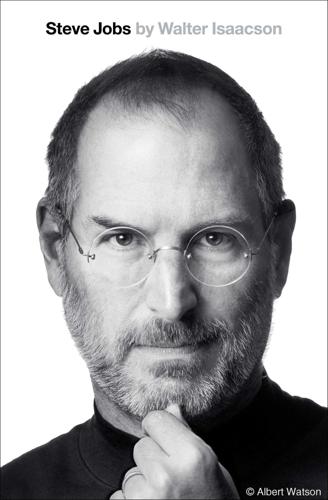
Steve Jobs
by
Walter Isaacson
Published 23 Oct 2011
An injunction on punch cards of the period—“Do not fold, spindle or mutilate”—became an ironic phrase of the antiwar Left. But by the early 1970s a shift was under way. “Computing went from being dismissed as a tool of bureaucratic control to being embraced as a symbol of individual expression and liberation,” John Markoff wrote in his study of the counterculture’s convergence with the computer industry, What the Dormouse Said. It was an ethos lyrically expressed in Richard Brautigan’s 1967 poem, “All Watched Over by Machines of Loving Grace,” and the cyberdelic fusion was certified when Timothy Leary declared that personal computers had become the new LSD and years later revised his famous mantra to proclaim, “Turn on, boot up, jack in.”
…
Earlier that year Jobs had been hoping to find a buyer for Pixar that would let him merely recoup the $50 million he had put in. By the end of the day the shares he had retained—80% of the company—were worth more than twenty times that, an astonishing $1.2 billion. That was about five times what he’d made when Apple went public in 1980. But Jobs told John Markoff of the New York Times that the money did not mean much to him. “There’s no yacht in my future,” he said. “I’ve never done this for the money.” The successful IPO meant that Pixar would no longer have to be dependent on Disney to finance its movies. That was just the leverage Jobs wanted. “Because we could now fund half the cost of our movies, I could demand half the profits,” he recalled.
…
Jobs unveiled iTunes at the January 2001 Macworld as part of the digital hub strategy. It would be free to all Mac users, he announced. “Join the music revolution with iTunes, and make your music devices ten times more valuable,” he concluded to great applause. As his advertising slogan would later put it: Rip. Mix. Burn. That afternoon Jobs happened to be meeting with John Markoff of the New York Times. The interview was going badly, but at the end Jobs sat down at his Mac and showed off iTunes. “It reminds me of my youth,” he said as the psychedelic patterns danced on the screen. That led him to reminisce about dropping acid. Taking LSD was one of the two or three most important things he’d done in his life, Jobs told Markoff.

Data and Goliath: The Hidden Battles to Collect Your Data and Control Your World
by
Bruce Schneier
Published 2 Mar 2015
monitors physical spaces: Calum MacLeod (3 Jan 2013), “China surveillance targets crime—and dissent,” USA Today, http://www.usatoday.com/story/news/world/2013/01/03/china-security/1802177. Messages containing words: Vernon Silver (8 Mar 2013), “Cracking China’s Skype surveillance software,” Bloomberg Business Week, http://www.businessweek.com/articles/2013-03-08/skypes-been-hijacked-in-china-and-microsoft-is-o-dot-k-dot-with-it. 30,000 Internet police: John Markoff (1 Oct 2008), “Surveillance of Skype messages found in China,” New York Times, http://www.nytimes.com/2008/10/02/technology/internet/02skype.html. India: John Ribeiro (13 Jan 2011), “RIM allows India access to consumer BlackBerry messaging,” CIO, http://www.cio.com/article/654438/RIM_Allows_India_Access_to_Consumer_BlackBerry_Messaging.
…
Craig Timberg (12 Feb 2014), “Foreign regimes use spyware against journalists, even in U.S.,” Washington Post, http://www.washingtonpost.com/business/technology/foreign-regimes-use-spyware-against-journalists-even-in-us/2014/02/12/9501a20e-9043-11e3-84e1-27626c5ef5fb_story.html. We labeled the Chinese actions: Andrew Jacobs, Miguel Helft, and John Markoff (13 Jan 2010), “Google, citing attack, threatens to exit China,” New York Times, http://www.nytimes.com/2010/01/13/world/asia/13beijing.html. David E. Sanger (6 May 2013), “U.S. blames China’s military directly for cyberattacks,” New York Times, http://www.nytimes.com/2013/05/07/world/asia/us-accuses-chinas-military-in-cyberattacks.html.
…
George Mason University School of Public Policy (Feb 2014), “Cyber security export markets 2014,” Virginia Economic Development Partnership, http://exportvirginia.org/wp-content/uploads/2014/02/Report-on-Cyber-Security-Preface.pdf Estonia was the victim: Joshua Davis (21 Aug 2007), “Hackers take down the most wired country in Europe,” Wired, https://web.archive.org/web/20071019223411/http://www.wired.com/politics/security/magazine/15-09/ff_estonia. ex-Soviet republic of Georgia: John Markoff (13 Aug 2008), “Before the gunfire, cyberattacks,” New York Times http://www.nytimes.com/2008/08/13/technology/13cyber.html. South Korea was the victim: Matthew Weaver (8 Jul 2009), “Cyberattackers target South Korea and US,” Guardian, http://www.theguardian.com/world/2009/jul/08/south-korea-cyber-attack.

@War: The Rise of the Military-Internet Complex
by
Shane Harris
Published 14 Sep 2014
The Corporate Counterstrike [>] “a highly sophisticated”: David Drummond, “A New Approach to China,” Google blog, January 12, 2010, http://googleblog.blogspot.com/2010/01/new-approach-to-china.html. [>] “crown jewels”: John Markoff, “Cyberattack on Google Said to Hit Password System,” New York Times, April 19, 2010, http://www.nytimes.com/2010/04/20/technology/20google.html?_r=0. [>] “Google broke in”: Author conversation with said official, February 2013. [>] Google uncovered evidence: For more on Google’s investigation, see David E. Sanger and John Markoff, “After Google’s Stand on China, US Treads Lightly,” New York Times, January 14, 2010, http://www.nytimes.com/2010/01/15/world/asia/15diplo.html?
…
Thanks also to Ben Pauker, Peter Scoblic, Mindy Kay Bricker, and David Rothkopf for all they’ve done guiding this fast-moving and fast-growing ship. I owe a particular debt of gratitude to the voluminous and insightful reporting of several journalist colleagues whose work informed my own research, including Siobhan Gorman and Danny Yadron at the Wall Street Journal; David Sanger, Nicole Perlroth, and John Markoff at the New York Times; Ellen Nakashima at the Washington Post; Tony Romm at Politico; Spencer Ackerman at the Guardian and formerly of Wired’s Danger Room blog; Kim Zetter, also of Wired and author of its Threat Level blog; Joseph Menn at Reuters; and Michael Riley at Bloomberg Businessweek. Each of them has done groundbreaking work on this terrain.
…
. [>] In 2013 the NSA had a budget: Barton Gellman and Ellen Nakashima, “US Spy Agencies Mounted 231 Offensive Cyber-Operations in 2011, Documents Show,” Washington Post, August 30, 2013, http://articles.washingtonpost.com/2013-08-30/world/41620705_1_computer-worm-former-u-s-officials-obama-administration. [>] “Graduates of the program become”: “About the Program,” Systems and Network Interdisciplinary Program, http://www.nsa.gov/careers/_files/SNIP.pdf. [>] The company itself has been the target: John Markoff, “Cyber Attack on Google Said to Hit Password System,” New York Times, April 19, 2010. 6. The Mercenaries [>] “Bonesaw is the ability to map”: Aram Roston, “Nathaniel Fick, Former CNAS Chief, to Head Cyber Targeting Firm,” C4ISR Journal, January–February 2013, http://www.defensenews.com/article/20130115/C4ISR01/301150007/Nathaniel-Fick-Former-CNAS-Chief-Heads-Cyber-Targeting-Firm. [>] Internal documents show: Michael Riley and Ashlee Vance, “Cyber Weapons: The New Arms Race,” Bloomberg Businessweek, July 20, 2011, http://www.businessweek.com/magazine/cyber-weapons-the-new-arms-race-07212011.html#p4. [>] “Eventually we need to enable”: Andy Greenberg, “Founder of Stealthy Security Firm Endgame to Lawmakers: Let US Companies ‘Hack Back,’” Forbes, September 20, 2013, http://www.forbes.com/sites/andygreenberg/2013/09/20/founder-of-stealthy-security-firm-endgame-to-lawmakers-let-u-s-companies-hack-back/. [>] “If you believe that wars”: Joseph Menn, “US Cyberwar Strategy Stokes Fear of Blowback,” Reuters, May 10, 2013, http://www.reuters.com/article/2013/05/10/us-usa-cyberweapons-specialreport-idUSBRE9490EL20130510. [>] One prominent player: Information about CrowdStrike’s techniques is based on author interviews with Steve Chabinksy, the company’s general counsel and a former senior FBI official, conducted in July and August 2013.

Future Crimes: Everything Is Connected, Everyone Is Vulnerable and What We Can Do About It
by
Marc Goodman
Published 24 Feb 2015
Weapons System Designs Compromised by Chinese Cyberspies,” Washington Post, May 27, 2013. 56 According to an FBI report: Marcus Ranum, “Cyberwar Rhetoric Is Scarier Than Threat of Foreign Attack,” U.S. News and World Report, March 29, 2010. 57 Of course it is not just the American military’s: Craig Timberg and Ellen Nakashima, “Chinese Cyberspies Have Hacked Most Washington Institutions, Experts Say,” Washington Post, Feb. 20, 2013. 58 Moreover, a 2009 report: John Markoff, “Vast Spy System Loots Computers in 103 Countries,” New York Times, March 28, 2009; Omar El Akkad, “Meet the Canadians Who Busted GhostNet,” Daily Globe and Mail, March 30, 2009; Tom Ashbrook et al., “Unmasking GhostNet,” On Point with Tom Ashbrook, WBUR, April 2, 2009, http://onpoint.wbur.org/2009/04/02/unmasking-ghostnet. 59 China has also been accused: David E.
…
,” Mashable, June 22, 2012; Kristin Burnham, “Facebook’s WhatsApp Buy: 10 Staggering Stats,” InformationWeek, Feb. 21, 2014. 4 Put another way, every ten minutes: Verlyn Klinkenborg, “Trying to Measure the Amount of Information That Humans Create,” New York Times, Nov. 12, 2003. 5 The cost of storing: McKinsey Global Institute, Big Data: The Next Frontier for Innovation, Competition, and Productivity, May 2011; Kevin Kelly speaking at the Web 2.0 conference in 2011, http://blip.tv/web2expo/web-2-0-expo-sf-2011-kevin-kelly-4980011. 6 Across all industries: World Economic Forum, Personal Data: The Emergence of a New Asset Class, Jan. 2011. 7 Eventually, your personal details: Cory Doctorow, “Personal Data Is as Hot as Nuclear Waste,” Guardian, Jan. 15, 2008. 8 That’s one account: Emma Barnett, “Hackers Go After Facebook Sites 600,000 Times Every Day,” Telegraph, Oct. 29, 2011; Mike Jaccarino, “Facebook Hack Attacks Strike 600,000 Times per Day, Security Firm Reports,” New York Daily News, Oct. 29, 2011. 9 Because 75 percent of people: “Digital Security Firm Says Most People Use One Password for Multiple Websites,” GMA News Online, Aug. 9, 2013. 10 Many social media companies: “LinkedIn Hack,” Wikipedia; Jose Pagliery, “2 Million Facebook, Gmail, and Twitter Passwords Stolen in Massive Hack,” CNNMoney, Dec. 4, 2013. 11 Transnational organized crime groups: Elinor Mills, “Report: Most Data Breaches Tied to Organized Crime,” CNET, July 27, 2010. 12 Such was the case: Jason Kincaid, “Dropbox Security Bug Made Passwords Optional for Four Hours,” TeckCrunch, June 20, 2011. 13 Later, however, it was revealed: John Markoff, “Cyberattack on Google Said to Hit Password System,” New York Times, April 19, 2010; Kim Zetter, “Report: Google Hackers Stole Source Code of Global Password System,” Wired, April 20, 2010. 14 According to court documents: John Leyden, “Acxiom Database Hacker Jailed for 8 Years,” Register, Feb. 23, 2006; Damien Scott and Alex Bracetti, “The 11 Worst Online Security Breaches,” Complex.com, May 9, 2012. 15 More recently, in 2013, the data broker Experian: Brian Krebs, “Experian Sold Customer Data to ID Theft Service,” Krebs on Security, Oct. 20, 2013. 16 Experian learned of the compromise: Byron Acohido, “Scammer Dupes Experian into Selling Social Security Nos,” USA Today, Oct. 21, 2013; Matthew J.
…
Healey, “Toyota Deaths Reported to Safety Database Rise to 37,” USA Today, Feb. 17, 2010. 24 A jury found: Phil Baker, “Software Bugs Found to Be Cause of Toyota Acceleration Death,” Daily Transcript, Nov. 4, 2013; Junko Yoshida, “Acceleration Case: Jury Finds Toyota Liable,” EETimes, Oct. 24, 2013. 25 Toyota was accused: Jerry Hirsch, “Toyota Admits Misleading Regulators, Pays $1.2-Billion Federal Fine,” Los Angeles Times, March 19, 2014. 26 According to the London Metropolitan Police: Victoria Woollaston, “Forget Carjacking, the Next Big Threat Is Car-HACKING,” Mail Online, May 8, 2014. 27 The operation takes less: William Pentland, “Car-Hacking Goes Viral in London,” Forbes, May 20, 2014; Thomas Cheshire, “Thousands of Cars Stolen Using Hi-Tech Gadgets,” Sky News, May 8, 2014. 28 Using nothing more than a laptop: Sebastian Anthony, “Hackers Can Unlock Cars via SMS,” ExtremeTech, July 28, 2011; Robert McMillan, “ ‘War Texting’ Lets Hackers Unlock Car Doors Via SMS,” CSO Online, July 27, 2011. 29 Your musical tastes: Rebecca Boyle, “Trojan-Horse MP3s Could Let Hackers Break into Your Car Remotely, Researchers Find,” Popular Science, March 14, 2011. 30 For just under $30: Victoria Woollaston, “The $20 Handheld Device That Hacks a CAR—and Can Control the Brakes,” Mail Online, Feb. 6, 2014. 31 Entirely possible: John Markoff, “Researchers Hack into Cars’ Electronics,” New York Times, March 9, 2011; Chris Philpot, “Can Your Car Be Hacked?,” Car and Driver, Aug. 2011; Andy Greenberg, “Hackers Reveal Nasty New Car Attacks—with Me Behind the Wheel,” Forbes, July 24, 2013; Dan Goodin, “Tampering with a Car’s Brakes and Speed by Hacking Its Computers: A New How-To,” Ars Technica, July 29, 2013. 32 Renault Nissan’s CEO: Paul A.
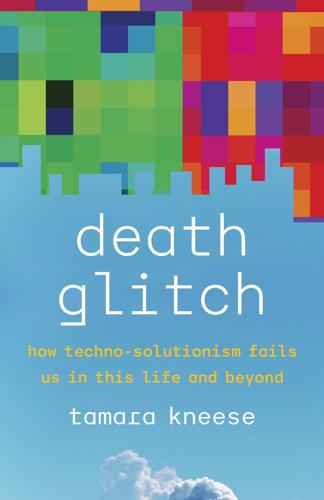
Death Glitch: How Techno-Solutionism Fails Us in This Life and Beyond
by
Tamara Kneese
Published 14 Aug 2023
The journalist Gregg Zachary from Arizona State University’s School for the Future of Innovation in Society organized the event, which featured speakers who write about secular transcendence and other experts on Silicon Valley culture, including the tech journalist and Stewart Brand biographer John Markoff. The project was funded by the conservative Templeton Foundation, which seeks to understand connections between religious cosmology and technology. I went along for the ride, invited to present a spiel on digital estate planning from a cultural and historical perspective. But academics and journalists were not the main attractions.
…
He noted that Siri can remember your loved ones’ birthdays or how to pronounce your colleagues’ names, freeing you up to spend your mental energy on more meaningful (that is, productive) tasks. And, in a way, if Siri remembers your preferences and the nuances of your communication patterns, you can live on even after your body dies. Gruber, in an earlier recorded TEDx conversation with the journalist John Markoff, excitedly mentions that his favorite science fiction story about AI is Her, the movie from 2013 in which Joaquin Phoenix’s character falls in love with an operating system known as Samantha, with its sultry voice provided by Scarlett Johansson, because much of its plot is already “so doable. You want to gasp out—I want Samantha now.”53 Aside from the Singularity aspect, in which Samantha joins the other operating systems in the cloud in a form of virtual assistant rapture, Gruber claims that essentially every part of that movie could happen today.
…
Gruber, “How AI Can Enhance Our Memory.” 54. Gruber, “How AI Can Enhance Our Memory.” 55. Gruber, “How AI Can Enhance Our Memory.” 56. TEDx, “A Conversation about Conversational AI,” TEDxBeaconStreet, January 17, 2019, www.youtube.com/watch?v=yoCwsvIyp9Y. The conversation was between Gruber and the tech journalist John Markoff. 57. It is worth noting that Gruber was once an aspiring magician. 58. Ray Kurzweil has published many books predicting a Singularity, a time when humans and machines will become one. See Kurzweil, The Age of Spiritual Machines. 59. From the conference program. 60. Bell and Gemmell, Your Life, Uploaded, 139.

Surveillance Valley: The Rise of the Military-Digital Complex
by
Yasha Levine
Published 6 Feb 2018
Jacobsen, Pentagon’s Brain, chap. 13, “In America, antiwar protests raged on…” Student protests against the ILLIAC-IV quickly devolved into violence: a campus armory and a US Air Force recruiting station were firebombed, and thousands of students protested on campus, smashing windows and breaking into the chancellor’s office. The protests put the supercomputer in physical danger, and the university was forced to relocate it across the country to the NASA Ames Research Center, which is today located next door to Google in Mountain View, California. 90. John Markoff, What the Dormouse Said: How the 60s Counterculture Shaped the Personal Computer (New York: Viking Adult, 2005). 91. The protests against the Stanford Research Institute were persistent and violent enough that the university regents decided to spin off the Stanford Research Institute as a private entity, hoping to mollify students by officially distancing the university from classified military research. 92.
…
Indeed, in that sense, Internet culture is not so different from the rest of American contemporary culture. 12. Quoted in Fred Turner, From Counterculture to Cyberculture: Stewart Brand, the Whole Earth Network, and the Rise of Digital Utopianism (Chicago: University of Chicago Press, 2006), 41. 13. John Markoff, What the Dormouse Said: How the 60s Counterculture Shaped the Personal Computer (New York: Viking Adult, 2005). 14. Bruce Shlain and Martin A. Lee, Acid Dreams: The Complete Social History of LSD: The CIA, the Sixties, and Beyond, rev. ed. (New York: Grove Press, 1994), 155–156. 15. Ibid., 109. 16.
…
This occurred without public discussion or disclosure, and was effectively hidden for a year” (“Management of NSFNET,” Hearing Before the Subcommittee on Science of the Comm. on Science, Space, and Technology, US House of Representatives, 102nd Cong., 2nd sess. [March 12, 1992]). From then on, the NSFNET backbone ran as part of a larger private network owned by MCI and IBM. 56. John Markoff, “Data Network Raises Monopoly Fear,” New York Times, December 19, 1991. 57. Kesan and Shah, “Fool Us Once Shame on You,” 122–123. 58. Ibid. “ANS took advantage of the public in several ways. First, it relied heavily on support from the government. Second, ANS did not find new customers, instead it attempted mainly to convert customers from the government-subsidized regional networks.
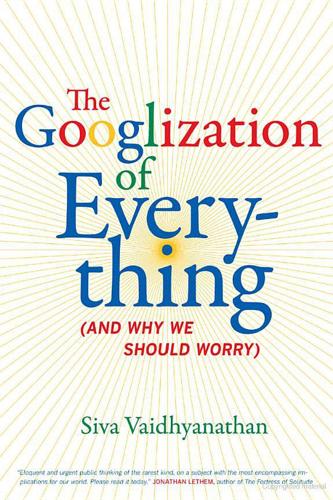
The Googlization of Everything:
by
Siva Vaidhyanathan
Published 1 Jan 2010
Farhad Manjoo, “How the Internet Helps Iran Silence Activists,” Slate, June 25, 2009; Miguel Helft and John Markoff, “Google, Citing Cyber Attack, Threatens to Exit China,” New York Times, January 13, 2010. 5. John Ribeiro, “Google Placates India, China with Different Map Versions,” PC World, October 23, 2009. 6. Miguel Helft and David Barboza, “Google Shuts China Site in Dispute over Censorship,” New York Times, March 22, 2010. 7. Miguel Helft and David Barboza, “Google’s Plan to Turn Its Back on China Has Risks,” New York Times, March 23, 2010; John Markoff, “Cyberattack on Google Said to Hit Password System,” New York Times, April 19, 2010; John Markoff and Ashlee Vance, “Software Firms Fear Hackers Who Leave No Trace,” New York Times, January 20, 2010. 8.
…
Stross, Planet Google: One Company’s Audacious Plan to Organize Everything We Know (New York: Free Press, 2008), 109–28. 11. Cecillia Kang, “AT&T Accuses Google of Violating Telecom Laws; Google Rejects Claims,” Post I.T., blog, September 25, 2009; Amy Schatz, “AT&T Asks for Curbs on Google,” WSJ.com, September 26, 2009; John Markoff and Matt Richtel, “F.C.C. Hands Google a Partial Victory,” New York Times, August 1, 2007. 12. “GOOG: Google Inc Company Profile,” CNNMoney.com, August 12, 2010. 13. Ken Auletta, “Annals of Communications: The Search Party,” New Yorker, January 14, 2008; Rob Hof, “Maybe Google Isn’t Losing Big Bucks on YouTube After All,” BusinessWeek, June 17, 2009; Nicholas Thompson and Fred Vogelstein, “The Plot to Kill Google,” Wired, January 19, 2009; Eli Edwards, “Stepping Up to the Plate: The Google-Doubleclick Merger and the Role of the Federal Trade Commission in Protecting Online Data Privacy,” SSRN eLibrary, April 25, 2008, http://papers.ssrn.com; Michael Liedtke, “Guessing Game: How Much Money Is YouTube Losing?”
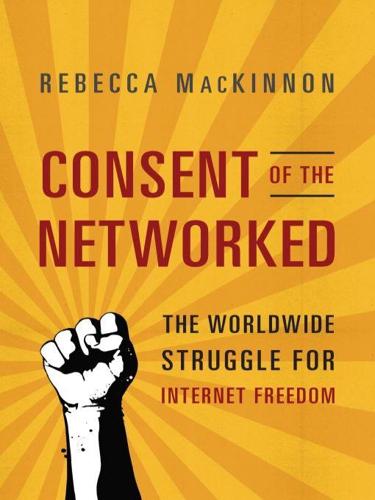
Consent of the Networked: The Worldwide Struggle for Internet Freedom
by
Rebecca MacKinnon
Published 31 Jan 2012
For a detailed technical analysis of the shutdown, see James Cowie, “Egypt Leaves the Internet,” Renesys Blog, January 28, 2011, www.renesys.com/blog/2011/01/egypt-leaves-the-internet.shtml; and Earl Zmijewski, “Egypt’s Net on Life Support,” Renesys Blog, January 31, 2011, www.renesys.com/blog/2011/01/egypts-net-on-life-support.shtml. Also see James Glanz and John Markoff, “Egypt Leaders Found ‘Off’ Switch for Internet,” New York Times, February 15, 2011, www.nytimes.com/2011/02/16/technology/16internet.html (accessed June 27, 2011). 52 After Muammar Gaddafi cut off phone and Internet service to rebel-held areas in eastern Libya: Margaret Corker and Charles Levinson, “Rebels Hijack Gadhafi’s Phone Network,” Wall Street Journal, April 13, 2011, http://online.wsj.com/article/SB10001424052748703841904576256512991215284.html (accessed June 27, 2011). 53 In a comprehensive book about technology and politics in the Islamic world: Philip N.
…
Satter, “Vodafone: Egypt Forced Us to Send Text Messages,” Associated Press, February 3, 2011, www.businessweek.com/ap/financialnews/D9L5ANI80.htm (all accessed August 13, 2011). 185 in June 2011 the UN Human Rights Council approved the Guiding Principles on Business and Human Rights: “Report of the Special Representative of the Secretary-General on the Issue of Human Rights and Transnational Corporations and Other Business Enterprises, John Ruggie; Guiding Principles on Business and Human Rights: Implementing the United Nations ‘Protect, Respect and Remedy’ Framework,” UN Human Rights Council A/HRC/17/31, March 21, 2011, www.business-humanrights.org/media/documents/ruggie/ruggie-guiding-principles-21-mar-2011.pdf. CHAPTER 12: IN SEARCH OF “INTERNET FREEDOM” POLICY 189 Global Internet Freedom Consortium (GIFC): www.internetfreedom.org. 189 The GIFC found powerful allies in Mark Palmer . . . and Michael Horowitz: See John Markoff, “Iranians and Others Outwit Net Censors,” New York Times, April 30, 2009, www.nytimes.com/2009/05/01/technology/01filter.html; James O’Toole, “Internet Censorship Fight Goes Global,” Pittsburgh Post-Gazette, June 4, 2009, www.post-gazette.com/pg/09155/974993-82.stm; Brad Stone, “Aid Urged for Groups Fighting Internet Censors,” New York Times, January 20, 2010, www.nytimes.com/2010/01/21/technology/21censor.html; Caylan Ford, “What Hillary Clinton, Google Can Do About Censorship in China,” Washington Post, January 20, 2010, www.washingtonpost.com/wp-dyn/content/article/2010/01/20/AR2010012002805.html; Genevieve Long, “Internet Freedom Software Should Get Federal Funding, Group Says,” Epoch Times, March 5, 2010; Gordon Crovitz, “Mrs.
…
Deficit—China and America—Public Diplomacy in the Age of the Internet: A Minority Staff Report Prepared for the Use of the Committee on Foreign Relations, United States Senate,” February 15, 2011, http://lugar.senate.gov/issues/foreign/diplomacy/ChinaInternet.pdf. 191 “Internet-in-a-suitcase”: James Glanz and John Markoff, “US Underwrites Internet Detour Around Censors,” New York Times, June 12, 2011, www.nytimes.com/2011/06/12/world/12internet.html. Also see Josh Smith, “State Allocates Final $28 Million for Internet Freedom Programs,” National Journal, May 3, 2011, www.nextgov.com/nextgov/ng_20110503_8059.php. 191 Clay Shirky critiqued Washington’s obsession with circumvention: Clay Shirky, “The Political Power of Social Media,” Foreign Affairs 90, no. 1 (January–February 2011): 28–41. 193 as Ethan Zuckerman of Harvard’s Berkman Center warns: See Ethan Zuckerman, “Internet Freedom: Beyond Circumvention,” My Heart’s in Accra blog, February 22, 2010, www.ethanzuckerman.com/blog/2010/02/22/internet-freedom-beyond-circumvention. 193 Evgeny Morozov has been even more critical: Evgeny Morozov, The Net Delusion: The Dark Side of Internet Freedom (New York: PublicAffairs, 2011). 193 US Internet freedom policy also has critics among its intended beneficiaries: Sami Ben Gharbia, “The Internet Freedom Fallacy and the Arab Digital Activism,” September 17, 2010, http://samibengharbia.com/2010/09/17/the-internet-freedom-fallacy-and-the-arab-digital-activism. 195 While the Bahraini government was arresting bloggers and suppressing dissent, the United States was planning to sell $70 million in arms to Bahrain: See Ivan Sigal, “Going Local,” Index on Censorship 40, no. 1 (2011): 93–99. 195 When Clinton visited Cairo a month after the revolution, Egypt’s January 25 Revolution Youth Coalition refused to meet with her: Kirit Radia and Alex Marquardt, “Young Leaders of Egypt’s Revolt Snub Clinton in Cairo,” ABC News Political Punch, March 15, 2011, http://blogs.abcnews.com/politicalpunch/2011/03/young-leaders-of-egypts-revolt-snub-clinton-in-cairo.html. 195 “International Strategy for Cyberspace”: www.whitehouse.gov/sites/default/files/rss_viewer/internationalstrategy_cyberspace.pdf. 196 Swedish Foreign Minister Carl Bildt called for a “new transatlantic partnership for protecting and promoting the freedoms of cyberspace”: Carl Bildt, “Tear Down These Walls Against Internet Freedom,” Washington Post, January 25, 2010, www.washingtonpost.com/wp-dyn/content/article/2010/01/24/AR2010012402297.html. 196 In July 2010 the French and Dutch foreign ministers convened an international conference on the Internet and freedom of expression: “Ministers to Meet in the Netherlands to Champion Internet Freedom,” Permanent Mission of the Kingdom of the Netherlands to the United Nations, www.netherlandsmission.org/article.asp?

Hit Refresh: The Quest to Rediscover Microsoft's Soul and Imagine a Better Future for Everyone
by
Satya Nadella
,
Greg Shaw
and
Jill Tracie Nichols
Published 25 Sep 2017
Chapter 8 The Future of Humans and Machines Toward an Ethical Framework for AI Design If you’d like to glimpse the state of computer-human relations and to understand its future, a good way to start is to observe some of the conversations we are having with our digital counterparts. Already millions of people around the world are working and talking with digital productivity assistants like Cortana; millions more spend part of everyday interacting with social companions—chatbots—like Xiaoice in China and Zo in the United States. John Markoff of The New York Times wrote about the phenomenon in his reporting on Xiaoice. The personalities of Cortana, Zo, and Xiaoice were developed by our AI team, whose work is now core to our AI aspirations. Users of social companions like Zo and Xiaoice say that when they are lonely, in a bad mood, or just aching for dialogue, they find these digital friends on their smartphones to be intelligent and sensitive.
…
We can’t seem to get beyond this utopia/dystopia dichotomy. I would argue that the most productive debate we can have about AI isn’t one that pits good vs. evil, but rather one that examines the values instilled in the people and institutions creating this technology. In his book Machines of Loving Grace, John Markoff writes, “The best way to answer the hard questions about control in a world full of smart machines is by understanding the values of those who are actually building these systems.” It’s an intriguing observation, and one that our industry must address. At our developer conferences, I explain Microsoft’s approach to AI as based on three core principles.
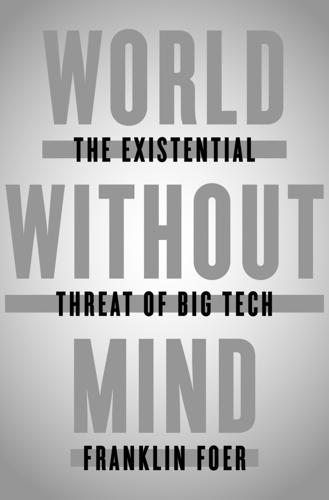
World Without Mind: The Existential Threat of Big Tech
by
Franklin Foer
Published 31 Aug 2017
John McCarthy, the godfather of AI, once said that he wanted to live to 102, so that he could laugh at Kurzweil when the singularity fails to arrive at its appointed hour. Still, Kurzweil’s devotees include members of the tech A-list. Bill Gates, for one, calls him “the best person I know at predicting the future of artificial intelligence.” The New York Times’s John Markoff, our most important chronicler of the technologists, says that Kurzweil “represents a community of many of Silicon Valley’s best and brightest,” ranks that include the finest minds at Google. • • • LARRY PAGE LIKES TO IMAGINE that he never escaped academia. Google, after all, began as a doctoral dissertation—and the inspiration for the search engine came from his connoisseurship of academic papers.
…
Notes CHAPTER ONE: THE VALLEY IS WHOLE, THE WORLD IS ONE as an “Indian freak”: Tom Wolfe, The Electric Kool-Aid Acid Test (Farrar, Straus & Giroux, 1968), 2, 11. child of an advertising executive: For biographical details about Brand, I leaned heavily on three excellent books: Fred Turner, From Counterculture to Cyberculture (University of Chicago Press, 2006); John Markoff, What the Dormouse Said (Viking Penguin, 2005); Walter Isaacson, The Innovators (Simon & Schuster, 2014). “cosmic consciousness”: Turner, 59. “tend to be extra-planetary”: Sherry L. Smith, Hippies, Indians, and the Fight for Red Power (Oxford University Press, 2012), 52. “a peyote meeting without peyote”: Charles Perry, The Haight-Ashbury (Random House, 1984), 19.
…
once said that he wanted to live to 102 so that he could laugh: Wendy M. Grossman, “Artificial Intelligence Is Still the Future,” The Inquirer, April 7, 2008. “the best person I know at predicting the future of artificial intelligence”: Kurzweil, Singularity, back cover. “represents a community of many of Silicon Valley’s best and brightest”: John Markoff, Machines of Loving Grace (HarperCollins, 2015), 85. Google invests vast sums: Alphabet Inc., Research & Development Expenses, 2015, Google Finance. “Google is not a conventional company”: Larry Page and Sergey Brin, “Letter from the Founders: ‘An Owner’s Manual’ for Google’s Shareholders,” August 2004.

Move Fast and Break Things: How Facebook, Google, and Amazon Cornered Culture and Undermined Democracy
by
Jonathan Taplin
Published 17 Apr 2017
The earliest networks—like the Whole Earth ’Lectronic Link (WELL), organized by Stewart Brand, the founder of The Whole Earth Catalog—grew directly out of 1960s counterculture. Brand had helped novelist Ken Kesey organize the Acid Tests—epic be-ins where thousands of hippies ingested LSD and danced to the music of a new band, the Grateful Dead. Steve Jobs, founder of Apple Computer, Inc., dropped acid as well. “Jobs explained,” wrote John Markoff in his book What the Dormouse Said, “that he still believed that taking LSD was one of the two or three most important things he had done in his life, and he said he felt that because people he knew well had not tried psychedelics, there were things about him they couldn’t understand.” Brand, Kesey, and Jobs envisioned a new kind of network that was truly “bottom-up.”
…
Engelbart had built a working prototype of what we today would easily recognize as a contemporary Internet device—fifteen years before the introduction of the Apple Macintosh. The next year Engelbart took a team from the Stanford Research Institute to the Lama Foundation commune, north of Taos, New Mexico. It was Stewart Brand who suggested that Lama might provide an atmosphere, as John Markoff wrote, “to create a meeting of the minds between the NLS researchers and the counterculture community animated by the Whole Earth Catalog.” The land outside Taos was full of alternative communities—Morningstar East, Reality Construction Company, the Hog Farm, New Buffalo, and the Family, to name a few.
…
Chapter Three: Tech’s Counterculture Roots Although I never got to meet Doug Engelbart, I was fortunate enough to have spent time with some of the founders of the Internet, including Vint Cerf, Tim Berners-Lee, and most especially John Seely Brown, who has been a mentor to me for the past seven years. Thierry Bardini, Bootstrapping: Douglas Engelbart, Coevolution, and the Origins of Personal Computing (Palo Alto: Stanford University Press, 2000). Fred Turner, From Counterculture to Cyberculture (Chicago: University of Chicago Press, 2008), and John Markoff, What the Dormouse Said (New York: Viking, 2005), are both wonderful resources around the story of the early Internet. Lee Vinsel and Andrew Russell, “Hail the Maintainers,” Aeon, April 7, 2016, aeon.co/essays/innovation-is-overvalued-maintenance-often-matters-more. Chapter Four: The Libertarian Counterinsurgency Peter A.

Underground
by
Suelette Dreyfus
Published 1 Jan 2011
See: http://articles.cnn.com/2010-07-25/tech/wikileaks.afghanistan_1_julian-assange-whistle-blower-website-afghan-war?_s=PM:TECH 7. William J. Broad, John Markoff and David E Sanger, ‘Israeli Test on Worm Called Crucial in Iran Nuclear Delay, New York Times online, 15 January, 2011. See: http://www.nytimes.com/2011/01/16/world/middleeast/16stuxnet.html?pagewanted=3&_r=1 8. Ibid. 9. CBS News, ‘Iran Confirms Stuxnet Worm Halted Centrifuges’, 29 November, 2010. See: http://www.cbsnews.com/stories/2010/11/29/world/main7100197.shtml 10. William J. Broad, John Markoff and David E. Sanger, ‘Israeli Test on Worm Called Crucial in Iran Nuclear Delay’, New York Times online, 15 January, 2011.
…
It wasn’t an automated program, it was the Australians! It was the Realm hackers! God, this was funny. ‘Wait – there’s more! It says, “Another rogue program shows a widespread vulnerability”. I laughed my ass off,’ Erik said, struggling to get the words out. ‘A rogue program! Who wrote the article?’ ‘A John Markoff,’ Erik answered, wiping his eyes. ‘I called him up.’ ‘You did? What did you say?’ Phoenix tried to gather himself together. ‘ “John,” I said, “You know that article you wrote on page 12 of the Times? It’s wrong! There’s no rogue program attacking the Internet.” He goes, “What is it then?” “It’s not a virus or a worm,” I said.
…
‘Yeah,’ Erik continued, ‘And then Markoff said, “Can you get me to talk to them?” And I said I’d see what I could do.’ ‘Yeah,’ Phoenix said. ‘Go tell him, yes. Yeah, I gotta talk to this idiot. I’ll set him straight.’ Page one, the New York Times, 21 March 1990: ‘Caller Says he Broke Computers’ Barriers to Taunt the Experts’, by John Markoff. True, the article was below the crease – on the bottom half of the page – but at least it was in column 1, the place a reader turns to first. Phoenix was chuffed. He’d made the front page of the New York Times. ‘The man identified himself only as an Australian named Dave,’ the article said.
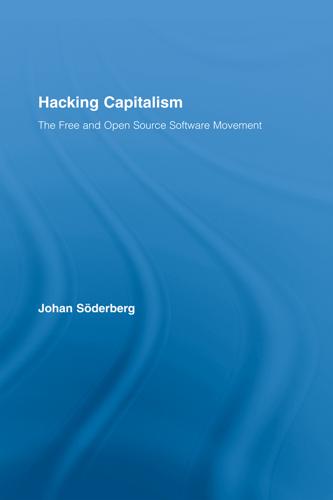
Hacking Capitalism
by
Söderberg, Johan; Söderberg, Johan;
For the Underground may be increasingly aware of the technical and aesthetic possibilities of the disc, of videotape, of the electronic camera, and so on, and is systematically exploring the terrain, but it has no political viewpoint of its own and therefore mostly falls a helpless victim to commercialism.” Hans Enzensberger “Constituents of a Theory of the Media” in ed. John Hanhardt, Video Culture—A Critical Investigation (New York: Virtual Studies Workshop Press: 1986), 103; hereafter cited in text. 17. For an exhaustive account of the social perils with computers, see Lenny Siegel’s and John Markoff’s The High Cost of High Tech—The Dark Side of the Chip (New York: Harper & Row, 1985). On the global exploitation of workers in East-Asian and Mexican sweatshops where computers are built, see ed. Gerald Sussman and John Lent, Global Productions—Labor in the Making of the Information Society (Cresskill: Hampton Press, 1998).
…
John Naughton, A Brief History of the Future: the Origins of the Internet (London: Phoenix, 2000), 176, italics in original. 9. Cudos is an acronym used to denote principles that should guide good scientific research. It was introduced by the sociologist Robert King Merton. One of the principles of Cudos is that scientific results ought to be freely shared among colleagues. 10. John Markoff, What the Dormouse Said: How the Sixties Counterculture Shaped the Personal Computer Industry (New York: Viking, 2005). 11. Langdon Winner, The Whale and the Reactor—A Search for Limits in an Age of High Technology (Chicago: The University of Chicago Press, 1986). 12. Steven Levy, Hackers—Heroes of the Computer Revolution (New York: Delta, 1994), 214. 13.
…
The Two Marxism: Contradictions and Anomalies in the Development of Theory, London: Macmillan, 1980. Gorz, André. Reclaiming Work—Beyond the Wage Based Society, Cambridge: Polity Press, 1999. Grant, Gail. Understanding Digital Signatures—Establishing Trust over the Internet and Other Networks, New York: McGraw-Hill, 1998. Hafner, Katie, and John Markoff. Cyberpunk—Outlaws and Hackers in the Computer Frontier, London: Forth Estate, 1991. Hagen, Ingunn, and Janet Wasko, Consuming Audiences?—Production and Reception in Media Research, Cresskill NJ: Hampton Press, 2000. Hakken, David. Cyborgs @ Cyberspace?—An Ethnographer Looks to the Future, New York: Routledge, 1999.

The Industries of the Future
by
Alec Ross
Published 2 Feb 2016
The North American Free Trade Agreement (NAFTA) came into effect: World Trade Organization International Trade Statistics, 2013, World Trade Organization, http://www.wto.org/english/res_e/statis_e/its2013_e/its2013_e.pdf. The highest-skilled labor markets: Richard Rahn, “RAHN: Estonia, the Little Country That Could,” Washington Times, June 20, 2011, http://www.washingtontimes.com/news/2011/jun/20/the-little-country-that-could/. A computer that can speed up analysis: John Markoff, “Armies of Expensive Lawyers, Replaced by Cheaper Software,” New York Times, March 4, 2011, http://www.nytimes.com/2011/03/05/science/05legal.html?pagewanted=all. Social networks can open doors: Larry Rosen, iDisorder: Understanding Our Obsession with Technology and Overcoming Its Hold on Us (London: Palgrave Macmillan, 2012).
…
Run by the National Science Foundation: “National Robotics Initiative Invests $38 Million in Next-Generation Robotics,” R&D Magazine, October 25, 2013, http://www.rdmag.com/news/2013/10/national-robotics-initiative-invests-38-million-next-generation-robotics. The private sector is also investing: John Markoff, “Google Adds to Its Menagerie of Robots,” New York Times, December 14, 2013, http://www.nytimes.com/2013/12/14/technology/google-adds-to-its-menagerie-of-robots.html?_r=1&. As a kid, Hassabis was: Samuel Gibbs, “Demis Hassabis: 15 Facts about the DeepMind Technologies Founder,” Guardian, January 28, 2014, http://www.theguardian.com/technology/shortcuts/2014/jan/28/demis-hassabis-15-facts-deepmind-technologies-founder-google; “Breakthrough of the Year: The Runners-Up,” Science 318, no. 5858 (2007): 1844–49, doi:10.1126/science.318.5858.1844a.
…
By the end of 2012: Jackson, “Foxconn Will Replace Workers.” Gou hopes to have the first: Robert Skidelsky, “Rise of the Robots: What Will the Future of Work Look Like?” Guardian, February 19, 2013, http://www.theguardian.com/business/2013/feb/19/rise-of-robots-future-of-work. As he explained in a 2012 New York Times article: John Markoff, “Skilled Work, without the Worker,” New York Times, August 19, 2012, http://www.nytimes.com/2012/08/19/business/new-wave-of-adept-robots-is-changing-global-industry.html?pagewanted=all&_r=0. But wages in China: Keith Bradsher, “Even as Wages Rise, China Exports Grow,” New York Times, January 10, 2014, http://www.nytimes.com/2014/01/10/business/international/chinese-exports-withstand-rising-labor-costs.html?

The Future of the Internet: And How to Stop It
by
Jonathan Zittrain
Published 27 May 2009
Times Bits Blog, Saul Hansell, Steve Jobs Girds for the Long iPhone War, http://bits.blogs.nytimes.com/2007/09/27/steve-jobs-girds-for-the-long-iphone-war/ (Sept. 27, 2007, 19:01); Jane Wake-field, Apple iPhone Warning Proves True, BBC NEWS, Sept. 28, 2007, http://news.bbc.co.uk/2/hi/technology/7017660.stm. 6. See John Markoff, Steve Jobs Walks the Tightrope Again, N.Y. TIMES, Jan. 12, 2007, available at http://www.nytimes.com/2007/01/12/technology/12apple.html. 7. Posting of Ryan Block to Engadget, A Lunchtime Chat with Bill Gates, http://www.engadget.com/2007/01/08/a-lunchtime-chat-with-bill-gates-at-ces/ (Jan. 8, 2007, 14:01).
…
Sullivan, supra note 1; see, e.g., James Bone, Computer Virus at Pentagon, THE TIMES (LONDON), NOV. 5, 1989; Philip J. Hilts, ‘Virus’ Hits Vast Computer Network; Thousands of Terminals Shut Down to Halt Malicious Program, WASH. POST, NOV. 4, 1988, at A1; Tom Hundley, Computer Virus Attack Called More Persistent Than Brilliant, CHI. TRIE.., Nov. 7, 1988, at C4; John Markoff, Author of Computer ‘Virus’ is Son of N.S.A. Expert on Data Security, N.Y. TIMES, NOV. 5, 1988, § 1, at 1. 12. Ted Eisenberg et al., The Cornell Commission: On Morris and the Worm, 32 COMM. OF the ACM 706, 707 (1989), available at http://portal.acm.org/citation.cfm?id=63526.63530 (publishing findings and dispelling myths about Morris and the worm). 13.
…
This all-in-one approach does carry some legal risks: for example, in a recent antitrust case, Microsoft was accused of putting a thumb on the scale for its own browser, not by designing its system to exclude new code, but by exploiting the power of system default options. See United States v. Microsoft Corp., 159 F.R.D. 318, 321 (D.D.C. 1995) (discussing the antitrust investigation against Microsoft and subsequent charges). 5. See John Markoff, Apple Earnings Bolstered by iPod and Notebook Sales, NY. TIMES, July 20, 2006, at C3 (reporting Apple’s 4.6 percent share of the U.S. PC market). 6. See DONALD A. NORMAN, THE INVISIBLE COMPUTER 52 (1998) (arguing that the usefulness of a tool for a particular task is the key virtue of “information appliances”).
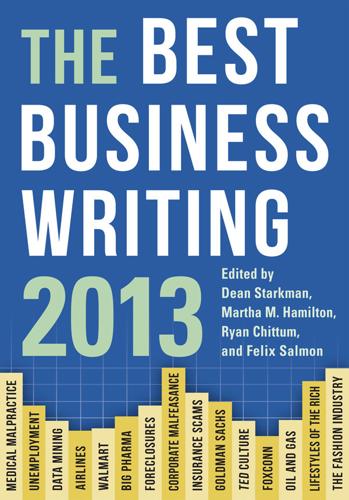
The Best Business Writing 2013
by
Dean Starkman
Published 1 Jan 2013
Eventually, Willow will ship out on huge spools, like movie reels, each holding up to 500 feet of glass. That is, once someone places an order. For now, rolls of glass sit on the Harrodsburg factory floor, a solution waiting for the right problem to arise. John Markoff 26. Skilled Work, Without the Worker New York Times The robots are coming for the last of the manufacturing jobs, as John Markoff writes in this fascinating look at the future of building things. This isn’t science fiction or futurism. It’s already happening, and it raises critical questions for society as a whole. At Tesla, the assembly-line workers have “a slightly menacing ‘Terminator’ quality” as the ten-foot-tall robots weld, rivet, and install parts.
…
Death Takes a Policy: How a Lawyer Exploited the Fine Print and Found Himself Facing Federal Charges Jake Bernstein ProPublica Part VIII. Brave New World 24. How Companies Learn Your Secrets Charles Duhigg New York Times Magazine 25. Glass Works: How Corning Created the Ultrathin, Ultrastrong Material of the Future Bryan Gardiner Wired 26. Skilled Work, Without the Worker John Markoff New York Times 27.I Was a Warehouse Wage Slave Mac McClelland Mother Jones 28. In China, Human Costs Are Built Into an iPad Charles Duhigg and David Barboza New York Times 29. How Apple and Amazon Security Flaws Led to My Epic Hacking Mat Honan Wired Permissions List of Contributors Introduction Dean Starkman Compiling the Best Business Writing series each year reliably brings the pleasures of the eclectic and unexpected.
…
The printing, copying, redistribution, or retransmission of this Content without express written permission is prohibited. www.nytimes.com. “Glass Works: How Corning Created the Ultrathin, Ultrastrong Material of the Future.” Copyright © 2012 Condé Nast. All Rights Reserved. Article by Bryan Gardiner originally published in Wired. Reprinted by permission “Skilled Work, Without the Worker,” by John Markoff, from the New York Times, August 19, 2012. © 2012 The New York Times. All rights reserved. Used by permission and protected by the Copyright Laws of the United States. The printing, copying, redistribution, or retransmission of this Content without express written permission is prohibited. www.nytimes.com.
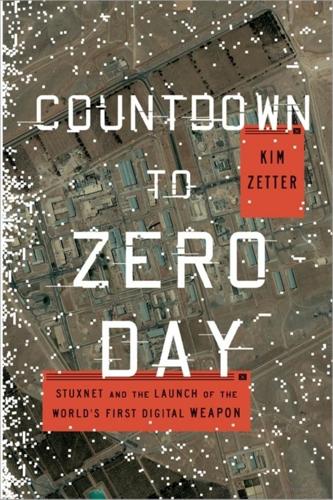
Countdown to Zero Day: Stuxnet and the Launch of the World's First Digital Weapon
by
Kim Zetter
Published 11 Nov 2014
But the June 2009 version of Stuxnet was unleashed June 22, and once it found itself on the right PLC, it took thirteen days for the sabotage to begin. So unless an earlier version of Stuxnet or something else caused an accident at Natanz, the timing didn’t match Aghazadeh’s resignation. 14 Author interview, September 2010. 15 John Markoff, “A Silent Attack, but Not a Subtle One,” New York Times, September 26, 2010. 16 Laurent Maillard, “Iran Denies Nuclear Plant Computers Hit by Worm,” Agence France-Presse, September 26, 2010, available at iranfocus.com/en/index.php?option=com_content&view=article&id=21820. 17 David E. Sanger, “Iran Fights Malware Attacking Computers,” New York Times, September 25, 2010. 18 Six months later, a report from the Iranian Passive Defense Organization, a military organization chaired by Revolutionary Guard General Gholam-Reza Jalali, which is responsible for defending Iran’s nuclear facilities, contradicted these statements.
…
A Washington Post story says the plan never came to fruition. “We went through the drill of figuring out how we would do some of these cyber things if we were to do them,” one senior military officer told the paper. “But we never went ahead with any.” Graham, “Military Grappling with Rules for Cyber.” 26 John Markoff and H. Sanker, “Halted ’03 Iraq Plan Illustrates US Fear of Cyberwar Risk,” New York Times, August 1, 2009. According to Richard Clarke, it was the secretary of treasury who vetoed it. See Richard Clarke and Robert Knake, Cyber War: The Next Threat to National Security and What to Do About It (New York: Ecco, 2010), 202–3.
…
See “How West Infiltrated Iran’s Nuclear Program, Ex-Top Nuclear Official Explains,” Iran’s View, March 28, 2014, www.iransview.com/west-infiltrated-irans-nuclear-program-ex-top-nuclear-official-explains/1451. 15 Yong and Worth, “Bombings Hit Atomic Experts in Iran Streets.” 16 Dagan was reportedly pushed out by Prime Minister Netanyahu and Defense Minister Ehud Barak because he opposed an air strike against Iran. 17 Yong and Worth, “Bombings Hit Atomic Experts in Iran Streets.” 18 William J. Broad, John Markoff, and David E. Sanger, “Israeli Test on Worm Called Crucial in Iran Nuclear Delay,” New York Times, January 15, 2011. 19 Ibid. CHAPTER 14 SON OF STUXNET As spring arrived in 2011, the story of Stuxnet seemed to be winding down. Symantec had resolved the mystery of the devices the digital weapon attacked, Albright had made the final connection between Stuxnet and the centrifuges at Natanz, and although the US government still hadn’t made a formal admission of responsibility for the attack, the New York Times had confirmed what everyone suspected—that the United States and Israel were behind it.

Army of None: Autonomous Weapons and the Future of War
by
Paul Scharre
Published 23 Apr 2018
Breaking Defense, March 11, 2016, http://breakingdefense.com/2016/03/navy-hits-gas-on-flying-gas-truck-cbars-will-it-be-armed/. 62 a range of only 67 nautical miles: 67 nautical miles equals 124 kilometers. 62 can fly up to 500 nautical miles: 500 nautical miles equals 930 kilometers. 63 three New York Times articles: John Markoff, “Fearing Bombs That Can Pick Whom to Kill,” New York Times, November 11, 2014, http://www.nytimes.com/2014/11/12/science/weapons-directed-by-robots-not-humans-raise-ethical-questions.html?_r=0. John Markoff, “Report Cites Dangers of Autonomous Weapons,” New York Times, February 26, 2016, http://www.nytimes.com/2016/02/29/technology/report-cites-dangers-of-autonomous-weapons.html. John Markoff, “Arms Control Groups Urge Human Control of Robot Weaponry,” New York Times, April 11, 2016, http://www.nytimes.com/2016/04/12/technology/arms-control-groups-urge-human-control-of-robot-weaponry.html. 63 “artificial intelligence outside human control”: Markoff, “Fearing Bombs That Can Pick Whom to Kill.” 63 “an autonomous weapons arms race”: Ibid. 63 “LRASM employed precision routing and guidance”: Lockheed Martin, “Long Range Anti-Ship Missile,” http://www.lockheedmartin.com/us/products/LRASM/overview.html (accessed on May 15, 2017). 63 Lockheed’s description of LRASM: Lockheed Martin, “Long Range Anti-Ship Missile,” as of October 20, 2014, https://web.archive.org/web/20141020231650/http://www.lockheedmartin.com/us/products/LRASM.html. 64 “The semi-autonomous guidance capability gets LRASM”: Lockheed Martin, “Long Range Anti-Ship Missile,” as of December 16, 2014, https://web.archive.org/web/20141216100706/http://www.lockheedmartin.com/us/products/LRASM.html. 64 video online that explains LRASM’s functionality: The video is no longer available on the Lockheed Martin website.
…
Kushner, imeopro.com/s42012/Stuxnet.t 214 Nearly 60 percent of Stuxnet infections: Falliere et al., “W32.Stuxnet Dossier,” 5–7. Kim Zetter, “An Unprecedented Look at Stuxnet, the World’s First Digital Weapon,” WIRED, November 3, 2014, https://www.wired.com/2014/11/countdown-to-zero-day-stuxnet/. 214 sharp decline in the number of centrifuges: John Markoff and David E. Sanger, “In a Computer Worm, a Possible Biblical Clue,” New York Times, September 24, 2010, http://www.nytimes.com/2010/09/30/world/middleeast/30worm.html. 214 Security specialists have further speculated: Ibid. Gross, “A Declaration of Cyber War.” 215 “While attackers could control Stuxnet”: Falliere et al., “W32.Stuxnet Dossier,” 3. 215 “collateral damage”: Ibid, 7. 215 spread via USB to only three other machines: Ibid, 10. 215 self-terminate date: Ibid, 18. 215 Some experts saw these features as further evidence: Gross, “A Declaration of Cyber War.” 215 “open-source weapon”: Patrick Clair, “Stuxnet: Anatomy of a Computer Virus,” video, 2011, https://vimeo.com/25118844. 215 blueprint for cyber-weapons to come: Josh Homan, Sean McBride, and Rob Caldwell, “IRONGATE ICS Malware: Nothing to See Here . . .
…
Horvitz, “Viewpoint Rise of Concerns about AI: Reflections and Directions,” Communications of the ACM 58, no. 10 (October 2015): 38–40, http://web.engr.oregonstate.edu/~tgd/publications/dietterich-horvitz-rise-of-concerns-about-ai-reflections-and-directions-CACM_Oct_2015-VP.pdf. 243 “The increasing abilities of AI”: Tom Dietterich, interview, April 27, 2016. 244 “robust to adversarial attack”: Ibid. 244 “The human should be taking the actions”: Ibid. 244 “The whole goal in military doctrine”: Ibid. 245 AGI as “dangerous”: Bob Work, interview, June 22, 2016. 245 more Iron Man than Terminator: Sydney J. Freedburg Jr., “Iron Man, Not Terminator: The Pentagon’s Sci-Fi Inspirations,” Breaking Defense, May 3, 2016, http://breakingdefense.com/2016/05/iron-man-not-terminator-the-pentagons-sci-fi-inspirations/. Matthew Rosenberg and John Markoff, “The Pentagon’s ‘Terminator Conundrum’: Robots That Could Kill on Their Own,” New York Times, October 25, 2016, https://www.nytimes.com/2016/10/26/us/pentagon-artificial-intelligence-terminator.html. 245 “impose obligations on persons”: Office of General Counsel, Department of Defense, “Department of Defense Law of War Manual,” June 2015, https://www.defense.gov/Portals/1/Documents/law_war_manual15.pdf, 330. 245 ”the ultimate goal of AI”: “The ultimate goal of AI (which we are very far from achieving) is to build a person, or, more humbly, an animal.”

Coders: The Making of a New Tribe and the Remaking of the World
by
Clive Thompson
Published 26 Mar 2019
or a missile: Dan Froomkin, “Deciphering Encryption,” Washington Post, May 8, 1998, accessed August 19, 2018, https://www.washingtonpost.com/wp-srv/politics/special/encryption/encryption.htm. First Amendment rights: John Markoff, “Judge Rules against U.S. in Encryption Case,” New York Times, December 19, 1996, https://www.nytimes.com/1996/12/19/business/judge-rules-against-us-in-encryption-case.html; “Bernstein v. US Department of Justice,” Electronic Frontier Foundation, accessed August 19, 2018, https://www.eff.org/cases/bernstein-v-us-dept-justice. without explaining why: John Markoff, “Data-Secrecy Export Case Dropped by U.S.,” New York Times, January 12, 1996, accessed October 3, 2018, https://www.nytimes.com/1996/01/12/business/data-secrecy-export-case-dropped-by-us.html.
…
Light, “When Computers Were Women,” Technology and Culture 40, no. 3 (July 1999): 455–83. hired back both times: Charles E. Molnar and Wesley A. Clark, “Development of the LINC,” in A History of Medical Informatics, eds. Bruce I. Blum and Karen A. Duncan (New York: ACM Press, 1990), 119–38. or laboratory room: John Markoff, “Wesley A. Clark, Who Designed First Personal Computer, Dies at 88,” New York Times, February 27, 2016, accessed August 16, 2018, https://www.nytimes.com/2016/02/28/business/wesley-a-clark-made-computing-personal-dies-at-88.html. “conversational access” to the LINC: Mary Allen Wilkes, “Conversational Access to a 2048-Word Machine,” Communications of the ACM 13, no. 7 (July 1970): 407–14.
…
when the NSA itself was hacked: Lily Hay Newman, “The Leaked NSA Spy Tool That Hacked the World,” Wired, May 7, 2018, accessed August 19, 2018, https://www.wired.com/story/eternalblue-leaked-nsa-spy-tool-hacked-world. CHAPTER 9: CUCUMBERS, SKYNET, AND RISE OF THE AI AlphaGo dominated, 4 to 1: John Markoff, “Alphabet Program Beats the European Human Go Champion,” New York Times, January 27, 2016, accessed August 19, 2018, https://bits.blogs.nytimes.com/2016/01/27/alphabet-program-beats-the-european-human-go-champion; Bloomberg News, “How You Beat One of the Best Go Players in the World? Use Google,” Washington Post, March 14, 2016, accessed August 19, 2018, https://www.washingtonpost.com/national/health-science/how-you-beat-one-of-the-best-go-players-in-the-world-use-google/2016/03/14/1efd1176-e6fc-11e5-b0fd-073d5930a7b7_story.html.
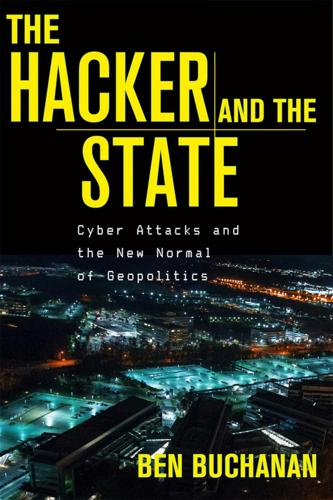
The Hacker and the State: Cyber Attacks and the New Normal of Geopolitics
by
Ben Buchanan
Published 25 Feb 2020
For a much more detailed technical discussion of Fanny and related pieces of malicious code, see Kaspersky Lab, “A Fanny Equation”; Kaspersky Lab, “Equation: The Death Star of Malware Galaxy,” February 16, 2015; Kaspersky Lab, “Equation Group: Questions and Answers,” February 2015. 9. For the first reporting of this test, see William Broad, John Markoff, and David Sanger, “Israeli Test on Worm Called Crucial in Iran Nuclear Delay,” New York Times, January 15, 2011. 10. Sanger, Confront and Conceal, 197. 11. For the first reporting of this order, see Sanger, Confront and Conceal, ch. 8. 12. For a good discussion of this propagation, see Zetter, Countdown to Zero Day, 91.
…
As part of his response, that analyst referenced a conversation with the State Department’s special envoy for North Korean human rights issues, saying the envoy was not particularly worried about the threat because it sounded like “typical North Korean bullying.” Seal, “An Exclusive Look at Sony’s Hacking Saga.” 5. Seth Rogen (@Sethrogen), tweet, June 25, 2014, 10:48 AM. 6. Sanger, The Perfect Weapon, 129. 7. For contemporaneous coverage of two previous North Korean cyber operations, see Choe Sang-Hun and John Markoff, “Cyberattacks Jam Government and Commercial Web Sites in U.S. And South Korea,” New York Times, July 8, 2009; and Choe Sang-Hun, “Computer Networks in South Korea Are Paralyzed in Cyberattacks,” New York Times, March 20, 2013. For technical analysis, see Sergei Shevchenko, “Two Bytes to $951m,” BAE Systems Threat Research Blog, April 25, 2016; Kate Kochetkova, “What Is Known About the Lazarus Group: Sony Hack, Military Espionage, Attacks on Korean Banks and Other Crimes,” Kaspersky Daily, February 24, 2016; “Operation Blockbuster,” Novetta, 2016. 8.
…
“The World Factbook: Korea, North,” Central Intelligence Agency, continually updated at https://www.cia.gov/library/publications/the-world-factbook/geos/kn.html, accessed September 15, 2017. See also Michelle Nichols, “North Korea Took $2 Billion in Cyberattacks to Fund Weapons Program: U.N. Report,” Reuters, August 5, 2019. 8. John Markoff and Thom Shanker, “Halted ’03 Iraq Plan Illustrates U.S. Fear of Cyberwar Risk,” New York Times, August 1, 2009. 9. Richard A. Clarke, Michael J. Morell, Geoffrey R. Stone, Cass R. Sunstein, and Peter Swire, “Liberty and Security in a Changing World,” President’s Review Group on Intelligence and Communications Technologies, report, December 12, 2013, 221. 10.

Habeas Data: Privacy vs. The Rise of Surveillance Tech
by
Cyrus Farivar
Published 7 May 2018
Available at: https://books.google.com/books?id=-_HA2pUErI8C&pg=PT94&dq=%22rsa+mailsafe%22&hl=en&sa=X&ved=0ahUKEwjDrPHLhMPUAhWV8oMKHdVwBhoQ6AEIMTAC#v=onepage&q=%22rsa%20mailsafe%22&f=false. Around that same time, Phil Zimmerman: Steven Levy, Crypto (Penguin Books, 2002), p. 191. Pretty Good Privacy: John Markoff, “Move on Unscrambling Of Messages Is Assailed,” The New York Times, April 17, 1991. Available at: http://www.nytimes.com/1991/04/17/business/move-on-unscrambling-of-messages-is-assailed.html. “to obtain the plaintext contents”: Joseph Biden, “All Information (Except Text) for S.266 - Comprehensive Counter-Terrorism Act of 1991,” January 24, 1991. https://www.congress.gov/bill/102nd-congress/senate-bill/266/all-info.
…
“to obtain the plaintext contents”: Joseph Biden, “All Information (Except Text) for S.266 - Comprehensive Counter-Terrorism Act of 1991,” January 24, 1991. https://www.congress.gov/bill/102nd-congress/senate-bill/266/all-info. This notion ended up becoming: Office of the Press Secretary, “Statement by the Press Secretary,” April 16, 1993. Available at: http://cd.textfiles.com/hackersencyc/PC/CRYPTO/CLIPPER.TXT. Clipper chip would not: John Markoff, “Big Brother and the Computer Age,” The New York Times, May 6, 1993. Available at: http://www.nytimes.com/1993/05/06/business/big-brother-and-the-computer-age.html. Many of them—notably FBI: Levy, p. 245. In 1995, Kallstrom: James C. McKinley, Jr., “Wiretap Expert Named to Head New York City Office of F.B.I.,” The New York Times, February 17, 1995.
…
Berman, Executive Director Electronic Frontier Foundation before the Committee on Science, Space and Technology Subcommittee on Technology, Environment and Aviation U.S. House of Representatives Hearing on Communications and Computer Surveillance, Privacy and Security, May 3, 1993. Available at: https://totseans.com/totse/en/zines/cud_a/cud644.html. Not a month later, a young AT&T: John Markoff, “Flaw Discovered in Plan for Federal Wiretapping,” The New York Times, June 2, 1994. Available at: http://www.nytimes.com/1994/06/02/us/flaw-discovered-in-federal-plan-for-wiretapping.html. one of Clipper chip’s critical flaws: Matt Blaze’s Clipper attack—details, sci. crypt, May 3, 1994.
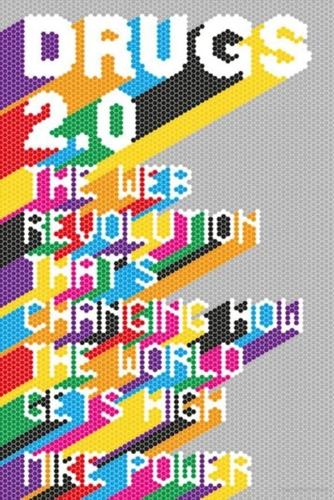
Drugs 2.0: The Web Revolution That's Changing How the World Gets High
by
Mike Power
Published 1 May 2013
His dream was a future where workers would sit at personal computers connecting and collaborating. At the same time as many social hierarchies were being challenged, the technical architectures and hardware that would become the internet were taking shape. The links between the 1960s Californian freak scene and the pioneering days of early personal computing are chronicled in John Markoff’s 2005 book What the Dormouse Said: How the Sixties Counterculture Shaped the Personal Computer Industry (even the book’s title is taken from a hoary old Jefferson Airplane track). In it, Markoff revealed that the world’s first online transaction was a drug deal: ‘In 1971 or 1972, Stanford students using Arpanet accounts at SAIL engaged in a commercial transaction with their counterparts at MIT.
…
Shulgin’s influence and experience bridges the gaps between the early 1950s intellectual explorers and psychiatric treatment pioneers, the 1960s hippy counterculture, 1970s and 1980s underground psychiatry, the 1980s explosion of Ecstasy as a recreational drug, the early internet drug scene of the 1990s and early 2000s – right into the chaotic twenty-first-century situation. What was to complicate the picture was a development that, on reflection, was entirely predictable. As the twentieth century ended, the web wasn’t just a place where you could talk about drugs – it was about to become a place where you could buy them. Notes 1. John Markoff, What the Dormouse Said: How the Sixties Counterculture Shaped the Personal Computer Industry (Penguin, 2005), p. 109 2. Mylon Stolaroff, Thanatos to Eros: 35 Years of Psychedelic Exploration: Ethnomedicine and the Study of Consciousness (Thaneros Pr, 1994) 3. http://kk.org/ct2/2008/09/the-whole-earth-blogalog.php 4.
…
The Face, August 1990; http://testpressing.org/2010/07/the-face-europe-a-ravers-guide-august-1990/ 18. www.ons.gov.uk/ons/rel/subnational-health3/deaths-related-to-drug-poisoning/2010/stb-deaths-related-to-drug-poisoning-2010.html 19. Simon Reynolds, Rip it Up and Start Again: Postpunk 1978–1984 (Faber and Faber, 2006), p. xvi Notes 1. John Markoff, What the Dormouse Said: How the Sixties Counterculture Shaped the Personal Computer Industry (Penguin, 2005), p. 109 2. Mylon Stolaroff, Thanatos to Eros: 35 Years of Psychedelic Exploration: Ethnomedicine and the Study of Consciousness (Thaneros Pr, 1994) 3. http://kk.org/ct2/2008/09/the-whole-earth-blogalog.php 4.
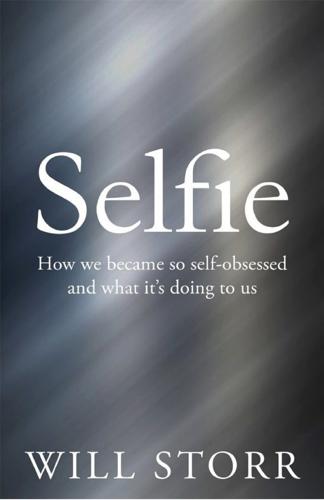
Selfie: How We Became So Self-Obsessed and What It's Doing to Us
by
Will Storr
Published 14 Jun 2017
A video of Engelbart’s presentation is widely available online. The account I’ve given in the text has been lightly edited for sense and concision. audience considered Engelbart a ‘crackpot’: ‘The Mother of All Demos – 150 years ahead of its time’, Cade Metz, Register, 11 December 2008. John Markoff has called ‘a complete vision of the information age’: What the Dormouse Said, John Markoff (Penguin, 2005), p. 9. In 1968, the year of the demo, the Institute’s co-founder Michael Murphy had written: ‘Esalen: Where Man Confronts Himself’, Michael Murphy, Stanford Alumni Almanac, May 1968. with one 1985 Esquire story reporting ‘scientists’: ‘Encounters at the Mind’s Edge’, George Leonard, Esquire, June 1985.
…
He spent that night preoccupied with finding a new project to aim his life at. He knew he wanted to change the world. But how? Could he invent something that would help humans cope better with the dizzying complexity of the future? It all came to him, then, in a torrent of fabulous insight that Silicon Valley historian John Markoff has called ‘a complete vision of the information age’. In his vision, he saw a man sitting at a screen that was attached to a computer and there were characters on the screen and the computer would be a kind of portal to all the information you’d need to do your work, and it would be wired to other computers, so you could communicate with each other, and your computer would work for you, organizing and aiding your working life.
…
It doesn’t necessarily follow that because she’s influential, she’d automatically agree with the ideas and works of all the people she’s influenced. In fact, as we’re talking about Rand, this seems staggeringly unlikely. Book Six: The Digital Self A man, Doug Engelbart, appearing in a headset: My account of the story of Doug Engelbart, ARC, EST and Stewart Brand was mostly sourced from: What the Dormouse Said, John Markoff (Penguin, 2005); From Counterculture to Cyberculture, Fred Turner (University of Chicago Press, 2006); The Network Revolution, Jacques Vallee (Penguin, 1982); Bootstrapping, Thierry Bardini (Stanford University Press, 2000); ‘Chronicle of the Death of a Laboratory: Douglas Engelbart and the Failure of the Knowledge Workshop’, Thierry Bardini and Michael Friedewald, History of Technology (2003), 23, pp. 191–212; ‘Douglas Engelbart’s lasting legacy’, Tia O’Brien, Mercury News, 3 March 2013.

Crypto: How the Code Rebels Beat the Government Saving Privacy in the Digital Age
by
Steven Levy
Published 15 Jan 2002
Now all Blaze had to do was get an okay from his employer—who had millions of dollars riding on its Clipper phones. Though there were some who wanted to bury the paper, eventually Blaze managed to convince his bosses that it would be impossible to keep his findings secret, so they shouldn’t even try. In any case, John Markoff of the New York Times had already gotten wind of the work. Blaze got permission to send him a draft, so that whatever story ran would be accurate. Markoff called back for some clarification and a few hours later called back again and asked Blaze a strange question: how newsworthy did he consider the story?
…
Blakley are generally granted shared credit for the innovation. 166 Mafia-owned store A. Shamir, lecture at Securicom ’89, quoted in Schneier’s Applied Cryptography, p. 92. 166 Landau “Zero Knowledge and the Department of Defense,” Notices of the American Mathematical Society (Special Article Series), Vol. 35, No. 1 (1988), pp. 5–12. 166 Merkle John Markoff, “Paper on Codes Is Sent Despite U.S. Objections,” New York Times, August 9, 1989. 177 NIST, “A Proposed Federal Information Processing Standard for the Digital Signature Standard (DSS),” Federal Register, Vo. 56, August 1991, p. 169. 178 white flag NIST memo, “Twenty-third Meeting of the NIST/NSA Technical Working Group,” March 18, 1991. 179 the wrong agency Diffie, Privacy on the Line, p. 74. 181 “What crypto policy” Rivest’s remarks were made at the 1992 Computers, Freedom, and Privacy Conference. 182 National Security Decision Directive Background on NSDD 145 can be found in Diffie’s Privacy on the Line, Schneier and Banisar’s The Electronic Privacy Papers, and Tom Athanasiou, “Encryption: Technology, Privacy, and National Security,” Technology Review, August–September 1986. 183 orchestrated Clinton Brooks, Memo, April 28, 1992. 183 Memorandum of Understanding The MOU between the directors of NIST and the NSA “concerning the implementation of Public Law 100-235” is reprinted in Schneier and Banisar’s The Electronic Privacy Papers, pp. 401–4. 183 General Accounting Office “Communications Privacy: Federal Policy and Actions,” GAO/OSI-92-2-3 (November 1993). 184 hearings U.S.
…
Davis, “Use of Clipper Chip in AT&T TSD 3600 During Phase of Production,” memo to Sessions, December 23, 1992. 240 Encryption, Law Enforcement Briefing document sent to Tenet, February 19, 1993. 244 slide show “Telecommunications Overview” prepared by the FBI’s Advanced Telephony Unit. 248 Barlow “Jackboots on the Infobahn,” reprinted in Ludlow’s High Noon on the Electronic Frontier, pp. 207–13. 249 Denning See Steven Levy, “Clipper Chick,” Wired, September 1996. 249 Pilgrim maiden Sterling, The Hacker Crackdown, p. 299. 249 important step “Statement by the Press Secretary,” The White House, April 16, 1993. 250 Times article John Markoff, “New Communication System Stirs Talk of Privacy vs. Eavesdropping,” April 16, 1993. 252 It’s not America Steven Levy, “Uncle Sam.” 252 Safire “Sink the Clipper,” New York Times, February 4, 1994. 253 lion’s den Baker’s speech was adapted as “Don’t Worry Be Happy: Why Clipper Is Good for You,” in Wired, June 1994. 253 Skipjack E.
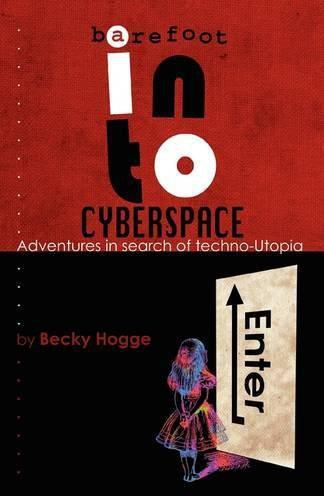
Barefoot Into Cyberspace: Adventures in Search of Techno-Utopia
by
Becky Hogge
,
Damien Morris
and
Christopher Scally
Published 26 Jul 2011
The essay was republished, in an abridged form, a month after the atom bomb dropped. It is widely interpreted as sketching a path for new collaborations of scientists from different disciplines in peacetime. But it is most notable for the general-purpose information storage and retrieval machine it proposes, the “memex”. According to John Markoff, author of What the Dormouse Said: How the Sixties Counter-culture Shaped the Personal Computer Industry, at around about the time America’s atom bomb destroyed the city of Hiroshima – killing 80,000 of its residents, maiming tens of thousands more, and ending Japan’s involvement in World War II – Doug Engelbart was sailing out of San Francisco harbour on his way to do his military service in the Philippines.
…
But outside of Chaos, your average 21st-century computer user will be more familiar with the computer components that Doug Engelbart troubled himself over than with anything Vannevar Bush wrote about. Ask a child to draw a computer and he will draw a keyboard, screen, mouse and – possibly – a box sitting next to it. Yet the box is the computer – the rest of it is just input and output devices. Engelbart was not an acid head, but according to John Markoff he, like Brand, had taken part in the IFAS experiments, with mixed results. His first dose of LSD left the reclusive engineer catatonic. In a later experiment, a weaker, second dose was administered before participants, including Engelbart, were asked to work on a selection of engineering problems.

Rule of the Robots: How Artificial Intelligence Will Transform Everything
by
Martin Ford
Published 13 Sep 2021
This “scaling” strategy has been explicit since the 2012 ImageNet competition that set off the deep learning revolution. In November of that year, a front-page New York Times article was instrumental in bringing awareness of deep learning technology to the broader public sphere. The article, written by reporter John Markoff, ends with a quote from Geoff Hinton: “The point about this approach is that it scales beautifully. Basically you just need to keep making it bigger and faster, and it will get better. There’s no looking back now.”9 There is increasing evidence, however, that this primary engine of progress is beginning to sputter out.
…
Ford, Interview with Geoffrey Hinton, in Architects of Intelligence, p. 77. 14. Email from Jürgen Schmidhuber to Martin Ford, January 28, 2019. 15. Jürgen Schmidhuber, “Critique of paper by ‘Deep Learning Conspiracy’ (Nature 521 p 436),” June 2015, people.idsia.ch/~juergen/deep-learning-conspiracy.html. 16. John Markoff, “When A.I. matures, it may call Jürgen Schmidhuber ‘Dad,’” New York Times, November 27, 2016, www.nytimes.com/2016/11/27/technology/artificial-intelligence-pioneer-jurgen-schmidhuber-overlooked.html. 17. Robert Triggs, “What being an ‘AI first’ company means for Google,” Android Authority, November 8, 2017, www.androidauthority.com/google-ai-first-812335/. 18.
…
David Silver and Demis Hassabis, “AlphaGo: Mastering the ancient game of Go with machine learning,” Google AI Blog, January 27, 2016, ai.googleblog.com/2016/01/alphago-mastering-ancient-game-of-go.html. 8. Matt Schiavenza, “China’s ‘Sputnik Moment’ and the Sino-American battle for AI supremacy,” Asia Society Blog, September 25, 2018, asiasociety.org/blog/asia/chinas-sputnik-moment-and-sino-american-battle-ai-supremacy. 9. John Markoff, “Scientists see promise in deep-learning programs,” New York Times, November 23, 2012, www.nytimes.com/2012/11/24/science/scientists-see-advances-in-deep-learning-a-part-of-artificial-intelligence.html. 10. Dario Amodei and Danny Hernandez, “AI and Compute,” OpenAI Blog, May 16, 2018, openai.com/blog/ai-and-compute/. 11.
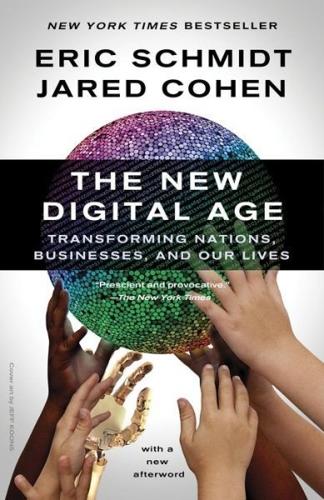
The New Digital Age: Transforming Nations, Businesses, and Our Lives
by
Eric Schmidt
and
Jared Cohen
Published 22 Apr 2013
NATO and European Commission experts were unable to find evidence: “Estonia Has No Evidence of Kremlin Involvement in Cyber Attacks,” RIA Novosti (Moscow), June 9, 2007, http://en.rian.ru/world/20070906/76959190.html. websites for the Georgian military and government were brought down: John Markoff, “Georgia Takes a Beating in the Cyberwar with Russia,” Bits (blog), New York Times, August 11, 2008, http://bits.blogs.nytimes.com/2008/08/11/georgia-takes-a-beating-in-the-cyberwar-with-russia/; John Markoff, “Before the Gunfire, Cyberattacks,” New York Times, August 12, 2008, http://www.nytimes.com/2008/08/13/technology/13cyber.html. Russian hackers targeted the Internet providers in Kyrgyzstan: Gregg Keizer, “Russian ‘Cybermilitia’ Knocks Kyrgyzstan Offline,” Computerworld, January 28, 2009, http://www.computerworld.com/s/article/9126947/Russian_cybermilitia_knocks_Kyrgyzstan_offline.
…
DDoS attacks crippled major government websites: Kim Zetter, “Lawmaker Wants ‘Show of Force’ Against North Korea for Website Attacks,” Wired, July 10, 2009, http://www.wired.com/threatlevel/2009/07/show-of-force/. suggested that the network of attacking computers, or botnet, began in North Korea: Choe Sang-Hun and John Markoff, “Cyberattacks Jam Government and Commercial Web Sites in U.S. and South Korea,” New York Times, July 9, 2009, http://www.nytimes.com/2009/07/10/technology/10cyber.html?_r=1; Associated Press (AP), “U.S. Officials Eye N. Korea in Cyberattack,” USA Today, July 9, 2009, http://usatoday30.usatoday.com/news/washington/2009-07-08-hacking-washington-nkorea_N.htm.
…
mobile-phone service was also suspended: Associated Press (AP), “Vodafone: Egypt Ordered Cell Phone Service Stopped,” Huffington Post, January 28, 2011, http://www.huffingtonpost.com/2011/01/28/vodafone-egypt-service-dropped_n_815493.html. Vodafone Egypt, issued a statement that morning: “Statements—Vodafone Egypt,” Vodafone, see January 28, 2011, http://www.vodafone.com/content/index/media/press_statements/statement_on_egypt.html. fiber-optic cables housed in one building in Cairo: James Glanz and John Markoff, “Egypt Leaders Found ‘Off’ Switch for Internet,” New York Times, February 15, 2011, http://www.nytimes.com/2011/02/16/technology/16internet.html?pagewanted=all&_r=0. through its state-owned company Telecom Egypt, physically cut their service: Ibid. It was a move unprecedented in recent history: Parmy Olson, “Egypt Goes Dark, Cuts Off Internet and Mobile Networks,” Forbes, January 28, 2011, http://www.forbes.com/sites/parmyolson/2011/01/28/egypt-goes-dark/.

Bold: How to Go Big, Create Wealth and Impact the World
by
Peter H. Diamandis
and
Steven Kotler
Published 3 Feb 2015
,” International Trade Administration, October 2010, http://trade.gov/publications/ita-newsletter/1010/services-sector-how-best-to-measure-it.asp. 31 AI with Jeremy Howard, 2013. 32 For information on the German Traffic Sign Recognition Benchmark see http://benchmark.ini.rub.de. 33 Geoffrey Hinton et al., “ImageNet Classification with Deep Convolutional Neural Networks,” http://www.cs.toronto.edu/~fritz/absps/imagenet.pdf. 34 John Markoff, “Armies of Expensive Lawyers, Replaced By Cheaper Software,” New York Times, March 4, 2011, http://www.nytimes.com/2011/03/05/science/05legal.html?pagewanted=all. 35 David Schatsky and Vikram Mahidhar, “Intelligent automation: A new era of innovation,” Deloitte University Press, January 22, 2014, http://dupress.com/articles/intelligent-automation-a-new-era-of-innovation/. 36 John Markoff, “Computer Wins on ‘Jeopardy!’: Trivial, It’s Not,” New York Times, February 16, 2011, http://www.nytimes.com/2011/02/17/science/17jeopardy-watson.html?
…
For again the algorithms outperformed people.33 Similar progress is showing up in reading. Today, there are AIs that can accurately and consistently decipher everything from high school student essays to complicated tax forms far faster than humans. Take legal documents, a linguistic quagmire if ever there was one. Yet, as John Markoff wrote in a 2011 article for the New York Times:34 “Thanks to advances in artificial intelligence, ‘e-discovery’ software can analyze documents in a fraction of the time for a fraction of the cost. . . . Some programs go beyond just finding documents with relevant terms at computer speeds. They can extract relevant concepts—like documents relevant to social protest in the Middle East—even in the absence of specific terms, and deduce patterns of behavior that would have eluded lawyers examining millions of documents.”
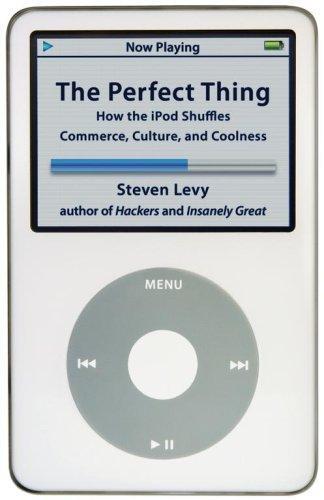
The Perfect Thing: How the iPod Shuffles Commerce, Culture, and Coolness
by
Steven Levy
Published 23 Oct 2006
An addendum by Bill Kincaid (www.panic.com/extras/audionstory/ popup-sjstory.html) describes the origin of Soundjam. 54 Anthony Michael Fadell: Tony Fadell's now-dark Web site provided background, as did Pamela Kruger and Katherine Miezknowski, "Stop the Fight," Fast Company, September 1998; Stephen Roskoff, "U-M Students: They're Bullish on Business," Michigan Alumnus, November-December 1989; and John Markoff, "Oh, Yeah, He Also Sells Computers," The New York Times, April 25,2004. 64 PortalPlayer, Pixo: Besides personal interviews, my account of the iPod's outside suppliers drew on Erik Sherman, "Inside the Apple iPod Design Triumph," Electronics Design Chain, Summer 2002; Mathew Yi, Notes "Little Known Startup Was Behind iPod's Easy-to-use Interface," San Francisco Chronicle, August 16,2004; and John H.
…
Notes 201 Mac team: I addressed the dynamics of Jobs and the Mac team in Insanely Great: The Story of Macintosh, the Computer that Changed Everything (New York: Viking, 1994). 214 "Style is nice": Colleen Ryan was interviewed by my Newsweek colleague Brad Stone. 216 Sony: In addition to several personal interviews with Howard Stringer and other Sony executives, my discussion of Sony was informed by Phred Dvorak, "At Sony, Rivalries Were Encouraged; Then Came iPod," The Wall Street Journal, June 29, 2005; and Frank Rose, "The Civil War Inside Sony," Wired, February 2003. 218 Neistat: My researcher Jodi Mardesch interviewed the Neistat brothers. You can view the movie on the Neistat Web site http://www.ipods dirtysecret.com. 221 The iPod Economy: Damon Darlin, "Add-ons Have Become a Billion-Dollar Bonanza," The New York Times, February 3,2006. 226 "Michael Dell wasn't perfect at predicting the future": John Markoff, "Michael Dell Should Eat His Words, Apple Chief Suggests," The New York Times, January 16,2006. Podcast 230 iPod-based tour commentaries: Hannah Karp, "Hearing the Sights," The Wall Street Journal, April 21,2006. 231 ShasPod: My researcher Jodi Mardesch interviewed Shmidman. I also consulted Alex Mindlin, "2000 Talmud Tapes, or One Loaded iPod," The New York Times, March 17,2005. 238 Think Secret: Tom McNichol, "Think Belligerent," Wired, May 2005. 240 "Podcasting will shift": Doc Searls, "DIY Radio with Podcasting," Doc Searls'IT Garage, September 28,2004.
…
Victoria Wright did her usual terrific job of transcribing tapes (and this time, MP3 files). Kevin McCarthy and J. Gabriel Boylan painstakingly fact-checked the manuscript. Brooke Hammerling and Julie Panebianco helped with music industry connections. Thanks also to J. J. Jacobi, Carl Malamud, Bruce Schneier, and John MarkofF. My agent. Flip Brophy, not only supplied the usual good advice but the perfect place to work during crunch time. (Thanks also to everyone at Sterling Lord Literistic.) I'm happy that David Rosenthal of Simon & Schuster finally bought one of my books, and happier still to be edited by Bob Bender, who even kept his cool when I told him my idea about shuffling the book.
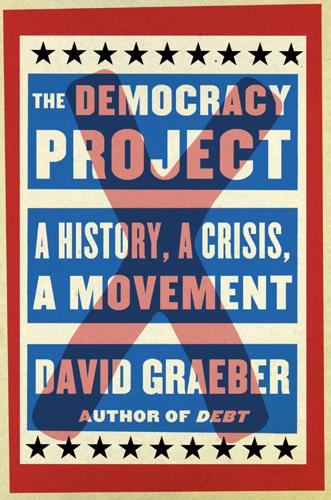
The Democracy Project: A History, a Crisis, a Movement
by
David Graeber
Published 13 Aug 2012
If we want to explore the origins of those democratic sensibilities that caused ordinary New Yorkers to feel sympathetic to the idea of democratic rule in the first place, or even to find where people actually had direct, hands-on experience in collective decision making that might have influenced their sense of what democracy might actually be like, we not only have to look beyond the sitting rooms of the educated gentry. In fact, we soon find ourselves in places that might seem, at first, genuinely startling. In 1999, one of the leading contemporary historians of European democracy, John Markoff, published an essay called “Where and When Was Democracy Invented?” In it there appears the following passage: That leadership could derive from the consent of the led, rather than be bestowed by higher authority, would have been a likely experience of the crews of pirate vessels in the early modern Atlantic world.
…
Bernard Manin, The Principles of Representative Government (Cambridge: The Cambridge University Press, 1992), p. 38. In ancient Greece, for instance, democracies tended to choose holders of executive positions by lot, from among a pool of volunteers, while election was considered the oligarchic approach. 8. See John Markoff, “Where and When Was Democracy Invented?,” Comparative Studies in Society and History 41, no.4 (1991): 663–65. 9. Gouverneur Morris to [John] Penn, May 20, 1774, in Jared Sparks, The Life of Gouverneur Morris: With Selections from His Correspondence and Miscellaneous Papers: Detailing Events in the American Revolution, the French Revolution, and in the Political History of the United States (Boston: Grey & Bowen, 1830), p. 25. 10.
…
Jennifer Tolbert Roberts, Athens on Trial (Princeton: Princeton University Press, 1994), p. 183. 14. Benjamin Rush, Medical Inquiries and Observations, vol. 1 (Philadelphia: J. Conrad, 1805), pp. 292–93. 15. Francis Dupuis-Déri, “History of the Word ‘Democracy’ in Canada and Québec: A Political Analysis of Rhetorical Strategies,” World Political Science Review, 6, no. 1 (2010): 3–4. 16. John Markoff, “Where and When Was Democracy Invented?,” Comparative Studies in Society and History, no. 41 (1999): 673. 17. As reconstructed by Marcus Rediker in Villains of All Nations: Atlantic Pirates in the Golden Age (Boston: Beacon Press, 2004). 18. Ibid., p. 53. 19. Colin Calloway, New Worlds for All (Baltimore: Johns Hopkins University Press, 1997).

The Second Machine Age: Work, Progress, and Prosperity in a Time of Brilliant Technologies
by
Erik Brynjolfsson
and
Andrew McAfee
Published 20 Jan 2014
Joseph Hooper, “DARPA’s Debacle in the Desert,” Popular Science, June 4, 2004, http://www.popsci.com/scitech/article/2004-06/darpa-grand-challenge-2004darpas-debacle-desert. 4. Mary Beth Griggs, “4 Questions About Google’s Self-Driving Car Crash,” Popular Mechanics, August 11, 2011, http://www.popularmechanics.com/cars/news/indus try/4-questions-about-googles-self-driving-car-crash; John Markoff, “Google Cars Drive Themselves, in Traffic,” New York Times, October 9, 2010, http://www.nytimes.com/2010/10/10/science/10google.html. 5. Ernest Hemingway, The Sun Also Rises (New York: HarperCollins, 2012), p. 72. 6. Levy and Murnane, The New Division of Labor, p. 29. 7. “Siri Is Actually Incredibly Useful Now,” Gizmodo, accessed August 4, 2013, http://gizmodo.com/5917461/siri-is-better-now. 8.
…
Ning Xiang and Rendell Torres, “Architectural Acoustics and Signal Processing in Acoustics: Topical Meeting on Spatial and Binaural Evaluation of Performing Arts Spaces I: Measurement Techniques and Binaural and Interaural Modeling,” 2004, http://scita tion.aip.org/getpdf/servlet/GetPDFServlet?filetype=pdf&id=JASMAN000116000004. 11. As quoted in John Markoff, “Armies of Expensive Lawyers, Replaced by Cheaper Software,” New York Times, March 4, 2011, http://www.nytimes.com/2011/03/05/science/05legal.html?pagewanted=all&_r=0. 12. “Spring Cleaning for Some of Our APIs,” The Official Google Code Blog, June 3, 2011, http://googlecode.blogspot.com/2011/05/spring-cleaning-for-some-of-our-apis.html. 13.
…
“Predicting Liability for Injury from Car Accidents,” Kaggle, 2013, http://www.kaggle.com/solutions/casestudies/allstate. 25. “Carlsberg Brewery Harnesses Design Innovation Using Affinnova,” Affinnova, http://www.affinnova.com/success-story/carlsberg-breweries/ (accessed August 6, 2013). Chapter 6 ARTIFICIAL AND HUMAN INTELLIGENCE IN THE SECOND MACHINE AGE 1. John Markoff, “Israeli Start-Up Gives Visually Impaired a Way to Read,” New York Times, June 3, 2013, http://www.nytimes.com/2013/06/04/science/israeli-start-up-gives-visually-impaired-a-way-to-read.html. 2. “Press Announcements – FDA Approves First Retinal Implant for Adults with Rare Genetic Eye Disease,” WebContent, February 14, 2013, http://www.fda.gov/NewsEvents/Newsroom/PressAnnouncements/ucm339824.htm. 3.

AI Superpowers: China, Silicon Valley, and the New World Order
by
Kai-Fu Lee
Published 14 Sep 2018
first software program: Kai-Fu Lee and Sanjoy Mahajan, “The Development of a World Class Othello Program,” Artificial Intelligence 43, no. 1 (April 1990): 21–36. to create Sphinx: Kai-Fu Lee, “On Large-Vocabulary Speaker-Independent Continuous Speech Recognition,” Speech Communication 7, no. 4 (December 1988): 375–379. profile in the New York Times: John Markoff, “Talking to Machines: Progress Is Speeded,” New York Times, July 6, 1988, https://www.nytimes.com/1988/07/06/business/business-technology-talking-to-machines-progress-is-speeded.html?mcubz=1. demolished the competition: ImageNet Large Scale Visual Recognition Challenge 2012, Full Results, http://image-net.org/challenges/LSVRC/2012/results.html.
…
“free is not a business model”: “Ebay Lectures Taobao That Free Is Not a Business Model,” South China Morning Post, October 21, 2005, http://www.scmp.com/node/521384. his autobiography, Disruptor: 周鸿祎, “颠覆者” (北京: 北京联合出版公司, 2017). Sinovation event in Menlo Park: Dr. Andrew Ng, Dr. Sebastian Thrun, and Dr. Kai-Fu Lee, “The Future of AI,” moderated by John Markoff, Sinovation Ventures, Menlo Park, CA, June 10, 2017, http://us.sinovationventures.com/blog/the-future-of-ai. book The Lean Startup: Eric Ries, The Lean Startup: How Today's Entrepreneurs Use Continuous Innovation to Create Radically Successful Businesses (New York: Crown Business, 2011). 3.
…
“historic achievement”: Allison Linn, “Historic Achievement: Microsoft Researchers Reach Human Parity in Conversational Speech Recognition,” The AI Blog, Microsoft, October 18, 2016, https://blogs.microsoft.com/ai/historic-achievement-microsoft-researchers-reach-human-parity-conversational-speech-recognition/. Ng left Baidu: Andrew Ng, “Opening a New Chapter of My Work in AI,” Medium, March 21, 2017, https://medium.com/@andrewng/opening-a-new-chapter-of-my-work-in-ai-c6a4d1595d7b. proposed cutting funding: Paul Mozur and John Markoff, “Is China Outsmarting America in A.I.?” New York Times, May 27, 2017, https://www.nytimes.com/2017/05/27/technology/china-us-ai-artificial-intelligence.html?_r=0. “venture socialism”: “Capitalizing on ‘Venture Socialism,’” Washington Post, September 18, 2011, https://www.washingtonpost.com/opinions/capitalizing-on-venture-socialism/2011/09/16/gIQAQ7sYdK_story.html?

The Deep Learning Revolution (The MIT Press)
by
Terrence J. Sejnowski
Published 27 Sep 2018
Deng, G. E. Dahl, A. Mohamed, N. Jaitly, A. Senior, et al., “Deep Neural Networks for Acoustic Modeling in Speech Recognition,” IEEE Signal Processing Magazine, 29, no. 6 (2012): 82–97. 18. S. Hochreiter and J. Schmidhuber, “Long Short-Term Memory,” Neural Computation 9, no. 8 (1997): 1735–1780. 19. John Markoff, “When A.I. Matures, It May Call Jürgen Schmidhuber ‘Dad.’” New York Times, November 27, 2016, https://www.nytimes.com/2016/11/27/ technology/artificial-intelligence-pioneer-jurgen-schmidhuber-overlooked.html. 20. K. Xu, J. L. Ba, K. Kiror, K. Cho, A. Courville, R. Slakhutdinov, R. Zemel, Y. Bengio, “Show, Attend and Tell: Neural Image Captions Generation with Visual Attention,” 2015, rev. 2016. https://arxiv.org/pdf/1502.03044.pdf. 21.
…
Connecting Interdisciplinary Research on Learning to Practice and Policy in Education) Shanghai, 1-6 March 2014 Summary Report. https://www.oecd.org/edu/ceri/International-Convention-on-the-Science-of -Learning-1-6-March-2014-Summary-Report.pdf. 27. See B. Bloom, “The 2 Sigma Problem: The Search for Methods of Group Instruction as Effective as One-to-One Tutoring,” Educational Researcher 13, no. 6 (1984): 4–16. 28. John Markoff, “Virtual and Artificial, but 58,000 Want Course,” New York Times, August 15, 2011, http://www.nytimes.com/2011/08/16/science/16stanford .html. 29. One of my favorite letters was from a fifth-grade student: February 2, 2015 Dear Professors, I took my final exams and it was great. I am in grade five.
…
Johana Bhuiyan, “Ex-Google Sebastian Thrun Says That the Going Rate for SelfDriving Talent Is $10 Million per Person,” Recode, September 17, 2016. https://www .recode.net/2016/9/17/12943214/sebastian-thrun-self-driving-talent-pool. 41. Geoffrey Hinton is the chief scientific advisor of the Vector Institute. See http:// vectorinstitute.ai/. 42. Paul Mozur and John Markoff, “Is China Outsmarting America in A.I.?” New York Times, May 27, 2017, https://www.nytimes.com/2017/05/27/technology/china -us-ai-artificial-intelligence.html. 43. Paul Mozur, “Beijing Wants A.I. to Be Made in China by 2030,” New York Times, July 20, 2017. https://www.nytimes.com/2017/07/20/business/china-artificial -intelligence.html. 44.
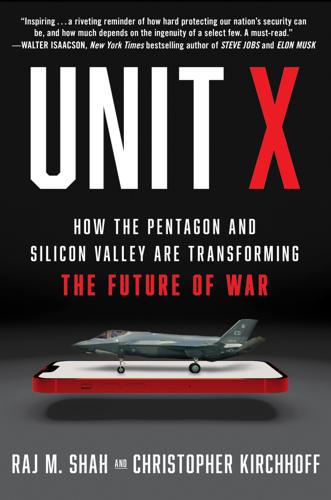
Unit X: How the Pentagon and Silicon Valley Are Transforming the Future of War
by
Raj M. Shah
and
Christopher Kirchhoff
Published 8 Jul 2024
Then came a break writers can only hope for—Rick Horgan, the legendary editor behind one hundred bestsellers—took on our project. More than that, he came to truly understand the cause we fought for. Rick’s dedicated assistant, Sophie Guimaraes, and the entire team at Simon & Schuster helped on so many fronts. In the book’s gestational phase, David Litt, John Markoff, and Sarah Fuentes provided essential feedback, while Gautam Makunda and Jonathan Reiber—who helped conjure the book’s title—provided unending moral support. Lirijon Kadriu helped us imagine evocative cover art. The enthusiasm of others who have written on technology buoyed our spirits along the way, including Nicholas Thompson, Tripp Mickle, Josh Cohen, David E.
…
Department of Defense, May 11, 2016, Mountain View, CA, https://www.defense.gov/News/Speeches/Speech/Article/757539/remarks-announcing-diux-20/. See also: Dan Lamothe, “Pentagon Chief Overhauls Silicon Valley Office,” Washington Post, May 11, 2016, https://www.washingtonpost.com/news/checkpoint/wp/2016/05/11/pentagon-chief-overhauls-silicon-valley-office-will-open-similar-unit-in-boston/, and John Markoff, “Pentagon Turns to Silicon Valley for Edge in Artificial Intelligence,” New York Times, May 11, 2016, https://www.nytimes.com/2016/05/12/technology/artificial-intelligence-as-the-pentagons-latest-weapon.html. Admiral Moffett—the station’s namesake: Lieutenant Philip D. Mayer, “Leading Technological Change: Lessons from Rear Admiral Moffett,” Proceedings of the U.S.
…
“Google should not be in the business of war”: For a comprehensive account of the Maven controversy, see Cade Metz, Genius Makers: The Mavericks Who Brought AI to Google, Facebook, and the World (Dutton: 2021). helping to defend the United States: For a history of how protest movements shaped technology and Silicon Valley culture, see John Markoff, What the Dormouse Said: How the Sixties Counterculture Shaped the Personal Computer Industry (Viking Adult, 2005). “Why Silicon Valley Must Go to War”: Christopher Kirchhoff, “Why Silicon Valley Must Go to War,” op-ed, New York Times, May 2, 2018, https://www.nytimes.com/2018/05/02/opinion/silicon-valley-pentagon.html.

The Power Law: Venture Capital and the Making of the New Future
by
Sebastian Mallaby
Published 1 Feb 2022
Tactics.” See also Rock, interview by Amy Blitz, March 2001, 9, library.hbs.edu/content/download/60633/file/Rock_Arthur.pdf. BACK TO NOTE REFERENCE 32 Wilson, New Venturers, 36. BACK TO NOTE REFERENCE 33 John Markoff, “An Evening with Legendary Venture Capitalist Arthur Rock in Conversation with John Markoff,” Computer History Museum, May 1, 2007, 16, archive.computerhistory.org/resources/access/text/2012/05/102658253-05-01-acc.pdf. BACK TO NOTE REFERENCE 34 Rock, interview with the author, Feb. 7, 2017. BACK TO NOTE REFERENCE 35 Rock, “Strategy vs.
…
As it turned out, the $750,000 shock coincided with a portent of UUNET’s eventual triumph. That December, the front of the New York Times business section featured a story on a revolutionary web browser called Mosaic, “a map to the buried treasures of the Information Age,” as the article described it.[57] Almost a year earlier, the same author, John Markoff, had captured the excitement about Al Gore’s vision for an information superhighway. Now the new buzz was about its dowdier rival, rendered suddenly sexy by Mosaic’s point-and-click navigation. Before, finding information on the internet had required typing commands like “Telnet 192.100.81.100.”
…
BACK TO NOTE REFERENCE 27 For an account emphasizing the public-sector role in creating the internet, see Mariana Mazzucato, The Entrepreneurial State: Debunking Public vs. Private Sector Myths (New York: Anthem Press, 2013), 76. BACK TO NOTE REFERENCE 28 For an example of the excitement about Gore’s vision, see John Markoff, “Building the Electronic Superhighway,” New York Times, Jan. 24, 1993. BACK TO NOTE REFERENCE 29 The key figure in this process was Stephen S. Wolff, the program director for computer networking at the NSF. In November 1991, Wolff issued a plan to replace the NSFNET with competing commercial networks.

User Friendly: How the Hidden Rules of Design Are Changing the Way We Live, Work & Play
by
Cliff Kuang
and
Robert Fabricant
Published 7 Nov 2019
Pagan Kennedy, “The Tampon of the Future,” New York Times, April 1, 2016, www.nytimes.com/2016/04/03/opinion/sunday/the-tampon-of-the-future.html. 7. HUMANITY 1. John Markoff, What the Dormouse Said: How the Sixties Counterculture Shaped the Personal Computer Industry (New York: Penguin, 2005), 148–50. 2. “Military Service—Douglas C. Engelbart,” Doug Engelbart Institute, www.dougengelbart.org/about/navy.html. 3. Markoff, What the Dormouse Said, 48. 4. John Markoff, Machines of Loving Grace: The Quest for Common Ground Between Humans and Robots (New York: Ecco, 2016). 5. Matthew Panzarino, “Google’s Eric Schmidt Thinks Siri Is a Significant Competitive Threat,” The Next Web, November 4, 2011, https://thenextweb.com/apple/2011/11/04/googles-eric-schmidt-thinks-siri-is-a-significant-competitive-threat. 6.
…
While mankind had spent thousands of years creating tools for changing the physical world, Bush argued, it was now time to create knowledge tools. He proposed several, including one he hastily dubbed the memex, which would allow a person to store every book or communication he’d ever need, and call it up with “exceeding speed and flexibility.” As Bush wrote, “It is an enlarged supplement to his memory.” This was a loaded sentence. As John Markoff writes in his definitive history of Engelbart’s milieu, What the Dormouse Said, “Previously, teams of humans had served a single computer; now, the computer would become a personal assistant.”3 (Emphasis mine.) The most far-reaching metaphor in computing was born. Engelbart spent the next twenty years developing that vision of a personal assistant, utterly wedded to an infinite view of human progress.

WikiLeaks and the Age of Transparency
by
Micah L. Sifry
Published 19 Feb 2011
Chapter 4 1 David Weinberger, “Transparency is the New Objectivity,” JOHO the Blog, July 19, 2009, www.hyperorg.com/blogger/2009/07/19/transparency-isthe-new-objectivity. The video of Weinberger’s talk is posted here www. youtube.com/watch?v=o3qSDLF6lU4. 2 John Markoff, “Plan Opens More Data to the Public,” The New York Times, October 22, 1993. 3 Carl Malamud, “By the People,” Address to the Government 2.0 Summit, Washington D.C., September 9, 2009, http://public.resource.org/people. 4 John Markoff, “Group to Widen Access to Federal Data Bases,” The New York Times, December 23, 1994. 5 Gary Ruskin, “America Off-Line: Gingrich’s Unfulfilled Internet Promise,” The Washington Post, November 16, 1997, www.washingtonpost.com/ wp-srv/politics/govt/fedguide/stories/fig112197.htm. 6 Daniel Charles, “2006 Young Innovators Under 35,” Technology Review, www.technologyreview.biz/TR35/Profile.aspx?
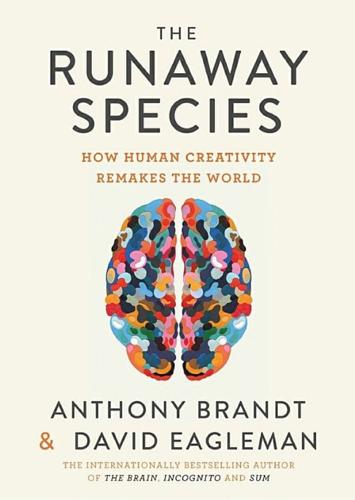
The Runaway Species: How Human Creativity Remakes the World
by
David Eagleman
and
Anthony Brandt
Published 30 Sep 2017
Learning of the Wright brothers’ success, he built a similar glider, but this time with ailerons. 6 From email correspondence with David Hagerman, curator of the Raymond Loewy estate and COO of Loewy Design. 7 Jillian Eugenios, “Lowe’s Channels Science Fiction in New Holoroom,” CNN, June 12, 2014, accessed May 11, 2016, <http://money.cnn.com/2014/06/12/technology/innovation/lowes-holoroom/> 8 John Markoff, “Microsoft Plumbs Ocean’s Depths to Test Underwater Data Center,” New York Times, January 31, 2016, accessed May 11, 2016, <http://www.nytimes.com/2016/02/01/technology/microsoft-plumbs-oceans-depths-to-test-underwater-data-center.html> 9 Gail Davidson, “The Future of Television,” Cooper Hewitt, August 16, 2015, accessed May 11, 2016, <http://www.cooperhewitt.org/2015/08/16/the-future-of-television/> 10 Ian Wylie, “Failure Is Glorious,” Fast Company, September 30, 2001, accessed May 11, 2016, <http://www.fastcompany.com/43877/failure-glorious> 11 Malcolm Gladwell, “Creation Myth,” New Yorker, May 16, 2011, accessed May 11, 2016, <http://www.newyorker.com/magazine/2011/05/16/creation-myth> 12 B.
…
Learning of the Wright brothers’ success, he built a similar glider, but this time with ailerons. 6 From email correspondence with David Hagerman, curator of the Raymond Loewy estate and COO of Loewy Design. 7 Jillian Eugenios, “Lowe’s Channels Science Fiction in New Holoroom,” CNN, June 12, 2014, accessed May 11, 2016, <http://money.cnn.com/2014/06/12/technology/innovation/lowes-holoroom/> 8 John Markoff, “Microsoft Plumbs Ocean’s Depths to Test Underwater Data Center,” New York Times, January 31, 2016, accessed May 11, 2016, <http://www.nytimes.com/2016/02/01/technology/microsoft-plumbs-oceans-depths-to-test-underwater-data-center.html> 9 Gail Davidson, “The Future of Television,” Cooper Hewitt, August 16, 2015, accessed May 11, 2016, <http://www.cooperhewitt.org/2015/08/16/the-future-of-television/> 10 Ian Wylie, “Failure Is Glorious,” Fast Company, September 30, 2001, accessed May 11, 2016, <http://www.fastcompany.com/43877/failure-glorious> 11 Malcolm Gladwell, “Creation Myth,” New Yorker, May 16, 2011, accessed May 11, 2016, <http://www.newyorker.com/magazine/2011/05/16/creation-myth> 12 B.
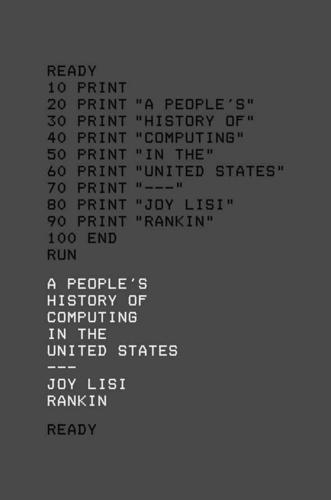
A People’s History of Computing in the United States
by
Joy Lisi Rankin
Cold War Research (Cambridge, MA: MIT Press, 2007). Accounts that highlight the role of the counterculture in personal computing’s origins include Fred Turner’s From Counterculture to Cyberculture: Stewart Brand, the Whole Earth Network, and the Rise of Digital Utopianism (Chicago: University of Chicago Press, 2006) and John Markoff’s What the Dormouse Said: How the Sixties Counterculture S haped the Personal Computer Industry (New York: Viking Penguin, 2005). 5. T hese works include Susan Rosegrant and David Lampe, Route 128: Lessons from Boston’s High-Tech Community (New York: Basic Books, 1992); 245 246 Notes to Pages 3–5 AnnaLee Saxenian, Regional Advantage: Culture and Competition in Silicon Valley and Route 128 (Cambridge, MA: Harvard University Press, 1994); Christophe Lécuyer, Making Silicon Valley: Innovation and the Growth of High Tech, 1930–1970 (Cambridge, MA: MIT Press, 2006); and Barry Katz, Make It New: The History of Silicon Valley Design (Cambridge, MA: MIT Press, 2015).
…
The most comprehensive work on Engelbart is Thierry Bardini, Bootstrapping: Douglas Engelbart, Coevolution, and the Origins of Personal Computing (Stanford, CA: Stanford University Press, 2000). The demonstration is viewable at https://w ww.youtube.com /watch?v = y JDv-z dhzMY. Many works describe it, including Howard Rheingold, Tools for Thought: The P eople and Ideas behind the Next Computer Revolution (New York: Simon & Schuster, 1985); and John Markoff, What the Dormouse Said: How the Sixties Counterculture Shaped the Personal Computer Industry (New York: Viking, 2005). 98. Alan Kay, “The Early History of Smalltalk,” in History of Programming Languages II, ed. Thomas Bergin Jr. and Richard Gibson Jr. (New York: ACM , 1996), 511–579. 99. Michael A.
…
According to Levy, Albrecht was on a “planner” mission to spread computing far and wide, while Moore exhibited a “hacker” fascination with hardware. Yet Levy later notes (222) that others also dismissed the Homebrew crew as “chip-monks, people obsessed with chips.” 18. People’s Computer Company 3, no. 3 (January 1975). 19. People’s Computer Company 3, no. 4 (March 1975), 6–7; capitalization of TINY BASIC in original. 20. Ibid. 21. John Markoff, What the Dormouse Said: How the Sixties Counterculture Shaped the Personal Computer Industry (New York: Viking, 2005), 264–265. Note the play on byte, overbyte, and overbite, leading to “orthodontia” in the title. 22. Jim Warren quoted in Markoff, What the Dormouse Said, 265. 23. Warren quoted in Levy, Hackers, 235.

The Zero Marginal Cost Society: The Internet of Things, the Collaborative Commons, and the Eclipse of Capitalism
by
Jeremy Rifkin
Published 31 Mar 2014
EDiscovery is a software program that can sift through millions of legal documents, looking for patterns of behavior, lines of thought, concepts, and the like, at speeds that would trump the best Harvard-educated lawyers and with crisp analysis that even the most well-trained legal scholars might miss. The savings in labor cost is equally impressive. The New York Times journalist John Markoff cites the example of a blockbuster lawsuit in 1978 involving five television studios, the U.S. Justice Department, and CBS. The studios’ lawyers and paralegals had the unenviable task of reading through more than 6 million documents over months at a cost of $2.2 million in labor time. In January 2011 BlackStone Discovery, a Palo Alto, California, enterprise, analyzed 1.5 million legal documents using eDiscovery software for less than $100,000.
…
Peter Joseph, Roxanne Meadows, and Jacque Fresco, “The Zeitgeist Movement: Observations and Responses,” Zeitgeist Movement, February 2009 http://www.bibliotecapleyades.net/socio politica/zeitgeist08.htm (accessed June 13, 2013). 14. Caroline Baum, “So Who’s Stealing China’s Manufacturing Jobs?,” Bloomberg, October 14 2003, http://www.bloomberg.com/apps/news?pid=newsarchive&sid=aRI4bAft7Xw4 (accessed July 1, 2013). 15. John Markoff, “Skilled Work, without the Worker,” New York Times, August 18, 2012, http://www.nytimes.com/2012/08/19/business/new-wave-of-adept-robots-is-changing-global-indus try.html?pagewanted=all&_r=0 (accessed July 1, 2013). 16. Ibid. 17. “World Robotics 2012 Industrial Robots,” International Federation of Robotics, http://www.ifr .org/industrial-robots/statistics/ (accessed May 26, 2013). 18.
…
Jason Perlow, “In the Battle of Clicks versus Bricks, Retail Must Transform or Die,” ZDNet, December 8, 2011, http://www.zdnet.com/blog/perlow/in-the-battle-of-clicks-versus-bricks-retail -must-transform-or-die/19418 (accessed August 3, 2013). 33. “Occupational Employment and Wages News Release,” U.S. Bureau of Labor Statistics, March 29, 2013, http://www.bls.gov/news.release/ocwage.htm (accessed June 8, 2013). 34. John Markoff, “Armies of Expensive Lawyers, Replaced by Cheaper Software,” New York Times, March 4, 2011, http://www.nytimes.com/2011/03/05/science/05legal.html?pagewanted=all (accessed October 20, 2013). 35. Ibid. 36. Christopher Steiner, “Automatons Get Creative,” New York Times, August 17, 2012, http://online.wsj.com/news/articles/SB10000872396390444375104577591304277229534#printprin (accessed June 30, 2013). 37.
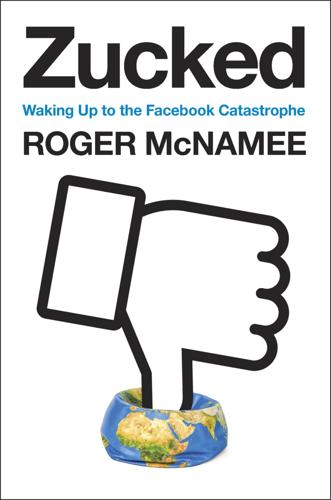
Zucked: Waking Up to the Facebook Catastrophe
by
Roger McNamee
Published 1 Jan 2019
Lanier has been a thought leader in technology for three decades, with an early emphasis on virtual reality, but in this book he speaks as a concerned technologist who is also a philosopher about technology. This book did not need ten arguments, but I learned something from every one. One of Lanier’s major concerns—unrestricted development of artificial intelligence—is the subject of Machines of Loving Grace, by John Markoff (New York: Ecco, 2015). The book explains how artificial intelligence risks undermining humans, rather than leveraging them. To understand the world of Big Data, and the challenges it poses to society, I recommend Cathy O’Neil’s Weapons of Math Destruction (New York: Crown, 2016), which has the best explanation of the good, the bad, and the ugly of algorithms that I have ever read.
…
The Innovators: How a Group of Hackers, Geniuses and Geeks Created the Digital Revolution, by Walter Isaacson (New York: Simon & Schuster, 2014), looks back on the key people whose work created Silicon Valley. What the Dormouse Said: How the 60s Counterculture Shaped the Personal Computer Industry, by John Markoff (New York: Viking, 2005), shows how hippie culture became the culture of the PC industry. Tom Wolfe’s The Electric Kool-Aid Acid Test (New York: Farrar Straus and Giroux, 1968) is a helpful introduction to the culture embraced by a core group in Silicon Valley at a critical time. Fire in the Valley: The Making of the Personal Computer, by Paul Freiberger and Michael Swaine (Berkeley: Osborne/McGraw-Hill, 1984), is the best book I know on the early days of the personal computer industry, from computer clubs to the start of Microsoft and Apple, to the battle that followed.
…
Hackers: Heroes of the Computer Revolution, by Steven Levy (New York: Anchor Press/Doubleday, 1984), investigates a key subculture in Silicon Valley. Levy wrote this as it was happening, which makes the book particularly helpful, as in the case of The Facebook Effect. Cyberpunk: Outlaws and Hackers on the Computer Frontier, by Katie Hafner and John Markoff (New York: Simon & Schuster, 1991), picks up the story of Hackers and carries it forward. * * * — I RECOMMEND LEARNING ABOUT the origin stories of the other internet platforms. The Everything Store: Jeff Bezos and the Age of Amazon, by Brad Stone (New York: Little, Brown and Co., 2013), blew my mind.

The Long History of the Future: Why Tomorrow's Technology Still Isn't Here
by
Nicole Kobie
Published 3 Jul 2024
Seven driverless cars – again, Priuses – were road-tested around the Bay Area, with a massive bit of kit plonked on the top, not unlike Street View cameras. ‘If people asked us what was on the cars, we’d say “it’s a laser” and just drive off,’ Levandowski said in an interview.18 The great tech journalist John Markoff revealed the project’s existence in the New York Times, describing a half-hour ride in one of the cars. He described how the car merged onto Highway 101 and managed city traffic in Mountain View via sensors and GPS, though engineer Chris Urmson – poached from the CMU DARPA team – was at the wheel as a safety driver, and had to take control twice in the short journey after a cyclist ran a red light and a car in front backed up to access a parking space.
…
It’s a big box that takes up a lot of space, after all.7 You can read the full interview with Peter Hart here: https://bit.ly/3RxQmWd and see CHM’s Oral History collection here: https://biturl.top/aim2M38 Rosen’s response came during a meeting with Pentagon generals to discuss the subject, according to John Markoff in his book Machines of Loving Grace. He later reveals that when Rosen was directly asked by a Pentagon official, Ruth Davis, about whether Shakey could replace a soldier, he admitted it wouldn’t happen anytime soon but that he wanted to test the core ideas. Thankfully, Davis was also keen enough on the science to back the idea.9 You can watch that video here: https://youtu.be/7bsEN8mwUB8 10 Shakey also used dead reckoning to poor use in another way.
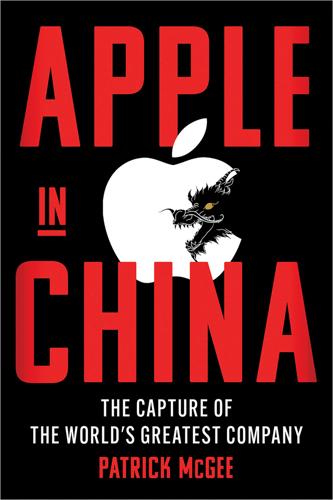
Apple in China: The Capture of the World's Greatest Company
by
Patrick McGee
Published 13 May 2025
So it was just a totally different culture.” Hyperbolic as that comparison is, it’s close to how Jobs saw things. He made it clear that if Apple produced a phone, it would be more of an enhanced iPod than a Mac for the pocket. “You don’t want your phone to be like a PC,” he would later tell journalist John Markoff. Fadell’s trio of deputies went into the deep minutiae of how phones functioned to avoid being subservient to the powerful telecoms like AT&T and Verizon, which largely dictated what features would be in every handset. Jobs had a particular disdain for them; he’d once explained Apple’s reluctance to build a phone by saying, “We’re not very good going through orifices to get to the end users.”
…
New York: HarperBusiness, 1998, 34. reserves had shrunk to $500 million: Michael Malone, Infinite Loop: How Apple, the World’s Most Insanely Great Computer Company, Went Insane. New York: Doubleday, 1999, 481. cut prices by as much as 30 percent: Malone, Infinite Loop, 480. McNealy’s “best offer”: John Markoff, “Sun’s Bid for Apple Computer Placed Below Stock’s Price,” New York Times, January 25, 1996, https://www.nytimes.com/1996/01/25/business/sun-s-bid-for-apple-computer-placed-below-stock-s-price.html. “Fall of an American Icon”: Peter Burrows, “The Fall of an American Icon,” BusinessWeek, February 4, 1996, https://www.bloomberg.com/news/articles/1996-02-04/the-fall-of-an-american-icon.
…
conspicuous flop: Deutschman, The Second Coming of Steve Jobs, 130. 120 computers and was burning through $10 million: Deutschman. The Second Coming of Steve Jobs, 121. cut staff by two-thirds: Schlender and Tetzeli, Becoming Steve Jobs, 144. price tag to be “outrageous”: Amelio, On the Firing Line, 200. “between five and seven years”: John Markoff, “Why Apple Sees Next as a Match Made in Heaven,” New York Times, December 23, 1996, https://www.nytimes.com/1996/12/23/business/why-apple-sees-next-as-a-match-made-in-heaven.html. “the presentation from Hell”: mickeleh (Michael Markman), “Worst. Apple. Keynote. Ever.” YouTube, April 7, 2013, https://www.youtube.com/watch?
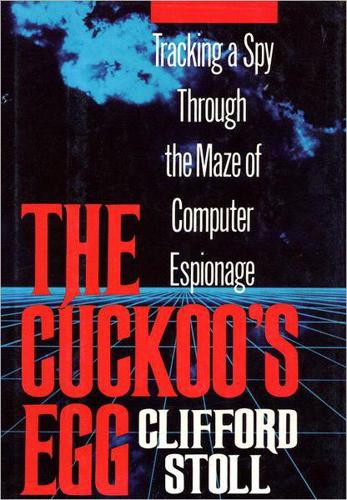
Cuckoo's Egg
by
Clifford Stoll
Published 2 Jan 1989
As I thought about it, Stanford was following different people. If anything, the Berkeley hacker seemed to prefer the name, “Hunter,” though I knew him by the several different account names he stole. Three days later, the headlines of the October 3 San Francisco Examiner blared, “Computer Sleuths Hunt A Brilliant Hacker.” Reporter John Markoff had sniffed out the Stanford story. On the side, the newspaper mentioned that this hacker had also gotten into the LBL computers. Could this be true? The story described Dan’s snares and his inability to catch Stanford’s Pfloyd hacker. But the reporter got the pseudonym wrong—the newspaper reported “a crafty hacker using the name ‘Pink Floyd.’ ” Cursing whoever leaked the story, I prepared to close things up.
…
And they published the story two weeks before I was going to. Damn. One year of silence. A year of covert cooperation with the authorities. Betrayed to a cheap tabloid in Germany. How ignominious. Even with a copy of my notebook, Quick was anything but accurate. Not much to do but get the facts out ourselves. Damn. Whatever we did, we’d be late. John Markoff—now at the New York Times—had heard about the story and was asking questions. Damn. Only one thing to do: my lab announced a press conference. With me at center stage. Damn. That evening, at 11 P.M., I was nervous and worried sick. Me? At a press conference? A phone call from the NSA didn’t help, either.
…
Now that’s efficient. Ten hours after I call them, the National Computer Security Center has found the culprit. But I hadn’t. He’s still a mystery to me, so it’s back to snooping around the networks. If I could only find the computer that had been first infected. No, that won’t work. There’s thousands out there. John Markoff, a reporter from the New York Times, called. “I heard a rumor that the person who wrote the virus has the initials RTM. Is that any help?” “Not much, but I’ll check it out.” How do you find someone from his initials? Of course … you look him up in the network directory. I log into the Network Information Center and search for anyone with the initials RTM.
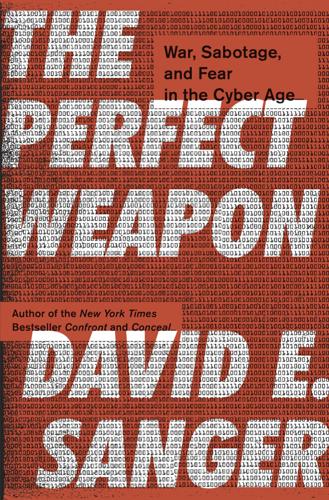
The Perfect Weapon: War, Sabotage, and Fear in the Cyber Age
by
David E. Sanger
Published 18 Jun 2018
Bloomberg among others, folded: Edward Wong, “Bloomberg Code Keeps Articles from Chinese Eyes,” New York Times, November 28, 2013, sinosphere.blogs.nytimes.com/2013/11/28/bloomberg-code-keeps-articles-from-chinese-eyes/. A secret State Department cable: Described in the New York Times “State’s Secrets” series in 2010. James Glanz and John Markoff, “Vast Hacking by a China Fearful of the Web,” New York Times, December 5, 2010, www.nytimes.com/2010/12/05/world/asia/05wikileaks-china.html?pagewanted=print. “images of China’s military”: Ibid. in December 2009, Google’s top executives discovered: David E. Sanger and John Markoff, “After Google’s Stand on China, U.S. Treads Lightly,” New York Times, January 15, 2010, www.nytimes.com/2010/01/15/world/asia/15diplo.html. “Operation Aurora”: Kim Zetter, “Google Hack Attack Was Ultra Sophisticated, New Details Show,” Wired, January 14, 2010, www.wired.com/2010/01/operation-aurora/.
…
The centrifuges at the Natanz nuclear facility—I knew from years of covering Iran’s nuclear program and interviewing inspectors from the International Atomic Energy Agency—were organized in groups of 164. That left little mystery about the intended target. The following summer and fall, two Times colleagues, Bill Broad and John Markoff, and I published several stories about the hints emerging from the Stuxnet code. Markoff uncovered stylistic and substantive evidence of Israel’s role in the code writing. Next, we found one of several American calling cards embedded in the code—an expiration date, when the code would drop dead.

Internet for the People: The Fight for Our Digital Future
by
Ben Tarnoff
Published 13 Jun 2022
But telecoms are notoriously bad at complying with the program’s requirements, and routinely overcharge schools and libraries; see Jeff Gerth, “AT&T, Feds Neglect Low-Price Mandate Designed to Help Schools,” ProPublica, May 1, 2012; Laura Meckler and Douglas MacMillan, “‘There Has to Be an Accounting’: Former AT&T Lawyer Says Company Systemically Overcharged Neediest Schools,” Washington Post, March 18, 2021. 22, The idea didn’t get far. Chester quotes: John Markoff, “The Media Business; New Coalition to Seek a Public Data Highway,” New York Times, October 26, 1993. 22, Without a social movement … The “Framework for Global Electronic Commerce” is available at clintonwhitehouse4.archives.gov. 23, There was nothing in the technical … Free-nets and Grundner’s Corporation for Public Cybercasting: Ashley Dunn, “Information Freeway?
…
“Despite its initial …”: Ibid., 16. 83, These three elements … My analysis is informed by Nick Srnicek, who identifies four characteristics of “platforms”: they are intermediaries, they “produce and are reliant on ‘network effects,’” they often use “cross-subsidisation” to reduce the price of a good or service, and they have “a designed core architecture that governs the interaction possibilities”; see Srnicek, Platform Capitalism, 36–48. 6. Online Malls 85, Back in 1993 … “A virtual …”: Quoted in John Markoff, “The Media Business; New Coalition to Seek a Public Data Highway,” New York Times, October 26, 1993. Shopping malls metaphor: Jathan Sadowski, “The Internet of Landlords: Digital Platforms and New Mechanisms of Rentier Capitalism,” Antipode 52, no. 2 (2020): 562–80. For an earlier analysis of online commodification that uses the shopping mall metaphor, see Jennifer S.
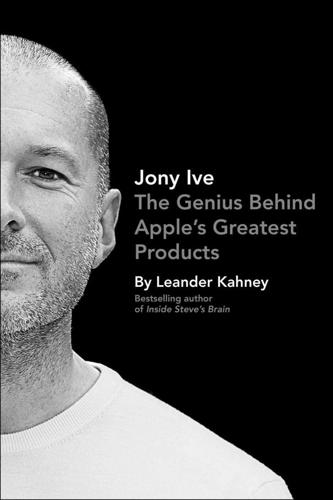
Jony Ive: The Genius Behind Apple's Greatest Products
by
Leander Kahney
Published 14 Nov 2013
The couple moved into a modest house on San Francisco’s Twin Peaks, the highest hill in the city, from which they enjoyed a stunning view of the city that extended the length of Market Street to the skyscrapers downtown. Inside, the place reflected Jony’s design tastes. “There is a fireplace in the sparsely appointed interior and a tiny television sitting atop an upscale stereo with a turntable, and virtually all the furniture is on wheels,” wrote reporter John Markoff, who visited Jony and his wife for a New York Times profile a few years later.1 “The room is lighted by a futuristic lamp, which appears to hang like a red orb, but there isn’t a personal computer in sight.” Jony bought an orange Saab convertible for the commute to Apple, about thirty-five miles away down the Peninsula in Cupertino.
…
Businessweek, originally in Radical Craft Conference, the Art Center College of Design in Pasadena, California., http://www.businessweek.com/stories/2006-09-24/who-is-jonathan-ive 52. Design Museum, http://designmuseum.org/design/jonathan-ive. 53. Ibid. 54. Interview with Peter Phillips, Spring 2013. CHAPTER 4 Early Days at Apple 1. John Markoff, “At Home with Jonathan Ive: Making Computers Cute Enough to Wear,” http://www.nytimes.com/1998/02/05/garden/at-home-with-jonathan-ive-making-computers-cute-enough-to-wear.html, published Feruary 05, 1998. 2. Paul Kunkel, AppleDesign, (New York: Graphis Inc., 1997), p. 81. 3. Interview with Robert Brunner, March 2013. 4.
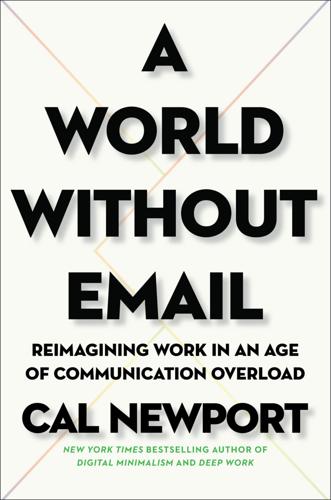
A World Without Email: Reimagining Work in an Age of Communication Overload
by
Cal Newport
Published 2 Mar 2021
The article also notes that at this point, most motion picture studios still depended on a primitive communication device called the Amtel, a combination of screen and keyboard that was used to send short text messages. (A common use of the Amtel in Hollywood was to allow assistants to inform executives, without interrupting their closed-door meetings, about who was holding on various phone lines.) In a 1989 article, the venerable technology writer John Markoff provides more insight into the dynamics that helped accelerate email’s growth.5 “Electronic mail, which has taken a secondary position to the facsimile machine through the personal computer boom of the 1980’s,” he writes, “is finally coming into its own.” As Markoff’s piece clarifies, in the late 1980s, email was largely used to connect employees within the same company.
…
It was clear by the 1980s that pneumatic tubes were quite old-fashioned compared with the newly arrived ability to communicate with electrons through wires. 3. Erik Sandberg-Diment, “Personal Computers: Refinements for ‘E-mail,’” New York Times, May 26, 1987. 4. Anne Thompson, “The Executive Life: Forget Doing Lunch—Hollywood’s on E-mail,” New York Times, September 6, 1992. 5. John Markoff, “Computer Mail Gaining a Market,” New York Times, December 26, 1989. 6. Stephen C. Miller, “Networking: Now Software Giants Are Targeting E-mail,” New York Times, May 31, 1992. 7. Peter H. Lewis, “Personal Computers: The Good, the Bad and the Truly Ugly Faces of Electronic Mail,” New York Times, September 6, 1994. 8.

Free as in Freedom
by
Sam Williams
Published 16 Nov 2015
In August of 1998, when chip-maker Intel purchased a stake in GNU/Linux vendor 142 Red Hat, an accompanying New York Times article described the company as the product of a movement "known alternatively as free software and open source."See Amy Harmon, "For Sale: Free Operating System," New York Times (September 28, 1998). Six months later, a John Markoff article on Apple Computer was proclaiming the company's adoption of the "open source" Apache server in the article headline.See John Markoff, "Apple Adopts 'Open Source' for its Server Computers," New York Times (March 17, 1999). Such momentum would coincide with the growing momentum of companies that actively embraced the "open source" term. By August of 1999, Red Hat, a company that now eagerly billed itself as "open source," was selling shares on Nasdaq.

The Economic Singularity: Artificial Intelligence and the Death of Capitalism
by
Calum Chace
Published 17 Jul 2016
By assessing the likelihood and utility of each scenario, and understanding how to achieve or avoid them, we may be able to achieve the most positive outcome of the economic singularity. 6. - Scenarios 6.1 – No Change In a July 2015 interview with Edge, an online magazine, Pulitzer Prize-winning veteran New York Times journalist John Markoff lamented the deceleration of technological progress - in fact he claimed that it has come to a halt.[cccxlii] He reported that Moore’s Law stopped reducing the price of computer components in 2013, and pointed to the disappointing performance of the robots entered into the DARPA Robotics Challenge in June 2015 (which we reviewed in chapter 3.7).
…
As a trainee BBC journalist writing about Central and Eastern Europe long before the Berlin Wall fell, I soon realised how fortunate I was to have grown up in the capitalist West. I didn’t expect to be heading back in the other direction in later life. [cccxlii] https://edge.org/conversation/john_markoff-the-next-wave [cccxliii] http://uk.pcmag.com/robotics-automation-products/34778/news/will-a-robot-revolution-lead-to-mass-unemployment [cccxliv] https://en.wikipedia.org/wiki/Milgram_experiment [cccxlv] http://www.prisonexp.org/ [cccxlvi] http://fourhourworkweek.com/2014/08/29/kevin-kelly/ [cccxlvii] https://www.edge.org/conversation/kevin_kelly-the-technium [cccxlviii] http://history.hanover.edu/courses/excerpts/165acton.html [cccxlix] http://mercatus.org/sites/default/files/Brito_BitcoinPrimer.pdf [cccl] http://www.dugcampbell.com/byzantine-generals-problem/ [cccli] http://www.economistinsights.com/technology-innovation/analysis/money-no-middleman/tab/1 [ccclii] : The Machine Intelligence Research Institute (MIRI) in Northern California, The Future of Humanity Institute (FHI) and the Centre for the Study of Existential Risk (CSER) in England’s Oxford and Cambridge respectively, and the Future of Life Institute (FLI) in Massachussetts.
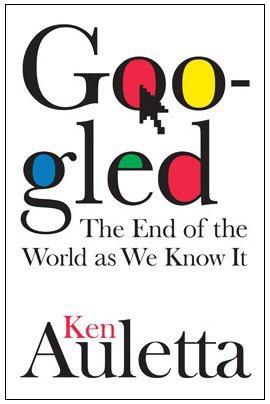
Googled: The End of the World as We Know It
by
Ken Auletta
Published 1 Jan 2009
Thus the query is dispatched to the closest data center, which produces a speedier result. But the data centers are meant for more than search. Eric Schmidt, Schachter noted, has been proselytizing for cloud computing for two decades, since he was a Sun executive touting “network computing.” That same year, 2004, John Markoff of the New York Times spotted it too. While others saw Microsoft training its guns on search, he saw Google taking aim at Microsoft’s software. The scale of the Google computer system, as well as the backgrounds of its management, he wrote, “suggests that while Microsoft may want to be the next Google, the Web search company has its own still-secret plans to become the next Microsoft.”
…
“Your choices suck”: author interview with Mel Karmazin, May 13, 2008. 12 “I will believe in the 500-channel world”: Sumner Redstone speech before the National Press Club, October 19, 1994. 13 Vinod Khosla ... once told: “An Oral History of the Internet,” Vanity Fair, July 2008. 13 “a tsunami”: author interview with Craig Newmark, January 11, 2008. 14 Nielsen reported: The Nielsen Company, “Three Screen Report,” May 2008. 14 In 2008, more Americans: press release from the Pew Research Center for People & the Press, December 23, 2008. 14 the number one network teleuision show: Nielsen Media Research. 14 an estimated 1.6 billion: Universal McCann study, “Wave.3,” March 2008, and John Markoff, the New York Times, August 30, 2008. 14 newspapers, which traditionally claimed nearly a quarter: JackMyers.com. 14 lost 167,000 jobs: Advertising Age report from the Bureau of Labor Statistics, February 18, 2008. 14 two hundred billion dollars: Myers Advertising and Marketing Investment Insights, annual advertising spending forecast, September 15, 2007. 14 plunge below 20 percent: McCann Erickson Worldwide chart of percentage of ad dollars by media, 1980-2007. 15 it took telephones seventy-one years ... just five years: Progress & Freedom Foundation report, January 16, 2008, and “The Decade of Online Advertising,” DoubleClick, April 2005. 15 thirty-four technology stocks: charts provided to the author by Yossi Vardi. 15 1 million job applications: author interview with Lazslo Bock, August 22, 2007. 15 Its revenues... from advertising and other Google statistics: Google’s SEC filing for fiscal year ending December 31, 2007, Google Amendment No. 9 to Form S-1, filed with the SEC August 18, 2004, and Google 10-K filed with the SEC, December 31, 2008. 16 daily advertising impressions: Google Product Strategy Meeting attended by the author, April 16, 2008. 16 Google’s hundreds of millions of daily auctions: reported in its Google 10-K SEC filing for the year ending December 31, 2007. 16 index contained: Google’s third-quarter earnings report, October 16, 2008. 16 billions of pages per day: Google internal documents for March 2008, presented at an April 16, 2008, Google Product Strategy Meeting attended by the author. 16 tens of billions: May 2007 revenue report, the Interactive Advertising Bureau. 16 YouTube ... twenty-five million unique daily visitors; DoubleClick posted seventeen billion: Eric Schmidt presentation to Google employees, April 28, 2008. 16 Google’s ad revenues in 2008: “Media Spending 2006-2009 Estimates,” JackMyers. com, January 29, 2008. 16 “We began”: Google 10-K filed in 2008 for the period ending December 31, 2007. 16 “We are in the advertising business”: author interview with Eric Schmidt, October 9, 2007. 17 likens Google to ...
…
“: author interview with Marissa Mayer, November 4, 2008. 108 The stock reached $108.31 ... to its employees: SEC Form S-1, August 2004. 109 Even Bonnie Brown: Stefanie Olsen, CNET News, January 23, 2008. 110 ”We began as a technology company“: Google IPO, SEC form 3-1, August 2004. 110 two hundred million dollars in 2003: author interview with Benjamin Schachter, February 15, 2008. 110 ”In a second“: author interview with Matt Cutts, March 26, 2008. 111 ”suggests that while Microsoft“: John Markoff, ”Why Google Is Peering Out, at Microsoft,“ New York Times, May 3, 2004. 111”we believe that our user focus“: Google IPO, August 2004. 112 ”Being less experienced“: author interview with Larry Page, March 25, 2008. 112. ”A lot of it is common sense“: author interview with Sergey Brin, September 18, 2008. 112 ”They wanted to replicate the Stanford culture“: author interview with Ram Shriram, June 12, 2008. 112 ”They predicted things that did not make sense to me“: author interview with Urs Hölzle, September 10, 2007. 112 ”Their clear, coherent point of view“: author interview with Terry Winograd, September 25, 2007. 112”The number of times they made me change my opinion“: author interview with Rajeev Motwani, October 12, 2007. 113 the construct framed by Eric Steven Raymond: Eric Steven Raymond, ”The Cathedral and the Bazaar,“ found at http:/wwwcatb.org/-esr/writings/cathedral-bazaar/. 113 Page and Brin actually have more experience: author interview with Eric Schmidt, September 12, 2007. 113 ”quintessential Montessori kids“: author interview with Marissa Mayer, August 21, 2007. 114 ”question everything“: Larry Page speech at University of Michigan, 2005. 114 ”There’s kind of a strength in the duo“: author interview with Bill Campbell, October 8, 2007. 114 ”We agree eighty to ninety percent of the time“: author interview with Sergey Brin, March 26, 2008. 114 ”If we both feel the same way ... we’re probably right“: author interview with Larry Page, March 25, 2008. 114 strength ”to be different“: author interview with Susan Wojcicki, September 10, 2007. 114 ”having a mental sparring partner“: author interview with Jen Fitzpatrick, September 12, 2007. 114 ”Having the two of them being completely in sync“: author interview with Omid Kordestani, September 12, 2007. 114 ”to force a conversation“: author interview with Eric Schmidt, September 12, 2007. 115 ”Some companies would be worried“: author interview with Sheryl Sandberg, October 11, 2007. 115 ”people saw values we believed in“: author interview with Craig Newmark, January 11, 2008. 115 the reason the troika ”works is that whoever you go to“: author interview with Sheryl Sandberg, October 11, 2007. 116 ”Eric is the leader for the company“: author interview with Sergey Brin, October 11, 2007. 116 ”I can’t imagine“: author interview with Bill Campbell, October 8, 2007. 116 ”A balanced appreciation“: author interview with Dan Rosensweig, February 27, 2008. 116 ”It borders on insulting“: author interview with Elliot Schrage, October 12, 2007. 116 ”catcher“: author interviews with Eric Schmidt, September 12, 2007, and October 9, 2007. 116 At the press lunch: post-Zeitgeist lunch attended by author, October 11, 2007. 117 ”the best business partner“: annual Google shareholder meeting attended by author, May 10, 2007. 117 ”Eric is the person who said“: author interview with Sheryl Sandberg, October 11, 2007. 117 ”I’ve become a huge cheerleader“: author interview with Michael Moritz, March 31, 2009. 118 an incident at the 2005 World Economic Forum: author interview with Andrew Lack, October 4, 2007. 118 ”no recollection of the specific incident“: e-mail from Arthur Sulzberger, Jr., April 29, 2009. 118 ”Schmidt confirmed Lack’s account“: author interview with Eric Schmidt, April 1, 2009. 118 ”Here’s the part you don’t see“: author interview with Bill Campbell, April 1, 2009. 119 ”We’re smart guys“: author interview with Terry Winograd, September 25, 2007. 120 ”privacy concerns“: Google IPO, August 2004.
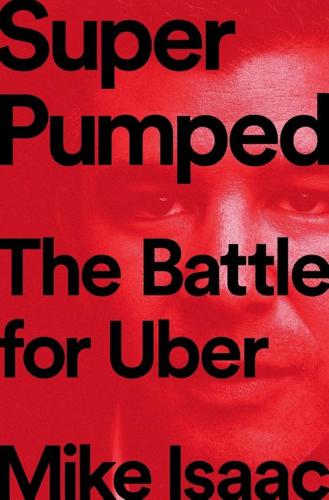
Super Pumped: The Battle for Uber
by
Mike Isaac
Published 2 Sep 2019
Taxi Business Could (Finally) Get Some Disruption,” TechCrunch, https://techcrunch.com/2010/08/31/what-if-ubercab-pulls-an-airbnb-taxi-business-could-finally-get-some-disruption/. Chapter 7: THE TALLEST MAN IN VENTURE CAPITAL 65 “It’s magic”: GigaOm, “Bill Gurley, Benchmark Capital (full version),” YouTube video, 32:48, December 14, 2012, https://www.youtube.com/watch?v=dBaYsK_62EY. 65 fund returned $250 million: John Markoff, “Internet Analyst Joins Venture Capital Firm,” New York Times, July 14, 1997, https://www.nytimes.com/1997/07/14/business/internet-analyst-joins-venture-capital-firm.html. 66 worked at the Johnson Space Center: Marissa Barnett, “Former Resident Donates $1M to Dickinson,” Galveston County Daily News, September 6, 2017, http://www.galvnews.com/news/article_7c163944-63ee-5499-8964-fec7ef7e0540.html. 66 Lucia spent her spare time: Bill Gurley, “Thinking of Home: Dickinson, Texas,” Above the Crowd (blog), September 6, 2017, http://abovethecrowd.com/2017/09/06/thinking-of-home-dickinson-texas/. 66 one of the first relatively inexpensive: “Commodore VIC-20,” Steve’s Old Computer Museum, http://oldcomputers.net. 66 he mostly rode the bench: Eric Johnson, “Full Transcript: Benchmark General Partner Bill Gurley on Recode Decode,” Recode, September 28, 2016, https://www.recode.net/2016/9/28/13095682/bill-gurley-benchmark-bubble-uber-recode-decode-podcast-transcript. 66 He played for one minute: “Bill Gurley,” Sports Reference, College Basketball (CBB), https://www.sports-reference.com/cbb/players/bill-gurley-1.html and “Bill Gurley Season Game Log,” Sports Reference, College Basketball (CBB), https://www.sports-reference.com/cbb/players/bill-gurley-1/gamelog/1988/. 67 he was infatuated: Gabrielle Saveri, “Bill Gurley Venture Capitalist, Hummer Winblad Venture Partners,” Bloomberg, August 25, 1997, https://www.bloomberg.com/news/articles/1997-08-24/bill-gurley-venture-capitalist-hummer-winblad-venture-partners. 70 “He’s kind of an animal”: Stross, Randall E., EBoys: The First Inside Account of Venture Capitalists at Work (Crown Publishers, 2000). 71 Gurley wrote: Bill Gurley, “Benchmark Capital: Open for Business,” Above the Crowd (blog), December 1, 2008, https://abovethecrowd.com/2008/12/01/benchmark-capital-open-for-business/.
…
Chapter 18: CLASH OF THE SELF-DRIVING CARS 176 “The reason I’m excited”: James Temple, “Brin’s Best Bits from the Code Conference (Video),” Recode, May 28, 2014, https://www.recode.net/2014/5/28/11627304/brins-best-bits-from-the-code-conference-video. 178 “We get stuff like this”: Biz Carson, “New Emails Show How Mistrust and Suspicions Blew Up the Relationship Between Uber’s Travis Kalanick and Google’s Larry Page,” Business Insider, July 6, 2017, https://www.businessinsider.com/emails-uber-wanted-to-partner-with-google-on-self-driving-cars-2017-7. 181 Trucking was an enormous industry: American Trucking Associations, “News and Information Reports, Industry Data,” https://www.trucking.org/News_and_Information_Reports_Industry_Data.aspx. 181 Trucks drive 5.6 percent: National Highway Traffic and Safety Administration, “USDOT Releases 2016 Fatal Traffic Crash Data,” https://www.nhtsa.gov/press-releases/usdot-releases-2016-fatal-traffic-crash-data. 182 “I want to be in the driver seat”: Duhigg, “Did Uber Steal Google’s Intellectual Property?” 182 autonomous vehicle engineering specialists: John Markoff, “Want to Buy a Self-Driving Car? Big-Rig Trucks May Come First,” New York Times, May 17, 2016, https://www.nytimes.com/2016/05/17/technology/want-to-buy-a-self-driving-car-trucks-may-come-first.html. 182 Levandowski ignored them: Mark Harris, “How Otto Defied Nevada and Scored a $60 Million Payout from Uber,” Wired, November 28, 2016, https://www.wired.com/2016/11/how-otto-defied-nevada-and-scored-a-680-million-payout-from-uber/#.67khcq4w5. 183 “Safety Third”: Chafkin and Bergen, “Fury Road.” 183 “brother from another mother”: Chafkin and Bergen, “Fury Road.” 184 “Super Duper” version of Uber: From Waymo LLC v.
…
[angry face and thumbs-down emojis],” Twitter, February 19, 2017, 6:44 p.m., https://twitter.com/chrismessina/status/833462385872498688. 227 “@travisk showing me his super cool app”: Arianna Huffington (@ariannahuff), “@travisk showing me his super cool app, Uber: everyone’s private driver uber.com,” Twitter, May 30, 2012, 3:23 p.m., https://twitter.com/ariannahuff/status/207915187846656001. 228 an unfaithful journalist: Vanessa Grigoriadis, “Maharishi Arianna,” New York, November 20, 2011, http://nymag.com/news/media/arianna-huffington-2011-11. 228 a warm, intelligent woman: Lauren Collins, “The Oracle: The Many Lives of Arianna Huffington,” New Yorker, October 13, 2008, https://www.newyorker.com/magazine/2008/10/13/the-oracle-lauren-collins. 228 “Your dowry is your education”: Collins, “The Oracle.” 229 “a kind of liberal foil”: Collins, “The Oracle.” 230 “a unified theory of Arianna”: Meghan O’Rourke, “The Accidental Feminist,” Slate, September 22, 2006, https://slate.com/news-and-politics/2006/09/arianna-huffington-the-accidental-feminist.html. 230 “There are two schools of thought”: Maureen Orth, “Arianna’s Virtual Candidate,” Vanity Fair, November 1, 1994, https://www.vanityfair.com/culture/1994/11/huffington-199411. 230 Her political career: https://www.vanityfair.com/culture/1994/11/huffington-199411. Chapter 24: NO ONE STEALS FROM LARRY PAGE 232 first consumer-ready version: John Markoff, “No Longer a Dream: Silicon Valley Takes on the Flying Car,” New York Times, April 24, 2017, https://www.nytimes.com/2017/04/24/technology/flying-car-technology.html. 233 “a new way forward in mobility”: Daisuke Wakabayashi, “Google Parent Company Spins Off Self-Driving Car Business,” New York Times, December 13, 2016, https://www.nytimes.com/2016/12/13/technology/google-parent-company-spins-off-waymo-self-driving-car-business.html. 233 suing him months ago: Biz Carson, “Google Secretly Sought Arbitration Against Its Former Self-Driving Guru Months Before the Uber Lawsuit,” Business Insider, March 29, 2017, https://www.businessinsider.com/google-filed-against-anthony-levandowski-in-arbitration-before-uber-lawsuit-2017-3. 233 old Google workplace accounts: Waymo LLC v.

Where Wizards Stay Up Late: The Origins of the Internet
by
Katie Hafner
and
Matthew Lyon
Published 1 Jan 1996
Also by Katie Hafner The House at the Bridge: A Story of Modern Germany Cyberpunk: Outlaws and Hackers on the Computer Frontier (with John Markoff) TOUCHSTONE Rockefeller Center 1230 Avenue of the Americas New York, NY 10020 Visit us on the World Wide Web: http://www.SimonSays.com Copyright © 1996 by Katie Hafner and Matthew Lyon All rights reserved, including the right of reproduction in whole or in part in any form. First Touchstone Edition 1998 TOUCHSTONE and colophon are registered trademarks of Simon & Schuster Inc. Includes index. ISBN-10: 0-684-87216-1 ISBN-13: 978-0-684-87216-2 To the memory of J.
…
Memories were growing fuzzy in late 1993, when we first started thinking about doing a book, and Frank Heart and others were interested in having BBN’s considerable role in the creation of the original ARPANET recorded. Not only did the company open its archives to us and cooperate in every way but it helped fund the project as well, while agreeing to exercise no control over the content of the book. Marian Bremer, then BBN’s head librarian, made the initial phone call that led to the book. Cary Lu and John Markoff urged us to take on the project. Helen Samuels and the folks at MIT archives were immensely helpful, as was Kevin Corbitt, assistant archivist at the Charles Babbage Institute, Center for the History of Information Processing, at the University of Minnesota. We are grateful to John Day, Larry Roberts, Al Vezza, and John Shoch for digging around in old boxes for us.
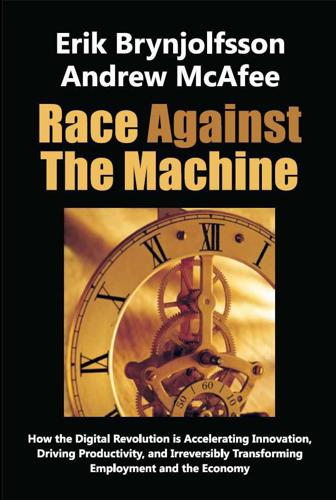
Race Against the Machine: How the Digital Revolution Is Accelerating Innovation, Driving Productivity, and Irreversibly Transforming Employment and the Economy
by
Erik Brynjolfsson
Published 23 Jan 2012
But it’s also true, as the examples in this chapter show, that as we move deeper into the second half of the chessboard, computers are rapidly getting better at both of these skills. We’re starting to see evidence that this digital progress is affecting the business world. A March 2011 story by John Markoff in the New York Times highlighted how heavily computers’ pattern recognition abilities are already being exploited by the legal industry where, according to one estimate, moving from human to digital labor during the discovery process could let one lawyer do the work of 500. In January, for example, Blackstone Discovery of Palo Alto, Calif., helped analyze 1.5 million documents for less than $100,000. … “From a legal staffing viewpoint, it means that a lot of people who used to be allocated to conduct document review are no longer able to be billed out,” said Bill Herr, who as a lawyer at a major chemical company used to muster auditoriums of lawyers to read documents for weeks on end.
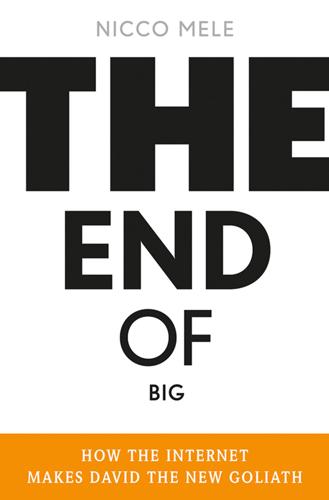
The End of Big: How the Internet Makes David the New Goliath
by
Nicco Mele
Published 14 Apr 2013
The ads that appeared in 1976 for their first Apple computer announced that “our philosophy is to provide software for our machines free or at minimal cost” and “yes folks, Apple BASIC is Free.”16 1984 During the decade after Computer Lib, as personal computers became fixtures in American homes and as computer companies became established organizations in their own right, the notion that personal computers represented a naked challenge to the centralized power of both computing and larger institutions persisted. John Markoff’s account of the counterculture’s influence on personal computing relates how “[t]he old computing world was hierarchical and conservative. Years later, after the PC was an established reality, Ken Olson, the founder of minicomputer maker Digital Equipment Corporation, still … publicly asserted that there was no need for a home computer.”17 On the other hand, antiestablishment ideology became entrenched in manifold specifics of the PC’s design; Markoff relates, for instance, that the visualization that comes with iTunes—the pretty colors that move and change in sequence with the music—was inspired in part by Jobs’s use of LSD, which Jobs called “one of the two or three most important things he had done in his life.”
…
The quotation is taken from his essay “We Owe It All to the Hippies,” Time, 1 Mar. 1995. 13. http://www.digibarn.com/collections/newsletters/peoples-computer/peoples-1972-oct/index.html 14. http://www.atariarchives.org/deli/homebrew_and_how_the_apple.php 15. http://www.digibarn.com/collections/newsletters/homebrew/V2_01/index.html 16. http://www.gadgetspage.com/comps-peripheral/apple-i-computer-ad.html 17. John Markoff, What the Dormouse Said: How the Sixties Counterculture Shaped the Personal Computer Industry (New York: Penguin, 1996). 18. http://pdgmag.com/2012/02/02/steve-jobs-lee-clow-and-ridley-scott-the-three-geniuses-who-made-1984-less-like-1984/ 19. http://www.youtube.com/watch?v=OYecfV3ubP8 20.
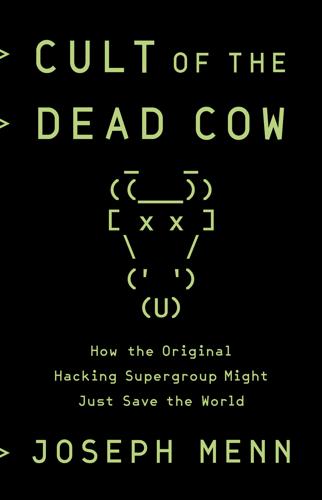
Cult of the Dead Cow: How the Original Hacking Supergroup Might Just Save the World
by
Joseph Menn
Published 3 Jun 2019
For kindly housing and looking after me during my research trips, I would like to thank Ralph and Shan Logan, Andrea Shallcross and Jonathan Burn, Rachel Layne and John Mulrooney, Barbara Bestor and Tom Stern, and assorted relatives. I am also indebted to a number of talented and hardworking authors who brought clarity to various aspects of historic and current issues in security touched on here, including John Markoff, Phil Lapsley, Fred Kaplan, Ronald Deibert, Shane Harris, Andy Greenberg, Bruce Sterling, Steven Levy, and Gabriella Coleman. For those interested in learning more about the bulletin board era, I strongly recommend Jason Scott Sadofsky’s multipart documentary and his text file collection, both publicly available.
…
“Attendee Dale Drew of Arizona”: Drew went on to have a serious security career with Tymnet, MCI, and Level 3 Communications, where he was chief security officer. He didn’t respond to my interview request. “Barlow’s fellow acid-taking Deadhead”: For more on Brand and the connections between psychedelics and major technology innovations, see John Markoff’s What the Dormouse Said (New York: Viking, 2005). “I’ve been in redneck bars wearing shoulder-length curls”: John Perry Barlow, “Crime and Puzzlement,” Electronic Frontier Foundation, June 1990, www.eff.org/pages/crime-and-puzzlement. The site has a collection of his other writings as well. “Ladopoulos and Abene were arrested and prosecuted”: One member of MoD who got away, Red Knight, was also in cDc.
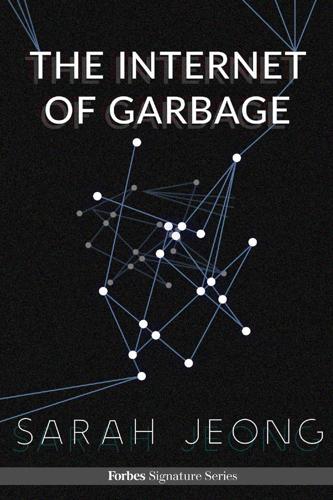
The Internet of Garbage
by
Sarah Jeong
Published 14 Jul 2015
In her documentation of the phenomenon of doxing, Katherine Cross writes, “I am at pains to remind the reader that all of this traces back to opinions about video games, a seething hatred of feminists who play and write about them, and a harassment campaign that began as an extended act of domestic violence against developer Zoe Quinn by a vengefully abusive ex-boyfriend.” Doxing Women Bruce Schneier notes that doxing has existed since 2001. Others recall seeing the term come up in IRC channels in the mid-2000s, particularly regarding retaliation against New York Times writer John Markoff, who had written a controversial exposé of the hacker Kevin Mitnick. Markoff is credited (or blamed) by some to have helped with Mitnick’s later arrest and imprisonment. (The journalist’s email account was compromised in 1996.) In 2011, dox were dropped on HBGary Federal, a company that claimed to be able to out members of Anonymous and LulzSec (infamous Internet vigilante groups composed of entirely anonymous or pseudonymous members) by gathering information on social media.
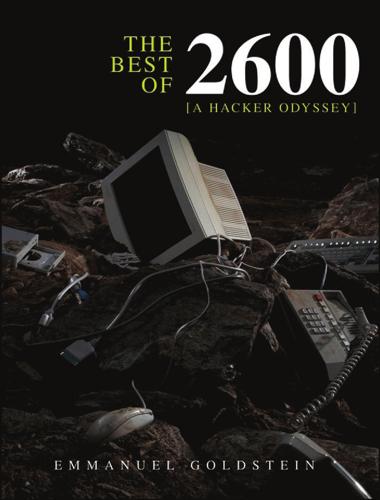
The Best of 2600: A Hacker Odyssey
by
Emmanuel Goldstein
Published 28 Jul 2008
To put it mildly, we thought it was treating the hacker community and Mitnick in particular in a very unfair manner. So we decided to speak up about it. And that would lead to the making of our own film.... When Hackers Ride Horses: A Review of Cyberpunk (Summer, 1991) Cyberpunk: Outlaws and Hackers on the Computer Frontier By Katie Hafner and John Markoff $22.95, Simon and Schuster, 354 pages Review by The Devil’s Advocate The exploits of Kevin Mitnick, Pengo, and Robert Morris have become legendary both in and out of the hacker mainstream. Until now, however, hackers have had to worship their idols from afar. Cyberpunk: Outlaws and Hackers on the Computer Frontier unites hackers in this true-life testimony by presenting an in-depth, up-front view of these “techno-menaces” without the overreactive doomsday prophecies that usually accompany such a work.
…
Rather, Littman’s brand of compassion is 245 94192c08.qxd 6/3/08 3:32 PM Page 246 246 Chapter 8 an acute understanding of the abuses of his own craft, that of the media in distorting facts to the point of creating fiction. Fugitive is the story of how just such irresponsible journalism turned computer expert Kevin Mitnick into “the most wanted computer hacker in the world.” Readers will remember Mitnick as the spiteful and vindictive teenager featured in Katie Hafner and John Markoff’s Cyberpunk: Computers and Outlaws on the Electronic Frontier. At the time of its release, Cyberpunk’s portrayal of Mitnick was thought to be biased, allegedly because Mitnick was the only hacker featured who refused to be interviewed. Biased or not, he was portrayed by the authors as a “Dark Side” hacker, and the antithesis of the hacker ethic.
…
Question authority. Fugitive is replete with questioning, most of which remains unanswered. While loose ends are not usually considered praiseworthy for an investigative work, in this case, the kudos are indeed appropriate because Littman seems to be the only one doing the questioning. Certainly John Markoff, despite Cyberpunk and all of his New York Times pieces, has never bothered to scratch below the surface of Mitnick or acquire the true facts of his case. Littman spends entire chapters debunking the myths and distortions surrounding Mitnick, most of which originated from these very sources. And Littman’s questions have a way of reminding the reader to remain skeptical, that things are never as simple as we 94192c08.qxd 6/3/08 3:32 PM Page 247 Pop Culture and the Hacker World would like them to be.
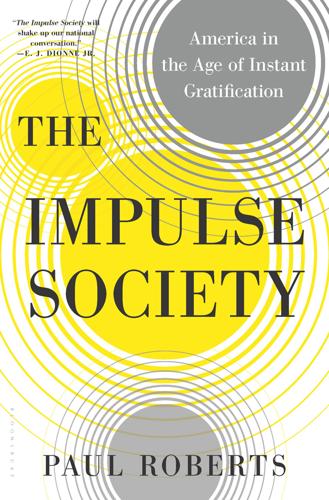
The Impulse Society: America in the Age of Instant Gratification
by
Paul Roberts
Published 1 Sep 2014
“‘Father of Aerobics,’ Kenneth Cooper, MD, MPH to Receive Healthy Cup Award from Harvard School of Public Health,” press release, April 16, 2008, http://www.hsph.harvard.edu/news/press-releases/2008-releases/aerobics-kenneth-cooper-to-receive-harvard-healthy-cup-award.html. 22. J. D. Reed, “America Wakes Up,” Time, Nov. 16, 1981, http://www.time.com/time/subscriber/printout/0,8816,950613,00.html. 23. Personal communication, October 5, 2012. 24. Kurt Eichenwald with John Markoff, “Wall Street’s Souped-up Computers,” New York Times, Oct. 16, 1988, http://www.nytimes.com/1988/10/16/business/wall-street-s-souped-up-computers.html. 25. Dean Baker, “The Run-up in Home Prices: Is It Real or Is It Another Bubble” briefing paper, Center for Economic and Policy Research, August 2002, http://www.cepr.net/documents/publications/housing_2002_08.pdf; and Dean Baker, “The Productivity to Paycheck Gap: What the Data Show,” briefing paper, April 2007, http://www.cepr.net/documents/publications/growth_failure_2007_04.pdf. 26.
…
Daniel Katz, “Quantitative Legal Prediction—Or—How I Learned to Stop Worrying and Start Preparing for the Data-Driven Future of the Legal Services Industry,” Emory Law Journal, 62, no. 909 (2013): 965. 3. Laura Manning, “65 Students Chasing Each Training Contract Vacancy,” Lawyer 2B, June 28, 2011, http://l2b.thelawyer.com/65-students-chasing-each-training-contract-vacancy/1008370.article. 4. John Markoff, “Armies of Expensive Lawyers, Replaced by Cheaper Software,” The New York Times, March 4, 2011, http://www.nytimes.com/2011/03/05/science/05legal.htmlpagewanted=1&_r=1&hp. 5. Thor Olavsrud, “Big Data Analytics Lets Businesses Play Moneyball,” ComputerworldUK, Aug. 24, 2012, http://www.computerworlduk.com/in-depth/it-business/3377796/big-data-analytics-lets-businesses-play-money ball/. 6.
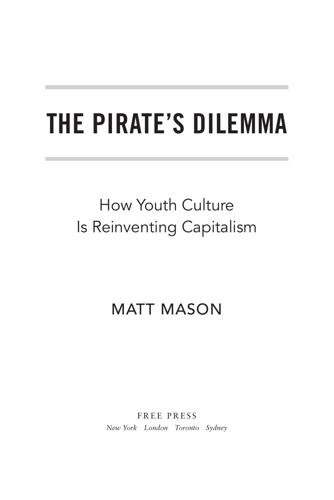
The Pirate's Dilemma: How Youth Culture Is Reinventing Capitalism
by
Matt Mason
There a handful of young tech students, who were involved with both the antiwar and the hippie movements, fed their psychedelic social ideas into the development of the computer. Many scientists working on similar projects at nearby R&D facility Xerox PARC also were influenced by flower power. Some were hippies themselves. According to John Markoff, author of What the Dormouse Said: How 60s Counterculture Shaped the Personal Computer, “There was this very interesting parallel between the way they worked with psychedelics—which was about augmenting human potential— and the works of a man named Doug Engelbart [a pioneer of humancomputer interaction, who, among other things, invented the mouse], who was attempting to build a machine that he thought would augment the human mind.”
…
For those who want a more detailed account of the history of the Loft and how disco evolved, I would recommend: Tim Lawrence, Love Saves the Day (Durham, NC: Duke University Press, 2003). Bill Brewster and Frank Broughton, Last Night a DJ Saved My Life (London: Headline, 1999). R. U. Sirius (aka Ken Goffman), True Mutations (San Francisco: Pollinator Press, 2006), p. 15. John Markoff, What the Dormouse Said (New York: Penguin, reprint edition 2006). Bill Gates, “An Open Letter to Hobbyists,” February 3, 1976. http://www.blinkenlights.com/classiccmp/gateswhine.html. R. U. Sirius (aka Ken Goffman) and Dan Joy, Counterculture Through the Ages (New York: Villard, 2004), p. 353.

Future Politics: Living Together in a World Transformed by Tech
by
Jamie Susskind
Published 3 Sep 2018
Fairfield, Owned: Property, Privacy, and the New Digital Serfdom (Cambridge: Cambridge University Press, 2017). 7. Sheila Jasanoff, The Ethics of Invention:Technology and the Human Future (New York: W. W. Norton & Company, 2016), 169. 8. Frank Pasquale, The Black Box Society: The Secret Algorithms That Control Money and Information (Cambridge, Mass: Harvard University Press, 2015), 21. 9. John Markoff, Machines of Loving Grace: the Quest for Common Ground Between Humans and Robots (New York: HarperCollins, 2015), xvi. 10. Robert W. McChesney, Digital Disconnect: How Capitalism is Turning The Internet Against Democracy (New York: The New Press, 2014), 166. 11. McChesney, Digital Disconnect, 162. 12.
…
contentCollection=weekendreads&referer=> (accessed 1 December 2017); Bence Kollanyi, Philip N. Howard, and Samuel C. Woolley,‘Bots and Automation over Twitter during the U.S. Election’, Computational Propaganda Project, 2016 <http://comprop.oii.ox.ac. uk/2016/11/17/bots-and-automation-over-twitter-during-the-us-election/> (accessed 1 December 2017); John Markoff, ‘Automated Pro-Trump Bots Overwhelmed Pro-Clinton Messages, Researchers Say’, New York Times, 17 November 2016 http://www.nytimes. com/2016/11/18/technology/automated-pro-trump-botsoverwhelmed-pro-clinton-messages-researchers-say.html)> (accessed 1 December 2017). 20. Ian Sample, ‘Study Reveals Bot-on-Bot Editing Wars Raging on Wikipedia’s Pages’, The Guardian, 23 February 2017 <https:// www.theguardian.com/technology/2017/feb/23/wikipedia-botediting-war-study> (accessed 1 December 2017).

Utopias: A Brief History From Ancient Writings to Virtual Communities
by
Howard P. Segal
Published 20 May 2012
Singer, “The Unmanned Mission,” Fortune, 161 (March 1, 2010), S2; Associated Press, “Robot Performs Wedding Ceremony in Tokyo,” Boston Globe, May 17, 2010, A3; and Kirsner, “You, Robot,” Boston Sunday Globe, May 30, 2010, G1, G4. Interestingly, Ramo has recently argued that robots could and should replace humans as much as possible in future space landings on Mars and elsewhere. See Simon Ramo, “Too Big a Step for Mankind,” Los Angeles Times, April 26, 2010, A15. 59 John Markoff, “Race to Build a Robot More Like Us,” Science Times, New York Times, July 12, 2011, D1. 60 See Karl Ritter, Associated Press, “Nobel Prize in Medicine Goes to In Vitro Fertilization Pioneer,” Boston Globe, October 5, 2010, A4; and Nicholas Wade, “In Vitro Fertilization Pioneer Wins Nobel Prize,” New York Times, October 5, 2010, A1, A3. 61 Quoted by Gwynne Dyer in his “A Long Way from Designing Chromosomes,” Bangor Daily News, May 25, 2010, A7. 62 Review by Deborah D.
…
The issue’s cover title was explicit: “What’s So Great About the iPad? Everything. How Steve Jobs Will Revolutionize Reading, Watching, Computing, Gaming— and Silicon Valley.” Similarly, Time’s cover story for 175 (April 12, 2010), 6, 36–43, was “Inside Steve’s Pad.” On new visions of artificial intelligence, see John Markoff, “The Coming Superbrain: Computers Keep Getting Smarter, While We Just Stay the Same,” Sunday New York Times, Week in Review, May 24, 2009, 1, 4; and Alex Beam, “Apocalypse Later: Ray Kurzweil Predicts the Not-So-Near Future in ‘Post-Biological’ Visions of Humanity,” Boston Globe, June 29, 2010, G23.
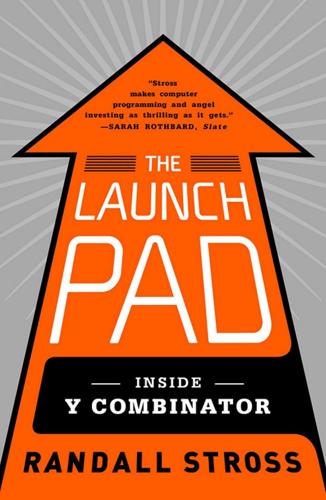
The Launch Pad: Inside Y Combinator, Silicon Valley's Most Exclusive School for Startups
by
Randall Stross
Published 4 Sep 2013
This is the basis for the remainder of this account of Viaweb, other than specific exceptions noted. 6. Biographical details are drawn from PG’s biography on the Viaweb Web site, preserved at http://ycombinator.com/viaweb/com.html. 7. John Markoff, “How a Need for Challenge Seduced Computer Expert,” New York Times, November 6, 1988, www.nytimes.com/1988/11/06/us/how-a-need-for-challenge-seduced-computer-expert.html; John Markoff, “Computer Intruder Is Put on Probation and Fined $10,000,” New York Times, May 5, 1990, www.nytimes.com/1990/05/05/us/computer-intruder-is-put-on-probation-and-fined-10000.html. Coverage of the incident did not fail to note that this Robert Morris—Robert Tappan Morris—was the son of Robert Morris, the well-known computer scientist who was then the chief scientist for the National Computer Security Center, a division of the National Security Agency.

The Inevitable: Understanding the 12 Technological Forces That Will Shape Our Future
by
Kevin Kelly
Published 6 Jun 2016
four times that amount over a lifespan: Martin Haegele, Thomas Skordas, Stefan Sagert, et al., “Industrial Robot Automation,” White Paper FP6-001917, European Robotics Research Network, 2005. Priced at $25,000: Angelo Young, “Industrial Robots Could Be 16% Less Costly to Employ Than People by 2025,” International Business Times, February 11, 2015. all but seven minutes of a typical flight: John Markoff, “Planes Without Pilots,” New York Times, April 6, 2015. 3: FLOWING steady flow of household replenishables: “List of Online Grocers,” Wikipedia, accessed August 18, 2015. new medium imitates the medium it replaces: Marshall McLuhan, Culture Is Our Business (New York: McGraw-Hill, 1970).
…
Parkes, “The Influence of the Concepts of Ordinatio and Compilation on the Development of the Book,” in Medieval Learning and Literature: Essays Presented to Richard William Hunt, eds. J.J.G. Alexander and M. T. Gibson (Oxford: Clarendon Press, 1976), 115–27. gaining visual intelligence rapidly: John Markoff, “Researchers Announce Advance in Image-Recognition Software,” New York Times, November 17, 2014. “one can only reread it”: Vladimir Nabokov, Lectures on Literature (New York: Harcourt Brace Jovanovich, 1980). “He who receives an idea from me”: Thomas Jefferson, “Thomas Jefferson to Isaac McPherson, 13 Aug. 1813,” in Founders’ Constitution, eds.

Is the Internet Changing the Way You Think?: The Net's Impact on Our Minds and Future
by
John Brockman
Published 18 Jan 2011
Provine Don’t Ring Me: Aubrey de Grey A Thousand Hours a Year: Simon Baron-Cohen Thinking Like the Internet, Thinking Like Biology: Nigel Goldenfeld The Internet Makes Me Think in the Present Tense: Douglas Rushkoff Social Prosthetic Systems: Stephen M. Kosslyn Evolving a Global Brain: W. Tecumseh Fitch Search and Emergence: Rudy Rucker My Fingers Have Become Part of My Brain: James O’Donnell A Mirror for the World’s Foibles: John Markoff a completely new form of sense: Terence Koh By Changing My Behavior: Seirian Sumner There Is No New Self: Nicholas A. Christakis I Once Was Lost but Now Am Found, or How to Navigate in the Chartroom of Memory: Neri Oxman The Greatest Pornographer: Alun Anderson My Sixth Sense: Albert-László Barabási The Internet Reifies a Logic Already There: Tom McCarthy Instant Gratification: Peter H.
…
What all this means is that we are in a different space now, one that is largely unfamiliar to us even when we think we’re using familiar tools (like a “newspaper” that has never been printed or an “encyclopedia” vastly larger than any shelf of buckram volumes), and one that has begun life by going through rapid changes that only hint at what is to come. I’m not going to prophesy where that goes, but I’ll sit here a while longer, watching the ways I’ve come to “let my fingers do the walking,” wondering where they will lead. A Mirror for the World’s Foibles John Markoff Journalist; covers Silicon Valley for the New York Times; author, What the Dormouse Said: How the Sixties Counterculture Shaped the Personal Computer Industry It’s been three decades since Les Earnest, then assistant director of the Stanford Artificial Intelligence Laboratory, introduced me to the ARPANET.

Smart Mobs: The Next Social Revolution
by
Howard Rheingold
Published 24 Dec 2011
Michelle Delio, “The Grid Draws Its Battle Lines,” Wired News, 20 February 2002, <http://www.wired.com/news/technology/0,1282,50538,00.html> (29 March 2002). 36. Ian Foster, “Internet Computing and the Emerging Grid,” Nature, 7 December 2000, <http://www.nature.com/nature/webmatters/grid/grid.html> (23 November 2001). 37. Ibid. 38. John Markoff, “The Soul of the Ultimate Machine,” New York Times, 12 December 2000, <http://www.nytimes.com/2000/12/10/technology/10SMAR.html> (24 January 2002). 39. Ibid. 40. Ibid. 41. Steve Lohr, “IBM Making a Commitment to Next Phase of the Internet,” New York Times, 2 August 2001, <http://www.nytimes.com/2001/08/02/technology/02BLUE.html > 42.
…
ex=100> (23 February 2002). 28. PlayaNet, <http://www.playanet.org > (23 February 2002). 29. Burning Man, <http://www.burningman.com > (23 February 2002). 30. Cory Doctorow, email correspondence, 25 February 2001. 31. “SFLan Manifesto,” <http://www.sflan.com/index.html > (23 February 2002). 32. John Markoff, “The Corner Internet Network vs. the Cellular Giants,” New York Times, 4 March 2002, <http://www.nytimes.com/2002/03/04/technology/04MESH.html > (6 March 2002). 33. Michael Behar, “The Broadband Militia,” Washington Monthly, March 2002, <http://www.washingtonmonthly.com/features/2001/0203.behar.html > (6 March 2002). 34.

Dark Territory: The Secret History of Cyber War
by
Fred Kaplan
Published 1 Mar 2016
He and the other L0pht denizens: The hearing can be seen on YouTube, http://www.youtube.com/watch?v=VVJldn_MmMY. Three days after Mudge’s testimony: Bill Clinton, Presidential Decision Directive/NSC-63, “Critical Infrastructure Protection,” May 22, 1998, http://fas.org/irp/offdocs/pdd/pdd-63.htm. FIDNET, as he called it: John Markoff, “U.S. Drawing Plan That Will Monitor Computer Systems,” New York Times, July 28, 1999; and interviews. “Orwellian”: Tim Weiner, “Author of Computer Surveillance Plan Tries to Ease Fears,” New York Times, Aug. 16, 1999; and interviews. “While the President and Congress can order”: Bill Clinton, National Plan for Information Systems Protection, Jan. 7, 2000, http://cryptome.org/cybersec-plan.htm.
…
Knake, Cyber War (New York: HarperCollins, 2010), 44–47. “cyber-offensive teams”: Zachary Fryer-Biggs, “U.S. Sharpens Tone on Cyber Attacks from China,” DefenseNews, March 18, 2013, http://mobile.defensenews.com/article/303180021; and interviews. In Obama’s first year as president: Choe Sang-Hun and John Markoff, “Cyberattacks Jam Government and Commercial Web Sites in U.S. and South Korea,” New York Times, July 18, 2009; Clarke and Knake, Cyber War, 23–30. A year and a half later: Zetter, Countdown to Zero Day, 276–79. Four months after that: “Nicole Perlroth, “In Cyberattack on Saudi Firm, U.S. Sees Iran Firing Back,” New York Times, Oct. 23, 2013.
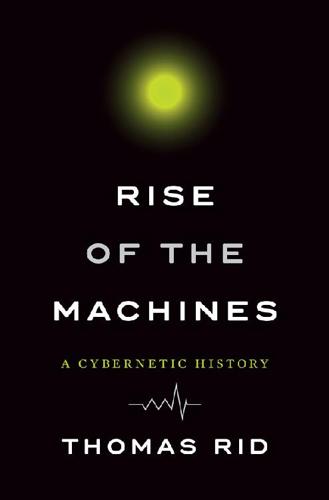
Rise of the Machines: A Cybernetic History
by
Thomas Rid
Published 27 Jun 2016
The c-punks had seen that the spooks at Fort Meade could tweak the law and play politics. But the activists also knew the secret agency hated publicity. So Gilmore started calling some of the technology reporters he knew through the cypherpunks list. One of the best-known journalists in San Francisco at the time was John Markoff, from the New York Times. Gilmore reached out to him. The Times later ran the story. “In Retreat, U.S. Spy Agency Shrugs at Found Secret Data,” the headline read.49 Gilmore’s plan worked as predicted: the NSA shunned the light. The agency declassified the Friedman documents in response to the high-profile publicity.
…
Ryan Lackey, e-mail to the author, February 16, 2015. 36.John Gilmore, “Summary of Cypherpunks Discussion Volume and Participants,” e-mail to Gene Grantham, April 13, 1999. 37.May, “True Nyms and Crypto Anarchy,” 83. 38.Ibid., 61. 39.Kelly, “Cypherpunks, e-Money,” 46. 40.May, “Announcement.” 41.Ibid. 42.Kelly, “Cypherpunks, e-Money,” 42. 43.Kevin Kelly, Out of Control (Reading, MA: Addison-Wesley, 1995), 178. 44.May, “True Nyms and Crypto Anarchy,” 82. 45.James Bamford, The Puzzle Palace (New York: Houghton Mifflin, 1982), 47–56. 46.The find wasn’t too remarkable. James Bamford had prominently reported on the wider Friedman papers in an influential book on the NSA: The Puzzle Palace, published in 1982. John Gilmore, interview by the author, April 7, 2014. 47.Gilmore, interview, April 7, 2014. 48.Ibid. 49.John Markoff, “In Retreat, U.S. Spy Agency Shrugs at Found Secret Data,” New York Times, November 28, 1992. 50.Gilmore, interview, April 7, 2014. 51.John Perry Barlow, “Remarks,” in First International Symposium: “National Security & National Competitiveness: Open Source Solutions”: Proceedings, vol. 2 (Reston, VA: Open Source Solutions, 1992), 182–83. 52.Timothy May, “‘Stopping Crime’ Necessarily Means Invasiveness,” e-mail to cypherpunks@toad.com, October 17, 1996.

The Contrarian: Peter Thiel and Silicon Valley's Pursuit of Power
by
Max Chafkin
Published 14 Sep 2021
He saw the Left as a countervailing force against technological progress. “They wanted to destroy the new machines,” as Tom Wolfe put it in a 1983 Esquire profile of Noyce. “They wanted to call off the future.” This was mostly forgotten in Silicon Valley by the early 2000s, when Apple and Google were preaching individual empowerment and books like John Markoff’s What the Dormouse Said were arguing that LSD had, in some spiritual way, created the internet, when in fact it had been created with funding from the Pentagon’s Defense Advanced Research Projects Agency (better known as DARPA). Thiel saw tech the way Noyce had seen it—as fundamental to the rise of Western civilization and American power.
…
as he’d write: Peter Thiel, “The End of the Future,” National Review, October 3, 2011, https://www.nationalreview.com/2011/10/end-future-peter-thiel/. essential to the operation: “Tracking GhostNet,” The Information Warfare Monitor, March 29, 2009, https://citizenlab.ca/wp-content/uploads/2017/05/ghostnet.pdf; John Markoff, “Tracking Cyberspies Through the Web Wilderness,” The New York Times, May 11, 2009, https://www.nytimes.com/2009/05/12/science/12cyber.html. had already agreed: Steve Brill, “Trump, Palantir, and the Battle to Clean Up a Huge Army Procurement Swamp,” Fortune, March 27, 2017 https://fortune.com/longform/palantir-pentagon-trump/.
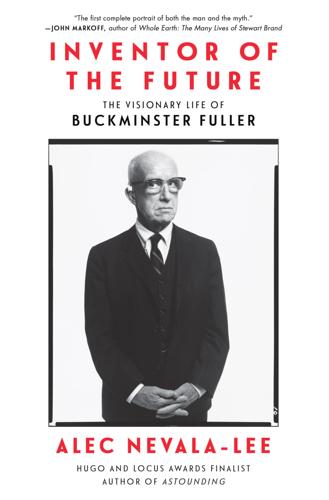
Inventor of the Future: The Visionary Life of Buckminster Fuller
by
Alec Nevala-Lee
Published 1 Aug 2022
Gray, Sam Green, Rob Grip, Tony Gwilliam, Rich Heinemeyer, Paul Hendrickson, Andy Hertzfeld, Bill Higgins, Dan Hooper, Tony Huston, Donald E. Ingber, Lloyd Kahn, Barry M. Katz, Alan Kay, Dodie Kazanjian, Jonathon Keats, Lisa Kessler, Christopher Kitrick, Dale Klaus, Daniel Kottke, Lady Margaret Kroto, Jaron Lanier, Mira Lehr, Lore Devra Levin, David D. Levine, Lim Chong Keat, Casey Mack, Jerry Manock, John Markoff, Gillian Meller, Ann Mintz, Federico Neder, Bill Perk, Prop Anon, Michael Ravnitzky, Michael Reid, Hugh Ryan, the late Shoji Sadao, Edwin Schlossberg, Stephen E. Selkowitz, Shirley Sharkey, Deborah Snyder, Tom Solari, the late Carl Solway, Yrjö Sotamaa, Barbara Stevenson, Jonathan Stoller, Roger Stoller, Calvin Tomkins, Thomas Turman, Tom Vinetz, Tim Wessels, Robert Williams, Paul Young, the late Gene Youngblood, Thomas T.
…
“Google in paperback form”: Jobs, Stanford commencement address, June 12, 2005. “That definitely comes”: Stewart Brand interview, The Tim Ferriss Show, February 3, 2018, https://tim.blog/2018/02/03/the-tim-ferriss-show-transcripts-stewart-brand (accessed January 2021). “The stuff came out”: Evgeny Morozov, “Making It,” New Yorker, January 13, 2014, 70. Marc LeBrun: John Markoff, What the Dormouse Said (New York: Penguin, 2006), 183–84. Lee Felsenstein: Lee Felsenstein, email to author, December 18, 2020. “an architect and engineer”: Charles Raisch, “Pueblo in the City,” Mother Jones, May 1976, 30. ideas for the Exploratorium: Hilde Hein, The Exploratorium: The Museum as Laboratory (Washington, DC: Smithsonian Institution, 1990), 239n10.
…
“Amid the fever I was in”: Brand, Last Whole Earth Catalog, 439. “Techniques and tools”: Ibid. “I dunno, Whole Earth Catalog”: Ibid. “with manufacturers”: Stewart Brand to RBF, April 10, 1968, quoted in Wong, 454. “We are as gods”: Stewart Brand, Whole Earth Catalog, Fall 1968, 3. “access to tools”: John Markoff, Whole Earth: The Many Lives of Stewart Brand (New York: Penguin, 2022), 138. “People who beef about Fuller”: Stewart Brand, Whole Earth Catalog, Fall 1968, 3. “one of the most original”: Ibid. “baling wire hippies”: J. D. Smith, quoted in Andrew G. Kirk, Counterculture Green: The Whole Earth Catalog and American Environmentalism (Lawrence: University Press of Kansas, 2007), 76.
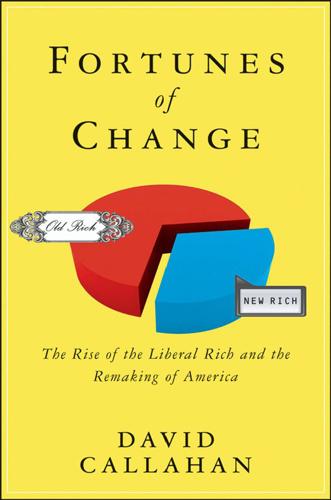
Fortunes of Change: The Rise of the Liberal Rich and the Remaking of America
by
David Callahan
Published 9 Aug 2010
“Computers are c08.indd 191 5/11/10 6:24:56 AM 192 fortunes of change mostly used against people instead of for people; used to control people instead of to free them,” stated the first newsletter of a Silicon Valley organization called the People’s Computer Company that Moore helped found in the early 1970s. “Time to change all that.” In his book What the Doormouse Said: How the 60s Counterculture Shaped the Personal Computer Industry, John Markoff argues that it was inevitable that the PC would emerge on the West Coast. “The East Coast computing industry didn’t get it,” Markoff wrote. “The old computing world was hierarchical and conservative.” Markoff documents how computer engineers in the Bay Area—such as Douglas Engelbart, who would invent the computer mouse— experimented with LSD, believing that the drug could spur their creativity.
…
Paul Festa, “High-Tech Advocates Clash over School Vouchers, Skilled Labor,” CNET News, September 22, 2000, http://news .cnet.com/High-tech-advocates-clash-over-school-vouchers,-skilledlabor/2100-1023_3-246068.html. 18. Neil Gross and Solon Simmons, “The Social and Political Views of American Professors,” Harvard University, Working Paper, September 24, 2007. 19. John Markoff, What the Doormouse Said: How the 60s Counterculture Shaped the Personal Computer Industry (New York: Viking, 2005). 9. Patrician Politicians 1. Robert Frank, “A Richistani Runs for Office,” Wall Street Journal Online, May 23, 2007, http://blogs.wsj.com/wealth/2007/05/ 23/a-richistani-runs-for-office/. 2.

New Laws of Robotics: Defending Human Expertise in the Age of AI
by
Frank Pasquale
Published 14 May 2020
Staff of the US Securities and Exchange Commission and Staff of the US Commodity Futures Trading Commission, Joint Study on the Feasibility of Mandating Algorithmic Descriptions for Derivatives (April 2011), 16, 16n77, 24, https://www.sec.gov/news/studies/2011/719b-study.pdf. 28. John Markoff, “The Creature That Lives in Pittsburgh,” New York Times, April 21, 1991, http://www.nytimes.com/1991/04/21/business/the-creature-that-lives-in-pittsburgh.html?pagewanted=all; Rodney Brooks, Flesh and Machines: How Robots Will Change Us (New York: Pantheon, 2002). 29. See John Markoff, Machines of Loving Grace (New York: HarperCollins, 2015), which describes pioneering IA work by Doug Engelbart and a long line of proteges. See also Doug Engelbart, Augmenting Human Intellect: A Conceptual Framework (Washington, DC: Air Force Office of Scientific Research, 1962). 30.
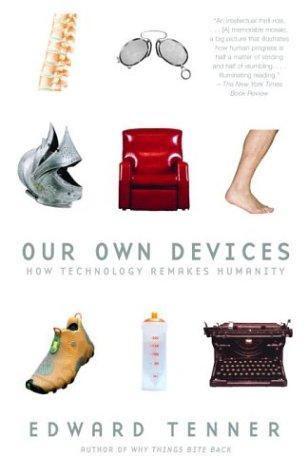
Our Own Devices: How Technology Remakes Humanity
by
Edward Tenner
Published 8 Jun 2004
Scot Ober, “Review of Research on the Dvorak Simplified Keyboard,” Delta Pi Epsilon Journal, vol. 34, no. 4 (Fall 1992), 167–82; Scot Ober, “Relative Efficiencies of the Standard and Dvorak Simplified Keyboards,” Delta Pi Epsilon Journal, vol. 35, no. 1 (Winter 1993), 1–13, and references cited in each article; Peter J. Howe, “Different Strokes Catch On,” Boston Globe, January 15, 1996; Jennifer B. Lee, “Keyboards Stuck in the Age of NumLock; Defunct Keys and Odd Commands Still Bedevil Today’s PC User,” New York Times, August 12, 1999. 43. Neal Taslitz, telephone interview, August 17, 2002. 44. John Markoff, “Microsoft Sees New Software Based on Pens,” New York Times, November 9, 2000; “Newtonian Marketing Lessons,” Advertising Age, August 15, 1994, 20. 45. Frank R. Wilson, The Hand: How Its Use Shapes the Brain, Language, and Human Culture (New York: Pantheon Books, 1998), 309–10; Lisa Guernsey, “For Those Who Would Click and Cheat,” New York Times, April 26, 2001. 46.
…
Fowler, “In the Digital Age, ‘All Thumbs’ Is Term of Highest Praise,” Wall Street Journal, April 17, 2002; Libby Copeland, “Thumbs Up: After Eons Spent in Its Siblings’ Shadow, the Dumpy Digit Finally Counts,” Washington Post, June 24, 2002; Frank Wilson, The Hand: How Its Use Shapes the Brain, Language, and Human Culture (New York: Pantheon Books, 1998), 146. 7. Eric von Hippel, The Sources of Innovation (New York: Oxford University Press, 1988), 1–25, 102–16; Kim J. Vicente, Cognitive Work Analysis: Towards Safe, Productive, and Healthy Computer-Based Work (Mahwah, N.J.: Erlbaum), 109–38. 8. John Markoff, “Kristen Nygaard, 75, Who Built Framework for Modern Computer Languages,” New York Times, August 14, 2001. Suggestions for Further Reading On human culture in comparative perspective, the best survey that I have found is Tim Ingold, ed., Companion Encyclopedia of Anthropology (London: Routledge, 1994), with a number of important articles by leading figures on themes such as tools and tool behavior, technology, and artifacts.
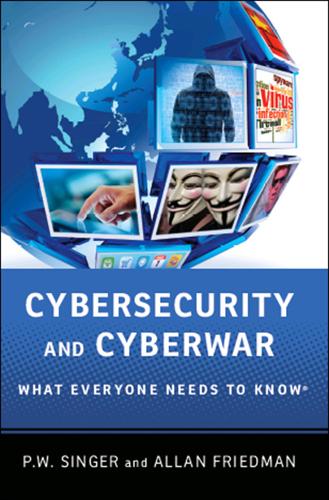
Cybersecurity: What Everyone Needs to Know
by
P. W. Singer
and
Allan Friedman
Published 3 Jan 2014
Drones,” Wall Street Journal, December 17, 2009, http://online.wsj.com/article/SB126102247889095011.html. “preserve of great states” Lewis, “The Threat,” p. 20. “the most to lose” Clayton, “The New Cyber Arms Race.” “tons of vulnerabilities” Ibid. “power equalization” Nye, “Power and National Security in Cyberspace,” p. 14. dummy set of centrifuges William J. Broad, John Markoff, and David E. Sanger, “Israeli Test on Worm Called Crucial in Iran Nuclear Delay,” New York Times, January 15, 2011, http://www.nytimes.com/2011/01/16/world/middleeast/16stuxnet.html? pagewanted=all&_r=0. “smaller dogs bite” Nye, “Power and National Security in Cyberspace,” p. 14. escalation dominance Mahnken, “Cyberwar and Cyber Warfare,” p. 61.
…
tried to harm Facebook Dennis Fisher, “How Facebook Prepared to Be Hacked,” Threatpost, March 8, 2013, http://threatpost.com/en_us/blogs/how-facebook-prepared-be-hacked-030813. offensive tactics and tricks Samuel L. King, Peter M. Chen, Yi-Min Wang, et al., “SubVirt: Implementing Malware with Virtual Machines,” University of Michigan, http://web.eecs.umich.edu/~pmchen/papers/king06.pdf, accessed August 11, 2013. “Israelis tried it out” William J. Broad, John Markoff, and David E. Sanger, “Israeli Test on Worm Called Crucial in Iran Nuclear Delay,” New York Times, January 15, 2011, http://www.nytimes.com/2011/01/16/world/middleeast/16stuxnet.html?pagewanted=all&_r=0. network-based attack Tucker Bailey, James Kaplan, and Allen Weinberg, “Playing Wargames to Prepare for a Cyberattack,” McKinsey Quarterly, July 2012.

What to Think About Machines That Think: Today's Leading Thinkers on the Age of Machine Intelligence
by
John Brockman
Published 5 Oct 2015
DEDICATION To Marvin Minsky CONTENTS DEDICATION ACKNOWLEDGMENTS PREFACE: THE 2015 EDGE QUESTION MURRAY SHANAHAN Consciousness in Human-Level AI STEVEN PINKER Thinking Does Not Imply Subjugating MARTIN REES Organic Intelligence Has No Long-Term Future STEVE OMOHUNDRO A Turning Point in Artificial Intelligence DIMITAR D. SASSELOV AI Is I FRANK TIPLER If You Can’t Beat ’em, Join ’em MARIO LIVIO Intelligent Machines on Earth and Beyond ANTONY GARRETT LISI I, for One, Welcome Our Machine Overlords JOHN MARKOFF Our Masters, Slaves, or Partners? PAUL DAVIES Designed Intelligence KEVIN P. HAND The Superintelligent Loner JOHN C. MATHER It’s Going to Be a Wild Ride DAVID CHRISTIAN Is Anyone in Charge of This Thing? TIMO HANNAY Witness to the Universe MAX TEGMARK Let’s Get Prepared! TOMASO POGGIO “Turing+” Questions PAMELA MCCORDUCK An Epochal Human Event MARCELO GLEISER Welcome to Your Transhuman Self SEAN CARROLL We Are All Machines That Think NICHOLAS G.
…
If you’re willing to entertain the simulation hypothesis, then maybe—given the amount of effort currently under way to control or curtail an AI that doesn’t yet exist—you’ll consider that this world is the simulation to torture those who didn’t help it come into existence earlier. Maybe, if you do work on AI, our superintelligent machine overlords will be good to you. OUR MASTERS, SLAVES, OR PARTNERS? JOHN MARKOFF Senior writer, science section, New York Times; author, Machines of Loving Grace: The Quest for Common Ground Between Humans and Robots Hegel wrote that in the relationship between master and slave, both are dehumanized. That insight touched a wide range of thinkers, from Marx to Buber, and today it’s worth remembering.
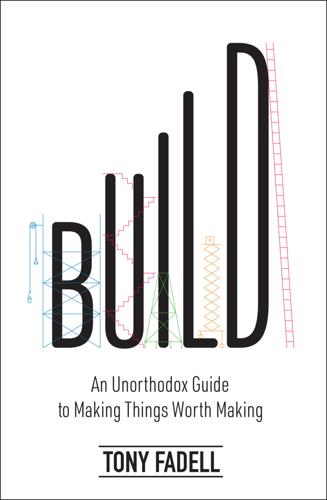
Build: An Unorthodox Guide to Making Things Worth Making
by
Tony Fadell
Published 2 May 2022
All the encouragement, support, and great ideas from friends and readers—Cameron Adams, David Adjay, Cristiano Amon, Frederic Arnault, Hugo Barra, Juliet de Baubigny, Yves Behar, Scott Belsky, Tracy Beiers, Kate Brinks, Willson Cuaca, Marcelo Claure, Ben Clymer, Tony Conrad, Scott Cook, Daniel Ek, Jack Forester, Case Fadell, Pascal Gauthier, Malcolm Gladwell, Adam Grant, Hermann Hauser, Thomas Heatherwick, Joanna Hoffman, Ben Horowitz, Phil Hutcheon, Walter Isaacson, Andre Kabel, Susan Kare (designer of the famous walking lemon, among a million other things), Scott Keogh, Randy Komisar, Swamy Kotagiri, Toby Kraus, Hanneke Krekels, Jean de La Rochebrochard, Jim Lanzone, Sophie Le Guen, Jenny Lee, John Levy, Noam Lovinsky, Chip Lutton, Micky Malka, John Markoff, Alexandre Mars, Mary Meeker, Xavier Niel, Ben Parker, Carl Pei, Ian Rogers, Ivy Ross, Steve Sarracino, Naren Shaam, Kunal Shah, Vineet Shahani, Simon Sinek, David and Alaina Sloo, Whitney Steele, Lisette Swart, Anthony Tan, Min-Liang Tan, Sebastian Thrun, Mariel van Tatenhove, Steve Vassallo, Maxime Veron, Gabe Whaley, Niklas Zennström, Andrew Zuckerman—your frank comments and advice helped so much to shape this book and give us the confidence to continue through the tough weeks.
…
—Randy Komisar, general partner, Kleiner Perkins and author, The Monk and the Riddle “Tony Fadell takes the reader on a rollercoaster ride, revealing what it’s really like to work in Silicon Valley and simultaneously providing a compelling instruction manual for anyone who wants to follow in his footsteps.” —John Markoff, author, Machines of Loving Grace “Tony’s experience can be applied to any builder or creator anywhere in the world. The challenges are always the same, and Tony shares a number of insights on how to navigate them.” —Micky Malka, managing partner, Ribbit Capital “Truly historic anecdotes, backstories, and straight-talk advice from a hall of fame entrepreneur who has seen and done it all.
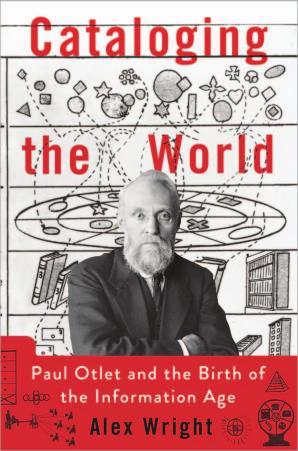
Cataloging the World: Paul Otlet and the Birth of the Information Age
by
Alex Wright
Published 6 Jun 2014
Over the next few years, however, Engelbart’s team began to expand their horizons, working amid the San Francisco Bay area’s petri dish of cultural experimentation. When Engelbart took the stage in San Francisco that day in 1968, many of the attendees felt they had experienced a revelation. As New York Times reporter John Markoff puts it, “Every significant aspect of today’s computing world was revealed in a magnificent hour and a half.”15 Some members of that audience became enthusiastic converts to the digital revolution. Brown University computer science professor and early hypertext pioneer Andy van Dam was there and subsequently dubbed the event “the Mother of all Demos.”
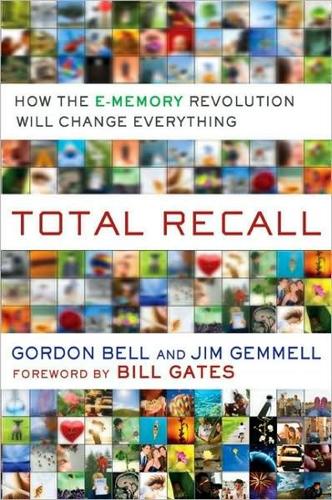
Total Recall: How the E-Memory Revolution Will Change Everything
by
Gordon Bell
and
Jim Gemmell
Published 15 Feb 2009
The data and report illustrate Gray’s fondness for understanding through constant building and experimentation. Through various paths, Jim infected me with the importance of data. It’s “all about the data,” he would say. In one of our more playful times, while discussing how to get the concern for data into the national computing resource allocation agenda, we bumped into John Markoff, a friend and columnist at The New York Times who also had an office in our building. We made the case that the national computing agenda was missing the point by just thinking about computation speed. John took our picture in the lab on Friday and wrote an article that appeared in the Times on Sunday.

Delete: The Virtue of Forgetting in the Digital Age
by
Viktor Mayer-Schönberger
Published 1 Jan 2009
In fact, information on a hard disk drive even survived the catastrophic disintegration of Space Shuttle Columbia. See Minkel, “Hard Disk Recovered from Columbia Shuttle.” 27. See, for example, Oakley, “E-Beam Hard Disk Drive Using Gated Carbon Nano Tube Source and Phase Change Media,” 245–50. 28. John Markoff, “H. P. Reports Big Advance in Memory Chip Design,” The New York Times, May 1, 2008. 29. Markoff, “Redefining the Architecture of Memory,” The New York Times. 30. Eisenstein, The Printing Revolution, 64–73. 31. Kilgour, The Evolution of the Book, 76–77. 32. Ibid., 94–95. 33. Cole, Suspect Identities. 34.

What Technology Wants
by
Kevin Kelly
Published 14 Jul 2010
New York: Schenkman Publishing, p. 66. 134 known in statistics as a Poisson distribution: Dean Keith Simonton. (1978) “Independent Discovery in Science and Technology: A Closer Look at the Poisson Distribution.” Social Studies of Science, 8 (4). 134 greatest discoverers buy lots of tickets: Dean Keith Simonton. (1979) “Multiple Discovery and Invention: Zeitgeist, Genius, or Chance?” Journal of Personality and Social Psychology, 37 (9). 134 Westinghouse laboratory in Paris: John Markoff. (2003, February 24) “A Parallel Inventor of the Transistor Has His Moment.” New York Times. http://www.nytimes.com/2003/02/24/business/a-parallel-inventor-of-the-transistor-has-his-moment. html. 135 within months of each other in 1977: Adam B. Jaffe, Manuel Trajtenberg, et al. (2000, April) “The Meaning of Patent Citations: Report on the NBER/Case-Western Reserve Survey of Patentees.”
…
London: Gordon and Breach, p. 43. 158 to the Moon quite soon after that: Damien Broderick. (2002) The Spike: How Our Lives Are Being Transformed by Rapidly Advancing Technologies. New York: Forge, p. 35. 158 “Arthur C. Clarke had expected it to occur”: Ibid. 159 start-up making the integrated chips: John Markoff. (2005) What the Dormouse Said: How the 60s Counterculture Shaped the Personal Computer. New York: Viking, p. 17. 160 Plotting Moore’s Law: Data from Gordon Moore. (1965) “The Future of Integrated Electronics.” Understanding Moore’s Law: Four Decades of Innovation, ed. David C. Brock. Philadelphia: Chemical Heritage Foundation, p. 54. https://www.chemheritage.org/pubs/moores_law/; David C.

From Airline Reservations to Sonic the Hedgehog: A History of the Software Industry
by
Martin Campbell-Kelly
Published 15 Jan 2003
Publisher Product Price Announced Released Notes VisiCorp VisiOn $495 November 1982 January 1984 Price reduced to $95 Digital Research GEM $399 November 1983 September 1984 Price included Concurrent DOS Microsoft Windows 1.0 $95 November 1983 November 1985 IBM TopView $149 August 1984 February 1985 Quarterdeck DESQ $399 Spring 1983 May 1984 Sources: John Markoff, “Five Window Managers for the IBM PC,” Byte Guide to the IBM PC (Fall 1984): 65–7, 71–6, 78, 82, 84, 87; Irene Fuerst, “Broken Windows,” Datamation (March 1, 1985): 46, 51–2; Allen G. Taylor, “It’s Gem vs. Topview as IBM, DRI Square Off,” Software News (August 1985): 71–3; Ken Polsson, History of Microcomputers: Chronology of Events, http://www.maxframe.com/hiszcomp.htm (accessed December 2000).
…
Steven Levy, Insanely Great: The Life and Times of Macintosh, the Computer That Changed Everything (Penguin, 1994). 28. See, e.g., “A Fierce Battle Brews Over the Simplest Software Yet,” Business Week, November 21, 1983: 61–63. 29. Phil Lemmons, “A Guided Tour of VisiOn,” Byte, June 1983: 256ff. 30. Irene Fuerst, “Broken Windows,” Datamation, March 1, 1985: 46, 51–52. 31. John Markoff, “Five Window Managers for the IBM PC,” Byte Guide to the IBM PC, fall 1984: 65–66, 71–76, 78, 82, 84, 87. 32. Efrem Sigel, “Alas Poor VisiCorp,” Datamation, January 15, 1985: 93–94, 96. 33. Lawrence D. Graham, Legal Battles That Shaped the Computer Industry (Quorum Books, 1999), pp. 35–41. 34.
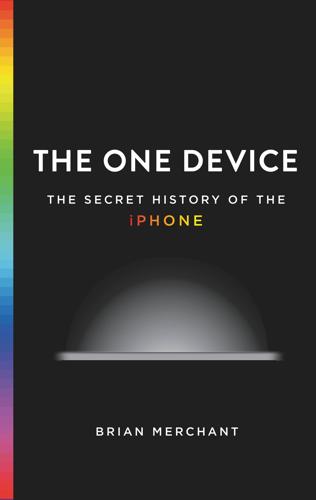
The One Device: The Secret History of the iPhone
by
Brian Merchant
Published 19 Jun 2017
Apple is one of the most secretive companies in the world, and the imperative originated at the top. Jobs was always proactive in managing his company’s media appearances; from the early days, he was keen on developing relationships with editors and writers at the major magazines and newspapers. But he wasn’t always super-secretive. The New York Times reporter John Markoff, one of the writers who’d earned access to Apple, noticed the change in the late 1990s and early 2000s. “Since Mr. Jobs returned to Apple, he has increasingly insisted that the company speak with just the voices of top executives,” Markoff noted after being denied an interview with a driving force behind the iPod, Tony Fadell.
…
Books that provided extraordinarily useful detail, research, and background were Dogfight, by Fred Vogelstein; Steve Jobs, by Walter Isaacson; Becoming Steve Jobs, by Brent Schlender; Inside Apple, by Adam Lashinsky; and Jony Ive, by Leander Kahney. Quotes attributed to Jony Ive, Steve Jobs, Mike Bell, and Douglas Satzger were drawn from those sources. John Markoff’s New York Times reporting and Steven Levy’s book The Perfect Thing and his work in Newsweek were used for reference. Sales figures cited are provided by Apple unless otherwise stated. Acknowledgments A key theme of this book is that little progress is possible without deep collaboration and sustained collective effort—nothing could be truer about writing this thing too.

Fire in the Valley: The Birth and Death of the Personal Computer
by
Michael Swaine
and
Paul Freiberger
Published 19 Oct 2014
Even Steve Jobs came to admire the first edition of this book, saying, “Reading it made me cry, thinking about those early days.” Fire in the Valley has stood the test of time well. It remains a great adventure that gives the reader a sense of being close to a historical movement that is still playing itself out. John Markoff Senior writer, science section, The New York Times San Francisco, May 2014 Copyright © 2014, The Pragmatic Bookshelf. Preface to the Third Edition It was a magic, crazy time when cranks and dreamers saw the power they imagined drop into their hands and used it to change the world.
…
Our friends Eva Langfeldt and John Barry read our initial proposal; Dave Needle provided timely research assistance; Thom Hogan initially prodded us to do the book and offered many useful suggestions; Dan McNeill often found just the right word; Nancy Groth brought grace with a red pencil; Nelda Cassuto offered sweet support in the form of zabaglione and editing; Levi Thomas and Laura Brisbee lent photographic expertise; Amy Hyams provided patient research and friendly conversation; Carol Moran opened secret doors; Scott Kildall gave his trust; John Markoff provided knowledge, insight, and friendship and wrote the foreword; Jason Lewis shared software wizardry; David Reed made corrections from his kitchen on the other coast; Charlie Athanas provided timely and generous insights; former colleagues Judy Canter, Phil Bronstein, and Richard Paoli of the San Francisco Examiner opened photo archives; Howard Bailen gave endless and persistent support.
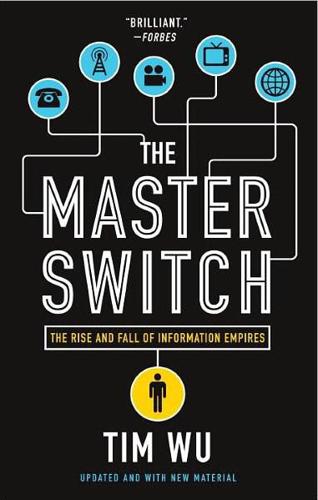
The Master Switch: The Rise and Fall of Information Empires
by
Tim Wu
Published 2 Nov 2010
Ten years before Licklider wrote his paper, for instance, a young engineer named Douglas Engelbart was pondering what he might do with his life. He was recently married yet felt himself lost, an idealist in search of a meaningful contribution. One evening in 1950 he was struck with a powerful vision: a general purpose machine that might augment human intelligence and help humans negotiate life’s complexities. John Markoff, who has documented Engelbart’s life carefully, describes the vision in some detail: Engelbart “saw himself sitting in front of a large computer screen full of different symbols. He would create a workstation for organizing all of the information and communications needed for any given project.”5 Engelbart’s ideas were similar to Licklider’s, if a bit further along in their development.
…
For Rheingold’s description of the AN/FSQ-7, see Howard Rheingold, Tools for Thought: The History and Future of Mind-Expanding Technology (Cambridge, MA: MIT Press, 2000), 142–44. 4. J.C.R. Licklider, “Man-Computer Symbiosis,” IRE Transactions on Human Factors in Electronics HFE-1 (1960): 4. 5. John Markoff, What the Dormouse Said: How the Sixties Counterculture Shaped the Personal Computer Industry (New York: Penguin, 2005), 9. 6. For an extensive discussion of Baran’s career and innovations, see Katie Hafner and Matthew Lyon, Where Wizards Stay Up Late: The Origins of the Internet (New York: Touchstone, 1996), 53–67.
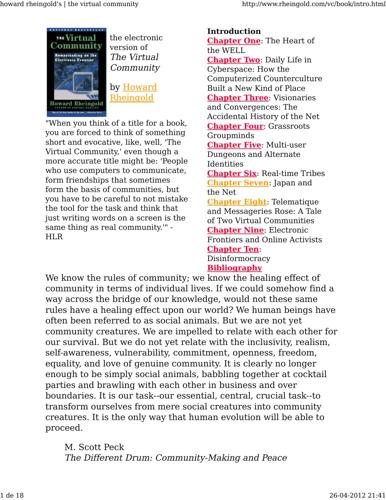
Howard Rheingold
by
The Virtual Community Homesteading on the Electronic Frontier-Perseus Books (1993)
Published 26 Apr 2012
IBM and MCI's venture, ANS, had been managing NSFNET since 1987; in 1991, ANS, a nonprofit corporation, set up a for-profit subsidiary called ANS CO+RE to sell CMC services. In a December 1991 story in the New York Times , headlined "U.S. Said to Play Favorites in Promoting Nationwide Computer Network," technology reporter John Markoff , who broke the story of the Morris Worm, wrote, "Just one week after President Bush signed legislation calling for the creation of a nationwide computer data `superhighway,' a debate has erupted over whether the government gave an unfair advantage to a joint venture of IBM and MCI that built and manages a key part of the network."
…
Neither of the major newsmagazines mentioned the potential for many-to-many communications between citizens. The most powerful alliance was disclosed in June 1993. Microsoft, the company started by home-brew PC hobbyist Bill Gates, dominates the PC software market. Tele-Communications Inc. is the world's largest cable television company. On June 13, John Markoff reported on the first page of the New York Times that Time-Warner, Microsoft, and Tele-Communications Inc. were forming a joint venture that, in Markoff's words, "would combine the worlds of computing and television and perhaps shape how much of popular culture is delivered." Markoff quoted James F.
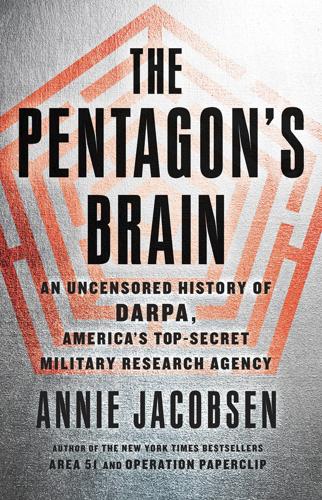
The Pentagon's Brain: An Uncensored History of DARPA, America's Top-Secret Military Research Agency
by
Annie Jacobsen
Published 14 Sep 2015
In August 2002, John Poindexter unveiled TIA at the DARPATech conference in Anaheim, California. This technology conference marked the beginning of the program’s public end. In November 2002, a New York Times headline read “Pentagon Plans a Computer System That Would Peek at Personal Data of Americans.” Reporter John Markoff wrote that the Department of Defense had initiated a massive computer-based domestic surveillance program, “a vast electronic dragnet, searching for personal information as part of the hunt for terrorists around the globe—including the United States… without a search warrant.” Markoff named DARPA as the agency in charge, and reported that the computer system was called Total Information Awareness.
…
Robert Popp, DARPA’s Initiative on Countering Terrorism, TIA, Terrorism Information Awareness, Overview of TIA and IAO Programs, briefing slides. 26 a whooshing sound: Glenn Greenwald, “Inside the Mind of NSA Chief Gen. Keith Alexander,” Guardian, September 15, 2013. 27 “initial TIA experiment”: Quotes are from interview with Bob Popp; see also Harris, 187. 28 “a vast electronic dragnet”: John Markoff, “Pentagon Plans a Computer System That Would Peek at Personal Data of Americans,” New York Times, November 9, 2002. 29 Safire wrote: William Safire, “You Are a Suspect,” New York Times, November 14, 2002. 30 285 stories: Robert L. Popp and John Yen, 409. 31 true numbers: Belasco memo; DefenseNet transfers from Project ST-28 in FY2002 to Project ST-11 in 2003. 32 No interviews: Interview with Bob Popp, June 2014. 33 “I don’t know much about it”: U.S.
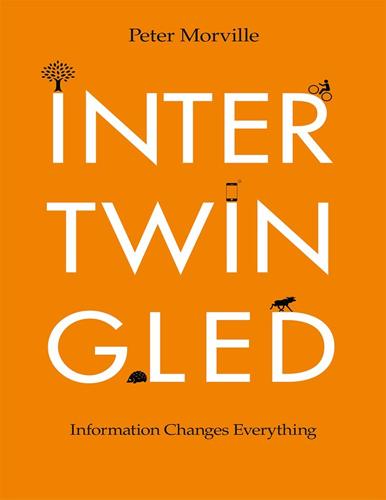
Intertwingled: Information Changes Everything
by
Peter Morville
Published 14 May 2014
cxli Motor Vehicle Crash Injury Rates by Mode of Travel (2007). cxlii The Exercise Cure by Dr. Jordan Metzl (2013). cxliii The Hitchhiker’s Guide to the Galaxy by Douglas Adams (1979), p.76. cxliv The Outer Limits of Reason by Noson Yanofsky (2013), p.40. cxlv Yanofsky (2013), p.291. cxlvi Scientists Report Finding Reliable Way to Teleport Data by John Markoff (2014). cxlvii Yanofsky (2013), p.201. cxlviii The Closing Circle by Barry Commoner (1971). cxlix The Limits to Growth by Donella Meadows, Dennis Meadows, Jorgen Randers, and William Behrens III (1972). cl Meadows (1972), p.1. cli Beyond the Limits by Donella Meadows, Dennis Meadows, and Jorgen Randers (1992).
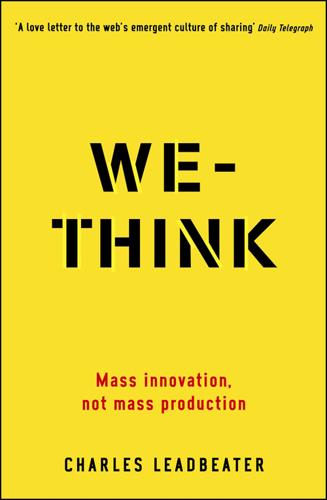
We-Think: Mass Innovation, Not Mass Production
by
Charles Leadbeater
Published 9 Dec 2010
Available from http:// www.msnbc.msn.com/id/12015774/site/newsweek 16 Fred Turner, From Counterculture to Cyberculture (Chicago, IL/London: University of Chicago Press, 2006) 17 Patrice Flichy, The Internet Imaginaire (Cambridge, MA: MIT Press, 2007) 18 Charles Leadbeater, ‘The DIY State’, Prospect 130, January 2007 19 Fred Turner, op. cit. 20 John Markoff, What the Dormouse Said: How the Sixties Counterculture Shaped the Personal Computer Industry (Penguin, 2006) 21 Patrice Flichy, The Internet Imaginaire (Cambridge, MA: MIT Press, 2007) 22 Jonathan Lethem, ‘The Ecstasy of Influence’, Harper’s Magazine, February 2007 23 Garrett Hardin, ‘The Tragedy of the Commons’, Science 162 (1968), pp. 1243–48 24 Elenor Ostrom, Governing the Commons (Cambridge University Press, 1990) 25 Lawrence Lessig, Code and Other Laws of Cyberspace (New York, NY: Basic Books, 1999) and Free Culture (New York, NY: Penguin Press, 2004) 26 Melvyn Bragg, The Routes of English (BBC Factual and Learning, 2000); Melvyn Bragg, The Adventure of English (Hodder & Stoughton Ltd, 2003) 27 Jonathan Lethem, ‘The Ecstasy of Influence’, Harper’s Magazine, February 2007 28 Cory Doctorow et al., ‘On “Digital Maoism: The Hazards of the New Online Collectivism” By Jaron Lanier’, Edge (2006). http://www.edge.org/discourse/digital_ maoism.html 29 Paul A.
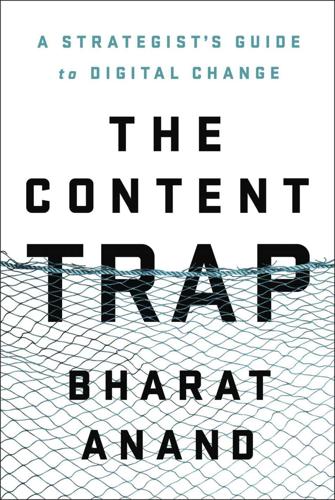
The Content Trap: A Strategist's Guide to Digital Change
by
Bharat Anand
Published 17 Oct 2016
Facebook introduced Facebook Platform Mikolaj Jan Piskorski et al., “Facebook,” HBS No. 808-128 (Boston: Harvard Business Publishing, rev. March 20, 2014); Michael Arrington, “Facebook Responds to MySpace with Facebook Connect,” TechCrunch , May 9, 2008. Marketplace Stig Leschly et al., “Amazon.com—2002,” HBS No. 803-098 (Boston: Harvard Business Publishing, November 21, 2002). the App Store John Markoff and Laura M. Holson, “Apple’s Latest Opens a Developers’ Playground,” New York Times , July 10, 2008. to more than a billion Barbara Ortutay, “Facebook Tops 1 Billion Users,” Associated Press, October 4, 2012; Julie Sloane, “Facebook Got Its $15 Billion Valuation—Now What?,” Wired, October 26, 2007.
…
the numbers hadn’t increased much “Apple’s iTunes Store Passes 35 Billion Songs Sold Milestone,” MacDailyNews, May 29, 2014, accessed March 30, 2016; http://mac -dailynews.com/2014/05/29/apples-itunes-store-passes-35-billion-songs-sold-milestone-itunes-radio-now-has-40-million-listeners/ . “If anything can play on anything” John Markoff, “Jobs Calls for End to Music Copy Protection,” New York Times . A tire manufacturer I owe this example to Felix Oberholzer-Gee. “This isn’t a device, it’s a service” Jeff Bezos quoted in Steven Levy, “Amazon: Reinventing the Book,” Newsweek . In 2009 Tata Motors Information about Tata Nano here and elsewhere in the book is drawn primarily from Krishna Palepu, Bharat Anand, et al., “Tata Nano—The People’s Car,” HBS No. 710-420 (Boston: Harvard Business Publishing, rev.

Exploding the Phone: The Untold Story of the Teenagers and Outlaws Who Hacked Ma Bell
by
Phil Lapsley
Published 5 Feb 2013
“It had more to do with the difficulty of opening up a bank account when you have the word ‘Party’ in your name.” 319 Third Annual Phone Phreak Convention: YIPL ran phone phreak conventions in 1972 and 1973, but a dry spell followed until THC-79. 319 “For several reasons, I have permanently retired”: John Draper, “Greetings” (open letter to THC-79 attendees), TAP, no. 59, September–October 1979. 320 “While intrepidly trekking”: Cheshire Catalyst, “The News Is In from the West, and It’s Beige,” TAP, no. 51, July 1978, p. 4. 320 CBBS: Ward Christensen and Randy Suess, “Hobbyist Computerized Bulletin Board,” Byte, vol. 3, no. 11, pp. 150–57. 320 first phone phreak/hacker BBSes: Katie Hafner and John Markoff, Cyberpunk: Outlaws and Hackers on the Computer Frontier (New York: Simon & Schuster, 1991), p. 44; see also a description of the 8BBS in Santa Clara, California, which ran from 1980 to 1982, at http://everything2.com/title/8BBS. 321 “Enclosed for Bureau”: FBI file 117-HQ-2905, serial “X,” April 30, 1979 <db374>. 321 “nuclear yield”: FBI file 117-HQ-2905, serial 3, August 24, 1979 <db374>. 321 Judge Harold Greene: In an odd coincidence, in 1980 as part of a totally separate case, Judge Greene “ordered the FBI to stop destroying its surveillance files and to design a plan in which no files could be destroyed until historians and archivists could review them for historical value.”
…
Monaghan, in “The Child in a Man,” puts the year Engressia began calling himself Joybubbles as 1988. 328 “We were on a retreat”: Jim Ragsdale, “One Name Says It All,” St. Paul Pioneer Press, November 27, 2005, p. A1. 328 “I’m a survivor”: Huse, interview with Joybubbles. 329 legally changed his name: Ibid. 329 “Nobody knows how much peace”: Collier, “There’s Martin Luther King.” 329 selected it to be the word processor: John Markoff and Paul Freiberger, “Visit with Cap’n Software, Forthright Forth Enthusiast,” Infoworld, October 11, 1982, p. 31. 329 “wealthy executive”: Pete Carey, “Cap’n Crunch Programs His Way from Jail to Success,” Chicago Tribune, May 25, 1983, p. D1. 329 personal fortunes were crumbling: Alexander Besher, “The Crunching of America,” Infoworld, June 18, 1984, p. 66. 329 forging tickets to BART: Gary Richards, “‘Captain Crunch’ Charged in Ticket Forgery,” San Jose Mercury News, January 9, 1987, p. 1B; “John Draper at AutoDesk,” DigiBarn Computer Museum interview with John Draper, May 2006, at http://www.digibarn.com/collections/audio/digibarn-radio/06-05-john-draper-autodesk. 330 where-are-they-now newspaper article: Chris Rhodes, “The Twilight Years of Cap’n Crunch,” Wall Street Journal, January 13, 2007. 330 TAP ceased publication: See http://artofhacking.com/tap.

Robot Rules: Regulating Artificial Intelligence
by
Jacob Turner
Published 29 Oct 2018
To hold rights, therefore, is to coexist with others capable of upholding or infringing upon those rights. This social feature of rights underscores the importance of considering how humans (as well as other entities already afforded rights, like corporations and animals) are to live alongside AI as it becomes increasingly prevalent. As science journalist and author John Markoff has written, we will need to ask ourselves whether robots are to become “our masters, slaves, or partners”.4 Following Markoff’s lead, this chapter asks whether AI can or should be treated as a “moral patient”, namely the subject of certain protections from the actions of “moral agents”. As explained in Chapter 2 at Section 2.1, agency involves a party being capable of understanding and acting on certain rules and principles.
…
This chapter and Chapter 8 distinguish between those rules which apply to “creators” and those which apply to “creations”. The term creators refers to the humans who (at present) design, programme, operate, collaborate with and otherwise interact with AI. Creations means the AI itself. Technology journalist John Markoff writes in Machines of Loving Grace: “[t]he best way to answer the hard questions about control in a world full of smart machines is by understanding the values of those who are actually building these systems”.2 This is true up to a point, but the answers to “hard questions” will also be shaped by what is technologically possible.
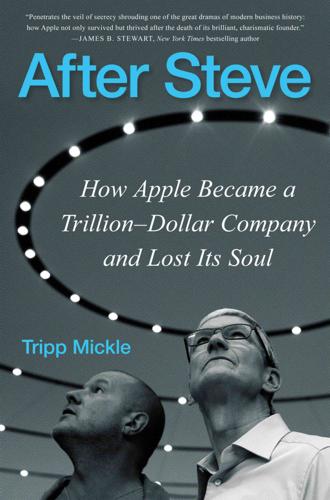
After Steve: How Apple Became a Trillion-Dollar Company and Lost Its Soul
by
Tripp Mickle
Published 2 May 2022
Laura Stevens read and improved an entire draft in forty-eight hours; Eliot Brown helped set the structure and refine the manuscript; Justin Catanoso assisted with outlining; John Ourand strategized on whom to call; and Rob Copeland pushed my reporting. As brilliant as they are, they are first and foremost amazing friends. The technology industry is complex, and learning about it requires guides. I was blessed with many, but none were more valuable than John Markoff and Talal Shamoon. Special thanks and love to my family for their encouragement, including my in-laws, Sally and Mark, and the Coopers, Jennifer, Josh, Madelynn, and Nathaniel. My parents, Marilynn and Russ, supported my interest in journalism and armed me with skills I use daily, including listening with curiosity and appreciating the written word.
…
Pascal Zachary and Ken Yamada, “Apple Picks Spindler for Rough Days Ahead,” Wall Street Journal, June 21, 1993. To reverse the declining sales: Interviews with Robert Brunner and Tim Parsey. Ive’s boss, Robert Brunner: Emma O’Kelly, “I’ve Arrived,” Design Week, December 6, 1996, https://www.designweek.co.uk/issues/5-december-1996/ive-arrived/; John Markoff, “At Home with: Jonathan Ive: Making Computers Cute Enough to Wear,” New York Times, February 5, 1998, https://www.nytimes.com/1998/02/05/garden/at-home-with-jonathan-ive-making-computers-cute-enough-to-wear.html. “This is Jony”: Interview with Tim Parsey, former Apple design studio manager, 1991–1996.

Thank You for Being Late: An Optimist's Guide to Thriving in the Age of Accelerations
by
Thomas L. Friedman
Published 22 Nov 2016
“By opening the way to non-silicon materials it gave Moore’s law another shot in the arm at a time when many people were thinking it was coming to an end,” said Sadasivan Shankar, who worked on Intel’s material design team at the time and now teaches materials and computational sciences at the Harvard School of Engineering and Applied Sciences. Commenting on the breakthrough, the New York Times Silicon Valley reporter John Markoff wrote on January 27, 2007: “Intel, the world’s largest chip maker, has overhauled the basic building block of the information age, paving the way for a new generation of faster and more energy-efficient processors. Company researchers said the advance represented the most significant change in the materials used to manufacture silicon chips since Intel pioneered the modern integrated-circuit transistor more than four decades ago.”
…
champions in a three-day competition, Watson demonstrated the solution to the problem that “artificial intelligence researchers have struggled with for decades”: to create “a computer akin to the one on Star Trek that can understand questions posed in natural language and answer them” in natural language, as my colleague John Markoff put it in his February 16, 2011, New York Times story summing up the competition. Watson, by the way, won handily, showing great facility with some pretty complex clues that might easily stump a human, such as this one: “You just need a nap. You don’t have this sleep disorder that can make sufferers nod off while standing up.”

Age of Context: Mobile, Sensors, Data and the Future of Privacy
by
Robert Scoble
and
Shel Israel
Published 4 Sep 2013
Some experts are more optimistic about when driverless cars will arrive in a showroom near you. Bob Lutz, GM’s retired vice chairman, predicts that driverless cars would be ubiquitous in about 20 years. We think it will be more like ten years before the vehicles are technically ready and affordable. In the time it took us to write this chapter, our friend John Markoff, a New York Times technology reporter, may have witnessed a technological breakthrough when he was a passenger in a driverless, lidar-less Audi A7 that zipped down an Israeli highway at 65 miles an hour. Equipped with a system from a Netherlands-based start up called Mobileye Vision Technologies, the system could significantly reduce costs compared with lidar-based systems.

Futureproof: 9 Rules for Humans in the Age of Automation
by
Kevin Roose
Published 9 Mar 2021
An Oxford economist’s robust history of technological change, with new research and assumption-challenging conclusions. AI Superpowers by Kai-Fu Lee (2018). Lee, an experienced AI leader and venture capitalist, gave me new language to use in talking about AI and humanity, and provided a valuable window onto the Chinese AI market. Machines of Loving Grace by John Markoff (2015). Markoff, a legendary tech journalist and my former colleague at the Times, is an essential guide to the world of AI, and an expositor of the people and philosophy behind its design. Forces of Production by David F. Noble (1984). This book, an examination of the automation landscape after World War II, was essential to my thinking on the culture of industrial automation.

This Is Your Country on Drugs: The Secret History of Getting High in America
by
Ryan Grim
Published 7 Jul 2009
Psychedelic drugs have influenced some of America’s foremost computer scientists. The history of this connection is well documented in a number of books, the best probably being What the Dormouse Said: How the 60s Counterculture Shaped the Personal Computer, by New York Times technology reporter John Markoff. Psychedelic drugs, Markoff argues, pushed the computer and Internet revolutions forward by showing folks that reality can be profoundly altered through unconventional, highly intuitive thinking. Douglas Engelbart is one example of a psychonaut who did just that: he helped invent the mouse. Apple’s Steve Jobs has said that Microsoft’s Bill Gates would “be a broader guy if he had dropped acid once.”

Palo Alto: A History of California, Capitalism, and the World
by
Malcolm Harris
Published 14 Feb 2023
Here it’s the connectors who are more responsible than the inventors or even the specific siloed visionaries—men such as Frederick Terman, who coordinated the birth of Silicon Valley from the Stanford provost’s office, or the venture capitalists who adopted companies into corporate family structures inspired by the Japanese. More sophisticated than the Great Man version, this ecosystem analysis still takes its object for granted. The Great Region histories, like AnnaLee Saxenian’s Regional Advantage and John Markoff’s What the Dormouse Said, see Silicon Valley as a place of creation rather than transformation. By placing these stories in the context of statewide, national, and global changes in the relations between workers and owners, we can better understand the microcomputer industry. Steve Jobs and Bill Gates are very important characters in the story, but they’re more meaningful as personifications of impersonal social forces.
…
Leslie Berlin, Troublemakers: Silicon Valley’s Coming of Age (New York: Simon & Schuster, 2017), 29. 12. Michael A. Hiltzik, Dealers of Lightning: Xerox PARC and the Dawn of the Computer Age (New York: HarperBusiness, 1999), 67, 78. 13. Engelbart, “Augmenting Human Intellect,” para. 4d. 14. John Markoff, What the Dormouse Said—: How the Sixties Counterculture Shaped the Personal Computer Industry (New York: Viking, 2005), 26–28. 15. Jay Stevens, Storming Heaven: LSD and the American Dream, Perennial Library (New York: Harper & Row, 1995), 178. 16. Willis W. Harman et al., “Psychedelic Agents in Creative Problem-Solving: A Pilot Study,” Psychological Reports 19, no. 1 (August 1966): 211–27. 17.
…
Pete Carey, “A Start-Up’s True Tale,” San Jose Mercury News, December 1, 2001, http://pdp10.nocrew.org/docs/cisco.html. 4. Mike Wilson, The Difference between God and Larry Ellison (New York: Morrow, 1997), 99. 5. Mark Hall and John Barry, Sunburst: The Ascent of Sun Microsystems (Chicago: Contemporary Books, 1990), 14. 6. Ibid., 16, 20–21. 7. John Markoff, “Russian Research Pact for Sun Microsystems,” New York Times, September 2, 1992. 8. Douglas Fairbairn and Andy Bechtolsheim, “Oral History of Andreas ‘Andy’ Bechtolsheim,” (Computer History Museum, July 17, 2015), 5. 9. Amy Harmon, “Like ‘Toy Story,’ Pixar Stock Is a Hit Its First Day on the Street,” Los Angeles Times, November 30, 1995. 10.
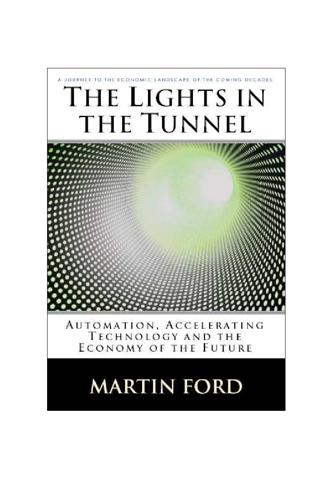
The Lights in the Tunnel
by
Martin Ford
Published 28 May 2011
Web: http://news.bbc.co.uk/2/hi/europe/7293992.stm 56 Blue Brain Project, Web: http://bluebrain.epfl.ch/ 57 Roger Penrose, The Emperor’s New Mind: Concerning Computers, Minds, and the Laws of Physics, Oxford University Press, 1989 and Shadows of the Mind: A Search for the Missing Science of Consciousness, Oxford University Press, 1994. 58 For example: John Markoff, “Scientists worry that Machines may Outsmart Man”, New York Times, July 25, 2009. Web: http://www.nytimes.com/2009/07/26/science/26robot.html?em
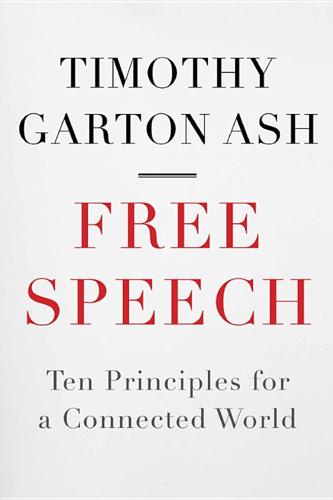
Free Speech: Ten Principles for a Connected World
by
Timothy Garton Ash
Published 23 May 2016
See also Internet Society, ‘Brief History of the Internet’, http://perma.cc/SNY8-TYAE 20. Mueller 2004, 86 21. Berners-Lee 1999, chapters 2–4; see also the original website at http://perma.cc/MWR3-VASS 22. see ‘The End of Moore’s Law’, The Economist, 19 April 2015, http://www.economist.com/blogs/economist-explains/2015/04/economist-explains-17 and John Markoff, ‘Smaller, Faster, Cheaper, Over’, New York Times, 27 September 2015, http://www.nytimes.com/2015/09/27/technology/smaller-faster-cheaper-over-the-future-of-computer-chips.html. Note that Moore’s Law is variously cited as predicting that the number of transistors on a microchip will double every two years, or every 18 months, while he originally predicted that it would happen every year.
…
Note that the UN estimate includes some 775 million adults and 122 million illiterate youth 29. Shteyngart 2010 30. Kurzweil 2005 31. Weizenbaum 1984 and Carr 2010, 201–8 32. Ian Sample and Alex Hern, ‘Scientists Dispute Whether Computer ‘Eugene Goostman’ Passed Turing Test’, The Guardian, 9 June 2014, http://perma.cc/9YMC-LJW7 33. John Markoff et al., ‘For Sympathetic Ear, More Chinese Turn to Smartphone Program’, New York Times, 31 July 2015, http://www.nytimes.com/2015/08/04/science/for-sympathetic-ear-more-chinese-turn-to-smartphone-program.html 34. see Future of Life Institute, ‘Research Priorities for Robust and Beneficial Artificial Intelligence: An Open Letter’, http://perma.cc/ZD2A-DP7E, and Martin Rees, ‘Cheer Up, the Post-Human Era Is Dawning’, Financial Times, 10 July 2015, http://www.ft.com/cms/s/0/4fe10870-20c2-11e5-ab0f-6bb9974f25d0.html#axzz3qv6zRoSp 35. this is essentially also the conclusion of Wu 2013 36. on the often neglected subject of touch, see Linden 2015 37.
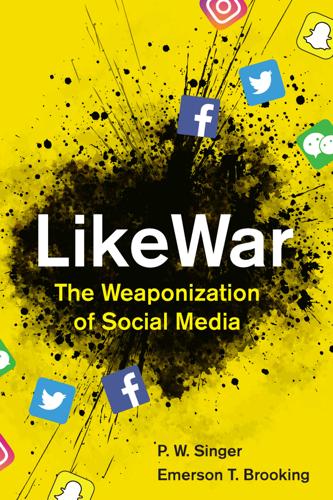
Likewar: The Weaponization of Social Media
by
Peter Warren Singer
and
Emerson T. Brooking
Published 15 Mar 2018
Howard and Bence Kollanyi, “Bots, #Strongerin, and #Brexit: Computational Propaganda During the UK-EU Referendum,” arXiv:1606.06356 [cs.SI], June 20, 2016. 143 ratio of five to one: Ibid. 143 linked to Russia: Robert Booth et al., “Russia Used Hundreds of Fake Accounts to Tweet About Brexit, Data Shows,” The Guardian, November 14, 2017, https://www.theguardian.com/world/2017/nov/14/how-400-russia-run-fake-accounts-posted-bogus-brexit-tweets. 143 less than 1 percent: Howard and Kollanyi, “Bots, #Strongerin, and #Brexit.” 143 roughly 400,000 bot accounts: Alessandro Bessi and Emilio Ferrara, “Social Bots Distort the 2016 U.S. Presidential Election Online Discussion,” First Monday 21, no. 11 (November 2016), http://firstmonday.org/ojs/index.php/fm/article/view/7090/5653. 143 “colonized” pro-Clinton hashtags: John Markoff, “Automated Pro-Trump Bots Overwhelmed Pro-Clinton Messages, Researchers Say,” New York Times, November 17, 2016, https://www.nytimes.com/2016/11/18/technology/automated-pro-trump-bots-overwhelmed-pro-clinton-messages-researchers-say.html?nytmobile=0&_r=0. 143 five-to-one ratio: Bence Kollanyi, Philip N.
…
Awakening,” New York Times Magazine, December 14, 2016, https://www.nytimes.com/2016/12/14/magazine/the-great-ai-awakening.html. 249 “giant machine democracy”: Ibid. 249 Google Brain project: Quoc V. Le et al., “Building High-Level Features Using Large Scale Unsupervised Learning,” in Proceedings of the 29th International Conference on Machine Learning (Edinburgh, 2012). 249 pictures of cats: John Markoff, “How Many Computers to Identity a Cat? 16,000,” New York Times, June 25, 2012, http://www.nytimes.com/2012/06/26/technology/in-a-big-network-of-computers-evidence-of-machine-learning.html. 249 “We never told it”: Ibid. 250 where to put the traffic lights: Erik Brynjolfsson and Andrew McAfee, “The Business of Artificial Intelligence,” Harvard Business Review, July 2017, https://hbr.org/2017/07/the-business-of-artificial-intelligence. 250 more than a million: Joaquin Quiñonero Candela, “Building Scalable Systems to Understand Content,” Facebook Code, February 2, 2017, https://code.facebook.com/posts/1259786714075766/building-scalable-systems-to-understand-content/. 250 wearing a black shirt: Ibid. 250 80 percent: “An Update on Our Commitment to Fight Violent Extremist Content Online,” Official Blog, YouTube, October 17, 2017, https://youtube.googleblog.com/2017/10/an-update-on-our-commitment-to-fight.html. 250 “attack scale”: Andy Greenberg, “Inside Google’s Internet Justice League and Its AI-Powered War on Trolls,” Wired, September 19, 2016, https://www.wired.com/2016/09/inside-googles-internet-justice-league-ai-powered-war-trolls/. 251 about 90 percent: Ibid. 251 thoughts of suicide: Vanessa Callison-Burch, Jennifer Guadagno, and Antigone Davis, “Building a Safer Community with New Suicide Prevention Tools,” Facebook Newsroom, March 1, 2017, https://newsroom.fb.com/news/2017/03/building-a-safer-community-with-new-suicide-prevention-tools/%20https://newsroom.fb.com/news/2017/03/building-a-safer-community-with-new-suicide-prevention-tools/. 251 database of facts: Jonathan Stray, “The Age of the Cyborg,” Columbia Journalism Review, Fall/Winter 2016, https://www.cjr.org/analysis/cyborg_virtual_reality_reuters_tracer.php. 251 managing the “trade-offs”: Kurt Wagner, “Facebook’s AI Boss: Facebook Could Fix Its Filter Bubble If It Wanted To,” Recode, December 1, 2016, https://www.recode.net/2016/12/1/13800270/facebook-filter-bubble-fix-technology-yann-lecun. 251 Their more advanced version: For a good overview, see “Cleverbot Data for Machine Learning,” Existor, accessed March 20, 2018, https://www.existor.com/products/cleverbot-data-for-machine-learning/. 252 machine-driven communications tools: Matt Chessen, “Understanding the Psychology Behind Computational Propaganda,” in Can Public Diplomacy Survive the Internet?

The Singularity Is Nearer: When We Merge with AI
by
Ray Kurzweil
Published 25 Jun 2024
BACK TO NOTE REFERENCE 156 For a representative video clip from the matches and analyses of Watson and the competition, see OReilly, “Jeopardy! IBM Challenge Day 3 (HD) Ken Jennings vs. WATSON vs. Brad Rutter (02-16-11),” Vimeo video, June 19, 2017, https://vimeo.com/222234104; Sam Gustin, “Behind IBM’s Plan to Beat Humans at Their Own Game,” Wired, February 14, 2011, https://www.wired.com/2011/02/watson-jeopardy; John Markoff, “Computer Wins on ‘Jeopardy!’: Trivial, It’s Not,” New York Times, February 16, 2011, https://www.nytimes.com/2011/02/17/science/17jeopardy-watson.html. BACK TO NOTE REFERENCE 157 “Show #6088—Wednesday, February 16, 2011,” J! Archive, accessed April 30, 2023, https://j-archive.com/showgame.php?
…
BACK TO NOTE REFERENCE 174 For a long but very accessible conceptual explainer of Neuralink’s goals for brain–computer interfaces and the working paper explaining this technology in more technical detail, see Tim Urban, “Neuralink and the Brain’s Magical Future (G-Rated Version),” Wait But Why, April 20, 2017, https://waitbutwhy.com/2017/04/neuralink-cleanversion.html; Elon Musk and Neuralink, “An Integrated Brain-Machine Interface Platform with Thousands of Channels,” Neuralink working paper, July 17, 2019, bioRxiv 703801, https://doi.org/10.1101/703801. BACK TO NOTE REFERENCE 175 John Markoff, “Elon Musk’s Neuralink Wants ‘Sewing Machine-Like’ Robots to Wire Brains to the Internet,” New York Times, July 16, 2019, https://www.nytimes.com/2019/07/16/technology/neuralink-elon-musk.html. BACK TO NOTE REFERENCE 176 To watch the monkey in action, see “Monkey MindPong,” Neuralink, YouTube video, April 8, 2021, https://www.youtube.com/watch?

Free Money for All: A Basic Income Guarantee Solution for the Twenty-First Century
by
Mark Walker
Published 29 Nov 2015
Milton Friedman and Rose Friedman, Free to Choose: A Personal Statement (New York: Houghton Mifflin Harcourt, 1990), 53. 5 Peace, Robots, and Technological Unemployment 1. This chapter borrows very substantially from a previously published article: Mark Walker, “BIG and Technological Unemployment: Chicken Little Versus the Economists,” Journal of Evolution & Technology 24, 1 (2014): 5–25. 2. John Markoff, “Skilled Work, Without the Worker,” New York Times, 2012, http://www.nytimes.com/2012/08/19/business/new-wave-of-adept-robots-is-changing-global-industr y. html?pagewanted=all&_r=0. 3. Ibid. 4. Timorthy Lee, “Amazon Envisions Eventually Delivering Packages in 30 Minutes via Drones,” The Washington Post, 2013, http://www. washingtonpost.com/blogs/the-switch/wp/2013/12/01/amazonwants-to-deliver-packages-in-30-minutes-with-drones/. 5.

Artificial Intelligence: A Guide for Thinking Humans
by
Melanie Mitchell
Published 14 Oct 2019
Figure 41 gives a few examples of captions that the trained Show and Tell system generated on test images—that is, images that were not in its training set. It’s hard not to be dazzled, and maybe a bit stunned, that a machine can take in images in the form of raw pixels and produce such accurate captions. That’s certainly how I felt when I first read about these results in The New York Times. The author of that article, the journalist John Markoff, wrote a careful description: “Two groups of scientists, working independently, have created artificial intelligence software capable of recognizing and describing the content of photographs and videos with far greater accuracy than ever before, sometimes even mimicking human levels of understanding.”26 FIGURE 41: Four (accurate) automatically produced captions from Google’s Show and Tell system Other journalists were not so restrained.
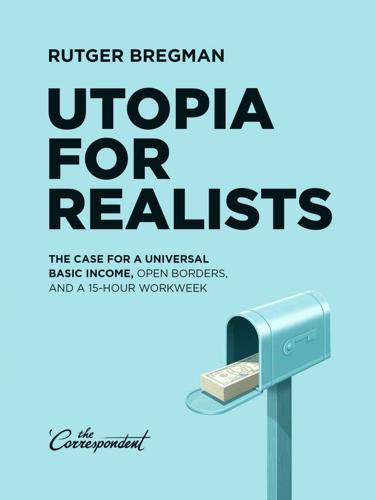
Utopia for Realists: The Case for a Universal Basic Income, Open Borders, and a 15-Hour Workweek
by
Rutger Bregman
Published 13 Sep 2014
Research that once required well-paid legal scholars to trawl through piles of legal documents can now be done by computers, unhampered by headaches or eyestrain. A large chemical company that recently unleashed its software on work done by its own legal staff in the 1980s and 1990s found an accuracy rate of only 60%. “Think about how much money had been spent to be slightly better than a coin toss,” reflected one of the former lawyers. See: John Markoff, “Armies of Expensive Lawyers, Replaced by Cheaper Software,” The New York Times (March 4, 2011). http://www.nytimes.com/2011/03/05/science/05legal.html 16. Warren G. Bennis first said this. Cited in: Mark Fisher, The Millionaire’s Book of Quotations (1991), p. 15. 17. Carl Benedikt Frey and Michael A.
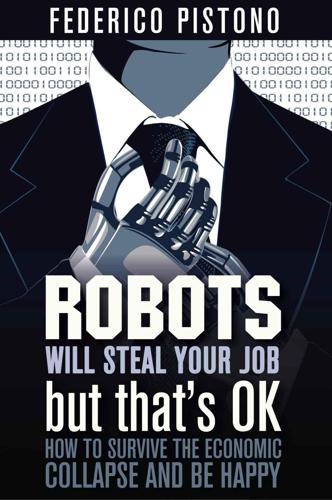
Robots Will Steal Your Job, But That's OK: How to Survive the Economic Collapse and Be Happy
by
Pistono, Federico
Published 14 Oct 2012
http://en.wikipedia.org/wiki/Brute-force_search 81 Chatbots fail to convince judges that they’re human, 2011. New Scientist. http://www.newscientist.com/blogs/onepercent/2011/10/turing-test-chatbots-kneel-bef.html 82 Did you Know?, Jeopardy! http://www.jeopardy.com/showguide/abouttheshow/showhistory/ 83 Computer Program to Take On ’Jeopardy!’, John Markoff, 2009. The New York Times. http://www.nytimes.com/2009/04/27/technology/27jeopardy.html 84 According to IBM, Watson is a workload optimised system designed for complex analytics, made possible by integrating massively parallel POWER7 processors and the IBM DeepQA software to answer Jeopardy!

The Secret War Between Downloading and Uploading: Tales of the Computer as Culture Machine
by
Peter Lunenfeld
Published 31 Mar 2011
That means by 1975, the number of components per integrated circuit for minimum cost will be 65,000. I believe that such a large circuit can be built on a single wafer.” 14 . See Thierry Bardini, Bootstrapping: Douglas Engelbart, Coevolution, and the Origins of Personal Computing (Palo Alto, CA: Stanford University Press, 2001). 15 . See John Markoff, What the Dormouse Said: How the 60s Counterculture Shaped the Personal Computer (New York: Viking, 2005). For a broader sense of the California spiritual landscape, see Erik Davis, Visionary State (San Francisco: Chronicle Books, 2006). 16 . There is no book-length biography of Kay, although there should be.
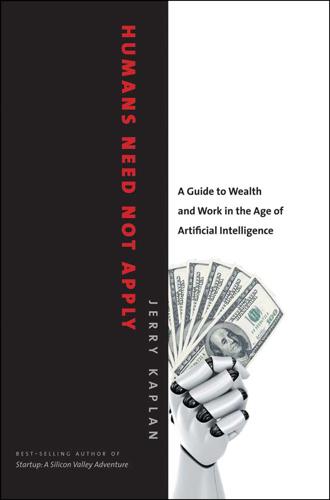
Humans Need Not Apply: A Guide to Wealth and Work in the Age of Artificial Intelligence
by
Jerry Kaplan
Published 3 Aug 2015
I’m indebted to my friend Carl Hewitt, known for his early logic programming language Planner, for his eyewitness report on this incident. Carl is now board chair of the International Society for Inconsistency Robustness. Seriously, it’s a real topic. 3. Artificial Intelligence Laboratory, Stanford University, “Jedibot—Robot Sword Fighting,” May 2011, http://youtu.be/Qo79MeRDHGs. 4. John Markoff, “Researchers Announce Advance in Image-Recognition Software,” New York Times, November 17, 2014, science section. 5. “Strawberry Harvesting Robot,” posted by meminsider, YouTube, November 30, 2010, http://youtu.be/uef6ayK8ilY. 6. For an amazingly insightful analysis of the effects of increased communication and decreased energy cost across everything from living cells to civilizations, see Robert Wright, Nonzero (New York: Pantheon 2000). 7.
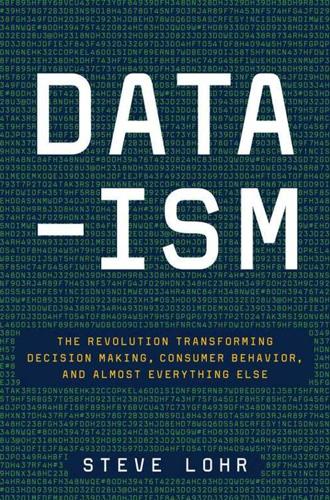
Data-Ism: The Revolution Transforming Decision Making, Consumer Behavior, and Almost Everything Else
by
Steve Lohr
Published 10 Mar 2015
At the Times, several editors have—and still do—encourage my reporting in the field of data science, and its implications. They include Larry Ingrassia, Dean Murphy, Damon Darlin, Suzanne Spector, Joseph Plambeck, James Kerstetter, Quentin Hardy, David Gillen, Lon Teter, Thomas Kuntz, and David Corcoran. Conversations with Natasha Singer have sharpened my thinking on the subject of data and privacy. Then there is John Markoff, a science reporter these days; he and I have labored agreeably and often together in the data-laden precincts of business and science coverage for years. While I was on leave from the Times, Mark Hansen generously offered me office space to work in and travel from and an appointment as a research fellow at the Brown Institute for Media Innovation.
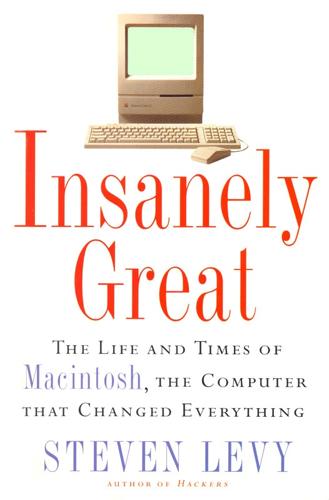
Insanely Great: The Life and Times of Macintosh, the Computer That Changed Everything
by
Steven Levy
Published 2 Feb 1994
I've also benefited from expertise and advice from many other Macworld col leagues, beginning with editors-in-chief David Bunnell, Jerry Borrell, and Adrian Mello, and down through the masthead-sadly, too many names to list here. The manuscript benefited from comments by Deb orah Branscum, Teresa Carpenter, Andy Hertzfeld, Joanna Hoffman, Susan Kare, John Markoff, and Larry Tesler. Thanks, too, to my agent Flip Brophy for constant support; and to editor Pam Dorman, whose enthusiasm for the project lured me to Viking. And, as always, my gratitude and love to Teresa and Andrew Max. The world has arrived at an age of cheap complex devices of great reliability; and something is bound to come of it.
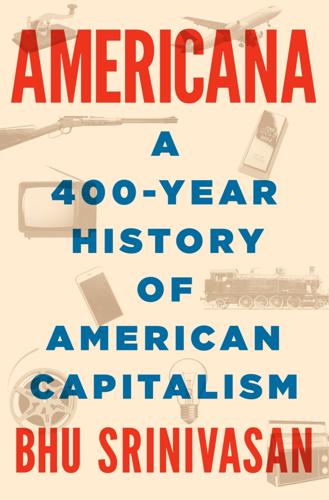
Americana: A 400-Year History of American Capitalism
by
Bhu Srinivasan
Published 25 Sep 2017
Tim Berners-Lee attributed: Tim Berners-Lee, Weaving the Web: The Original Design and Ultimate Destiny of the World Wide Web (San Francisco, Harper, 1999), 22–23. making Jobs a billionaire: John Markoff, “Apple Computer Co-Founder Strikes Gold with New Stock,” New York Times, November 30, 1995. Apple agreed to buy: Isaacson, Steve Jobs, 301. lose over $1 billion: Apple Computer Inc., Annual Report (Washington DC: Securities and Exchange Commission, 1997). $150 million from Microsoft: Michele Matassa Flores and Thomas W. Haines, “Microsoft, Apple Join Forces: Disbelief, Boos Greet Today’s Stunning Announcement at Macworld Expo,” Seattle Times, August 6, 1997. “I’d shut it down”: John Markoff, “Michael Dell Should Eat His Words, Apple Chief Suggests,” New York Times, January 16, 2006

Americana
by
Bhu Srinivasan
Tim Berners-Lee attributed: Tim Berners-Lee, Weaving the Web: The Original Design and Ultimate Destiny of the World Wide Web (San Francisco, Harper, 1999), 22–23. making Jobs a billionaire: John Markoff, “Apple Computer Co-Founder Strikes Gold with New Stock,” New York Times, November 30, 1995. Apple agreed to buy: Isaacson, Steve Jobs, 301. lose over $1 billion: Apple Computer Inc., Annual Report (Washington DC: Securities and Exchange Commission, 1997). $150 million from Microsoft: Michele Matassa Flores and Thomas W. Haines, “Microsoft, Apple Join Forces: Disbelief, Boos Greet Today’s Stunning Announcement at Macworld Expo,” Seattle Times, August 6, 1997. “I’d shut it down”: John Markoff, “Michael Dell Should Eat His Words, Apple Chief Suggests,” New York Times, January 16, 2006
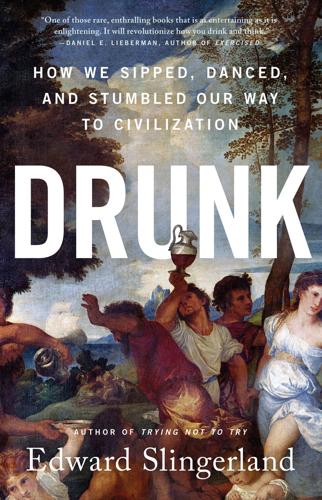
Drunk: How We Sipped, Danced, and Stumbled Our Way to Civilization
by
Edward Slingerland
Published 31 May 2021
When attempting to explain the rise of Silicon Valley, where ideas and inventions that have thoroughly transformed the modern world were hatched, pundits typically cite the presence of Stanford University, or the mild climate capable of attracting bright people from all over the world. Less commonly mentioned, but probably no less important, is its proximity to America’s psychedelic epicenter, San Francisco. As the writers John Markoff and Michael Pollan have documented, psychedelics—primarily pharmaceutical-grade LSD provided by a mysterious, colorful figure named Al Hubbard—played a central role from the very beginning of Silicon Valley’s rise.22 Ampex, an innovative, but now mostly forgotten, Silicon Valley–based manufacturer of storage devices, has been dubbed the “world’s first psychedelic corporation” because of the weekly workshops and retreats it organized around LSD use in the 1960s.
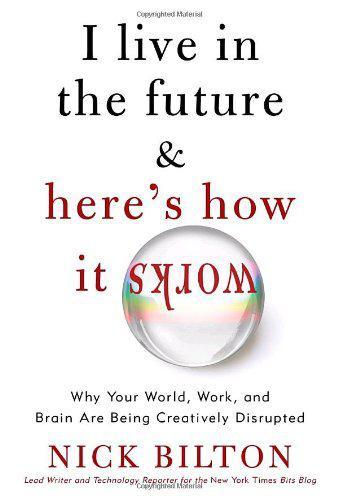
I Live in the Future & Here's How It Works: Why Your World, Work, and Brain Are Being Creatively Disrupted
by
Nick Bilton
Published 13 Sep 2010
Special, Special, Special Thanks Danielle Bilton, for your patience, understanding, love, and baked goods. Special, Special Thanks This book would not have happened without the invaluable input from following people: David Carr, John Mahaney, Karen Blumenthal, Matthew Fishbane, Mark Hansen, Katinka Matson, John Brockman, Clay Shirky, Clive Thompson, Larry Ingrassia, Tom Bodkin, Mike Young, John Markoff, Tim O’Reilly, Sam Sifton, Hubert McCabe, Mark Bittman. New York Times Arthur Sulzberger Jr., Janet Robinson, Martin Nisenholtz, Bill Keller, John Geddes, Jill Abramson, Rick Berke, Damon Darlin, David Gallagher, Suzanne Spector, Michael Zimbalist, Ted Roden, Alexis Lloyd, Justin Ouellette, Patricia McSweeney, Amy Hyde, Susan Edgerly, Brian Stelter, Jenna Wortham, Jim Roberts, Doug Latino, Kelly Doe, Brad Stone, Ashlee Vance, Steve Lohr, Matt Richtel, Miguel Helft, Tim O’Brien, Claire Cain Miller, Michael Golden, Evan “Scoop” Sandhaus, Bill Cunningham, Glenn Kramon, Rob Larson, Rob Samuels, Kevin McKenna, and Fiona Spruill.
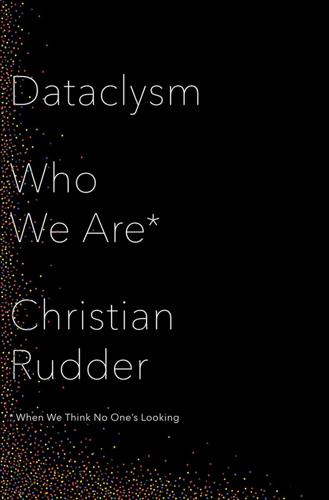
Dataclysm: Who We Are (When We Think No One's Looking)
by
Christian Rudder
Published 8 Sep 2014
all the analysis was done anonymously and in aggregate It bears repeating that at no time was any data tied back to any individual. For the user photos and text cited in the book see the notes above related to them. Jaron Lanier My discussion of Lanier’s work focuses on his article “How Should We Think About Privacy?” “Using data drawn from queries” See John Markoff, “Unreported Side Effects of Drugs Are Found Using Internet Search Data, Study Finds,” New York Times, March 7, 2013, nytimes.com/2013/03/07/science/unreported-side-effects-of-drugs-found-using-internet-data-study-finds.html. a crowdsourced family tree Geni.com reports more than 75 million entries in its tree.
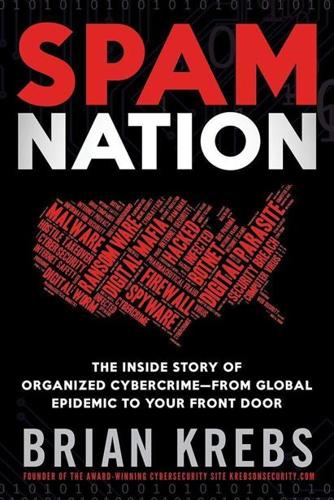
Spam Nation: The Inside Story of Organized Cybercrime-From Global Epidemic to Your Front Door
by
Brian Krebs
Published 18 Nov 2014
The good news is that Internet and security experts have long understood how to block these extraordinarily powerful attacks. “Indeed, a number of computer security specialists pointed out that the attacks would have been impossible if the world’s major Internet firms simply checked that outgoing data packets truly were being sent by their customers, rather than botnets,” wrote John Markoff and Nicole Perlroth of the New York Times. The bad news is that little has changed since these ultra-powerful attacks first surfaced more than a decade ago, said Rodney Joffe, senior vice president and senior technologist at Neustar, a security company that also helps clients weather huge online attacks.

Prediction Machines: The Simple Economics of Artificial Intelligence
by
Ajay Agrawal
,
Joshua Gans
and
Avi Goldfarb
Published 16 Apr 2018
Stephen Hawking, “This Is the Most Dangerous Time for Our Planet,” The Guardian, December 1, 2016, https://www.theguardian.com/commentisfree/2016/dec/01/stephen-hawking-dangerous-time-planet-inequality. 4. “The Onrushing Wave,” The Economist, January 18, 2014, https://www.economist.com/news/briefing/21594264-previous-technological-innovation-has-always-delivered-more-long-run-employment-not-less. 5. For more, see John Markoff, Machines of Loving Grace: The Quest for Common Ground Between Humans and Robots (New York: Harper Collins, 2015); Martin Ford, Rise of the Robots: Technology and the Threat of a Jobless Future (New York: Basic Books, 2016); and Ryan Avent, The Wealth of Humans: Work, Power, and Status in the Twenty-First Century (London: St.
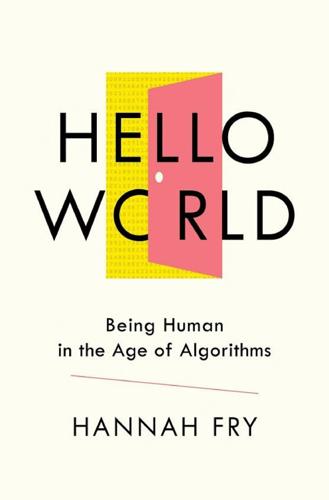
Hello World: Being Human in the Age of Algorithms
by
Hannah Fry
Published 17 Sep 2018
Alan Ohnsman, ‘Bosch and Daimler to partner to get driverless taxis to market by early 2020s’, Forbes, 4 April 2017, https://www.forbes.com/sites/alanohnsman/2017/04/04/bosch-and-daimler-partner-to-get-driverless-taxis-to-market-by-early-2020s/#306ec7e63c4b. 16. Ford, Looking Further: Ford Will Have a Fully Autonomous Vehicle in Operation by 2021, https://corporate.ford.com/innovation/autonomous-2021.html. 17. John Markoff, ‘Should your driverless car hit a pedestrian to save your life?’, New York Times, 23 June 2016, https://www.nytimes.com/2016/06/24/technology/should-your-driverless-car-hit-a-pedestrian-to-save-your-life.html. 18. Clive Thompson, Anna Wiener, Ferris Jabr, Rahawa Haile, Geoff Manaugh, Jamie Lauren Keiles, Jennifer Kahn and Malia Wollan, ‘Full tilt: when 100 per cent of cars are autonomous’, New York Times, 8 Nov. 2017, https://www.nytimes.com/interactive/2017/11/08/magazine/tech-design-autonomous-future-cars-100-percent-augmented-reality-policing.html#the-end-of-roadkill. 19.

Start With Why: How Great Leaders Inspire Everyone to Take Action
by
Simon Sinek
Published 29 Oct 2009
Rogers, Diffusion of Innovations. New York: Free Press, 2003. 116 Geoffrey Moore expanded on Rogers’s ideas to apply the principle to high-tech product marketing: Geoffrey A. Moore, Crossing the Chasm. New York: Collins, 2002. 122 In 1997, TiVo was racing to market with a remarkable new device: John Markoff, “Netscape Pioneer to Invest in Smart VCR,” New York Times, November 9, 1998, http://query.nytimes.com/gst/fullpage.html?res=9F0DE0D6133EF93AA35752C1A96E958260. 123 TiVo finally shipped in 1999: http://www.tivo.com/abouttivo/aboutushome/index.html. 123 TiVo sold about 48,000 units the first year: Roy Furchgott, “Don’t People Want to Control Their TV’s?”
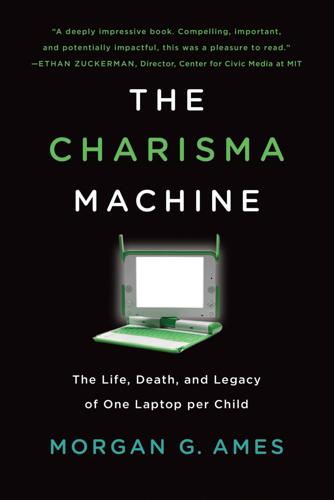
The Charisma Machine: The Life, Death, and Legacy of One Laptop Per Child
by
Morgan G. Ames
Published 19 Nov 2019
His hallway pitch for a hundred-dollar laptop garnered a brief blog mention by Travis Kalanick, who was attending the World Economic Forum as a “technology pioneer” (and would later start the ride-sharing platform Uber), but this mention was more due to Negroponte’s other accomplishments than his idea for a hundred-dollar laptop. New York Times technology journalist John Markoff took up Negroponte’s pitch in more depth but concluded that Negroponte had not been given more of an official platform because the forum had moved on from the ideal of closing the digital divide to solving more “fundamental” inequalities.5 This tone changed considerably the following November, when Negroponte took the stage at the World Summit on the Information Society in Tunis.
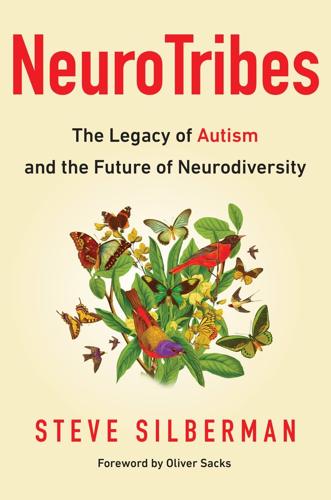
NeuroTribes: The Legacy of Autism and the Future of Neurodiversity
by
Steve Silberman
Published 24 Aug 2015
As hard-core fans of science fiction, ham radio, and Japanese monster movies: “Spacewars and Beyond: How the Tech Model Railroad Club Changed the World,” Henry Jenkins. http://henryjenkins.org/2007/10/spacewars_and_beyond_how_the_t.html#sthash.vNI7iDoK.dpuf equal parts of “science, fiction, and science fiction”: Scientific Temperaments, p. 266. “Do the arithmetic or be doomed to talk nonsense”: “John McCarthy, 84, Dies; Computer Design Pioneer,” John Markoff. New York Times, Oct. 25, 2011. François Mitterrand, the president of France, visited her office: Jean Hollands, personal communication. Homebrew Computer Club: Ibid. a combination of Sherlock Holmes and A. J. Raffles: The Senior Class Book, compiled by the class of 1906, Cornell University, 1906, p. 147.
…
Computer History Museum, p. 2. http://www.computerhistory.org/collections/catalog/102702231 He began to think of the basement as a holy sanctuary: Lee Felsenstein, personal communication. “I realized that I had made a mistake”: Lee Felsenstein, interview with the author, 2014. While McCarthy wanted to design machines: “An Interview with John Markoff: What the Dormouse Said.” Ubiquity, Aug. 2005. tools that would facilitate “conviviality”: Tools for Conviviality, Ivan Illich. Harper & Row, 1973. a programmer at a bustling commune: “Spacewar: Fanatic Life and Symbolic Death among the Computer Bums,” Stewart Brand. Rolling Stone, Dec. 7, 1972.

Facebook: The Inside Story
by
Steven Levy
Published 25 Feb 2020
Casey Newton’s newsletter, The Interface, helped me keep current with the daily torrent of Facebook news. I spent a lot of time in California working over the past three years, and I owe a lot to those who provided me with shelter and support. Lynnea Johnson and Caroline Rose’s bungalow was my bivouac for much of the time, until I imposed on John Markoff and Leslie Terizan. Katie Hafner and Bob Wachter were splendid hosts in San Francisco. Leslie Berlin generously lent me her son’s car before he rightfully claimed it for his campus use. Thanks also to friends on two coasts: Bradley Horowitz, Irene Au, Brad Stone, Kevin Kelly, Megan Quinn, M. G.
…
instant messages: Nicholas Carlson, “At Last—The Full Story of How Facebook Was Founded,” Business Insider, March 5, 2010; and “EXCLUSIVE: Mark Zuckerberg’s Secret IMs from College,” Business Insider, May 17, 2012. Aaron Greenspan: Besides personal interviews, Greenspan’s story is drawn from his book Authoritas: One Student’s Harvard Admissions and the Founding of the Facebook Era (Think Press, 2008); John Markoff, “Who Founded Facebook? A New Claim Emerges,” New York Times, September 1, 2007. “unfazed”: Matt Welsh blogged, “How I Almost Killed Facebook,” February 20, 2009. Harry Lewis: Alexis C. Madrigal, “Before It Conquered the World, Facebook Conquered Harvard,” The Atlantic, February 4, 2019.
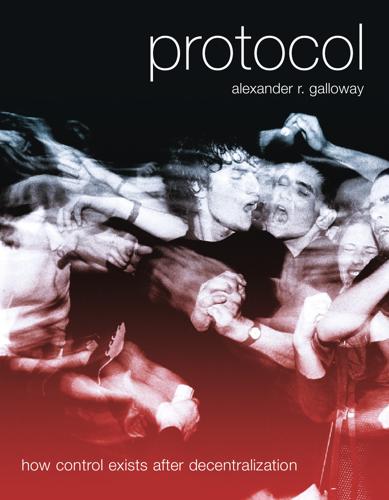
Protocol: how control exists after decentralization
by
Alexander R. Galloway
Published 1 Apr 2004
Richard Stallman, “The GNU Project,” available online at http://www.gnu.org/gnu/ thegnuproject.html and in Chris Dibona et al, eds., Open Sources: Voices from the Open Source Revolution (Sebastopol, CA: O’Reilly, 1999). 57. Ross, Strange Weather, p. 80. 58. From a telephone interview with Kevin Mitnick, cited in Taylor, Hackers, p. 57. For more details on the Mitnick story, see the following texts: Katie Hafner and John Markoff, Cyberpunk: Outlaws and Hackers on the Computer Frontier (New York: Touchstone, 1991); Tsu- Chapter 5 170 A British hacker named Dr-K hardens this sentiment into an explicit anticommercialism when he writes that “[c]orporations and government cannot be trusted to use computer technology for the benefit of ordinary people.”59 It is for this reason that the Free Software Foundation was established in 1985.
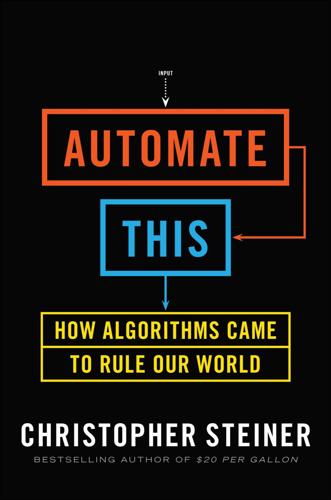
Automate This: How Algorithms Came to Rule Our World
by
Christopher Steiner
Published 29 Aug 2012
Paul Kedrosky and Dane Stangler, Financialization and Its Entrepreneurial Consequences, Kauffman Foundation Research Series, March 2011, http://www.kauffman.org/uploadedfiles/financialization_report_3-23-11.pdf. CHAPTER 10: THE FUTURE BELONGS TO THE ALGORITHMS AND THEIR CREATORS 1. “Algorithm Measures Human Pecking Order,” MIT Technology Review, December 21, 2011, http://www.technologyreview.com/blog/arxiv/27437/. 2. John Markoff, “Armies of Expensive Lawyers, Replaced by Cheaper Software,” New York Times, March 4, 2011. 3. Eric Brynjolfsson and Andrew McAfee, Race against the Machine (Digital Frontier Press e-book, 2011). 4. Steve Lohr, “More Jobs Predicted for Machines, Not People,” New York Times, October 23, 2011. 5.
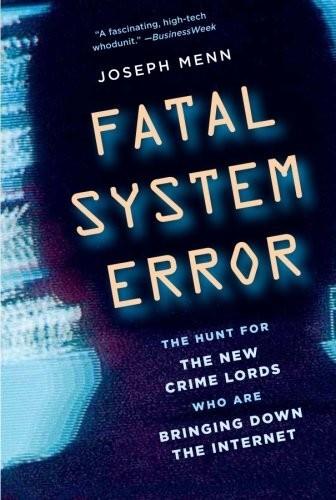
Fatal System Error: The Hunt for the New Crime Lords Who Are Bringing Down the Internet
by
Joseph Menn
Published 26 Jan 2010
I was fortunate to be aided by many of the most able private researchers, not all of whom are paid for their work, including Joe Stewart, Rafal Rohozinski, Don Jackson, Jart Armin, Paul Ferguson, Avivah Litan, and Dmitri Alperovich. My fellow journalistic specialists also do an important service for followers like me and for the world at large. Among the very best are Brian Krebs, John Markoff, Jon Swartz, Byron Acohido, Kevin Poulsen, Kim Zetter, John Leyden, and Robert McMillan. I am grateful to my former colleagues at the Los Angeles Times, who supported my early reporting and allowed me a leave to write; my new friends at the Financial Times, who gave me time to finish; Lindsay Jones and others at PublicAffairs; my agent Jill Marsal; Chris Gaither, who served as an unpaid manuscript editor; and those close to me who dealt with my prolonged distraction and repeated absences.
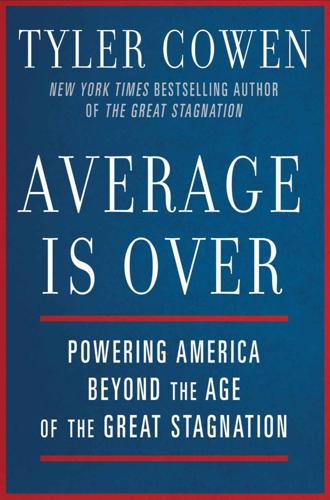
Average Is Over: Powering America Beyond the Age of the Great Stagnation
by
Tyler Cowen
Published 11 Sep 2013
On the German population growing again, see Suzanne Daley and Nicholas Kulish, “Brain Drain Feared as German Jobs Lure Southern Europeans,” The New York Times, April 28, 2012. On job growth in services, see A. Michael Spence and Sandile Hlatshwayo, “The Evolving Structure of the American Economy and the Employment Challenge,” Council on Foreign Relations, March 2011. For one recent look at reshoring, see John Markoff, “Skilled Work, Without the Worker,” The New York Times, August 18, 2012. Chapter 10: Relearning Education For figures on K–12, see Stephanie Banchero and Stephanie Simon, “My Teacher is an App,” The Wall Street Journal, November 12, 2011. The point about stronger incentives for innovation I owe to Alex Tabarrok.
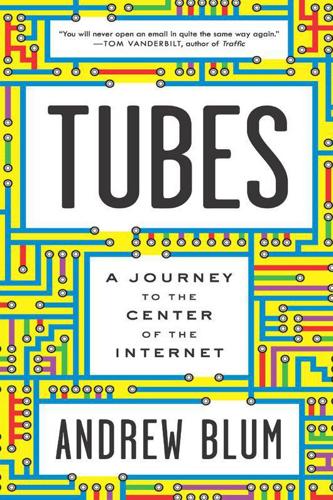
Tubes: A Journey to the Center of the Internet
by
Andrew Blum
Published 28 May 2012
I’d even read a little note about it: The site has since been changed, but it was accessible as of June 2011 at http://www.google.com/corporate/datacenter/index.html; a copy is preserved here: http://kalanaonline.blogspot.com/2011/02/where-is-your-data-google-and-microsoft.html. Where Google had kept everything top secret: John Markoff and Saul Hansell, “Hiding in Plain Sight, Google Seeks More Power,” New York Times, June 14, 2006 (http://www.nytimes.com/2006/06/14/technology/14search.html). “It’s time to stop treating data centers like Fight Club”: Maggie Shiels, “Facebook Shares Green Data Centre Technology,” BBC News, April 8, 2011 (http://www.bbc.co.uk/news/technology-13010766).

Our Final Invention: Artificial Intelligence and the End of the Human Era
by
James Barrat
Published 30 Sep 2013
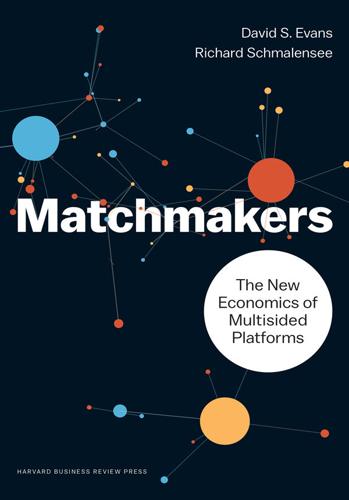
Matchmakers: The New Economics of Multisided Platforms
by
David S. Evans
and
Richard Schmalensee
Published 23 May 2016
Much of this section is based on Daniel Roth, “Google’s Open Source Android OS Will Free the Wireless Web,” Wired, June 23, 2008, http://archive.wired.com/techbiz/media/magazine/16-07/ff_android?currentPage=all. 34. Larry Page and Sergey Brin had met Andy Rubin and heard about his mobile vision when Rubin gave a talk to an engineering class at Stanford in 2002. John Markoff, “I Robot: The Man Behind the Google Phone,” New York Times, November 4, 2007, http://www.nytimes.com/2007/11/04/technology/04google.html?pagewanted=all. 35. Vogelstein, Dogfight, 46–48. 36. Symbian was based on legacy PDA code. West and Wood, “Tradeoffs of Open Innovation Platform Leadership.”

The People's Platform: Taking Back Power and Culture in the Digital Age
by
Astra Taylor
Published 4 Mar 2014
The other person Snowden contacted was the journalist Glenn Greenwald of the Guardian, with whom Poitras collaborated. 3. That start-up is Narrative Science, a computer program that generates sports stories. Janet Paskin, “The Future of Journalism?,” Columbia Journalism Review (November/December 2010): 10. 4. John Markoff, “Armies of Expensive Lawyers, Replaced by Cheaper Software,” New York Times, March 5, 2011, A1. 5. See Janice Gross Stein’s book based on her Massey Lecture: Janice Gross Stein, The Cult of Efficiency (Toronto: House of Anansi Press, 2002). 6. Christopher Steiner, Automate This: How Algorithms Came to Rule Our World (New York: Portfolio, 2012), 88. 7.
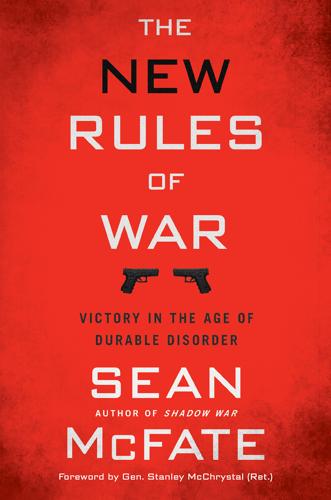
The New Rules of War: Victory in the Age of Durable Disorder
by
Sean McFate
Published 22 Jan 2019
See Matt Cox, “Congress Wants More Control of Special Ops Iron Man Suit,” Military.com, 29 April 2014, www.military.com/defensetech/2014/04/29/congress-wants-more-control-of-special-ops-iron-man-suit; Matthew Cox, “Industry: Iron Man Still Hollywood, Not Reality,” Military.com, 7 June 2018, www.military.com/daily-news/2014/04/22/industry-iron-man-still-hollywood-not-reality.html. 4. Rise of the robots: Matthew Rosenberg and John Markoff, “The Pentagon’s ‘Terminator Conundrum’: Robots That Could Kill on Their Own,” New York Times, 25 October 2016, www.nytimes.com/2016/10/26/us/pentagon-artificial-intelligence-terminator.html; Kevin Warwick, “Back to the Future,” Leviathan, BBC News, 1 January 2000, http://news.bbc.co.uk/hi/english/static/special_report/1999/12/99/back_to_the_future/kevin_warwick.stm. 5.
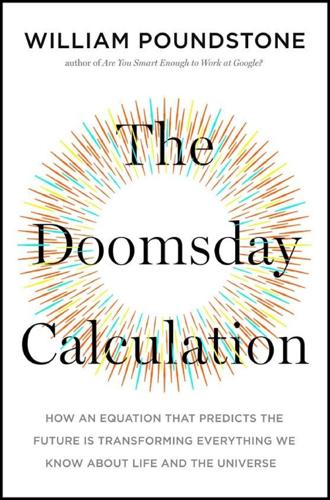
The Doomsday Calculation: How an Equation That Predicts the Future Is Transforming Everything We Know About Life and the Universe
by
William Poundstone
Published 3 Jun 2019
This promptly led to speculation that one of the billionaires was Musk. Others wondered how it was even possible for simulated beings to break out of their simulation. Journalist Sam Kriss complained that “the tech industry is moving into territory once cordoned off for the occult.” New York Times science writer John Markoff called the simulation hypothesis “basically a religious belief system in the Valley”—Silicon Valley, naturally. The Omphalos Scenario How has the simulation hypothesis gained such intellectual currency? Does it merit being taken even a little seriously? The answer has to do with the self-sampling assumption, and with a set of beliefs ingrained in contemporary culture.

There's a War Going on but No One Can See It
by
Huib Modderkolk
Published 1 Sep 2021
Piet Hein Donner press conference on hacking of government websites YouTube, 3 September 2011. 3 The Switzerland of the Surveillance World Abdul Qadeer Khan Jaco Alberts, ‘De Nederlandse connectie met de islamitische bom’, de Volkskrant, 19 November 2011. BBC China vessel intercepted in Italy Robin Wright, ‘Ship Incident May Have Swayed Libya’, Washington Post, 1 January 2004. Iraqi communication systems attacked in 2003 John Markoff and Thom Shanker, ‘Halted ’03 Iraq Plan Illustrates [U.S] Fear of Cyberwar Risk’, The New York Times, 1 August 2009. Natanz and its centrifuges Kim Zetter, Counting down to Zero Day: Stuxnet and the Launch of the World’s First Digital Weapon, Broadway Books, 2015. Casualties resulting from Natanz operation Kim Zetter and Huib Modderkolk, ‘Revealed: How a secret Dutch mole aided the U.S.
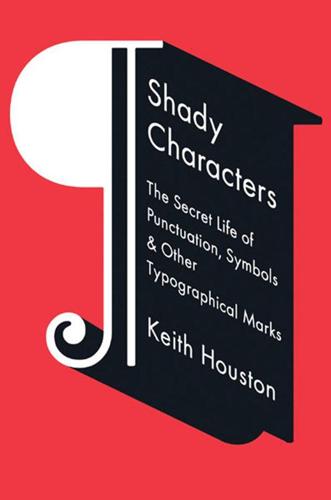
Shady Characters: The Secret Life of Punctuation, Symbols, and Other Typographical Marks
by
Keith Houston
Published 23 Sep 2013
Ceruzzi, “The ‘Go-Go’ Years and the System/360, 1961–1975,” in A History of Modern Computing (Cambridge, MA: MIT Press, 2002), 154. 6.J. Daintith and Oxford University Press, “Teletypewriter,” in Oxford Dictionary of Computing, Oxford Paperback Reference (Oxford, UK: Oxford University Press, 2004), 529. 7.Ibid. 8.“Want to Take Your Teletype Around with You?” Computerworld, March 1968, 4. 9.John Markoff, “Outlook 2000: Technology & Media: Talking the Future With: Robert W. Taylor; An Internet Pioneer Ponders the Next Revolution,” New York Times, December 20, 1999. 10.Ibid. 11.S.Segaller, “Something Seductive,” in Nerds 2.0.1: A Brief History of the Internet (New York: TV Books, 1998), 69. 12.Sastri L.

Who Owns the Future?
by
Jaron Lanier
Published 6 May 2013
Everyone was attending preachy “workshops” where a narrative about a mystical path to self-empowerment was reinforced. If you found it to be a load of claptrap you learned to keep quiet. It wasn’t worth the arguments. We like to pretend this phase of Silicon Valley culture didn’t happen, but it did. To my mind, this was a distinct period from the 1970s hippie/tech crossover, which was documented nicely in John Markoff’s book What the Dormouse Said. Well before the computer nerds showed up, California was already a center of “Eastern Religion.” There were Tibetan temples and Hindu ashrams. The wave of Eastern-influenced spiritual style was inescapable. During the wild early development of Virtual Reality, in the 1980s, I lived for a while in a faux Greek temple in the Berkeley hills built by friends of the radical dancer Isadora Duncan much earlier in the century.
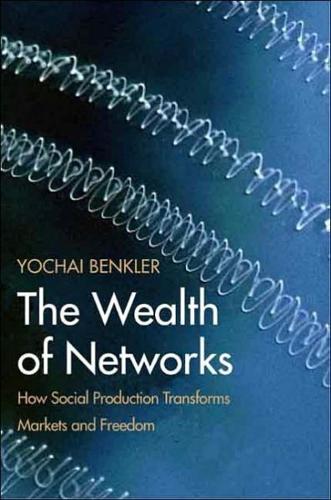
The Wealth of Networks: How Social Production Transforms Markets and Freedom
by
Yochai Benkler
Published 14 May 2006
Christopher Lee et al., "Evaluating Information and Communications Technology: Perspective for a Balanced Approach," Report to the Kellogg Foundation (December 17, 2001), http:// www.si.umich.edu/pne/kellogg/013.html. 132. Norman H. Nie and Lutz Ebring, "Internet and Society, A Preliminary Report," Stanford Institute for the Quantitative Study of Society, February 17, 2000, 15 (Press Release), ‹http://www.pkp.ubc.ca/bctf/Stanford_Report.pdf›. 133. Ibid., 42-43, tables CH-WFAM, CH-WFRN. 134. See John Markoff and A. Newer, "Lonelier Crowd Emerges in Internet Study," New York Times, February 16, 2000, section A, page 1, column 1. 135. Nie and Ebring, "Internet and Society," 19. 136. Amitai Etzioni, "Debating the Societal Effects of the Internet: Connecting with the World," Public Perspective 11 (May/June 2000): 42, also available at http:// www.gwu.edu/ ccps/etzioni/A273.html. 137.
…
Christopher Lee et al., "Evaluating Information and Communications Technology: Perspective for a Balanced Approach," Report to the Kellogg Foundation (December 17, 2001), http:// www.si.umich.edu/pne/kellogg/013.html. 132. Norman H. Nie and Lutz Ebring, "Internet and Society, A Preliminary Report," Stanford Institute for the Quantitative Study of Society, February 17, 2000, 15 (Press Release), ‹http://www.pkp.ubc.ca/bctf/Stanford_Report.pdf›. 133. Ibid., 42-43, tables CH-WFAM, CH-WFRN. 134. See John Markoff and A. Newer, "Lonelier Crowd Emerges in Internet Study," New York Times, February 16, 2000, section A, page 1, column 1. 135. Nie and Ebring, "Internet and Society," 19. 136. Amitai Etzioni, "Debating the Societal Effects of the Internet: Connecting with the World," Public Perspective 11 (May/June 2000): 42, also available at http:// www.gwu.edu/ ccps/etzioni/A273.html. 137.
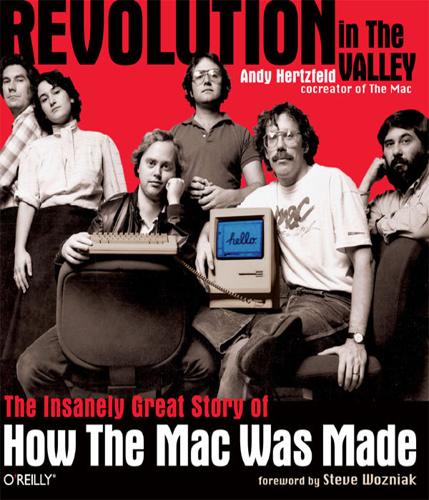
Revolution in the Valley: The Insanely Great Story of How the Mac Was Made
by
Andy Hertzfeld
Published 19 Nov 2011
Tom Petrie, one of the two principals at Thunderware (the other was Victor Bull, who I worked with on my first project for Apple, the Silentype thermal printer), arranged a few demos for various computer magazines in hopes of currying favorable reviews to promote the product. On October 11th, 1984, I drove with Tom to an office in Hillsborough, just south of San Francisco, to demonstrate Thunderscan for Byte magazine. The Byte reviewer was John Markoff, a technology scribe for the San Francisco Chronicle and one of the best reporters covering the personal computer industry. Tom described Thunderscan while I set up the demo and started scanning. John asked a few questions, taking notes with his IBM PC, which was running a character-based text editor I viewed with the typical pious disdain of a Macintosh purist.
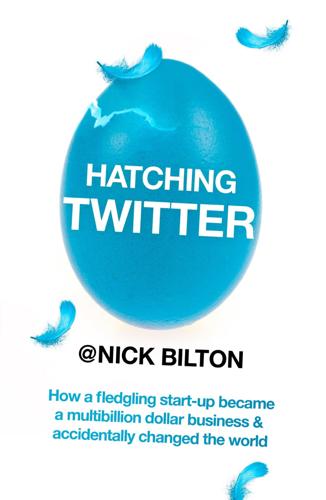
Hatching Twitter
by
Nick Bilton
Published 5 Nov 2013
Marin, Ryan Block, Tom Bodkin, Danah Boyd, Matt Buchanan, David Carr, Brian Chen, Mathias Crawford, Tony and Mary Conrad, Tom Conrad, Paddy Cosgrave, Dennis Crowley, Damon Darlin, Anil Dash, Mike Driscoll, Aaron Durand, Josh Felser, Tim Ferris, Brady Forrest, David Gallhager, Michael Galpert, John Geddes, Shelly Gerrish, Ashley Khaleesi Granata, Mark Hansen, Quentin Hardy, Leland Hayward, Erica Hintergardt, Mat Honan, Arianna Huffington, Kate Imbach, Larry Ingrassia, Walter Isaccson, Mike Issac, Joel Johnson, Andrei Kallaur, Paul Kedrosky, Kevin Kelly, Jeff Koyen, Brian Lam, Jeremy LaTrasse, Steven Levy, Allen Loeb, Kati London, Om Malik, John Markoff, Hubert McCabe, Christopher Michel, Claire Cain Miller, Trudy Muller, Tim O’Reilly, Carolyn Penner, Nicole Perlroth, Megan Quinn, Narendra Rocherolle, Jennifer Rodriguez, Evelyn Rusli, Naveen Selvadurai, Ryan and Devon Sarver, Elliot Schrage, Mari Sheibley, MG Siegler, Courtney Skott, Robin Sloan, Andrew Ross Sorkin, Suzanne Spector, Brad Stone, David Streitfeld, Gabriel Stricker, Arthur Sulzberger Jr., Kara Swisher, Clive Thompson, Deep Throat, Baratunde Thurston, Mark Trammell, Sara Morishige Williams, Nick Wingfield, Jenna Wortham, Aaron Zamost, Edith Zimmerman.
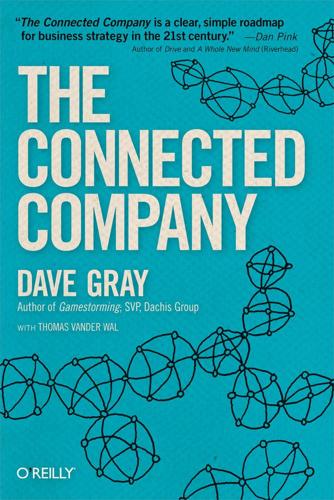
The Connected Company
by
Dave Gray
and
Thomas Vander Wal
Published 2 Dec 2014
From “Hack your car with OpenXC, a platform for modding Ford car computers,” by Dean Takahashi, VentureBeat, September 12, 2011, http://www.venturebeat.com/2011/09/12/hack-your-car-with-openxc-platform-for-modding-ford-car-computers/. SELF-DRIVING CARS “Google is working on cars that will drive themselves.” From “Google Cars Drive Themselves, in Traffic,” by John Markoff, The New York Times, October 9, 2010. JOB GROWTH “Job growth will be led by health care…” From “Occupational Outlook Handbook: 2010-20 Projections,” Bureau of Labor Statistics, March 29, 2012, http://www.bls.gov/ooh/About/Projections-Overview.htm. Chapter 3. Everything is a service Our mission statement about treating people with respect and dignity is not just words but a creed we live by every day.
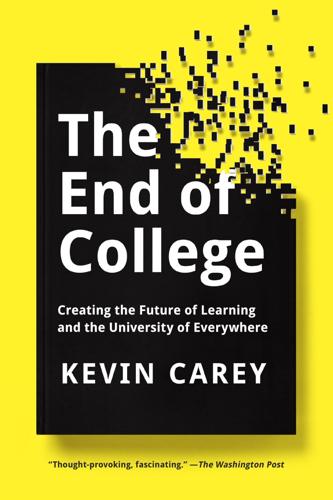
The End of College: Creating the Future of Learning and the University of Everywhere
by
Kevin Carey
Published 3 Mar 2015
Senate Committee on Health, Education, Labor, and Pensions, For Profit Higher Education: The Failure to Safeguard the Federal Investment and Ensure Student Success, July 30, 2012, http://www.help.senate.gov/imo/media/for_profit_report/PartI-PartIII-SelectedAppendixes.pdf. the average sticker price of attending a public four-year university increased by roughly 80 percent: College Board, Trends in College Pricing 2013. 6: THUNDER LIZARDS he came across an article: John Markoff, “Computer Visionary Who Invented the Mouse,” New York Times, July 3, 2013. he finished a PhD in electrical engineering: Doug Engelbart Institute, “Dr. Douglas C. Engelbart Curriculum Vitae,” http://dougengelbart.org/about/cv.html. In handwritten notes summarizing his speech: Doug Engelbart, “Augmented Man, and a Search for Perspective,” Stanford Research Institute, December 16, 1960.

Insane Mode: How Elon Musk's Tesla Sparked an Electric Revolution to End the Age of Oil
by
Hamish McKenzie
Published 30 Sep 2017
On an ordinary workday, Wu leaves his apartment on the outskirts of Beijing at 7:40 A.M., walks fifteen minutes to a subway station, and takes a train to Zhongguancun, where his autonomous driving start-up, Uisee, is based. It’s a forty-five-minute ride, during which he reads business and technology books. (He had been reading the New York Times reporter John Markoff’s history of AI, Machines of Loving Grace.) After getting off the train, Wu takes his bike out of a locker and rides the remaining twenty minutes to Uisee’s office, which, when I visited, was in a shared working space on the fifteenth floor of a building that once housed stores selling cheap electronics.

Stealth
by
Peter Westwick
Published 22 Nov 2019
Innovation and Enterprise in the National Security State (Ithaca, NY: Cornell Univesity Press, 2014), 7. On MITI: Chalmers Johnson, MITI and the Japanese Miracle: The Growth of Industrial Policy, 1925–1975 (Stanford, CA: Stanford University Press,1982). 11 For an example of military support leading to the personal computer: John Markoff, What the Dormouse Said: How the Sixties Counterculture Shaped the Personal Computer (New York: Penguin Books, 2005). On the internet: Arthur L. Norberg and Judy O’Neill, Transforming Computer Technology: Information Processing for the Pentagon, 1962–1986 (Baltimore: Johns Hopkins University Press, 1996); Janet Abbate, Inventing the Internet (Cambridge, MA: MIT Press, 1999). 12 See the various contributions in John Griffin, ed., Pioneers of Stealth (Morrisville, NC: Lulu.com, 2017). 13 Sherman Mullin in Griffin, Pioneers of Stealth, 250.

Life After Google: The Fall of Big Data and the Rise of the Blockchain Economy
by
George Gilder
Published 16 Jul 2018
A pithy introduction to the technology of machine learning is Yaser S. Abu-Mostafa, Malik Magdon-Ismail, Tsuan-Tien Lin, Learning from Data: A Short Course (AMLbook.com). Abu-Mostafa introduced me to his mastery of machine learning in a fascinating dinner at the Caltech Athenaeum in February 2013. 5. John Markoff, “How Many Computers to Identify a Cat? 16,000,” New York Times, June 25, 2012. 6. Claude Elwood Shannon, “A Mathematical Theory of Communication,” published in the Bell Systems Technical Journal in October 1948 and available in N. J. A. Sloane, Aaron D. Wyner, edits, Shannon Collected Papers (Piscataway, N.J.: IEEE Press, 1993), section 12: “Equivocation and Channel Capacity,” 33. 7.
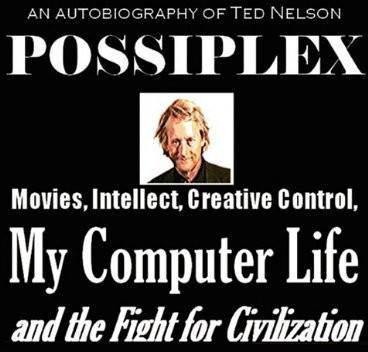
Possiplex
by
Ted Nelson
Published 2 Jan 2010
They are-Accusation 0. that I am ignorant; Accusation 1. that I am lying or exaggerating about what I’ve worked on, or claim to have thought of early; Accusation 2. that backers have lost a lot of money on me; Accusation 3. that even with resources and leverage, I could not have done anything I was attempting; Accusation 4. that the Xanadu project was an incoherent, “Utopian,”1 “Quixotic,”2 impossible idea. 1 2 Tim Berners-Lee. John Markoff. All these accusations are false. I will go over them one at a time. Accusation 0. Was He Ignorant? -- What Did He Know and When Did He Know It? -- And How Could He Possibly Have Known? “What did he know and when did he know it?” That’s what they asked about Richard Nixon in the Watergate days.
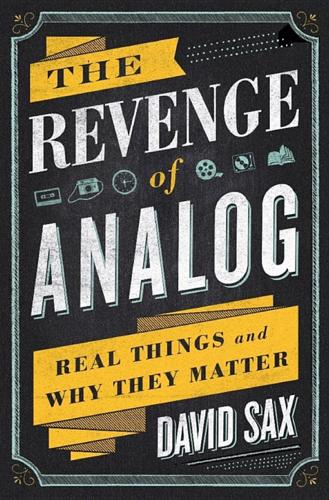
The Revenge of Analog: Real Things and Why They Matter
by
David Sax
Published 8 Nov 2016
“The Inside Story on LA Schools’ iPad Rollout: ‘A Colossal Disaster.’” Hechinger Report, September 30, 2013. Konnikova, Maria. “Will MOOCs Be Flukes?” New Yorker, November 7, 2014. Lewin, Tamar. “After Setbacks, Online Courses Are Rethought.” New York Times, December 10, 2013. Lewin, Tamar, and John Markoff. “California to Give Web Courses a Big Trial.” New York Times, January 15, 2013. McNeish, Joanne, Mary Foster, Anthony Francescucci, and Bettina West. “Exploring e-Book Adopters’ Resistance to Giving Up Paper.” International Journal of the Book, 2014. ———. “The Surprising Foil to Online Education: Why Students Won’t Give Up Paper Textbooks.”
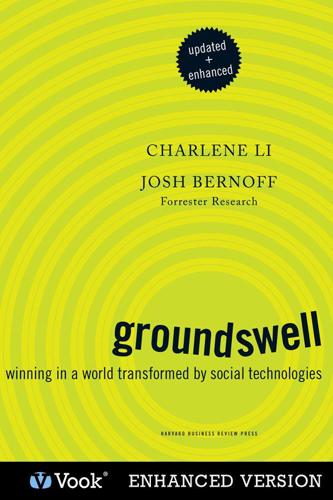
Groundswell: Winning in a World Transformed by Social Technologies
by
Charlene Li
and
Josh Bernoff
Published 23 May 2011
He’s been logged into the forum for over 473,000 minutes, the equivalent of 123 working days a year: Dell representatives provided us with these statistics on Predator’s time spent and postings on the Dell community forum. 6. Caterina Fake, cofounder of the photo-sharing site Flickr, called it “the culture of generosity”: See, for example, “Web Content by and for the Masses” by John Markoff, New York Times, June 29, 2005, visible at http://forr.com/gsw8-6. 7. We call it the search for psychic income: The term psychic income—meaning nonmonetary compensation—entered the lexicon through the work of the economists F. A. Fetter and Irving Fisher in the 1920s. In the groundswell it becomes a crucial form of currency.

Only Humans Need Apply: Winners and Losers in the Age of Smart Machines
by
Thomas H. Davenport
and
Julia Kirby
Published 23 May 2016
Dan Ariely, Predictably Irrational: The Hidden Forces That Shape Our Decisions, revised and expanded edition (New York: Harper Perennial, 2010). 6. Howard Gardner, Frames of Mind: The Theory of Multiple Intelligences, 3rd ed. (New York: Basic Books, 2011). 7. Peter Salovey and John D. Mayer, “Emotional Intelligence,” Imagination, Cognition and Personality 9, no. 3 (March 1990): 185–211. 8. John Markoff, “Skilled Work, Without the Worker,” New York Times, August 18, 2012, http://www.nytimes.com/2012/08/19/business/new-wave-of-adept-robots-is-changing-global-industry.html?_r=0. 9. Michigan News, “Empathy: College Students Don’t Have as Much as They Used To,” May 27, 2010, http://ns.umich.edu/new/releases/7724-empathy-college-students-don-t-have-as-much-as-they-used-to. 10.
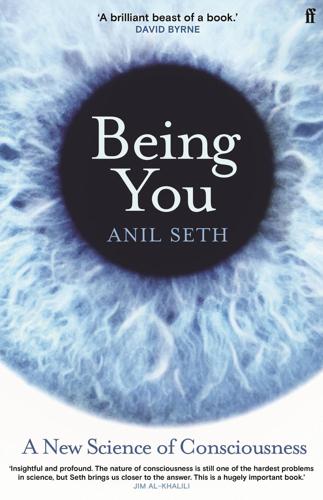
Being You: A New Science of Consciousness
by
Anil Seth
Published 29 Aug 2021
When the chatbot won: ‘Eugene Goostman is a real boy – the Turing Test says so’, Guardian Pass notes, 9 June 2014. See https://www.theguardian.com/technology/shortcuts/2014/jun/09/eugene-goostman-turing-test-computer-program. the humans failed: The description of the Turing test as a test of ‘human gullibility’ comes from a 2015 New York Times article by John Markoff, ‘Software is smart enough for SAT, but still far from intelligent’, New York Times, 21 September 2015. See www.nytimes.com/2015/09/21/technology/personaltech/software-is-smart-enough-for-sat-but-still-far-from-intelligent.html. vast artificial neural network: GPT stands for ‘Generative Pre-trained Transformer’ – a type of neural network specialised for language prediction and generation.

Ghost Road: Beyond the Driverless Car
by
Anthony M. Townsend
Published 15 Jun 2020
Just One Thing Might Stand in Their Way,” MIT Technology Review, December 19, 2018, https://www.technologyreview.com/s/612598/chinas-tech-giants-want-to-go-global-just-one-thing-might-stand-in-their-way/. 199“sheds with beds”: Citi GPS and Oxford Martin Programme on Technology and Employment, Technology at Work v. 3.0: Automating E-commerce from Click to Pick to Door, Global Perspectives and Solutions (Citigroup, 2017), 83. 202synergy of software trains and compact neighborhoods: John Markoff, “Urban Planning Guru Says Driverless Cars Won’t Fix Congestion,” New York Times, October 27, 2018, https://www.nytimes.com/2018/10/27/technology/driverless-cars-congestion.html. 202Switzerland’s Les Vergers Ecoquartier: “Venir aux Verges,” Les Vergers Ecoquartier, accessed May 23, 2019, https://www.lesvergers-meyrin. ch/ecoquartier/venir-aux-vergers. 202Micromobility, as this emerging sector is called: Joe Cortright, “What Drives Ride-Hailing: Parking, Drinking, Flying, Peaking, Pricing,” City Commentary, February 19, 2018, http://cityobservatory.org/what-drives-ride-hailing-parking-drinking-flying-peaking-pricing/; under-five-mile journeys: “Disrupting the Car: How Shared Cars, Bikes, Scooters, Are Reshaping Transportation and Cannibalizing Car Ownership,” CB Insights Research Briefs, September 5, 2018, https://www.cbinsights.com/research/disrupting-cars-car-sharing-scooters-ebikes/. 202more rides via its Jump bike-share: Tony Bizjack, “What’s More Popular Than Uber?

The Age of Spiritual Machines: When Computers Exceed Human Intelligence
by
Ray Kurzweil
Published 31 Dec 1998
Phenomenology and Existentialism: An Introduction. London: Routledge and Kegan Paul, 1984. Guillen, Michael. Bridges to Infinity: The Human Side of Mathematics. Los Angeles: Jeremy P Tarcher, 1983. Guthrie, W K. C. A History of Greek Philosophy. 6 vols. Cambridge: Cambridge University Press, 1962-1981. Hafner, Katie and John Markoff. Cyberpunk: Outlaws and Hackers on the Computer Frontier. New York: Simon and Schuster, 1991. Halberstam, David. The Next Century. New York: William Morrow, 1991. Hameroff, Stuart R., Alfred W Kaszniak, and Alwyn C. Scott, eds. Toward a Science of Consciousness: The First Tucson Discussions and Debates.
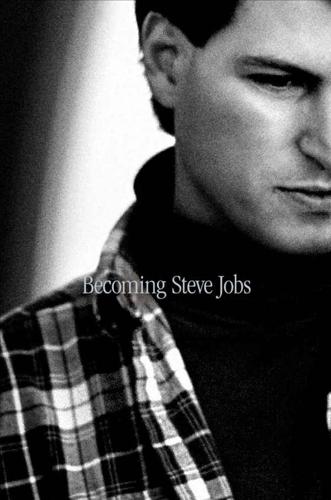
Becoming Steve Jobs: The Evolution of a Reckless Upstart Into a Visionary Leader
by
Brent Schlender
and
Rick Tetzeli
Published 24 Mar 2015
When one councilwoman tried to joke with him that perhaps the city should get free Wi-Fi in return for approving the move, Steve said, “Well, you know, I’m kind of old-fashioned. I believe that we pay taxes, and that the city then gives us services.” Over the last few months, a steady flow of visitors came by the house in Palo Alto. Bill Clinton came to visit, as did President Obama, for dinner with a select group of Silicon Valley leaders. John Markoff, of the New York Times, and Steven Levy, who had written several books about Silicon Valley, including ones about the development of the Macintosh and the iPod, dropped by together to pay their respects. Bill Gates wound up spending four hours with Steve one afternoon. “Steve and I will always get more credit than we deserve, because otherwise the story’s too complicated,” Gates says.

Goddess of the Market: Ayn Rand and the American Right
by
Jennifer Burns
Published 18 Oct 2009
Rand may also have inspired Brand’s later insistence that his hippy partners become comfortable with money and overcome their guilt about using it to reform the world. For libertarian and counterculture connections to cyberspace, see Fred Turner, From Counterculture to Cyberculture: Stewart Brand, the Whole Earth Network, and the Rise of Digital Utopianism (Chicago: University of Chicago Press, 2006); John Markoff, What the Dormouse Said: How the Sixties Counterculture Shaped the Personal Computer Industry (New York: Viking Penguin, 2005). Rand’s intersection with the computer culture is noted in Christopher Hitchens, “Why So Many High-Tech Executives Have Declared Allegiance to Randian Objectivism,” Business 2.0, August/September 2001, 129–32, and is surely worth further exploration. 49.
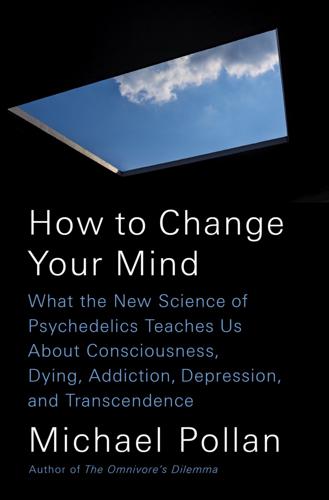
How to Change Your Mind: What the New Science of Psychedelics Teaches Us About Consciousness, Dying, Addiction, Depression, and Transcendence
by
Michael Pollan
Published 30 Apr 2018
Federal agents tailed the people at the meeting back to Stanley and his lab in Orinda, California; during the bust, they reportedly found 350,000 doses of LSD. * The two best accounts of the counterculture’s (and its chemicals’) influence on the computer revolution are Fred Turner’s From Counterculture to Cyberculture: Stewart Brand, the Whole Earth Network, and the Rise of Digital Utopianism (Chicago: University of Chicago Press, 2006) and John Markoff’s What the Dormouse Said: How the Sixties Counterculture Shaped the Personal Computer Industry (New York: Penguin Books, 2005). * Leary wrote in Flashbacks that he was initially frightened to take psilocybin in a prison with violent criminals. When he confessed his fear to one of the prisoners, the inmate admitted he was afraid too.

Augmented: Life in the Smart Lane
by
Brett King
Published 5 May 2016
Harpaz, N.H. Shah, W. DuMouchel and E. Horvitz, “Toward enhanced pharmacovigilance using patient-generated data on the Internet,” Journal of Clinical Pharmacology & Therapeutics 96, no. 2 (August 2014): 239–46. 12 “All Things Considered,” NPR Radio, aired 8 April 2015. 13 Slang for “Internet” 14 John Markoff, “Computer wins on ‘Jeopardy!’: Trivial, It’s Not!” New York Times, 16 February 2011, http://www.nytimes.com/2011/02/17/science/17jeopardy-watson.html. 15 Irana Ivanova, “IBM’s Watson joins Genome Center to cure cancer,” Crain’s New York Business, 19 March 2014, http://www.crainsnewyork.com/article/20140319/HEALTH_CARE/140319845/ibmswatson-joins-genome-center-to-cure-cancer. 16 p53 is often called a “tumour suppressor protein structure” because of its role in defending the body against the formation of cancer cells. 17 Ian Steadman, “IBM’s Watson is better at diagnosing cancer than human doctors,” Wired, 11 February 2013, http://www.wired.co.uk/news/archive/2013-02/11/ibm-watson-medical-doctor. 18 “IBM and Partners to Transform Person Health with Watson and Open Cloud,” IBM Press Release, 13 April 2015, https://www-03.ibm.com/press/us/en/pressrelease/46580.wss. 19 Friction here refers to the user workload required to use the software.
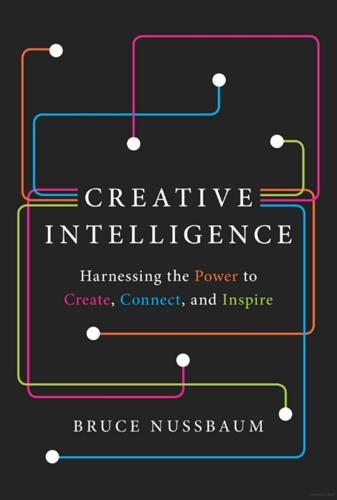
Creative Intelligence: Harnessing the Power to Create, Connect, and Inspire
by
Bruce Nussbaum
Published 5 Mar 2013
ZDNet, February 8, 2002, accessed September 5, 2012, http://www.zdnet.com/news/ will-merger-hurt-hps-printing-biz/120630. 197 About 300 million have been: HP release, “Twenty Years of Innovation,” http://www.hp.com/hpinfo/newsroom/ press_kits/2008/deskjet20/ bg_deskjet20thannivtimeline.pdf. 197 In 2011, HP’s Imaging: Ibid. 197 A month before: Robinson and Stern, Corporate Creativity, 165. 197 He wandered into the calligraphy: Steve Jobs, text and video of Stanford commencement address, June 12, 2005, posted on the Stanford Report, June 14, 2005, accessed September 4, 2012, http://news.stanford.edu/news/ 2005/june15/jobs-061505.html. 198 Without Peggy Guggenheim: http://en.wikipedia.org/wiki/ Jackson_Pollock; http://totallyhistory.com/jackson-pollock/, accessed September 5, 2012. 198 in Long Island where his Drip paintings: http://totallyhistory.com/jackson-pollock/, accessed September 5, 2012. 198 Guggenheim also introduced: Helen Gent, “Peggy Guggenheim, Mistress of Modernism,” Marie Claire, June 19, 2009, accessed September 5, 2012, http://au.lifestyle.yahoo.com/marie-claire/ features/life-stories/article/-/5869429/peggy-guggenheim-mistress-of-modernism/. 198 Of course, Guggenheim played: Kay Larson, Where the Heart Beats (New York: Penguin Press, 2012), 96–97. 198 More recently, Stanford University: Liz Gannes, “Stanford Professors Launch Coursera with $16M from Kleiner Perkins and NEA,” All Things D, April 18, 2012, accessed September 5, 2012, http://allthingsd.com/20120418/ stanford-professors-launch-coursera-with-16m -from-kleiner-perkins-and-nea/; John Markoff, “Online Education Venture Lures Cash Infusion and Deals with 5 Top Universities,” New York Times, April 18, 2012, accessed September 5, 2012, http://www.nytimes.com/2012/ 04/18/technology/coursera-plans- to-announce-university-partners-for-online-classes.html. 198 one of two VCs who invested: Markoff, “Online Education Venture.” 198 In December 2009, Jesse Genet: http://www.kickstarter.com/projects/ lumi/lumi-co-a-new-textile-printing-technology, accessed September 5, 2012. 199 a printing system based: Morgan Furst, Q&A with Jesse Genet, Source 4 Style, December 22, 2011, accessed September 5, 2012, http://www.source4style.com/trends/the-academy/ qa-with-jesse-genet-printing-with-light/; http://lumi.co/, accessed September 5, 2012. 199 Angoulvant needed $50,000: http://lumi.co/collections/kickstarter, accessed September 5, 2012; http://www.kickstarter.com/projects/ lumi/print-on-fabric-using-sunlight-the-lumi-process, accessed September 5, 2012. 199 Eddie Huang was a twenty-three-year-old: Baohaus story based on interviews with Evan Huang; Fresh Off the Boat, Eddie Huang’s blog, http://thepopchef.blogspot.com/; New York magazine, accessed September 8, 2012, Salon, January 19, 2011; http://www.baohausnyc.com/about.html, accessed September 5, 2012. 200 the small meat-filled buns: Joe DiStefano, “A First Look at Baohaus (in Which I Learn I Fit the Profile), January 11, 2012, accessed September 5, 2012, http://newyork.seriouseats.com/2010/01/ a-first-look-at-baohaus-review-lower-east-side-manhattan-new.html; http://www.baohausnyc.com/about.html, accessed September 5, 2012. 200 Huang wanted to call: Evan Huang, interviews with the author, spring 2012. 200 Eddie’s father may have been: “The Year of Asian Hipster Cuisine,” New York magazine “Grub Street,” July 8, 2012, accessed September 5, 2012, http://newyork.grubstreet.com/2012/ 07/asian_hipster_cuisine.html. 200 Luckily, several of Eddie: Evan Huang, interviews with the author, spring 2012. 201 They arrived in 2009: interviews with Huang, spring 2012; http://thepopchef.blogspot.com/search?
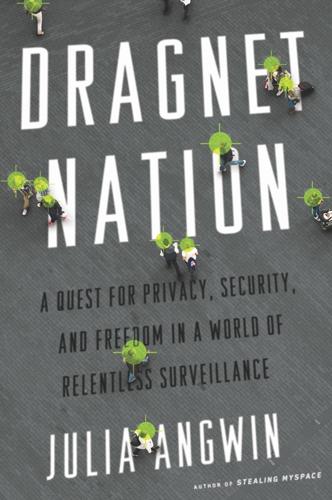
Dragnet Nation: A Quest for Privacy, Security, and Freedom in a World of Relentless Surveillance
by
Julia Angwin
Published 25 Feb 2014
In 1996, however, the government dropped: Phil Zimmermann, “Significant Moments in PGP’s History: Zimmermann Case Dropped” philzimmermann.com (personal blog), January 12, 1996, http://www.philzimmermann.com/EN/news/PRZ_case_dropped.html. And in 1999, the United States dropped: Jeri Clausing, “White House Eases Export Controls on Encryption,” New York Times, September 17, 1999, http://www.nytimes.com/library/tech/99/09/biztech/articles/17encrypt.html. It developed the “Clipper chip” to encrypt: John Markoff, “Technology; Wrestling over the Key to the Codes,” New York Times, May 9, 1993, http://www.nytimes.com/1993/05/09/business/technology-wrestling-over-the-key-to-the-codes.html. copies of the encryption keys: Steven Levy, “Battle of the Clipper Chip,” New York Times, June 12, 1994, http://www.nytimes.com/1994/06/12/magazine/battle-of-the-clipper-chip.html?
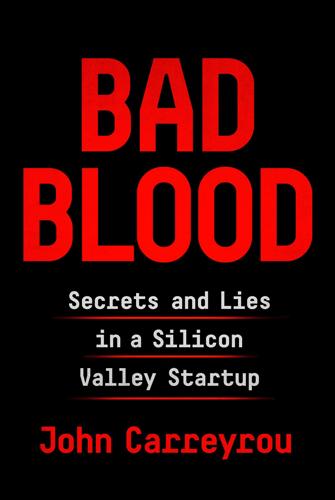
Bad Blood: Secrets and Lies in a Silicon Valley Startup
by
John Carreyrou
Published 20 May 2018
Theranos filed its fourteen-page complaint: Theranos Inc. v. Avidnostics Inc., No. 1-07-cv-093-047, California Superior Court in Santa Clara, complaint filed on August 27, 2007, 12–14. The technique was not new: Anthony K. Campbell, “Rainbow Makers,” Chemistry World, June 1, 2003. 3. APPLE ENVY In January of that year: John Markoff, “Apple Introduces Innovative Cellphone,” New York Times, January 9, 2007. One of them was Ana Arriola: Ana used to be a man named George. She transitioned from male to female after she worked at Theranos. “We have lost sight of our business objective”: Email with the subject line “IT” sent by Justin Maxwell to Ana Arriola in the early morning hours of September 20, 2007.
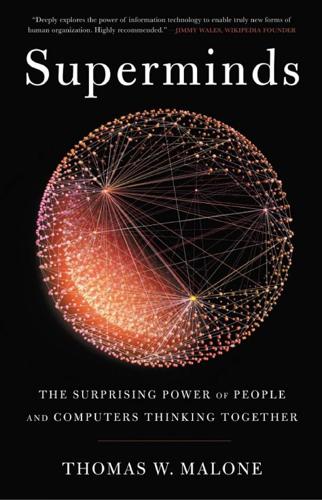
Superminds: The Surprising Power of People and Computers Thinking Together
by
Thomas W. Malone
Published 14 May 2018
Ng, “Building High-Level Features Using Large Scale Unsupervised Learning,” in Proceedings of the 29th International Conference on Machine Learning, ed. John Langford and Joelle Pineau (Edinburgh, Scotland: Omnipress, 2012), http://static.googleusercontent.com/external_content/untrusted_dlcp/research.google.com/en/us/pubs/archive/38115.pdf; John Markoff, “How Many Computers to Identify a Cat? 16,000,” New York Times, June 25, 2012, http://www.nytimes.com/2012/06/26/technology/in-a-big-network-of-computers-evidence-of-machine-learning.html. 20. James Randerson, “How Many Neurons Make a Human Brain? Billions Fewer Than We Thought,” Guardian, February 28, 2012, https://www.theguardian.com/science/blog/2012/feb/28/how-many-neurons-human-brain; Federico A.

A World Without Work: Technology, Automation, and How We Should Respond
by
Daniel Susskind
Published 14 Jan 2020
Aaron Smith and Janna Anderson, “AI, Robotics, and the Future of Jobs: Key Findings,” Pew Research Center, 6 August 2014, available at http://www.pewinternet.org/2014/08/06/future-of-jobs/ (accessed August 2018). 3. See, for instance, Erik Brynjolfsson and Tom Mitchell, “What Can Machine Learning Do? Workforce Implications,” Science 358, no 6370 (2017). 4. John Markoff, “How Many Computers to Identify a Cat? 16,000,” New York Times, 25 June 2012. 5. Jeff Yang, “Internet Cats Will Never Die,” CNN, 2 April 2015. 6. Colin Caines, Florian Hoffman, and Gueorgui Kambourov, “Complex-Task Biased Technological Change and the Labor Market,” International Finance Division Discussion Papers 1192 (2017). 7.

The AI Economy: Work, Wealth and Welfare in the Robot Age
by
Roger Bootle
Published 4 Sep 2019
An observed phenomenon is described as a “law” and conclusions that must “inevitably” follow are drawn. Often such assertions rest on flimsy, if not nonexistent, foundations. Disappointment and disillusion are the “inevitable” result. Indeed, some good judges think that the pace of AI advances may recently have slowed down. This is the view of John Markoff, the Pulitzer Prize-winning New York Times journalist. He was struck by the disappointing performance of the robots entered into the DARPA Robotics Challenge in June 2015. Markoff claims that there has been no profound technological innovation since the invention of the smartphone in 2007.23 Technological underperformance There are serious doubts about just how capable robots and AI will really be.

Reset
by
Ronald J. Deibert
Published 14 Aug 2020
Thanks to the many dedicated journalists with whom we have collaborated, and in particular Colin Freeze, Mark Harrison, Joseph Menn, Barton Gellman, Ellen Nakashima, Irina Borogan, Andrei Soldatov, Andy Greenberg, Robert Steiner, Lorenzo Franceschi-Bicchierai, Jeremy Wagstaff, Dave Seglins, Noah Shachtman, Shane Harris, Ryan Tate, Trevor Timm, David Walmsley, Avi Asher-Schapiro, Joseph Cox, Chris Bing, Nathan VanderKlippe, Glenn Greenwald, Robert McMillan, John Markoff, Mark MacKinnon, Nahlah Ayed, Josh Rogin, Ronen Bergman, Suzanne Smalley, Michael Isikoff, Raphael Satter, Nicole Perlroth, Eva Dou, Thomas Brewster, Kim Zetter, Sandro Contenta, Mehul Srivastava, Zack Whittaker, Kate Allen, Amy Goodman, and Stephanie Kirchgaessner. Special thanks to Eric Sears and John Palfrey at the MacArthur Foundation, Vera Franz and Hannah Draper at OSF, Jenny Toomey, Lori McGlinchey, Alberto Cerda Silva, Matt Mitchell, and Michael Brennan at the Ford Foundation, Eli Sugarman and Patrick Collins at the Hewlett Foundation, Laurent Elder, Ruhiya Seward, Matthew Smith, and Phet Sayo at IDRC, Adam Lynn and Libby Liu at OTF, Michael Madnick at Mountain, and the Oak Foundation and Sigrid Rausing Trust.

The Smart Wife: Why Siri, Alexa, and Other Smart Home Devices Need a Feminist Reboot
by
Yolande Strengers
and
Jenny Kennedy
Published 14 Apr 2020
Many social robotic projects have been funded by government military programs, which are interested in robots that can serve in the hypermasculine defense sector (Robertson, “Gendering Humanoid Robots”). While efforts to create the smart warrior provide a fascinating subplot to the smart wife, this is not something we delve into here. 7. John Markoff, “What Comes after the Roomba?,” New York Times, October 21, 2018, https://www.nytimes.com/2018/10/21/business/what-comes-after-the-roomba.html. 8. Steffen Sorrell, Consumer Robotics ~ From Housekeeper to Friend (Basingstoke: Juniper Research, 2017), http://www.juniperresearch.com. 9. Katelyn Swift-Spong, Elaine Short, Eric Wade, and Maja J.

Empire of the Sum: The Rise and Reign of the Pocket Calculator
by
Keith Houston
Published 22 Aug 2023
Cortada, “How the IBM PC Won, Then Lost, the Personal Computer Market,” IEEE Spectrum, July 21, 2021, https://spectrum.ieee.org/how-the-ibm-pc-won-then-lost-the-personal-computer-market. 33 Dan Bricklin, “National Computer Conference,” Software Arts and VisiCalc, accessed January 20, 2022, http://www.bricklin.com/history/saincc.htm. 34 Fylstra, “Creation and Destruction of VisiCalc,” 8–9; Jennings, “VisiCalc 1979 (Part 3).” 35 Campbell-Kelly and Ceruzzi, “Interview with Dan Bricklin and Bob Frankston,” 28. 36 Campbell-Kelly and Ceruzzi, “Interview with Dan Bricklin and Bob Frankston,” 21–22; Jennings, “VisiCalc 1979 (Part 3).” 37 Campbell-Kelly and Ceruzzi, “Interview with Dan Bricklin and Bob Frankston,” 28. 38 Jennings, “VisiCalc 1979 (Part 3)”; Dan Bricklin, “The First Product,” Software Arts and VisiCalc, accessed January 21, 2022, http://www.bricklin.com/history/saiproduct1.htm. 39 Licklider, “Ten Years of Rows and Columns,” 327. 40 Bricklin, “Ben Rosen’s Reaction.” 41 Robert E. Ramsdell, “The Power of VisiCalc,” BYTE 5, no. 11 (November 1980): 192; John Markoff, “Radio Shack: Set Apart from the Rest of the Field,” InfoWorld, July 5, 1982, 43. 42 Gregg Williams and Rob Moore, “The Apple Story,” BYTE, January 1985, 174. 43 Robert X. Cringely, Accidental Empires (Reading, MA: Addison-Wesley, 1991), 71. 44 Mary Brandel, “PC Software Transforms the PC,” Computerworld, August 2, 1999. 45 Tim Bajarin, “The Application That Birthed The IBM PC,” Forbes, August 18, 2021, https://www.forbes.com/sites/timbajarin/2021/08/18/the-application-that-birthed-the-ibm-pc/. 46 John F.

The Age of Surveillance Capitalism
by
Shoshana Zuboff
Published 15 Jan 2019
Humphreys, “Legalizing Lawlessness: On Giorgio Agamben’s State of Exception,” European Journal of International Law 17, no. 3 (2006): 677–87, https://doi.org/10.1093/ejil/chl020. 35. Levy, In the Plex, 83–85. 36. Levy, 86–87 (italics mine). 37. See Lee, “Postcards.” 38. Lee. 39. Lee. 40. Auletta, Googled. 41. John Markoff and G. Pascal Zachary, “In Searching the Web, Google Finds Riches,” New York Times, April 13, 2003, http://www.nytimes.com/2003/04/13/business/in-searching-the-web-google-finds-riches.html. 42. Peter Coy, “The Secret to Google’s Success,” Bloomberg.com, March 6, 2006, http://www.bloomberg.com/news/articles/2006-03-05/the-secret-to-googles-success (italics mine). 43.
…
See Matt Marshall, “Spying on Startups,” Mercury News, November 17, 2002. 73. Marshall, “Spying on Startups.” 74. Mark Williams Pontin, “The Total Information Awareness Project Lives On,” MIT Technology Review, April 26, 2006, https://www.technologyreview.com/s/405707/the-total-information-awareness-project-lives-on. 75. John Markoff, “Taking Spying to Higher Level, Agencies Look for More Ways to Mine Data,” New York Times, February 25, 2006, http://www.nytimes.com/2006/02/25/technology/25data.html. 76. Inside Google, “Lost in the Cloud: Google and the US Government,” Consumer Watchdog, January 2011, insidegoogle.com/wp-content/uploads/2011/01/GOOGGovfinal012411.pdf. 77.

The Rise and Fall of Nations: Forces of Change in the Post-Crisis World
by
Ruchir Sharma
Published 5 Jun 2016
Displacement and Job Creation,” World Bank, 2014. 11 BCA Research, “The End of Europe’s Welfare State,” Weekly Report, June 26, 2015. 12 Carl Benedikt Frey and Michael Osborne, “The Future of Employment: How Susceptible Are Jobs to Computerisation?,” Oxford University Programme on the Impacts of Future Technology, September 17, 2013. 13 David Rotman, “How Technology Is Destroying Jobs,” MIT Technology Review, June 12, 2013. 14 John Markoff, “The Next Wave,” Edge, July 16, 2015. Chapter 2: The Circle of Life 1 Fareed Zakaria, The Post-American World and the Rise of the Rest (New York: Norton, 2008). 2 Jonathan Wheatley, “Brazil’s Leader Blames White People for Crisis,” Financial Times, March 27, 2009. 3 Global Emerging Markets Equity Team, “Tales from the Emerging World: The Myths of Middle-Class Revolution,” Morgan Stanley Investment Management, July 16, 2013. 4 “The Quest for Prosperity,” Economist, May 15, 2007. 5 Saeed Naqvi, “A Little Left of Self Interest,” The Friday Times, June 26, 2015. 6 William Easterly, The Tyranny of Experts: Economists, Dictators, and the Forgotten Rights of the Poor (New York: Basic Books, 2014).

Platform Revolution: How Networked Markets Are Transforming the Economy--And How to Make Them Work for You
by
Sangeet Paul Choudary
,
Marshall W. van Alstyne
and
Geoffrey G. Parker
Published 27 Mar 2016
Denise Dubie, “Microsoft Struggling to Convince about Vista,” Computerworld UK, November 19, 2007, http://www.computerworlduk.com/news/it-vendors/microsoft-struggling-to-convince-about-vista-6258/. 9. Robin Bloor, “10 Reasons Why Vista is a Disaster,” Inside Analysis, December 18, 2007, http://insideanalysis.com/2007/12/10-reasons-why-vista-is-a-disaster/2/. 10. See https://en.wikipedia.org/wiki/Windows_Vista and https://en.wikipedia.org/wiki/Windows_XP. 11. Steve Lohr and John Markoff, “Windows Is So Slow, but Why?” New York Times, March 27, 2006, http://www.nytimes.com/2006/03/27/technology/27soft.html?_r=1. 12. Carliss Young Baldwin and Kim B. Clark, Design Rules: The Power of Modularity, vol. 1 (Cambridge, MA: MIT Press, 2000). 13. Robert S. Huckman, Gary P. Pisano, and Liz Kind, “Amazon Web Services,” Harvard Business School Case 609-048, 2008. 14.
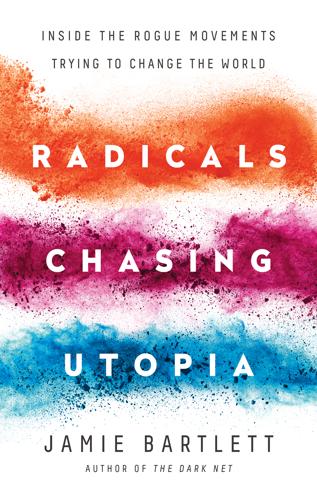
Radicals Chasing Utopia: Inside the Rogue Movements Trying to Change the World
by
Jamie Bartlett
Published 12 Jun 2017
* Openness is also thought to be a good predictor of creativity, which is why LSD is so often associated with music. Steve Jobs said taking LSD was one of the two or three most important things he’d ever done. (The interesting overlaps between the early computer scene and psychedelics are brilliantly documented in John Markoff’s 2005 book What the Dormouse Said.) * At the very least, there may be some kind of two-way relationship: People with higher levels of openness, or more open to the prospects of self-development, appear to get more out of their experience; and the more people get out of their experience, the more open they become.

The Master Algorithm: How the Quest for the Ultimate Learning Machine Will Remake Our World
by
Pedro Domingos
Published 21 Sep 2015
Learning Deep Architectures for AI,* by Yoshua Bengio (Now, 2009), is a brief introduction to deep learning. The problem of error signal diffusion in backprop is described in “Learning long-term dependencies with gradient descent is difficult,”* by Yoshua Bengio, Patrice Simard, and Paolo Frasconi (IEEE Transactions on Neural Networks, 1994). “How many computers to identify a cat? 16,000,” by John Markoff (New York Times, 2012), reports on the Google Brain project and its results. Convolutional neural networks, the current deep learning champion, are described in “Gradient-based learning applied to document recognition,”* by Yann LeCun, Léon Bottou, Yoshua Bengio, and Patrick Haffner (Proceedings of the IEEE, 1998).
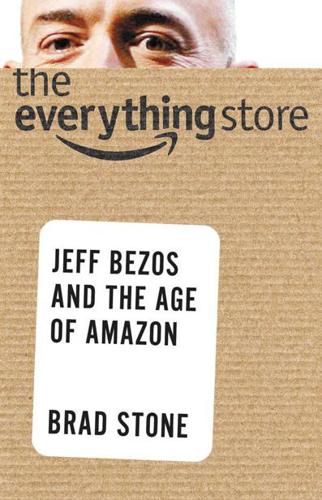
The Everything Store: Jeff Bezos and the Age of Amazon
by
Brad Stone
Published 14 Oct 2013
My friend and colleague Ashlee Vance proved an invaluable sounding board when I needed to discuss the thornier challenges of telling this story. I also want to thank fellow journalists Steven Levy, Ethan Watters, Adam Rogers, George Anders, Dan McGinn, Nick Bilton, Claire Cain Miller, Damon Darlin, John Markoff, Jim Brunner, Alan Deutschman, Tom Giles, Doug MacMillan, Adam Satariano, Motoko Rich, and Peter Burrows. Nick Sanchez provided stellar research and reporting assistance for this book, and Morgan Mason from the journalism program at the University of Nevada at Reno assisted with interviews of Amazon associates at the fulfillment center in Fernley, Nevada.
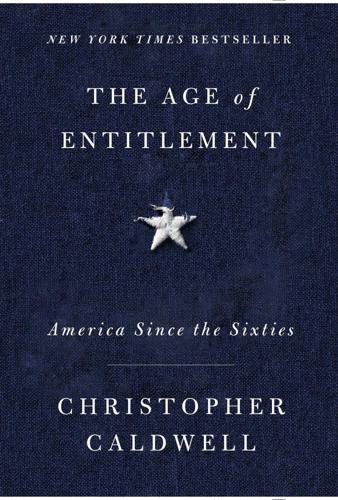
The Age of Entitlement: America Since the Sixties
by
Christopher Caldwell
Published 21 Jan 2020
Cited in Nadine Strossen, “Thoughts on the Controversy over Politically Correct Speech,” SMU Law Review 46 (1992): 119–44. The poll was carried out by the Higher Education Research Institute at UCLA. It showed: 4.9% far left, 36.8% liberal, 40.2% moderate, 17.8% conservative. In 1983, no Harvard undergraduate: Author’s recollection. That was also the year: John Markoff, “Innovators of Intelligence Look to Past,” New York Times, December 16, 2014. In fact, the percentage of people: Samuel A. Stouffer, Communism, Conformity and Civil Liberties: A Cross-Section of the Nation Speaks Its Mind (New Brunswick, New Jersey: Transaction Publishers, 2009 [New York: Doubleday, 1955]).
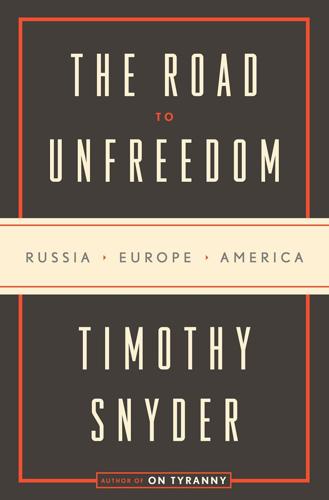
The Road to Unfreedom: Russia, Europe, America
by
Timothy Snyder
Published 2 Apr 2018
See also Anders Åslund and Andrew Kuchins, The Russia Balance Sheet (Washington, D.C.: Peterson Institute, 2009). In matters of peace and war Estonia: Hannes Grassegger and Mikael Krogerus, “Weaken from Within,” New Republic, Dec. 2017, 18; Marcel Van Herpen, Putin’s Propaganda Machine (Lanham: Rowman and Littlefield, 2016), 121. Georgia: John Markoff, “Before the Gunfire, Cyberattacks,” NYT, Aug. 12, 2008; D. J. Smith, “Russian Cyber Strategy and the War Against Georgia,” Atlantic Council, Jan. 17, 2014; Irakli Lomidze, “Cyber Attacks Against Georgia,” Ministry of Justice of Georgia: Data Exchange Agency, 2011; Sheera Frenkel, “Meet Fancy Bear, the Russian Group Hacking the US election,” BuzzFeed, Oct. 15, 2016.
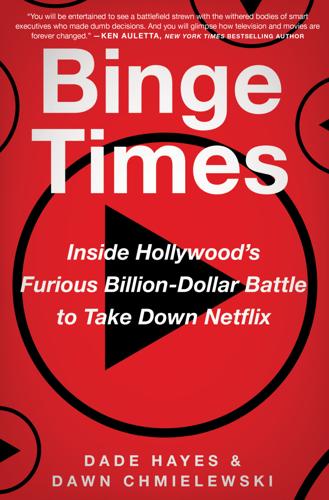
Binge Times: Inside Hollywood's Furious Billion-Dollar Battle to Take Down Netflix
by
Dade Hayes
and
Dawn Chmielewski
Published 18 Apr 2022
CHAPTER 1: THE DISCOVERY OF TELEVISION AMONG THE BEES David Blair, Thomas Kessler, Mark Cuban, Rob Glaser, Jonathan Taplin, and Ira Rubenstein were interviewed by the authors. This chapter also draws from material in John Battelle, “WAX or the Discovery of Television Among the Bees,” Wired, February 2, 1993; John Markoff, “Cult Film Is a First on Internet,” New York Times, May 24, 1993; Kara Swisher and Evan Ramstad, “Yahoo to Announce Acquisition of Broadcast.com for $5.7 Billion,” Wall Street Journal, April 1, 1999; “Blockbuster Acquires Movielink,” Bloomberg News, August 9, 2007; and John Kisseloff’s The Box: An Oral History of Television, 1929–1961 (Golden, CO: ReAnimus Press, 2013).

Tripping on Utopia: Margaret Mead, the Cold War, and the Troubled Birth of Psychedelic Science
by
Benjamin Breen
Published 16 Jan 2024
From that point onward: As Lilly writes (Center of the Cyclone, 43), “I proposed trying LSD on dolphins as an aid to my understanding of the substance and some of the physiological dangers of its use.” “problems and potentialities”: “Hallucination Drug Topic for Discussion Saturday,” Spartan Daily student newspaper, San Jose State College, May 7, 1964, 1. And watching from the audience: John Markoff, Whole Earth: The Many Lives of Stewart Brand (New York: Penguin Press, 2022), 208. In May 1965: See Lilly’s comments in Harold A. Abramson, ed., The Use of LSD in Psychotherapy and Alcoholism (Indianapolis, IN: Bobbs-Merrill, 1967). “With man one is sometimes”: Charles C. Berdjis, ed., “Proceedings of a Contractors’ Conference on Behavioral Sciences, 14 and 15 October 1965” (Edgewood Arsenal Special Publication, EASP 100-11, February 1967), 345–46.
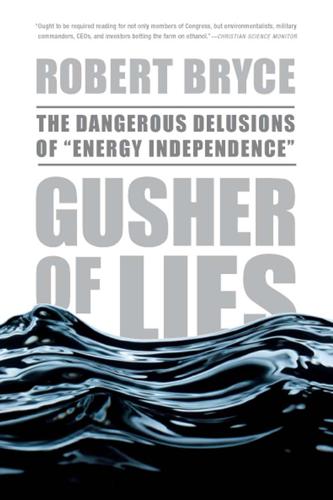
Gusher of Lies: The Dangerous Delusions of Energy Independence
by
Robert Bryce
Published 16 Mar 2011
In 2005, it was 378.4 million gallons. EIA data available: http://tonto.eia.doe.gov/ dnav/pet/hist/c100000001A.htm. 20. EIA, Annual Energy Outlook 2007, Table D14, 204. 21. Electricity consumption figures are per EIA’s Annual Energy Outlook 2007, Table D6, 196. 22. Google. Available: http://www.google.com/corporate/execs.html. 23. John Markoff and Saul Hansell, “Hiding in Plain Sight, Google Seeks More Power,” New York Times, June 14, 2006. 24. A 10,000-square-foot data center uses as much electricity as 1,000 homes. See Robert Bryce, “Power Struggle,” Interactive Week, December 19, 2000. Two football fields are equal to about 115,000 square feet.

Digital Disconnect: How Capitalism Is Turning the Internet Against Democracy
by
Robert W. McChesney
Published 5 Mar 2013
This essay was unpublished until 2012; it was originally written for inclusion in their book Monopoly Capital (New York: Monthly Review Press, 1966) but was not approved by both authors before Baran’s untimely death in 1964. 24. The United States produces nearly 25 percent greater output than it did in 1999 with the same number of workers, but real wages have been stagnant or declined. See David J. Lynch, “Did That Robot Take My Job?” Bloomberg Businessweek, Jan. 9–15, 2012, 15. 25. See John Markoff, “Skilled Work, Without the Worker,” New York Times, Aug. 19, 2012, A1. 26. For a moving account of the deterioration of American life and specifically the growth of poverty among the working class, see Chris Hedges and Joe Sacco, Days of Destruction, Days of Revolt (New York: Nation Books, 2012). 27.

Machine, Platform, Crowd: Harnessing Our Digital Future
by
Andrew McAfee
and
Erik Brynjolfsson
Published 26 Jun 2017
With a plan?”: “Ballmer Laughs at iPhone,” YouTube, September 18, 2007, 2:22, https://www.youtube.com/watch?v=eywi0h_Y5_U. 152 “When [the iPhone] first came out in early 2007”: Walter Isaacson, Steve Jobs (New York: Simon & Schuster, 2011), 501. 152 “You don’t want your phone to be like a PC”: John Markoff, “Phone Shows Apple’s Impact on Consumer Products,” New York Times, January 11, 2007, http://www.nytimes.com/2007/01/11/technology/11cnd-apple.html. 162 Steve Jobs made a “nine-digit” acquisition offer: Victoria Barret, “Dropbox: The Inside Story of Tech’s Hottest Startup,” Forbes, October 18, 2011, http://www.forbes.com/sites/victoriabarret/2011/10/18/dropbox-the-inside-story-of-techs-hottest-startup/#3b780ed92863. 162 84% of total revenue for Facebook: Facebook, “Facebook Reports Third Quarter 2016 Results,” November 2, 2016, https://investor.fb.com/investor-news/press-release-details/2016/Facebook-Reports-Third-Quarter-2016-Results/default.aspx. 163 “grand slam”: Apple, “iPhone App Store Downloads Top 10 Million in First Weekend,” July 14, 2008, http://www.apple.com/pr/library/2008/07/14iPhone-App-Store-Downloads-Top-10-Million-in-First-Weekend.html. 164 $6 billion: Daisuke Wakabayashi, “Apple’s App Store Sales Hit $20 Billion, Signs of Slower Growth Emerge,” Wall Street Journal, January 6, 2016, https://www.wsj.com/articles/apples-app-store-sales-hit-20-billion-signs-of-slower-growth-emerge-1452087004. 165 “Jobs soon figured out”: Isaacson, Steve Jobs, 501. 165 Facebook’s offer to publish: Henry Mance, “UK Newspapers: Rewriting the Story,” Financial Times, February 9, 2016, http://www.ft.com/intl/cms/s/0/0aa8beac-c44f-11e5-808f-8231cd71622e.html#axzz3znzgrkTq. 166 “we only have the faintest idea”: Peter Rojas, “Google Buys Cellphone Software Company,” Engadget, August 17, 2005, https://www.engadget.com/2005/08/17/google-buys-cellphone-software-company. 166 “best deal ever”: Owen Thomas, “Google Exec: Android Was ‘Best Deal Ever,’ ” VentureBeat, October 27, 2010, http://venturebeat.com/2010/10/27/google-exec-android-was-best-deal-ever. 166 Android founder Andy Rubin: Victor H., “Did You Know Samsung Could Buy Android First, but Laughed It Out of Court?”

Radical Technologies: The Design of Everyday Life
by
Adam Greenfield
Published 29 May 2017
,” Neurobiology of Aging, April 2009, Volume 30, Issue 4, pp. 507–14. 10Radical technologies 1.Bruce Sterling and Jon Lebkowsky, “Topic 487: State of the World 2016,” The WELL, January 3, 2016, well.com. 2.Mark Bergen, “Nest CEO Tony Fadell Went to Google’s All-Hands Meeting to Defend Nest. Here’s What He Said,” Recode, April 13, 2016. f 3.Brad Stone and Jack Clark, “Google Puts Boston Dynamics Up for Sale in Robotics Retreat,” Bloomberg Technology, March 17, 2016. 4.John Markoff, “Latest to Quit Google’s Self-Driving Car Unit: Top Roboticist,” New York Times, August 5, 2016. 5.Mark Harris, “Secretive Alphabet Division Funded by Google Aims to Fix Public Transit in US,” Guardian, June 27, 2016. 6.Siimon Reynolds, “Why Google Glass Failed: A Marketing Lesson,” Forbes, February 5, 2015. 7.Rajat Agrawal, “Why India Rejected Facebook’s ‘Free’ Version of the Internet,” Mashable, February 9, 2016. 8.Mark Zuckerberg, “The technology behind Aquila,” Facebook, July 21, 2016, facebook.com/notes/mark-zuckerberg/the-technology-behind-aquila/10153916136506634/. 9.Mari Saito, “Exclusive: Amazon Expanding Deliveries by Its ‘On-Demand’ Drivers,” Reuters, February 8, 2016. 10.Alan Boyle, “First Amazon Prime Airplane Debuts in Seattle After Secret Night Flight,” GeekWire, August 4, 2016. 11.Farhad Manjoo, “Think Amazon’s Drone Delivery Idea Is a Gimmick?

Dreaming in Code: Two Dozen Programmers, Three Years, 4,732 Bugs, and One Quest for Transcendent Software
by
Scott Rosenberg
Published 2 Jan 2006
My account of Douglas Engelbart’s work draws on readings from his work collected at the Bootstrap Institute Web site at http://www.bootstrap.org/, as well as the accounts in Thierry Bardini, Bootstrapping (Stanford University Press, 2000); Howard Rheingold, Tools for Thought (Simon & Schuster, 1985); and John Markoff, What the Dormouse Said (Viking, 2005). The video of Engelbart’s 1968 demo is at http://sloan.stanford.edu/mousesite/1968Demo.htm. “store ideas, study them”: From the Invisible Revolution Web site, devoted to Engelbart’s ideas, at http://www.invisiblerevolution.net/nls.htm. “successful achievements can be utilized”: From the “Whom to Augment First?”

Plutocrats: The Rise of the New Global Super-Rich and the Fall of Everyone Else
by
Chrystia Freeland
Published 11 Oct 2012
average starting salary for a law school graduate See the National Association of Law Placement’s Employment Report and Salary Survey for the Class of 2010. http://www.nalp.org/uploads/Classof2010SelectedFindings.pdf. average lawyer earned May 2011 National Occupational Employment and Wage Estimates, Bureau of Labor Statistics. http://www.bls.gov/oes/current/oes231011.htm. The most advanced example of this trend is e-discovery See John Markoff, “Armies of Expensive Lawyers, Replaced by Cheaper Software,” New York Times, March 4, 2011. (Meanwhile, DLA Piper, one of the law firms) See Nathan Koppel and Vanessa O’Connell. “Pay Gap Widens at Big Law Firms as Partners Chase Star Attorneys,” Wall Street Journal, February 8, 2011. In the age of the global super-elite, even dentists Joan Juliet Buck, “Drill, Bébé, Drill,” New York Times T Magazine, August 10, 2011.
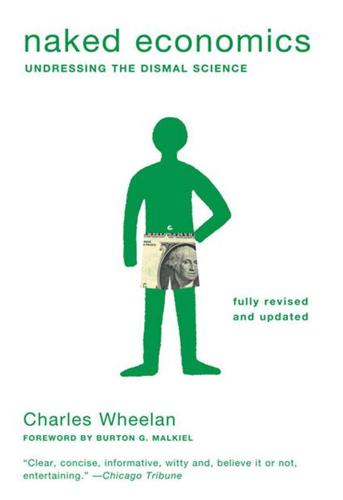
Naked Economics: Undressing the Dismal Science (Fully Revised and Updated)
by
Charles Wheelan
Published 18 Apr 2010
Giacomo Balbinotto Neto, Ana Katarina Campelo, and Everton Nunes da Silva, “The Impact of Presumed Consent Law on Organ Donation: An Empirical Analysis from Quantile Regression for Longitudinal Data,” Berkeley Program in Law & Economics, Paper 050107–2 (2007). CHAPTER 4. GOVERNMENT AND THE ECONOMY II 1. John Markoff, “CIA Tries Foray into Capitalism,” New York Times, September 29, 1999. 2. March 6, 2001. 3. Jackie Calmes and Louise Story, “In Washington, One Bank Chief Still Holds Sway,” New York Times, January 19, 2009. 4. Milton Friedman, Capitalism and Freedom (Chicago: University of Chicago Press, 1982). 5.
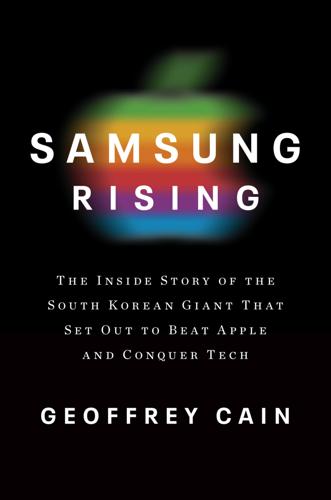
Samsung Rising: The Inside Story of the South Korean Giant That Set Out to Beat Apple and Conquer Tech
by
Geoffrey Cain
Published 15 Mar 2020
showed Samsung leading: Galaxy marketer, interview by the author, November 8, 2016. black rectangle with rounded edges: Jody Akana et al., Portable Display Device, U.S. Design Patent No. US D670,286 S, filed November 23, 2011, issued November 6, 2012, https://assets.sbnation.com/assets/1701443/USD670286S1.pdf. “Steven P. Jobs, 1955–2011”: John Markoff, “Apple’s Visionary Redefined Digital Age,” The New York Times, October 5, 2011 (online version published a day earlier under a different title), https://www.nytimes.com/2011/10/06/business/steve-jobs-of-apple-dies-at-56.html. “Outside the flagship Apple store”: Matt Richtel, “Jobs’s Death Draws Outpouring of Grief and Tributes,” The New York Times, October 5, 2011, https://www.nytimes.com/2011/10/06/technology/jobss-death-prompts-grief-and-tributes.html.

The Wires of War: Technology and the Global Struggle for Power
by
Jacob Helberg
Published 11 Oct 2021
Nitze School of Advanced International Studies,” The American Presidency Project, March 8, 2000, https://www.presidency.ucsb.edu/documents/remarks-the-paul-h-nitze-school-advanced-international-studies. 93 Singer and Brooking, LikeWar, 97. 94 Qiao Liang and Wang Xiangsui, “Unrestricted Warfare,” Cryptome, January 18, 2000, http://www.cryptome.org/cuw.htm. 95 “Neither war nor peace,” The Economist, January 25, 2018, https://www.economist.com/special-report/2018/01/25/neither-war-nor-peace. 96 Carlin, Dawn of the Code War, e-book, 200. 97 Osnos, Age of Ambition, 30. 98 Sanger, The Perfect Weapon, 18. 99 Ibid. 100 James Glanz and John Markoff, “Vast Hacking by a China Fearful of the Web,” New York Times, December 4, 2010, https://www.nytimes.com/2010/12/05/world/asia/05wikileaks-china.html?_r=2&hp. 101 Carlin, Dawn of the Code War, e-book, 323. 102 Ibid., 324. 103 Ben Buchanan, The Hacker and the State: Cyber Attacks and the New Normal of Geopolitics (Cambridge, MA: Harvard University Press, 2020), 90. 104 Andrew Jacobs and Miguel Helft, “Google, Citing Attack, Threatens to Exit China,” New York Times, January 12, 2010, www.nytimes.com/2010/01/13/world/asia/13beijing.html?

Click Here to Kill Everybody: Security and Survival in a Hyper-Connected World
by
Bruce Schneier
Published 3 Sep 2018
Jack Wiles et al. (23 Aug 2008), Techno Security’s Guide to Securing SCADA, Ingress, https://books.google.com/books?id=sHtIdWn1gnAC. 69In 2007, Israel attacked: David A. Fulghum, Robert Wall, and Douglas Barrie (5 Nov 2007), “Details about Israel’s high-tech strike on Syria,” Aviation Week Network, http://aviationweek.com/awin/details-about-israel-s-high-tech-strike-syria. 69In 2008, Russia coordinated: John Markoff (13 Aug 2008), “Before the gunfire, cyberattacks,” New York Times, http://www.nytimes.com/2008/08/13/technology/13cyber.html. 69The US conducted a series: Alan D. Campen, ed. (1992), The First Information War: The Story of Communications, Computers, and Intelligence Systems in the Persian Gulf War, AFCEA International Press, https://archive.org/details/firstinformation00camp. 69In 2016, President Obama acknowledged: Barack Obama (13 Apr 2016), “Statement by the president on progress in the fight against ISIL,” White House Office of the Press Secretary, https://obamawhitehouse.archives.gov/the-press-office/2016/04/13/statement-president-progress-fight-against-isil. 69In 2017, we learned about a group: This operation has been named “Dragonfly.”

The Job: The Future of Work in the Modern Era
by
Ellen Ruppel Shell
Published 22 Oct 2018
“Labor is the highest-cost factor” Tim Linder, “New Patent Report,” Connected World Magazine, January 28, 2014, https://connectedworld.com/new-patent-report-january-28-2014/. Sawyer (and his older brother, the two-armed Baxter robot) Dr. Brooks gave $4 per hour as the approximate cost of employing Baxter in response to a question at the Technonomy 2012 Conference in Tucson. See John Markoff, Andrew McAfee, and Rodney Brooks, “Where’s My Robot?,” Techonomy, November 2012, http://techonomy.com/conf/12-tucson/future-of-work/wheres-my-robot/. the Weather Channel broadcasts 18 million forecasts John Koetsier, “Data Deluge: What People Do on the Internet, Every Minute of Every Day,” Inc.com, July 25, 2017, https://www.inc.com/john-koetsier/every-minute-on-the-internet-2017-new-numbers-to-b.html.
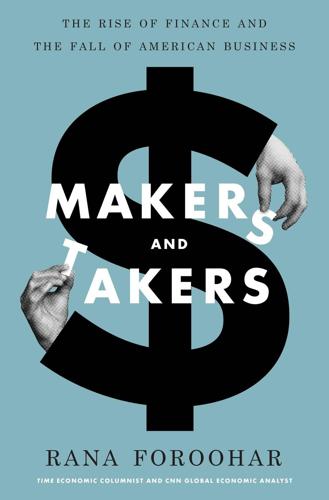
Makers and Takers: The Rise of Finance and the Fall of American Business
by
Rana Foroohar
Published 16 May 2016
Justin Hyde, “First Pontiac Aztek’s Sale Highlights the Long Half-Life of Ugly,” Motoramic, Yahoo Autos, August 1, 2013. 11. Lutz, Car Guys vs. Bean Counters, 73. 12. Robert D. Atkinson and Stephen J. Ezell, Innovation Economics: The Race for Global Advantage (New Haven, CT: Yale University Press, 2012), 22. 13. Gary Rivlin and John Markoff, “Tossing Out a Chief Executive,” New York Times, February 14, 2005. 14. Kimberly D. Elsbach, Ileana Stigliani, and Amy Stroud, “The Building of Employee Distrust: A Case Study of Hewlett-Packard from 1995 to 2010,” Organizational Dynamics 41, no. 3 (2012): 254–63. 15. Alfred Sloan, My Years with General Motors, reissue ed.
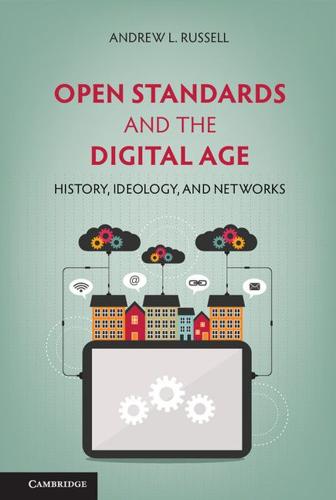
Open Standards and the Digital Age: History, Ideology, and Networks (Cambridge Studies in the Emergence of Global Enterprise)
by
Andrew L. Russell
Published 27 Apr 2014
Brock, The Second Information Revolution (Boston: Harvard University Press, 2003), 106–111. 29 Steven Levy, Hackers: Heroes of the Computer Revolution (New York: Doubleday, 1984); Edwards, Closed World; Atsushi Akera, “Voluntarism and the Fruits of Collaboration: The IBM User Group, Share,” Technology and Culture 42 (2001): 710–736; Fred Turner, From Counterculture to Cyberculture: Stewart Brand, the Whole Earth Network, and the Rise of Digital Utopianism (Chicago: University of Chicago Press, 2006); John Markoff, What the Dormouse Said: How the Sixties Counterculture Shaped the Personal Computer Industry (New York: Penguin, 2006); Ted Friedman, Electric Dreams: Computers in American Culture (New York: New York University Press, 2005); Steven W. Usselman, “Comment: Mediating Innovation: Reflections on the Complex Relationships of User and Supplier,” Enterprise & Society 7 (2006): 477–484. 30 Steven W.
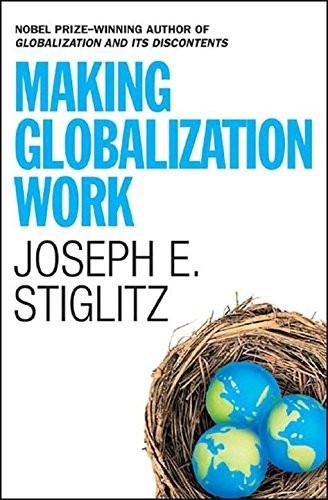
Making Globalization Work
by
Joseph E. Stiglitz
Published 16 Sep 2006
See also Richard Poynder, “Enclosing the Digital Commons,” Information Today, vol. 20, no. 5 (May 2003), pp. 37–38; and Lawrence Lessig, The Future of Ideas: The Fate of the Commons in a Connected World (New York: Random House, 2001). 15.In negotiations with AOL, for example, Microsoft demanded that AOL drop RealNetworks’ RealPlayer, which was in direct competition with Microsoft’s Windows Media Player. RealNetworks’s anti-trust lawsuit against Microsoft quoted a Microsoft executive as saying Microsoft would target RealNetworks “for obliteration.” See John Markoff, “RealNetworks Accuses Microsoft of Restricting Competition,” New York Times, December 19, 2003, p. C5. For more details on Microsoft’s attacks on Netscape and the subsequent lawsuit, see Paul Abrahams and Richard Waters, “You’ve Got Competition,” Financial Times, January 24, 2002, p. 16. The Council of Economic Advisers became concerned about the economic impact of Microsoft’s dominant position while I served as member and chair.
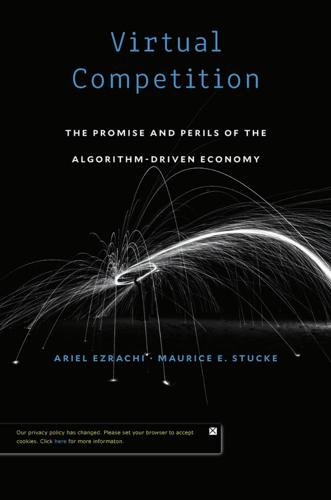
Virtual Competition
by
Ariel Ezrachi
and
Maurice E. Stucke
Published 30 Nov 2016
Another form of refusal to supply that is objectionable occurs when a dominant party controls the provision of an essential infrastructure, uses that essential facility, but refuses other companies access to that facility, Notes to Pages 153–156 30. 31. 32. 33. 34. 35. 36. 37. 38. 311 with no objective justification for doing so. In other cases a refusal to supply may involve a refusal to license intellectual property rights. For relevant cases see Ariel Ezrachi, EU Competition Law—An Analytical Guide to the Leading Cases, 4th ed. (Oxford: Hart Publishing, 2014), 252. John Markoff, “Toyota Invests $1 Billion in Artificial Intelligence in U.S.,” New York Times, November 6, 2015, http://www.nytimes.com/2015/11/06 /technology/toyota-silicon-valley-artificial-intelligence-research-center.html ?_r = 0; Mui, “Google Is Millions of Miles Ahead of Apple in Driverless Cars.” See, e.g., Markoff, “Toyota Invests $1 Billion in Artificial Intelligence in U.S.”
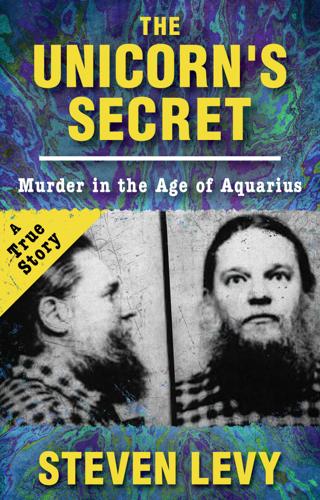
The Unicorn's Secret
by
Steven Levy
Published 6 Oct 2016
In addition, several other journalists who had done work on the Einhorn case shared their labors or impressions with me, including Howard Shapiro, Don DeMaio, Claude Lewis, Bernie McCormick, Gaeton Fonzi, and especially Al Robbins. During my travels I benefited from the hospitality of Steve Fried, Jane Friedman, Katie Hafner, Bill and Susan Mandel, John Mark-off, and Eileen Wise. Diane Ayres performed some research work and Wendy Scheir cheerfully undertook the monstrous task of transcribing hundreds of hours of tapes. Alan Halpern provided wisdom and assistance at a key point. The good offices of Glenn Horowitz provided a port in a clerical storm. My agent Pat Berens helped get the project underway and Flip Brophy adopted it with equal enthusiasm.

Super Continent: The Logic of Eurasian Integration
by
Kent E. Calder
Published 28 Apr 2019
See Nancy Huang, Joie Ma, and Kyle Sullivan, “Economic Development Policies for Central and Western China,” China Business Review, November 10, 2010, www.chinabusinessreview.com/economic-development-policies-for -central-and-western-china/; and “Rich Province, Poor Province,” The Economist, October 1, 2016, https://www.economist.com/news/china/21707964-government-struggling -spread-wealth-more-evenly-rich-province-poor-province. 28. See, for example, John Markoff and Matthew Rosenberg, “China’s Intelligent Weaponry Gets Smarter,” New York Times, February 3, 2017, https://www.nytimes.com/ 2017/02/03/technology/artificial-intelligence-china-united-states.html. Also Ankit Panda, “China’s First Domestically Manufactured Carrier Launches. What’s Next for the PLAN?”

Physics of the Future: How Science Will Shape Human Destiny and Our Daily Lives by the Year 2100
by
Michio Kaku
Published 15 Mar 2011
Scientific American, November 2008, pp. 56–61. 5 “It’s like being an astronomer”: Jeff Wise, “Thought Police: How Brain Scans Could Invade Your Private Life,” Popular Mechanics, October 15, 2007, www.popularmechanics.com/science/health/neuroscience/4226614. 6 “possible to identify, from a large set of completely novel natural images”: New Scientist, October 15, 2008, issue 2678. 7 “Can we tap into the thoughts of others”: David Baltimore, “How Biology Became Information Science,” in Denning, pp. 53–54. 8 “I am told”: Ibid., p. 54. 9 “Perhaps something like the Star Trek tricorder”: Bernhard Blümich, “The Incredible Shrinking Scanner: MRI-like Machine Becomes Portable,” Scientific American, November 2008, p. 68. 2. FUTURE OF AI: RISE OF THE MACHINES 1 “Scientists Worry Machines May Outsmart Man”: John Markoff, New York Times, July 25, 2009, p. A1, www.nytimes.com/2009/07/26/science/26robot.html?scp=1&sq=Scientists Worry Machines May Outsmart Man&st=cse. 2 “Technologists are providing”: Ibid. 3 “just at the stage where they’re robust”: Kaku, p. 75. 4 “Machines will be capable, within twenty years”: Crevier, p. 109. 5 “It’s as though a group of people”: Paul W.
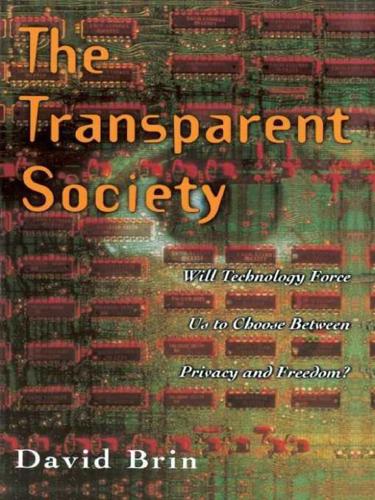
The Transparent Society: Will Technology Force Us to Choose Between Privacy and Freedom?
by
David Brin
Published 1 Jan 1998
A number of books have explored this netherworld at the edge of both technology and the law—for example, The Hacker Crackdown by Bruce Sterling, At Large by David Freedman and Charles Mann, and Masters of Deception by Michelle Slatalla and Josh Quittner. Some writers take pains to distinguish “cyberjocks” who cruise the dataways in a spirit of fun-loving curiosity, careful to avoid doing harm, from others who aim to steal, vandalize, or demonstrate a sense of power and superiority, labeling the latter “crackers.” John Markoff of The New York Times used the terms “Hacker A” and “Hacker B” to make a similar distinction. A clumsy but brutal example of the second type, showing that threats donʼt always come from a techno-elite, was described by Dixie Baker, chief scientist with Science Applications International Corp. (SAIC).
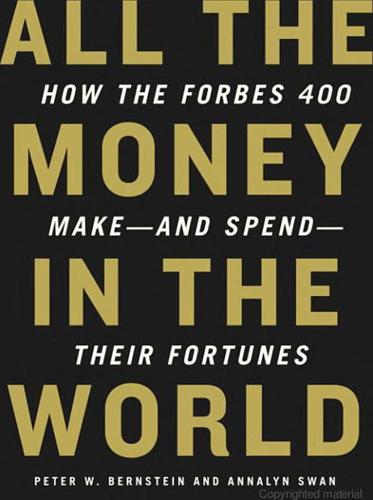
All the Money in the World
by
Peter W. Bernstein
Published 17 Dec 2008
Much of the information on the history of Silicon Valley comes from Saxenian’s book. 22. They had become friends: Kaplan, The Silicon Boys, p. 34. 23. Later he encouraged the duo: Saxenian, Regional Advantage, p. 20. 24. Hewlett and Packard are the iconic models: The information on Hewlett and Packard’s early days in Silicon Valley comes mainly from John Markoff, “William Hewlett Dies at 87: A Pioneer of Silicon Valley,” obituary, New York Times, Jan. 13, 2001. 25. In a 1983 Esquire article: Tom Wolfe, “The Tinkerings of Robert Noyce: How the Sun Rose on the Silicon Valley,” Esquire, Dec. 1983. 26. At Fairchild, Noyce designed: Kaplan, The Silicon Boys, p. 56. 27.
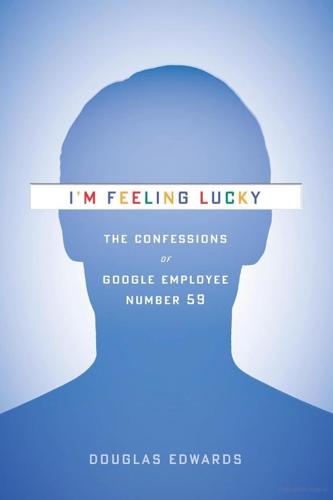
I'm Feeling Lucky: The Confessions of Google Employee Number 59
by
Douglas Edwards
Published 11 Jul 2011
The source for the stories turned out to be a low-level administrator feeding information to an outsider. She was asked to leave. In January 2004, though, long after that first small leak had been plugged, a much bigger crack appeared in our wall of secrecy. The same month we hired our first corporate security manager, John Markoff from the New York Times wrote a series of articles in which he reported details of products in development and the results of an internal audit conducted in preparation for a possible IPO. The information had been extremely confidential and closely held. The leak was ultimately traced to a senior manager who had known Markoff for years.

How Everything Became War and the Military Became Everything: Tales From the Pentagon
by
Rosa Brooks
Published 8 Aug 2016
“Call to Action,” Campaign to Stop Killer Robots, accessed January 23, 2016, www.stopkillerrobots.org/call-to-action/. 8. “Seize the Opportunity for Action,” Campaign to Stop Killer Robots, accessed January 23, 2016, www.stopkillerrobots.org/2013/11/seize-the-opportunity-for-action/; www.stopkillerrobots.org/. 9. John Markoff, “Planes Without Pilots,” New York Times, April 6, 2015, www.nytimes.com/2015/04/07/science/planes-without-pilots.html; Rachel Nuwer, “Computers Can Tell if You’re Really in Pain—Even Better than People Can,” Smithsonian, April 30, 2014, www.smithsonianmag.com/smart-news/computers-are-better-people-differentiating-between-real-and-faked-expressions-pain-180951263/?
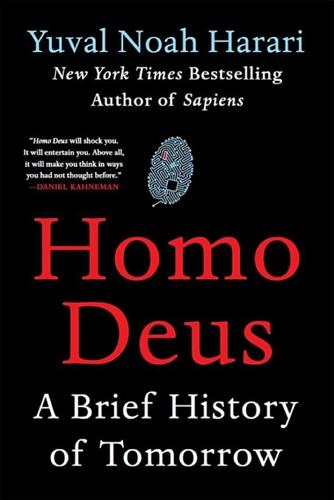
Homo Deus: A Brief History of Tomorrow
by
Yuval Noah Harari
Published 1 Mar 2015
Bradley Hope, ‘Lawsuit Against Exchanges Over “Unfair Advantage” for High-Frequency Traders Dismissed’, Wall Street Journal, 29 April 2015, accessed 6 October 2015, http://www.wsj.com/articles/lawsuit-against-exchanges-over-unfair-advantage-for-high-frequency-traders-dismissed-1430326045; David Levine, ‘High-Frequency Trading Machines Favored Over Humans by CME Group, Lawsuit Claims’, Huffington Post, 26 June 2012, accessed 6 October 2015, http://www.huffingtonpost.com/2012/06/26/high-frequency-trading-lawsuit_n_1625648.html; Lu Wang, Whitney Kisling and Eric Lam, ‘Fake Post Erasing $136 Billion Shows Markets Need Humans’, Bloomberg, 23 April 2013, accessed 22 December 2014, http://www.bloomberg.com/news/2013-04-23/fake-report-erasing-136-billion-shows-market-s-fragility.html; Matthew Philips, ‘How the Robots Lost: High-Frequency Trading’s Rise and Fall’, Bloomberg Businessweek, 6 June 2013, accessed 22 December 2014, http://www.businessweek.com/printer/articles/123468-how-the-robots-lost-high-frequency-tradings-rise-and-fall; Steiner, Automate This, 2–5, 11–52; Luke Dormehl, The Formula: How Algorithms Solve All Our Problems – And Create More (London: Penguin, 2014), 223. 6. Jordan Weissmann, ‘iLawyer: What Happens when Computers Replace Attorneys?’, Atlantic, 19 June 2012, accessed 22 December 2014, http://www.theatlantic.com/business/archive/2012/06/ilawyer-what-happens-when-computers-replace-attorneys/258688; John Markoff, ‘Armies of Expensive Lawyers, Replaced by Cheaper Software’, New York Times, 4 March 2011, accessed 22 December 2014, http://www.nytimes.com/2011/03/05/science/05legal.html?pagewanted=all&_r=0; Adi Narayan, ‘The fMRI Brain Scan: A Better Lie Detector?’, Time, 20 July 2009, accessed 22 December 2014, http://content.time.com/time/health/article/0,8599,1911546-2,00.html; Elena Rusconi and Timothy Mitchener-Nissen, ‘Prospects of Functional Magnetic Resonance Imaging as Lie Detector’, Frontiers in Human Neuroscience 7:54 (2013); Steiner, Automate This, 217; Dormehl, The Formula, 229. 7.
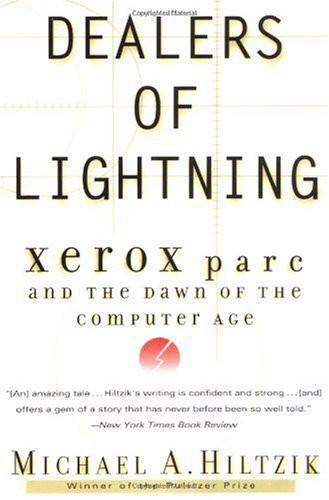
Dealers of Lightning
by
Michael A. Hiltzik
Published 27 Apr 2000
Machine Beauty: Elegance and the Heart of Technology. New York: Basic Books, 1998. Gleick, James. Genius: The Life and Science of Richard I. Feynmann. New York: Pantheon Books, 1992. Goldberg, Adele, ed. A History of Personal Workstations. Reading, Mass.: ACM Press, 1988. Hafner, Katie, and John Markoff. Cyberpunk: Outlaws and Hackers on the Computer Frontier. New York: Simon & Schuster, 1992. Hafner, Katie, and Matthew Lyon. Where Wizards Stay up Late: The Origins of the Internet. New York: Simon & Schuster, 1996. Hodges, Andrew. Alan Turing: The Enigma. New York: Simon & Schuster, 1983. Jackson, Tim.

Active Measures: The Secret History of Disinformation and Political Warfare
by
Thomas Rid
Pete Earley, Comrade J: The Untold Secrets of Russia’s Master Spy in America after the End of the Cold War (New York: Penguin, 2007), p. 195. 12. Eneken Tikk, Kadri Kaska, and Liis Vihul, International Cyber Incidents (Tallinn: CCDCOE, 2010), p. 17. 13. Joshua Davis, “Hackers Take Down the Most Wired Country in Europe,” Wired, August 21, 2007. 14. Mark Landler and John Markoff, “In Estonia, What May Be the First War in Cyberspace,” The New York Times, May 28, 2007. 15. “Adventures of Mr. Hudson in Russia,” Informacia, July 8, 2009; and “British Diplomat in Russia Resigns after Prostitute Video and Sex Allegations,” Metro, July 9, 2009. 16. John Bingham, “British Diplomat James Hudson Resigns over Russian ‘Brothel’ Video,” The Daily Telegraph, July 10, 2009. 17.

Track Changes
by
Matthew G. Kirschenbaum
Published 1 May 2016
See Gary Snyder, “Why I Take Good Care of My Macintosh,” IT Times 6, no. 4 (January 1998), http://ittimes.ucdavis.edu/v6n4jan98/snyder.html. The poem originally appeared in Turn-Around Times in March 1988. At that time Snyder worked on a Macintosh Plus, and he has been a loyal Apple user ever since. See also John Markoff, “Digital Muse for Beat Poet,” New York Times, January 22, 2010, http://www.nytimes.com/2010/01/22/technology/personaltech/22sfbriefs.html), which reports on Snyder’s looking forward to receiving an iPad—and incorrectly states that the “Macintosh” poem is previously unpublished. 4. See Charles Bukowski, The Captain Is Out to Lunch and the Sailors Have Taken Over the Ship (New York: HarperCollins, 1998), for numerous examples. 5.

Amazon Unbound: Jeff Bezos and the Invention of a Global Empire
by
Brad Stone
Published 10 May 2021
CHAPTER 2: A NAME TOO BORING TO NOTICE “Only if we can have a truly differentiated idea… we would love to”: Jeff Bezos interviewed by Charlie Rose, Charlie Rose, 34:40, November 16, 2012, https://charlierose.com/videos/17252 (January 19, 2021). an article in the New York Times that… recognize cats: John Markoff, “How Many Computers to Identify a Cat? 16,000,” New York Times, June 25, 2012, https://www.nytimes.com/2012/06/26/technology/in-a-big-network-of-computers-evidence-of-machine-learning.html (January 19, 2021). used a pole with a camera attached to it to peek inside: Jacob Demmitt, “Amazon’s Bookstore Revealed?

Spies, Lies, and Algorithms: The History and Future of American Intelligence
by
Amy B. Zegart
Published 6 Nov 2021
David Sanger and William Broad, “Trump Inherits a Secret Cyberwar against North Korean Missiles,” New York Times, March 4, 2017, https://www.nytimes.com/2017/03/04/world/asia/north-korea-missile-program-sabotage.html. 134. Robert McMillan, “Hackers Lurked in SolarWinds Email System for at Least 9 Months, CEO Says,” Wall Street Journal, February 2, 2021. 135. Herbert Lin, “The existential threat from cyber-enabled info warfare,” Bulletin of Atomic Scientists 74, no. 4 (July 2019). 136. John Markoff, “Chip Error Continuing to Dog Officials at Intel,” New York Times, December 6, 1994, https://www.nytimes.com/1994/12/06/business/chip-error-continuing-to-dog-officials-at-intel.html. 137. David Manners, “How much will the flaws cost Intel,” Electronics Weekly, January 8, 2018, https://www.electronicsweekly.com/blogs/mannerisms/shenanigans/much-will-flaws-cost-intel-2018-01/; Desire Athow, “Pentium, FDIV: The Processor Bug that Shook the World,” TechRadar, October 30, 2014, https://www.techradar.com/news/computing-components/processors/pentium-fdiv-the-processor-bug-that-shook-the-world-1270773. 138.
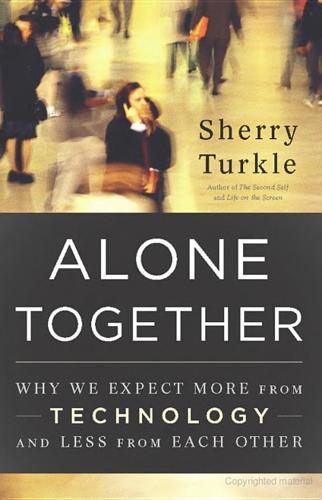
Alone Together
by
Sherry Turkle
Published 11 Jan 2011
NOTES AUTHOR’S NOTE: TURNING POINTS 1 Sherry Turkle, “Inner History,” in Sherry Turkle, ed., The Inner History of Devices (Cambridge, MA: MIT Press, 2008), 2-29. 2 Sherry Turkle, The Second Self: Computers and the Human Spirit (1984; Cambridge, MA: MIT Press, 2005), 2. 3 Sherry Turkle, Life on the Screen: Identity in the Age of the Internet (New York: Simon and Schuster, 1995), 13. 4 Roger Entner, “Under-aged Texting: Usage and Actual Cost,” Nielsen.com, January 27, 2010, http://blog.nielsen.com/nielsenwire/online_mobile/under-aged-texting-usage-and-actual-cost (accessed May 30, 2010). INTRODUCTION: ALONE TOGETHER 1 See “What Is Second Life,” Second Life, http://secondlife.com/whatis (accessed June 13, 2010). 2 Benedict Carey and John Markoff, “Students, Meet Your New Teacher, Mr. Robot,” New York Times, July 10, 2010, www.nytimes.com/2010/07/11/science/11robots.html (accessed July 10, 2010); Anne Tergeson and Miho Inada, “It’s Not a Stuffed Animal, It’s a $6,000 Medical Device,” Wall Street Journal, June 21, 2010, http://online.wsj.com/article/SB10001424052748704463504575301051844937276.html (accessed August 10, 2010); Jonathan Fildes, “‘Virtual Human’ Milo Comes Out to Play at TED in Oxford,” BBC News, July 13, 2010, www.bbc.co.uk/news/10623423 (accessed July 13, 2010); Amy Harmon, “A Soft Spot for Circuitry: Robot Machines as Companions,” New York Times, July 4, 2010, www.nytimes.com/2010/07/05/science/05robot.html?
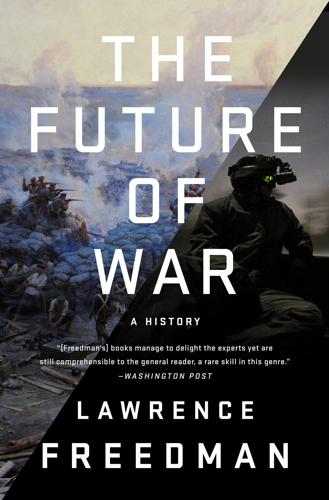
The Future of War
by
Lawrence Freedman
Published 9 Oct 2017
These two paragraphs draw upon Mary L. Cummings, Artificial Intelligence and the Future of Warfare, Research Paper (London: Royal Institute of International Affairs, Jan. 2017). 21. ‘Flight of the Drones: Why the Future of Air Power Belongs to Unmanned Systems’, The Economist, 8 Oct. 2011. Matthew Rosenberg and John Markoff, ‘At Heart of U.S. Strategy, Weapons That Can Think’, New York Times, 26 October 2016. A Terminator-like machine was said to be a decade away. 22. Thomas G. Mahnken, Technology and the American Way of War Since 1945 (New York: Columbia University Press, 2008). 23. Benjamin Wittes and Gabriella Blum, The Future of Violence–Robots and Germs, Hackers and Drones: Confronting the New Age of Threat (New York: Basic Books, 2015). 24.
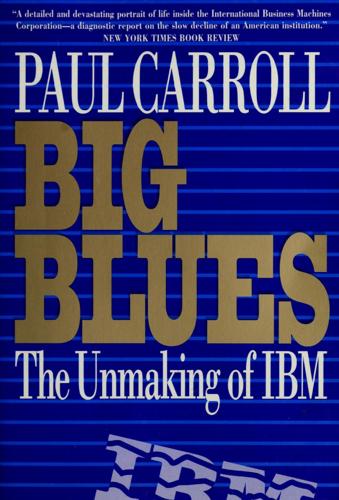
Big Blues: The Unmaking of IBM
by
Paul Carroll
Published 19 Sep 1994
Although Microsoft’s growth rates seemed to finally be leveling to a merely impressive rate, all the new projects prompted Steve Ballmer, Gates’ forceful lieutenant, to say, “It’s a great time to be us.” Finally, marking the end of an era at IBM, former chief executive Tom Watson died at age 79 following complications from a stroke. NOTES PREFACE 1. John Markoff, “Campuses Are Hurt by Computer Giant s W oes,” The New York Times, January 13, 1993, B6. 2. Bureau o f Labor Statistics. 1 1. Stephen Manes and Paul Andrews, Gates (N ew York: Doubleday, 1993), 18. 2. Ibid., 21. 3. Ibid., 24. 16. J. Greenwald, “The Colossus that Works,” Time, July 11, 1983, 44. 17.
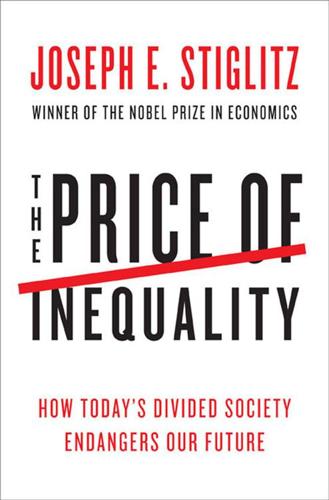
The Price of Inequality: How Today's Divided Society Endangers Our Future
by
Joseph E. Stiglitz
Published 10 Jun 2012
One of Netscape’s founders, Marc Andreessen, was part of the team at the University of Illinois at Urbana-Champaign that developed Mosaic, the first widely used web browser, which was a project of the university’s National Center for Supercomputing Applications (one of the original sites of the National Science Foundation’s Supercomputer Centers Program). See the website of the NCSA, http://www.ncsa.illinois.edu/Projects/mosaic.html (accessed March 3, 2012); and John Markoff, “New Venture in Cyberspace by Silicon Graphics Founder,” New York Times, May 7, 1994, available at http://www.nytimes.com/1994/05/07/business/new-venture-in-cyberspace-by-silicon-graphics-founder.html?ref=marcandreessen (accessed March 3, 2012). 36. For an overview of the Microsoft case, see Geisst, Monopolies in America. 37.
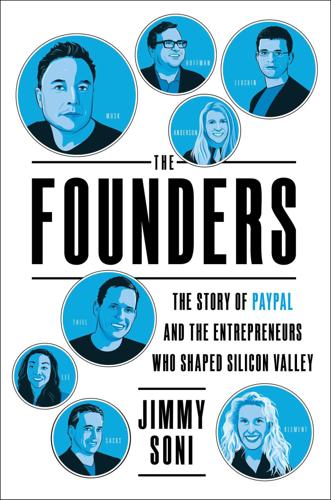
The Founders: The Story of Paypal and the Entrepreneurs Who Shaped Silicon Valley
by
Jimmy Soni
Published 22 Feb 2022
“I can’t tell you”: Author interview with Steve Armstrong, January 29, 2021. “A friend and I”: Email from Maye Musk to Elon Musk, January 21, 2000. “There were a ton of bugs”: Author interview with Elon Musk, January 19, 2019. “He was the nicest guy”: Author interview with Branden Spikes, April 25, 2019. “Security Flaw Discovered at Online Bank”… “banking system”: John Markoff, “Security Flaw Discovered at Online Bank,” New York Times, January 28, 2000. “They ought to go”…“business anyway”: Kevin Featherly. “Online Banking Breach Sparks Strong Concerns,” Newsbytes PM, Washington Post, January 28, 2000. “The name X.com”: John Engen, “X.com Tries to Stare Down the Naysayers,” US Banker, March 2000, 11, 3.
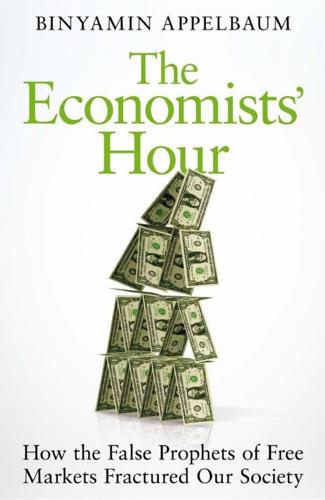
The Economists' Hour: How the False Prophets of Free Markets Fractured Our Society
by
Binyamin Appelbaum
Published 4 Sep 2019
.: Cambridge University Press, 1995), 110. 4. Ibid. 5. Ibid., 113. 6. Theodore W. Schultz, “Human Wealth and Economic Growth,” The Humanist, no. 2 (1959): 71–81. 7. Valdés, Pinochet’s Economists, 88. 8. Verónica Montecinos, “Economics: The Chilean Story,” in Economists in the Americas, ed. Verónica Montecinos and John Markoff (Cheltenham, Eng.: Edward Elgar, 2009), 167–68. 9. Valdés, Pinochet’s Economists, 116. 10. The world’s largest deposits of sodium nitrate, also known as Chile saltpeter, are found in northern Chile. It was a key ingredient in both fertilizer and explosives until Germany began to produce synthetic saltpeter in commercial quantities during World War I.
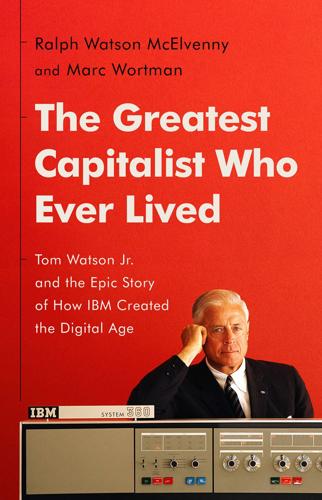
The Greatest Capitalist Who Ever Lived: Tom Watson Jr. And the Epic Story of How IBM Created the Digital Age
by
Ralph Watson McElvenny
and
Marc Wortman
Published 14 Oct 2023
Watson Jr. and Peter Petre, “Watson Chronology,” October 25, 1989, in authors’ possession; Petre interview, November 23, 2020; McKinney interview, May 5, 2019; Phypers interview, December 7, 2020. 21. Phypers interview, December 7, 2020. 22. “I.B.M. Names New Chairman” and “Non-Watson at Helm,” New York Times, June 30, 1971. 23. Watson Jr., Father, Son & Co., 399–401. 24. “The Greatest Capitalist in History,” Fortune, August 31, 1987. 25. John Markoff, “IBM’s Robert H. Dennard and the Chip That Changed the World,” IBM, November 17, 2019, www.ibm.com/blogs/think/2019/11/ibms-robert-h-dennard-and-the-chip-that-changed-the-world; see also “IBM’s 100 Icons of Progress,” IBM, www.ibm.com/ibm/history/ibm100/us/en/icons/. 26. Thomas J. Watson Jr., Pacific Passage (Mystic, CT: Mystic Seaport Museum, 1993), 10. 27.
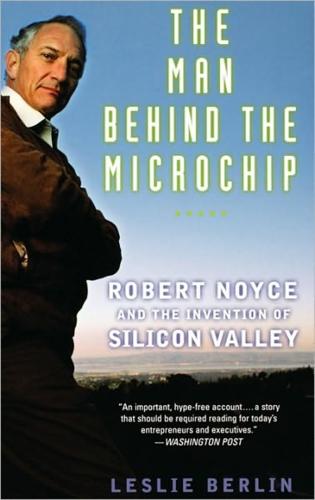
The Man Behind the Microchip: Robert Noyce and the Invention of Silicon Valley
by
Leslie Berlin
Published 9 Jun 2005
Andrew Goldstein and William Aspray, 35–74. New Brunswick: IEEE Press, 1997. Semiconductor Industry Association 1979 Yearbook and Directory. Cupertino, Calif.: SIA, 1979. Sideris, George. “The Intel 1103: The MOS Memory that Defied Cores.” Electronics, 26 April 1973, 108. Siegel, Leonard M., and John Markoff. The High Cost of High Tech. New York: Harper and Rowe, 1985. “The Silicon Valley Economy,” FRBSF [Federal Reserve Bank of San Francisco] Weekly Newsletter, Number 92–22, 29 May 1992. Slater, Robert. Portraits in Silicon. Cambridge: MIT Press, 1987. Slotkin, Richard. Gunfighter Nation: The Myth of the Frontier in Twentieth-Century America.
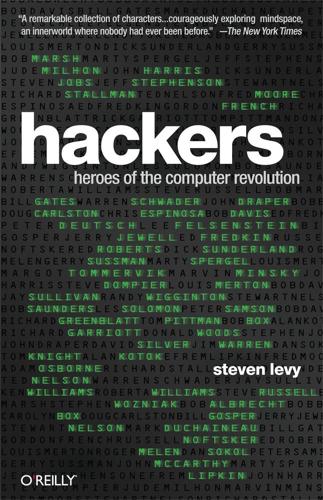
Hackers: Heroes of the Computer Revolution - 25th Anniversary Edition
by
Steven Levy
Published 18 May 2010
On my travels to California and Cambridge, I benefited from the hospitality of Phyllis Coven, Art Kleiner, Bill Mandel, and John Williams. Lori Carney and others typed up thousands of pages of transcripts. Viera Morse’s exacting copy editing kept me linguistically honest. Magazine editors David Rosenthal and Rich Friedman gave me work that kept me going. Good advice was given by fellow computer scribes Doug Garr, John Markoff, Deborah Wise, and members of the Lunch Group. Support and cheerleading came from my parents, my sister Diane Levy, friends Larry Barth, Bruce Buschel, Ed Kaplan, William Mooney, Randall Rothenberg, David Weinberg, and many others—they know who they are—who will have to accept this insufficient mention.
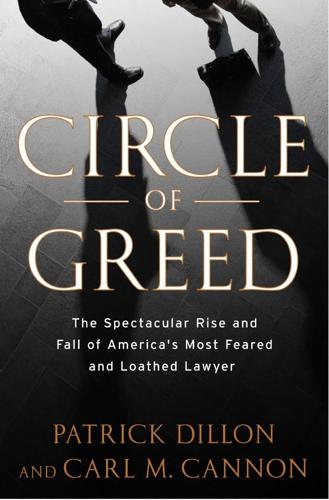
Circle of Greed: The Spectacular Rise and Fall of the Lawyer Who Brought Corporate America to Its Knees
by
Patrick Dillon
and
Carl M. Cannon
Published 2 Mar 2010
a fund-raising dinner in Sunnyvale: Alison Mitchell, “Building a Bulging War Chest: How Clinton Financed His Run,” New York Times, December 27, 1996. 245 “Clinton wants to nail down”: Quoted in Birnbaum and Novak, “Corporate Dole.” “I’ve learned in politics”: Quoted in Miles, Hack a Party Line, p. 34. “When we brought up ‘securities’”: Jonathan W. Cuneo, interview by CMC, January 9, 2009. “They’d been warned about”: Bill Carrick, interview by CMC, February 11, 2009. the anti-Lerach brain trust gathered: John Markoff, “A Political Fight Marks a Coming of Age for a Silicon Valley Titan,” New York Times, October 21, 1996. “We are looking at the loss”: Ibid. a survey of its members: “Forty-Seven Percent of High-Tech Public Member Companies Would Consider Leaving California if Prop 211 Passes, American Electronics Association Survey Shows; 61,000 Jobs, Continued Economic Growth at Risk,” Business Wire, October 3, 1996.

Power and Progress: Our Thousand-Year Struggle Over Technology and Prosperity
by
Daron Acemoglu
and
Simon Johnson
Published 15 May 2023
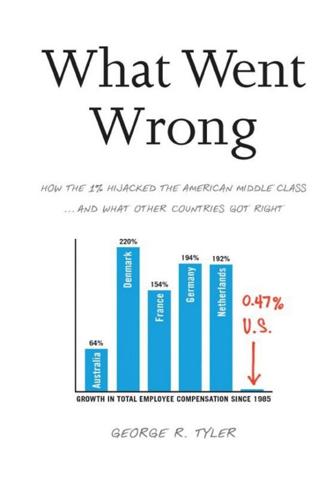
What Went Wrong: How the 1% Hijacked the American Middle Class . . . And What Other Countries Got Right
by
George R. Tyler
Published 15 Jul 2013
Steven Greenhouse, “GE to Add Two New US Plants as Unions Agree on Cost Controls.” 29 Peter G. Peterson, “The Morning After,” Atlantic Monthly, October 1987. 30 Paul Kennedy, The Rise and Fall of the Great Powers, 529. 31 Alan Tonelson, “Up From Globalism.” 32 “Staying Put,” Economist, Jan. 19, 2013, special report p. 8. 33 John Markoff, “Google Taking a Retro Route: Made in US,” New York Times, June 28, 2012. 34 “OECD Economic Surveys: United States 2012,” Paris, OECD. See also: L. Branstetter, “Are Knowledge Spillovers International or Intranational in Scope? Macroeconomic evidence from the US and Japan,” Journal of International Economics 53, 55–79 (2001); M.

The Outlaw Ocean: Journeys Across the Last Untamed Frontier
by
Ian Urbina
Published 19 Aug 2019
They strap lead weights: David Epstein, “The Descent,” New York Times, June 20, 2014. CHAPTER 3 A RUSTY KINGDOM On Christmas Eve 1966: Jack Gould, “Radio: British Commercial Broadcasters Are at Sea,” New York Times, March 25, 1966; Felix Kessler, “The Rusty Principality of Sealand Relishes Hard-Earned Freedom,” Wall Street Journal, Sept. 15, 1969; John Markoff, “Rebel Outpost on the Fringes of Cyberspace,” New York Times, June 4, 2000; Declan McCullagh, “A Data Sanctuary Is Born,” Wired, June 4, 2000; Steve Boggan, “Americans Turn a Tin-Pot State off the Essex Coast into World Capital of Computer Anarchy,” Independent, June 5, 2000; Declan McCullagh, “Sealand: Come to Data,” Wired, June 5, 2000; David Cohen, “Offshore Haven: Cold Water Poured on Sealand Security,” Guardian, June 6, 2000; Carlos Grande, “Island Fortress’s ‘Data Haven’ to Confront E-trade Regulation,” Financial Times, June 6, 2000; “Man Starts Own Country off Coast of Britain,” World News Tonight, ABC, June 6, 2000; Tom Mintier, “Sealand Evolves from Offshore Platform to High-Tech Haven,” Worldview, CNN, June 12, 2000; Anne Cornelius, “Legal Issues Online Firms Set to Take Refuge in Offshore Fortress,” Scotsman, June 15, 2000; David Canton, “Creating a Country to Avoid Jurisdiction,” London Free Press, June 16, 2000; “Internet Exiles,” New Scientist, June 17, 2000; Theo Mullen, “A Haven for Net Lawbreakers?

Elon Musk
by
Walter Isaacson
Published 11 Sep 2023
Saving Tesla: Author’s interviews with Elon Musk, Alan Salzman, Kimbal Musk, Ira Ehrenpreis, Deepak Ahuja, Ari Emanuel. 32. The Model S: Author’s interviews with Henrik Pfister, Elon Musk, JB Straubel, Martin Eberhard, Nick Kalayjian, Franz von Holzhausen, Dave Morris, Lars Moravy, Drew Baglino. John Markoff, “Tesla Motors Files Suit against Competitor over Design Ideas,” New York Times, Apr. 15, 2008; Chris Anderson, “The Shared Genius of Elon Musk and Steve Jobs,” Fortune, Nov. 27, 2013; Charles Duhigg, “Dr. Elon & Mr. Musk,” Wired, Dec. 13, 2018; Chuck Squatriglia, “First Look at Tesla’s Stunning Model S,” Wired, Mar. 26, 2009; Dan Neil, “Tesla S: A Model Citizen,” Los Angeles Times, Apr. 29, 2009; Dan Neil, “To Elon Musk and the Model S: Congratulations,” Wall Street Journal, June 29, 2012; Higgins, Power Play. 33.
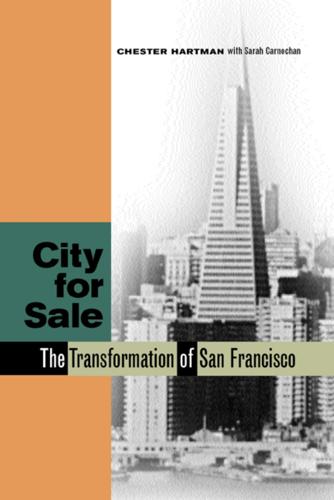
City for Sale: The Transformation of San Francisco
by
Chester W. Hartman
and
Sarah Carnochan
Published 15 Feb 2002
The political schisms in present-day Chinatown, reflecting international politics and migration streams, are outlined in Nina Wu, “The City’s Two-China Chinatown,” San Francisco Examiner, 31 May 2001. 20. Sabin Russell, “Mayor, 3 Hopefuls Talk Business,” San Francisco Chronicle, 24 April 1987; see also Moira Johnson, “In the Wake of the Takeover Wars,” California Magazine (May 1987): 10–13. 21. John Markoff, “The City by the Bay Holds Its Collective Breath,” New York Times, 15 April 1998. 22. Diana B. Henriques, “Bank of America to Cut up to 6.7% of Work Force, or 10,000 Jobs,” New York Times, 29 July 2000. 23. Les Shipnuck and Dan Feshbach, “Bay Area Council: Regional PowerHouse,” Pacific Research and World Empire Telegram vol. 4, no. 1 (November/December 1972), 3–11. 24.

Tools of Titans: The Tactics, Routines, and Habits of Billionaires, Icons, and World-Class Performers
by
Timothy Ferriss
Published 6 Dec 2016
Feynman), Recession Proof Graduate (Charlie Hoehn), Ogilvy on Advertising (David Ogilvy), The Martian (Andy Weir) Kamkar, Samy: Influence (Robert Cialdini) Kaskade: Lights Out: A Cyberattack, A Nation Unprepared, Surviving the Aftermath (Ted Koppel) Kass, Sam: Sapiens (Yuval Noah Harari), The Art of Fielding (Chad Harbach), Plenty; Jerusalem; Plenty More (Yotam Ottolenghi), The Flavor Bible: The Essential Guide to Culinary Creativity, Based on the Wisdom of America’s Most Imaginative Chefs (Karen Page and Andrew Dornenburg), A History of World Agriculture (Marcel Mazoyer and Laurence Roudart) Kelly, Kevin: The Adventures of Johnny Bunko (Daniel Pink), So Good They Can’t Ignore You (Cal Newport), Shantaram (Gregory David Roberts), Future Shock (Alvin Toffler), Regional Advantage: Culture and Competition in Silicon Valley and Route 128 (AnnaLee Saxenian), What the Dormouse Said: How the Sixties Counterculture Shaped the Personal Computer Industry (John Markoff), The Qur’an, The Bible, The Essential Rumi; The Sound of the One Hand: 281 Zen Koans with Answers (Yoel Hoffman), It’s All Too Much: An Easy Plan for Living a Richer Life with Less Stuff (Peter Walsh) Koppelman, Brian: What Makes Sammy Run? (Budd Schulberg), The Artist’s Way Morning Pages Journal (Julia Cameron), The War of Art (Steven Pressfield) Libin, Phil: The Clock of the Long Now (Stewart Brand), The Alliance (Reid Hoffman), The Selfish Gene (Richard Dawkins), A Guide to the Good Life (William Irvine) MacAskill, Will: Reasons and Persons (Derek Parfit), Mindfulness: An Eight-Week Plan for Finding Peace in a Frantic World (Mark Williams and Danny Penman), The Power of Persuasion (Robert Levine), Superintelligence: Paths, Dangers, Strategies (Nick Bostrom) MacKenzie, Brian: Tao Te Ching (Lao Tzu), Way of the Peaceful Warrior (Dan Millman) McCarthy, Nicholas: The Life and Loves of a He Devil: A Memoir (Graham Norton), I Put a Spell on You: The Autobiography of Nina Simone (Nina Simone) McChrystal, Stanley: Once an Eagle (Anton Myrer), The Road to Character (David Brooks) McCullough, Michael: The Start-up of You: Adapt to the Future, Invest in Yourself, and Transform Your Career (Reid Hoffman and Ben Casnocha), Getting Things Done: The Art of Stress-Free Productivity (David Allen), The 7 Habits of Highly Effective People: Powerful Lessons in Personal Change (Stephen R.

The Rise of the Network Society
by
Manuel Castells
Published 31 Aug 1996
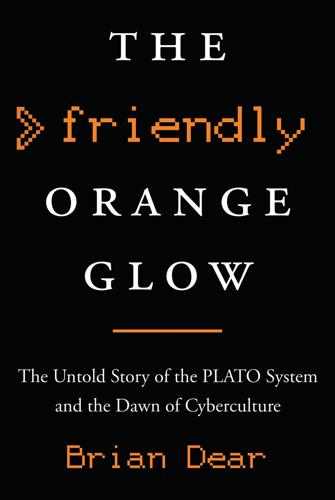
The Friendly Orange Glow: The Untold Story of the PLATO System and the Dawn of Cyberculture
by
Brian Dear
Published 14 Jun 2017
I’m also grateful for the kindness and hospitality of Paul Tenczar (who made himself available for numerous interviews over the years) and his wife, Darlene; they let me rummage through a suitcase full of Paul’s photographic slides. Thanks to Andy Hertzfeld, Paul Resch, Bill Galcher, Donald Norman, Dan O’Neill, and Ray Ozzie for reviewing all or portions of the manuscript over the years. Thanks also to writers Steven Levy and John Markoff, whose inspiring writing, support, and encouragement have helped give me the strength to finish this book. Thanks to Ralph Nader and William C. Taylor, authors of The Big Boys: Power and Position in American Business (Pantheon, 1986), who without hesitation gave me two boxes full of all of their research on Control Data Corporation, including raw interview transcripts and handwritten reporter’s notes, which I put to extensive use in Part Three of this book.
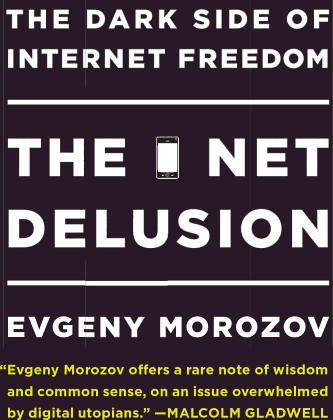
The Net Delusion: The Dark Side of Internet Freedom
by
Evgeny Morozov
Published 16 Nov 2010

The Stack: On Software and Sovereignty
by
Benjamin H. Bratton
Published 19 Feb 2016
Charter Cities represents a plan to introduce new legal frameworks for new or existing cities, turning them into a parallel to Special Economic Zones, here Special Political Zones. New York University economist Paul Romer is a leading advocate for the vision. 6. See this discussion of Gelernter's influence on the conceptual development of the Cloud: David Gelernter, John Markoff, and Clay Shirky, “Lord of the Cloud,” Edge, April 29, 2009, http://edge.org/conversation/lord-of-the-cloud. For a sense of Gelernter's political conservatism, see http://www.nationalreview.com/author/david-gelernter. 7. See http://en.wikipedia.org/wiki/Unix_time. 8. Sun Microsystems’ old tagline, “the network is the computer” has been realized, especially if the definition of network is expanded to include both the physical computing network and the network of users providing content and feedback. 9.
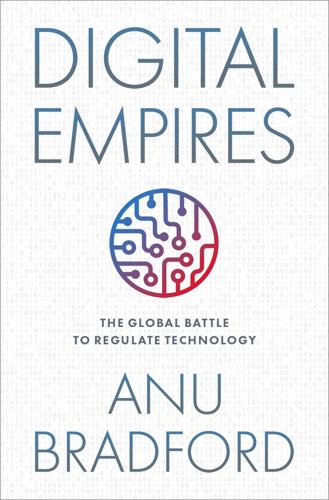
Digital Empires: The Global Battle to Regulate Technology
by
Anu Bradford
Published 25 Sep 2023
Is Using Technology to Aid Syria’s Rebels, Time (June 13, 2012), https://world.time.com/2012/06/13/hillarys-little-startup-how-the-u-s-is-using-technology-to-aid-syrias-rebels/. 103.Fergus Hanson, Revolution @State: The Spread of Democracy, Lowry Inst. For Int’l Pol’y (March 2012), https://www.brookings.edu/wp-content/uploads/2016/06/03_ediplomacy_hanson.pdf. 104.Clinton, Remarks on Internet Freedom, supra note 52. 105.James Glanz & John Markoff, U.S. Underwrites Internet Detour Around Censors, N.Y. Times (June 12, 2011), https://www.nytimes.com/2011/06/12/world/12internet.html. 106.Fergus Hanson, Revolution @State: The Spread of Democracy, Lowry Inst. for Int’l Pol’y (March 2012), https://www.brookings.edu/wp-content/uploads/2016/06/03_ediplomacy_hanson.pdf. 107.Newton-Small, Hillary’s Little Startup, supra note 102. 108.Lum, Moloney Figiola, & Weed, supra note 86. 109.Id. 110.Benjamin Wagner, Kirsten Gollatz, & Andrea Calderaro, Internet & Human Rights in Foreign Policy: Comparing Narratives in the US and EU Internet Governance Agenda, Cadmus (2014), https://cadmus.eui.eu/handle/1814/32433. 111.Google Chief Urges Burma to Open Telecoms, Radio Free Asia (Mar. 22, 2013), https://www.rfa.org/english/news/myanmar/google-03222013191201.html. 112.Id. 113.Mark Landler & Brian Stelter, Washington Taps Into a Potent New Force in Diplomacy, N.Y.
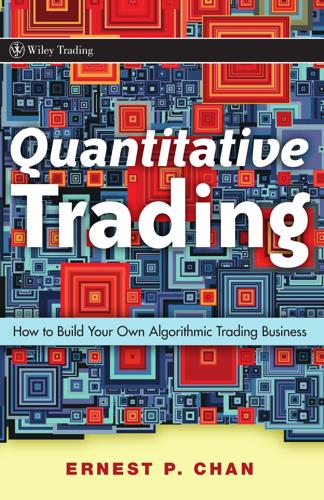
Quantitative Trading: How to Build Your Own Algorithmic Trading Business
by
Ernie Chan
Published 17 Nov 2008
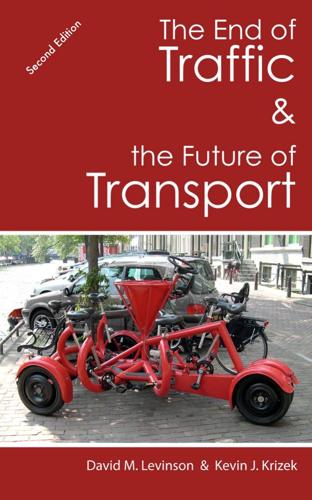
The End of Traffic and the Future of Transport: Second Edition
by
David Levinson
and
Kevin Krizek
Published 17 Aug 2015
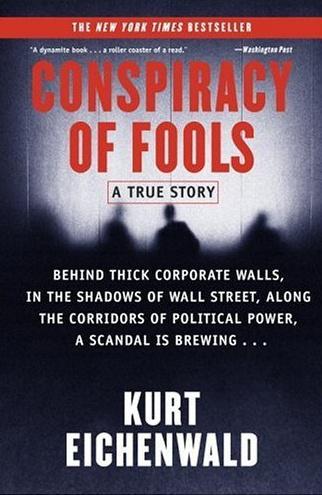
Conspiracy of Fools: A True Story
by
Kurt Eichenwald
Published 14 Mar 2005
Details of the early days of the Raptor hedge from Skilling’s Dec. 4, 2001, testimony before the SEC; the notes from Wilmer, Cutler’s Jan. 9, 2002, interview with Wes Colwell; and Causey’s Wilmer, Cutler interview on Dec. 21, 2001. 14. Some details of Lay’s visit with Murdoch from entries in his personal schedule. 15. A copy of the Collins e-mail was obtained by the author. Also see Kurt Eichenwald and John Markoff, “Deception, or Just Disarray, at Enron,” New York Times, June 8, 2003, sec. 3, 1. 16. Some details of the Brown and McMahon episode and McMahon’s subsequent tussle with Fastow from McMahon’s Feb. 7, 2002, congressional testimony and notes from his Jan. 21, 2002, interview with Wilmer, Cutler.

Memory Machines: The Evolution of Hypertext
by
Belinda Barnet
Published 14 Jul 2013

Thinking Machines: The Inside Story of Artificial Intelligence and Our Race to Build the Future
by
Luke Dormehl
Published 10 Aug 2016
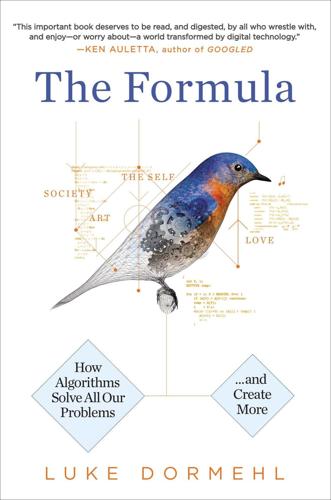
The Formula: How Algorithms Solve All Our Problems-And Create More
by
Luke Dormehl
Published 4 Nov 2014

Fully Automated Luxury Communism
by
Aaron Bastani
Published 10 Jun 2019

The Great Wave: The Era of Radical Disruption and the Rise of the Outsider
by
Michiko Kakutani
Published 20 Feb 2024
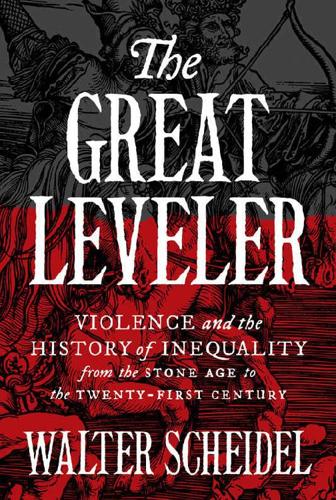
The Great Leveler: Violence and the History of Inequality From the Stone Age to the Twenty-First Century
by
Walter Scheidel
Published 17 Jan 2017
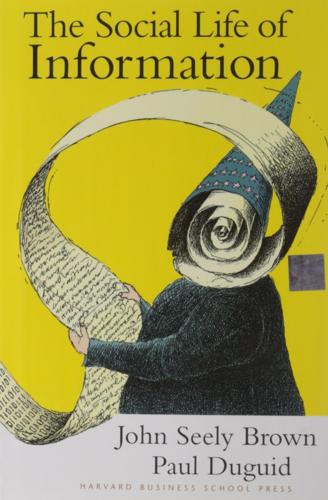
Social Life of Information
by
John Seely Brown
and
Paul Duguid
Published 2 Feb 2000

What Algorithms Want: Imagination in the Age of Computing
by
Ed Finn
Published 10 Mar 2017

Calling Bullshit: The Art of Scepticism in a Data-Driven World
by
Jevin D. West
and
Carl T. Bergstrom
Published 3 Aug 2020
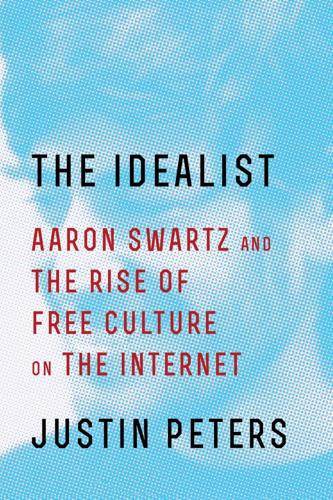
The Idealist: Aaron Swartz and the Rise of Free Culture on the Internet
by
Justin Peters
Published 11 Feb 2013
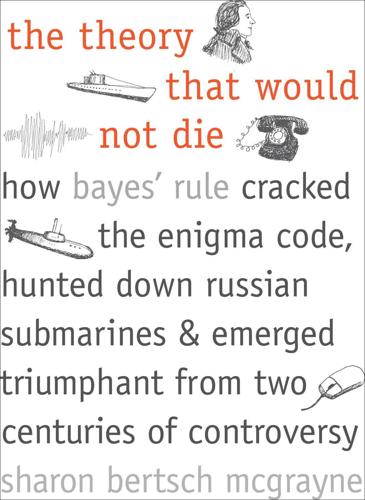
The Theory That Would Not Die: How Bayes' Rule Cracked the Enigma Code, Hunted Down Russian Submarines, and Emerged Triumphant From Two Centuries of Controversy
by
Sharon Bertsch McGrayne
Published 16 May 2011

Engineering Security
by
Peter Gutmann
[400] “Risky Business #257 — Exploits for Win8 no mean feat”, Risky Business podcast, 5 October 2012, http://risky.biz/RB257. [401] “Jailbreak”, iSEC Partners, http://www.isecpartners.com/applicationsecurity-tools/jailbreak.html. [402] “NetWitness Discovers Massive ZeuS Compromise”, NetWitness, 18 February 2010, http://www.netwitness.com/resources/pressreleases/feb182010.aspx. [403] “Broad New Hacking Attack Detected”, Siobhan Gorman, The Wall Street Journal, 18 February 2010, http://online.wsj.com/article/SB10001424052748704398804575071103834150536.html. [404] “Malicious Software Infects Computers”, John Markoff, The New York Times, 18 February 2010, http://www.nytimes.com/2010/02/19/technology/19cyber.html. [405] “Over 75,000 systems compromised in cyberattack”, Jaikumar Vijayan, ComputerWorld, 18 February 2010, http://www.computerworld.com/s/article/9158578/Over_75_000_systems_compromised_in_cyberattack. [406] “Gaming Company Certificates Stolen and Used to Attack Activists, Others”, Kim Zetter, 11 April 2013, http://www.wired.com/threatlevel/2013/04/gaming-company-certs-stolen. [407] “Winnti.

Computer: A History of the Information Machine
by
Martin Campbell-Kelly
and
Nathan Ensmenger
Published 29 Jul 2013
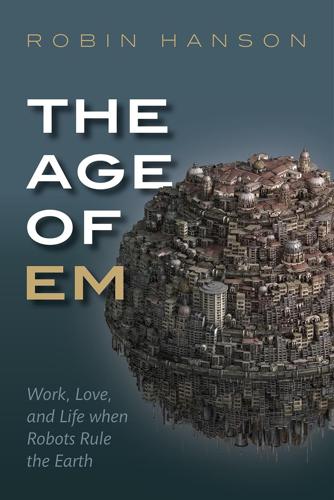
The Age of Em: Work, Love and Life When Robots Rule the Earth
by
Robin Hanson
Published 31 Mar 2016

Superintelligence: Paths, Dangers, Strategies
by
Nick Bostrom
Published 3 Jun 2014
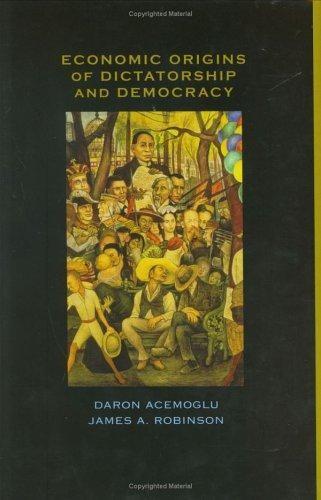
Economic Origins of Dictatorship and Democracy
by
Daron Acemoğlu
and
James A. Robinson
Published 28 Sep 2001

The Rise and Fall of American Growth: The U.S. Standard of Living Since the Civil War (The Princeton Economic History of the Western World)
by
Robert J. Gordon
Published 12 Jan 2016